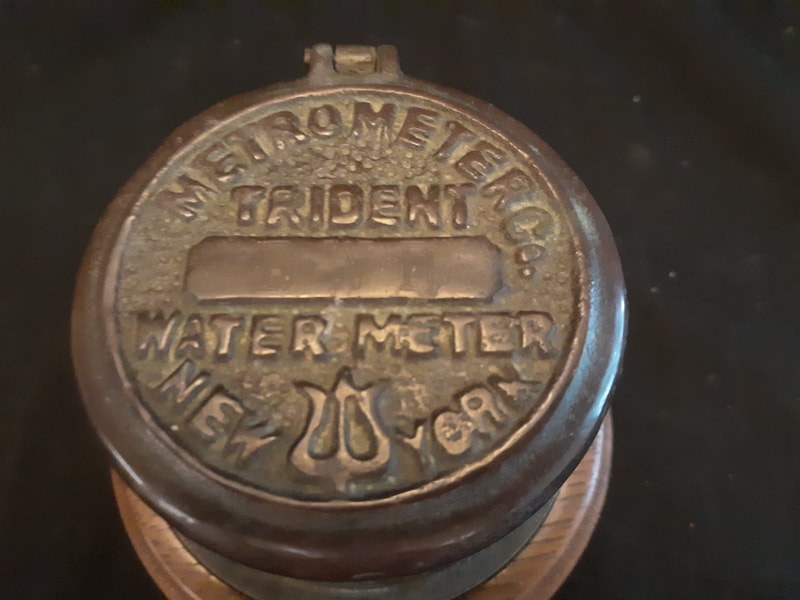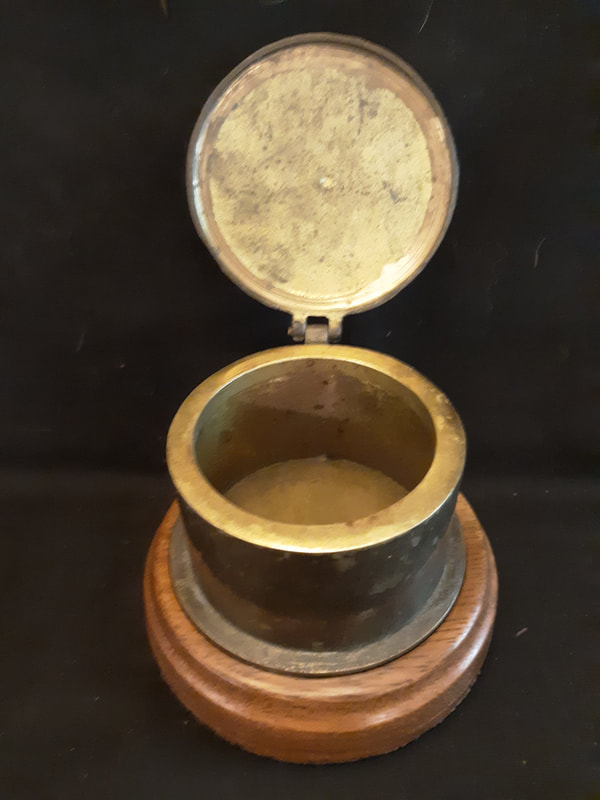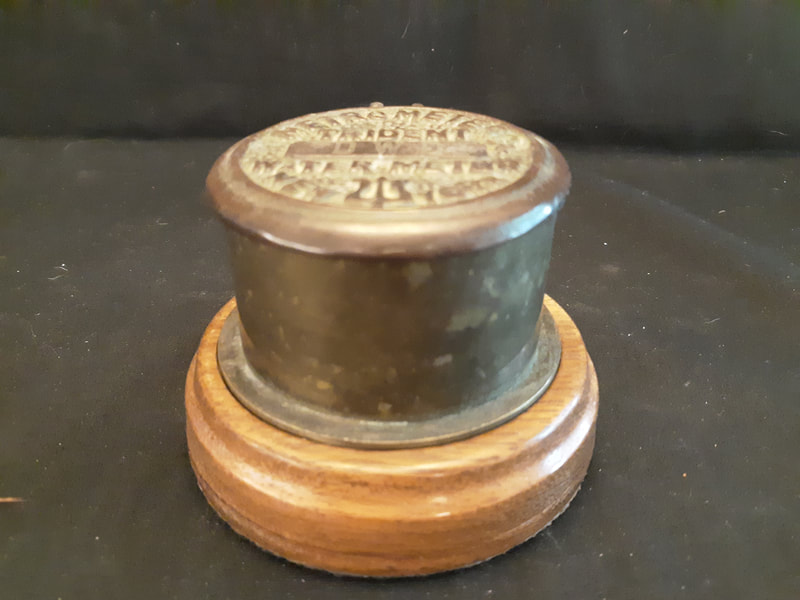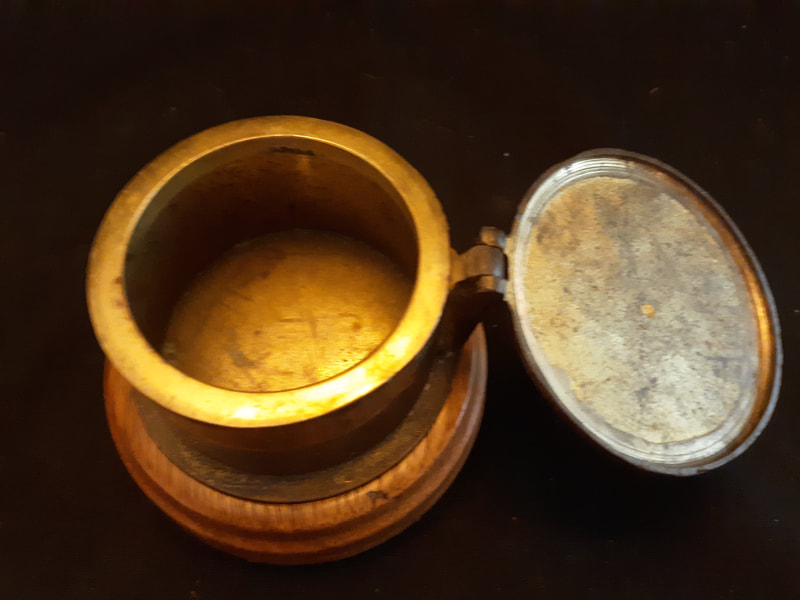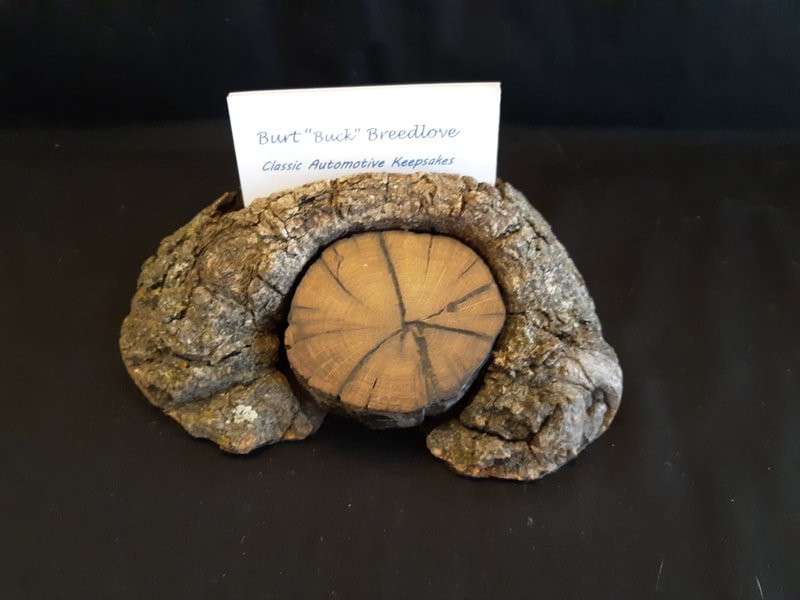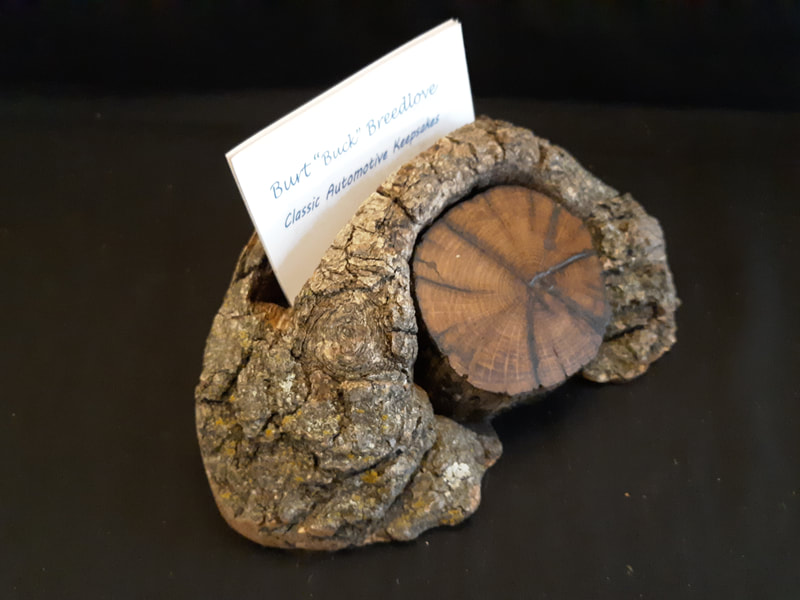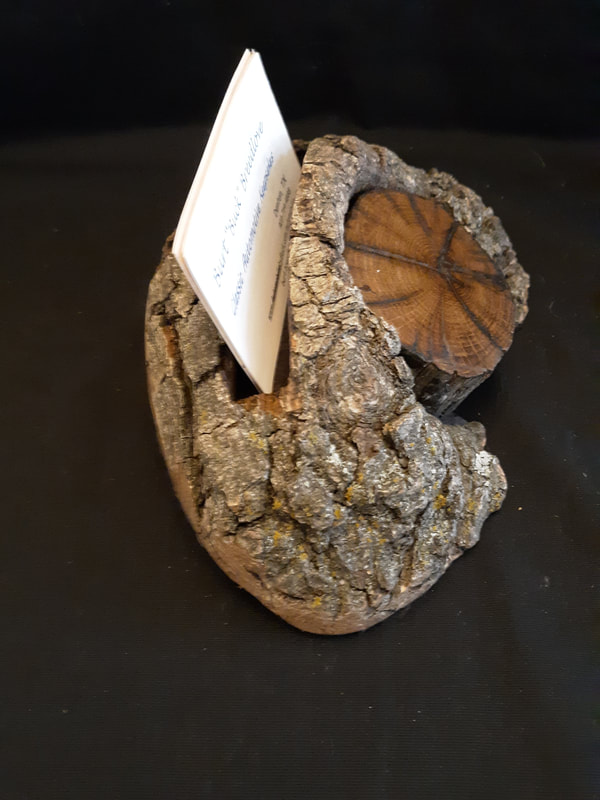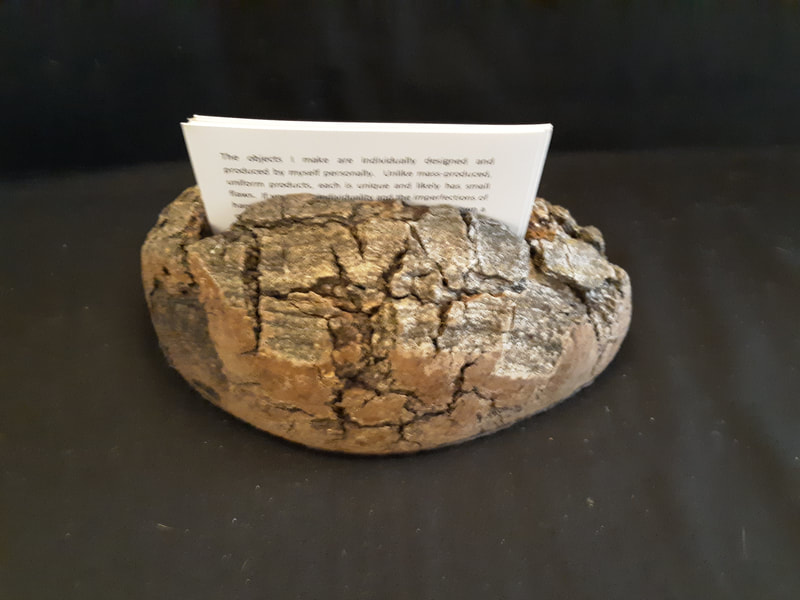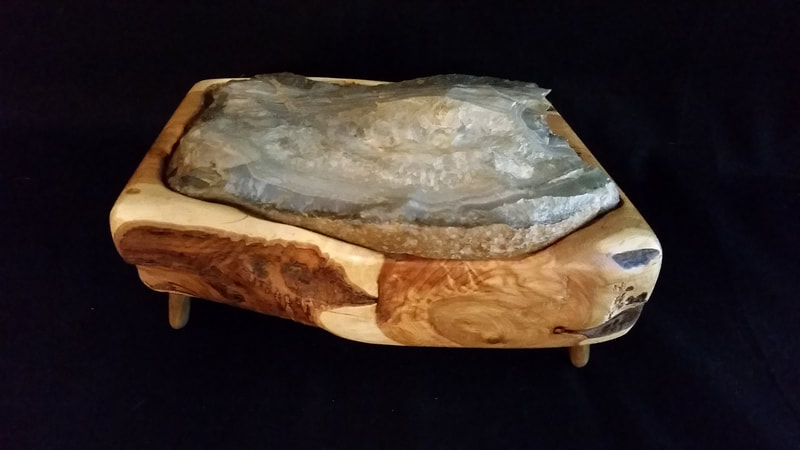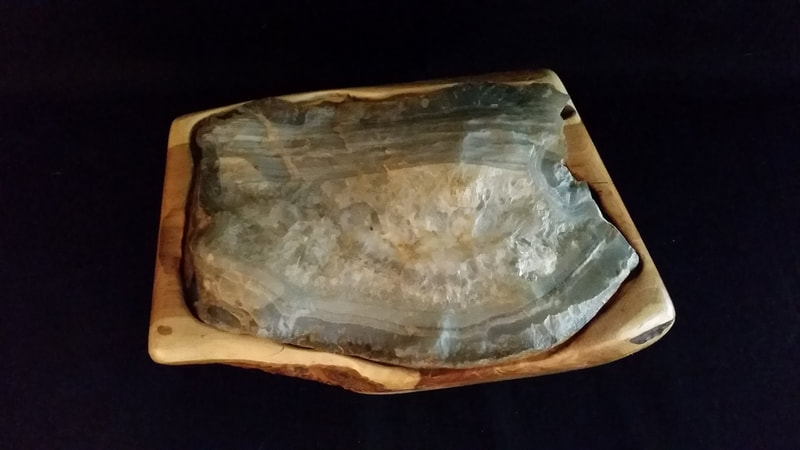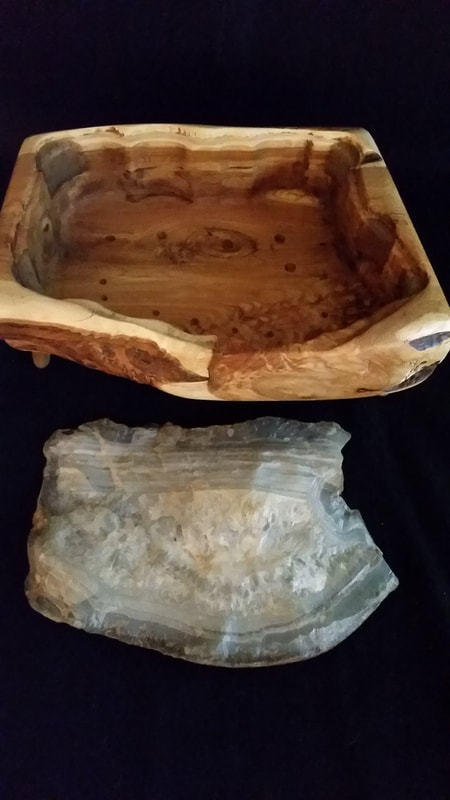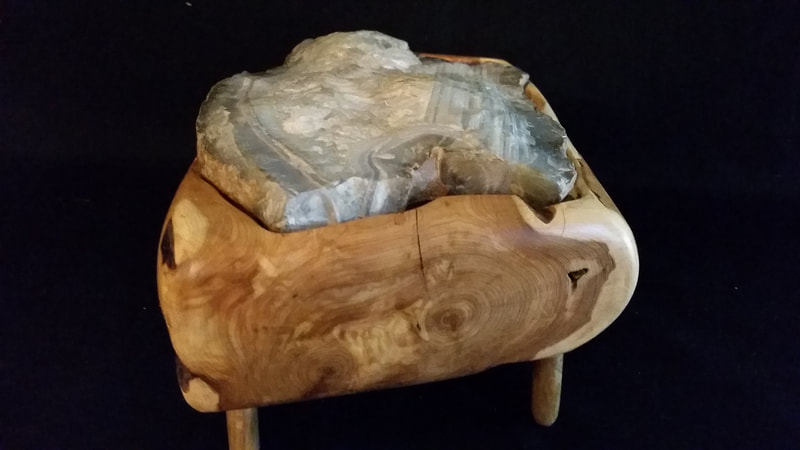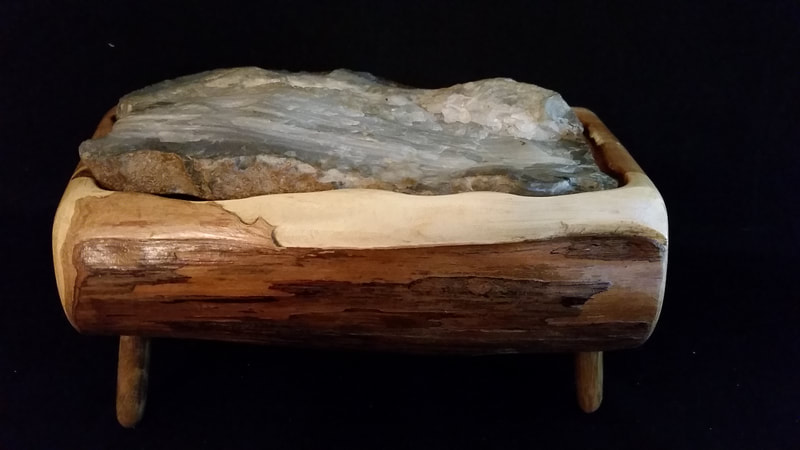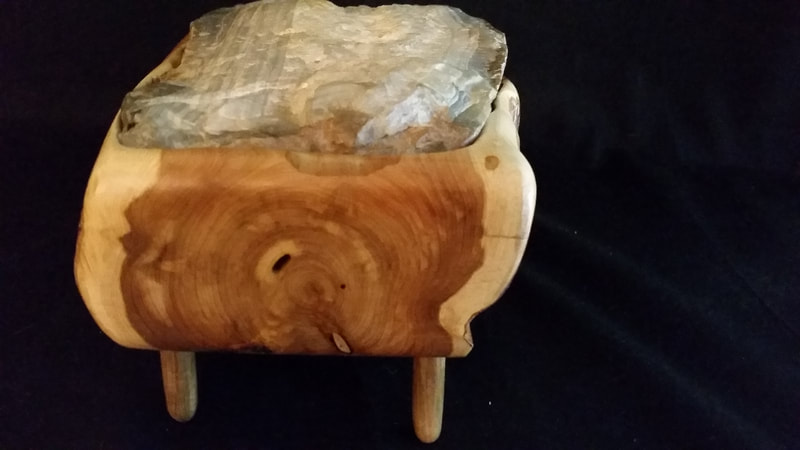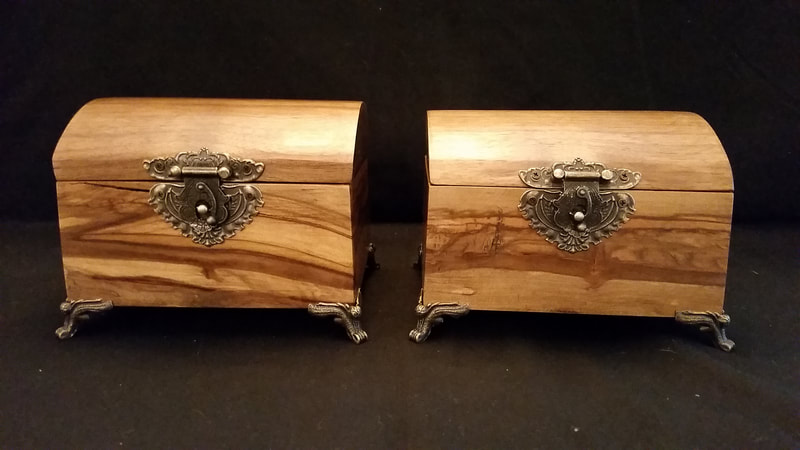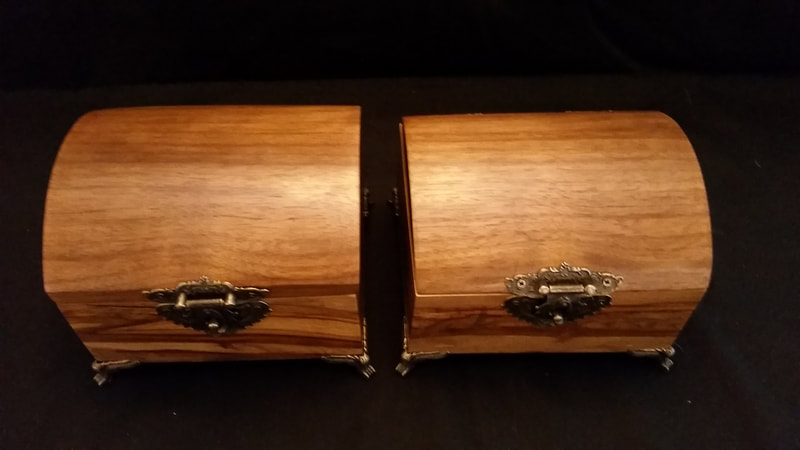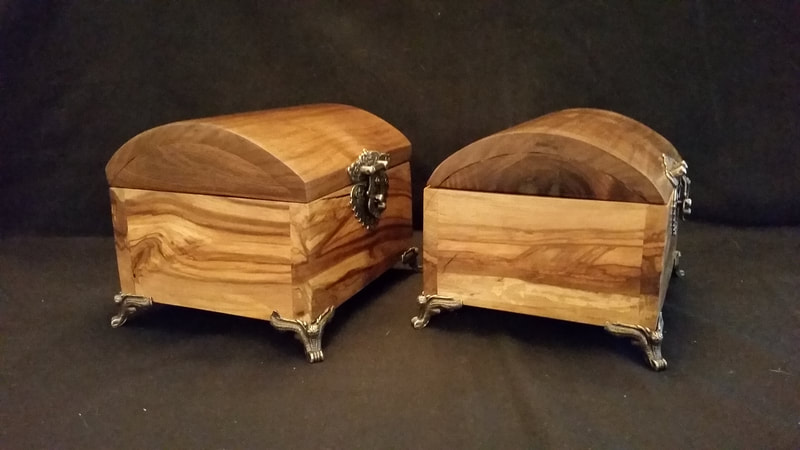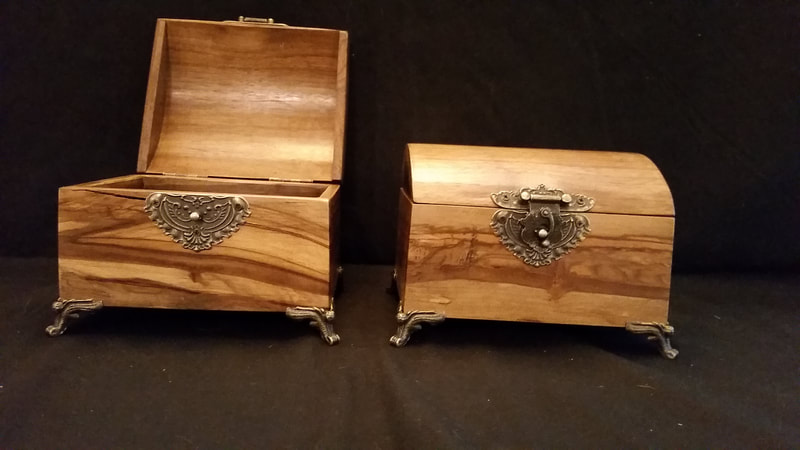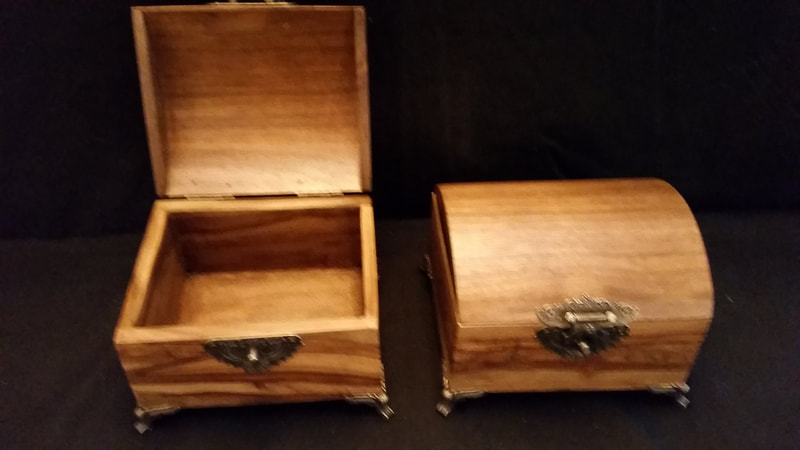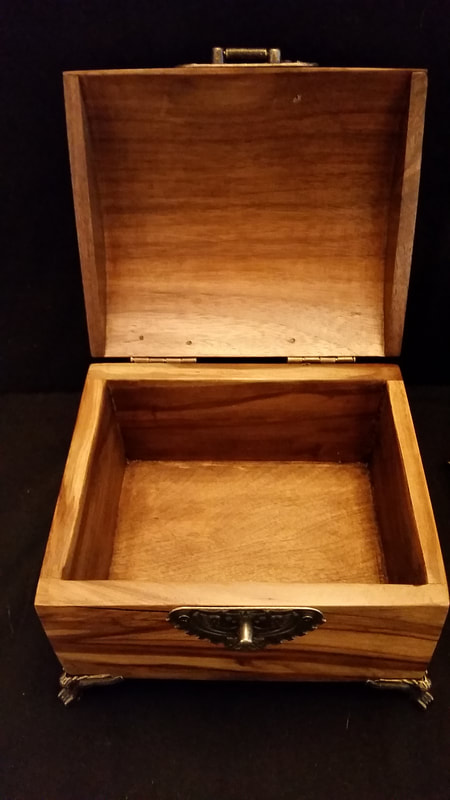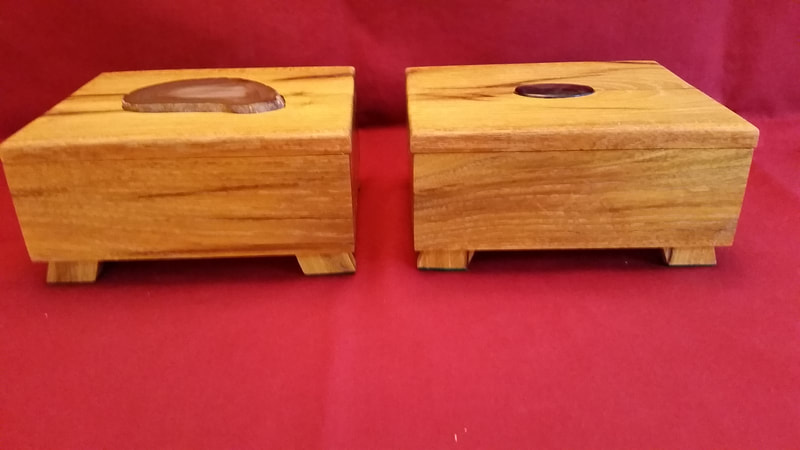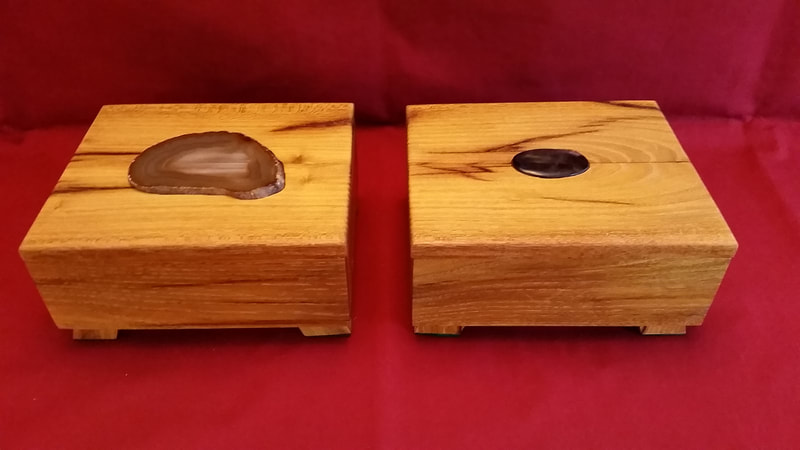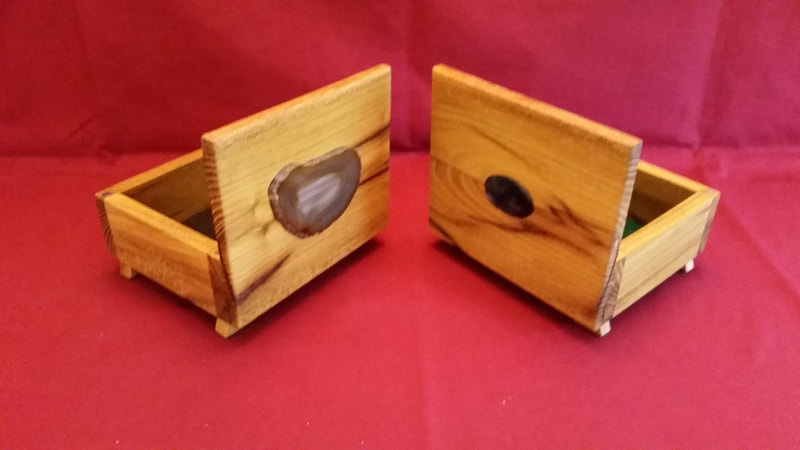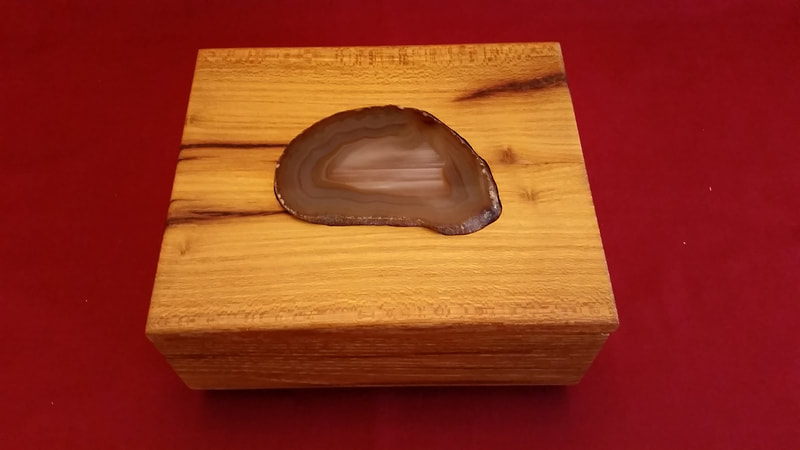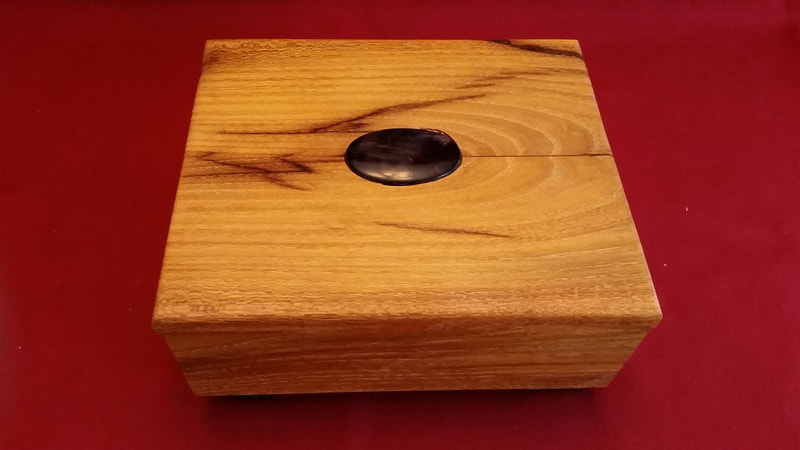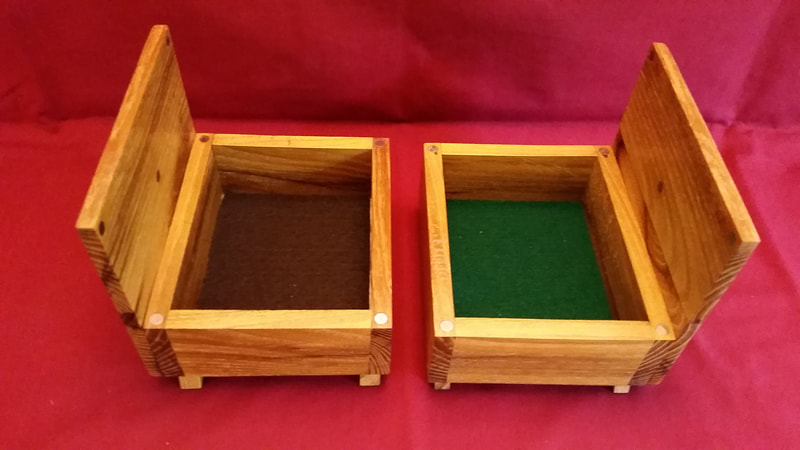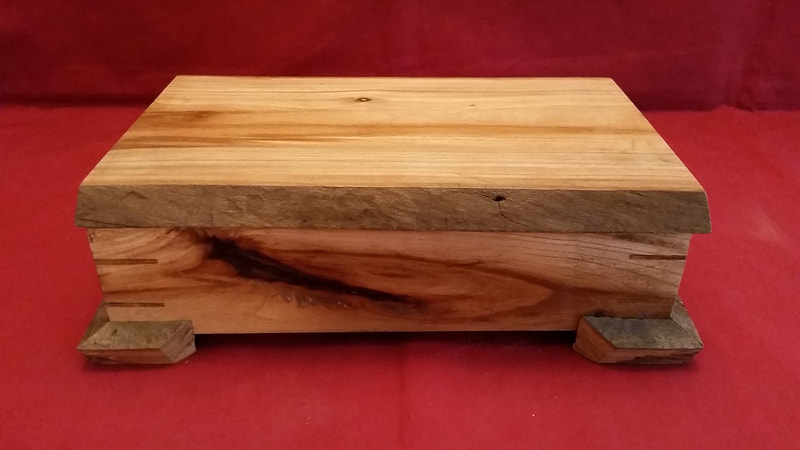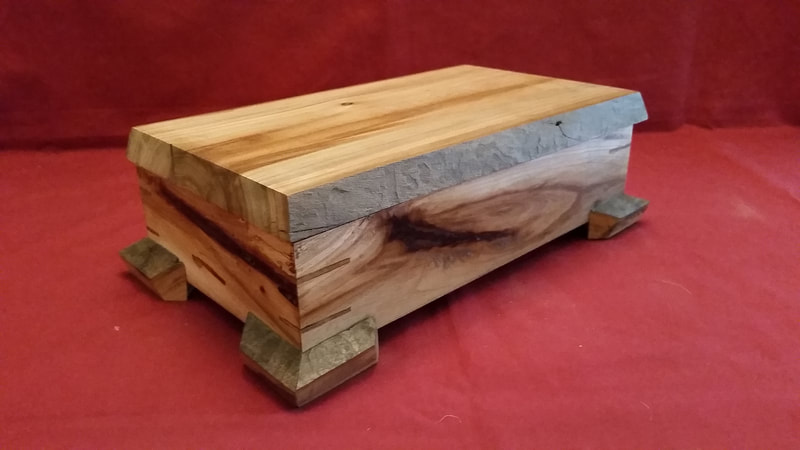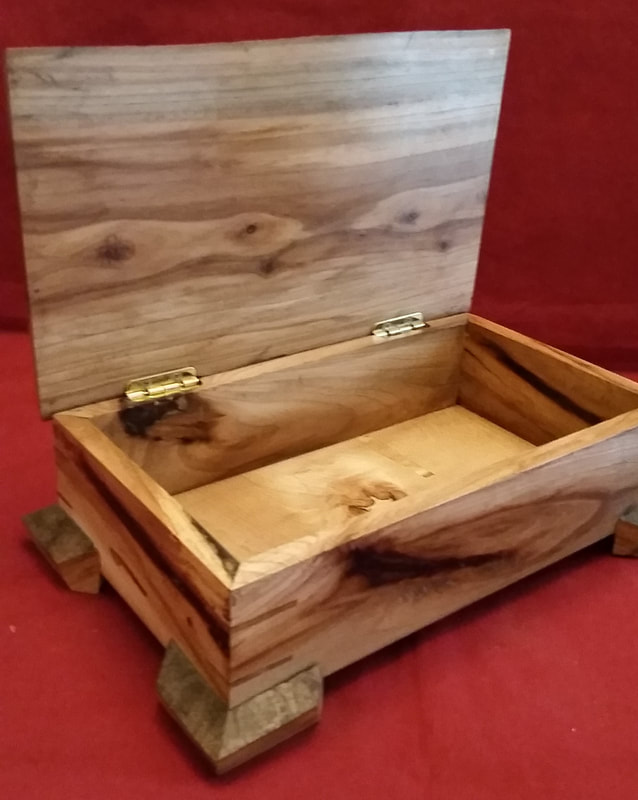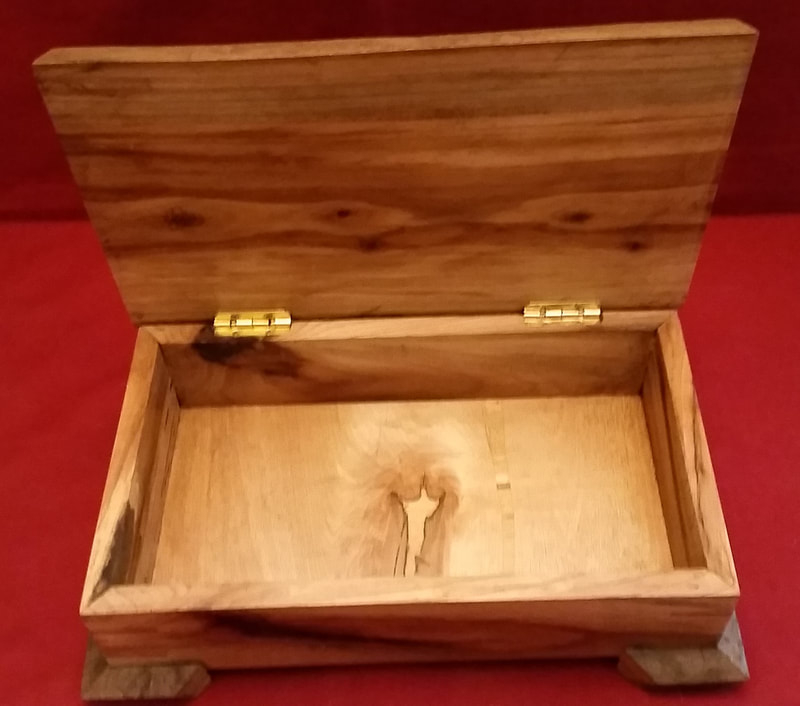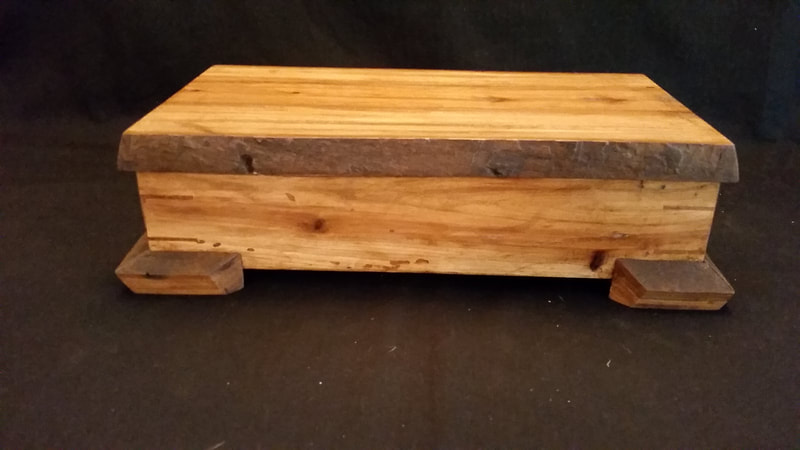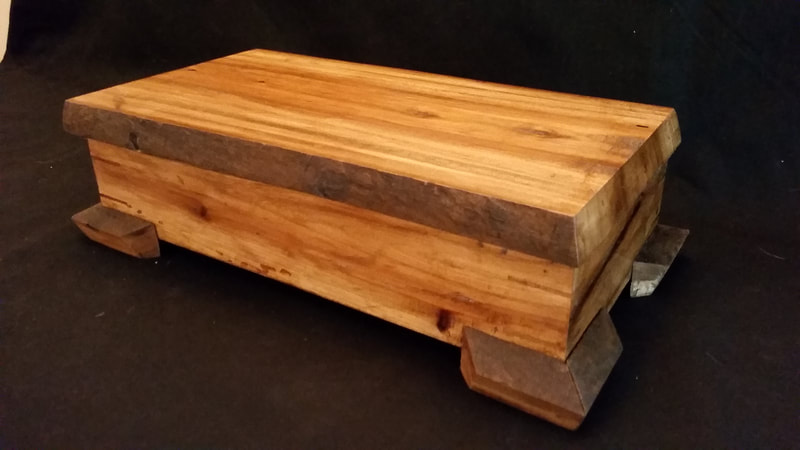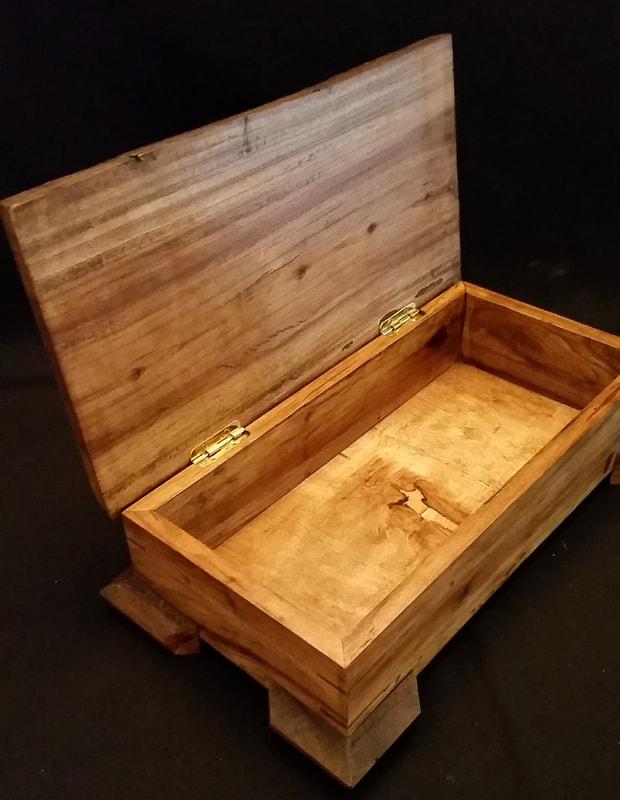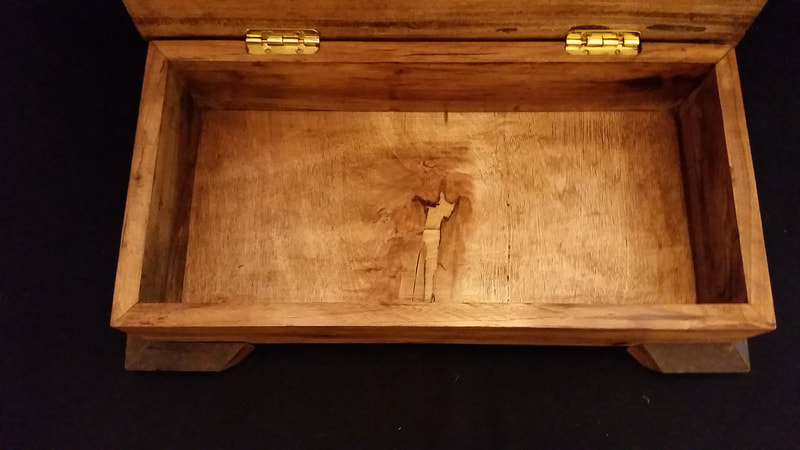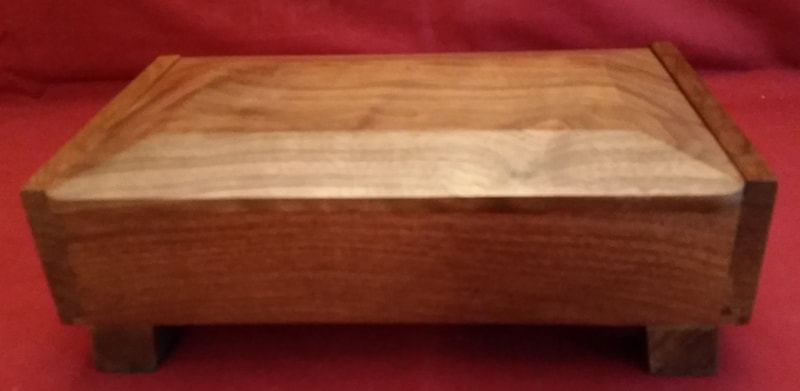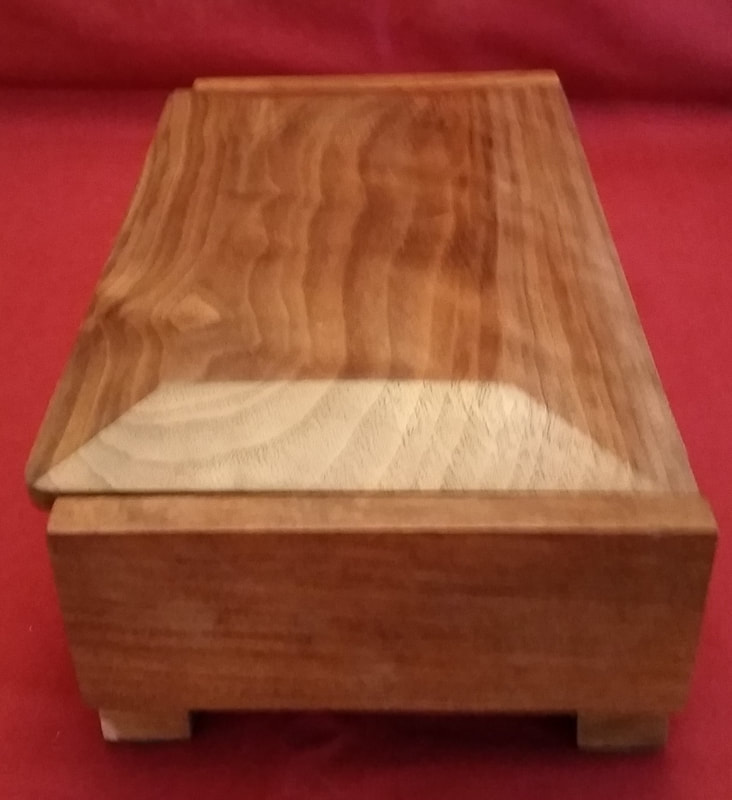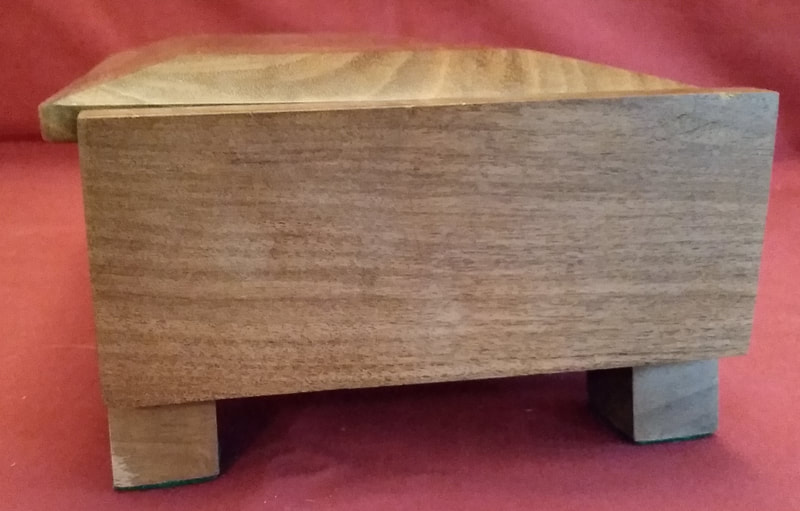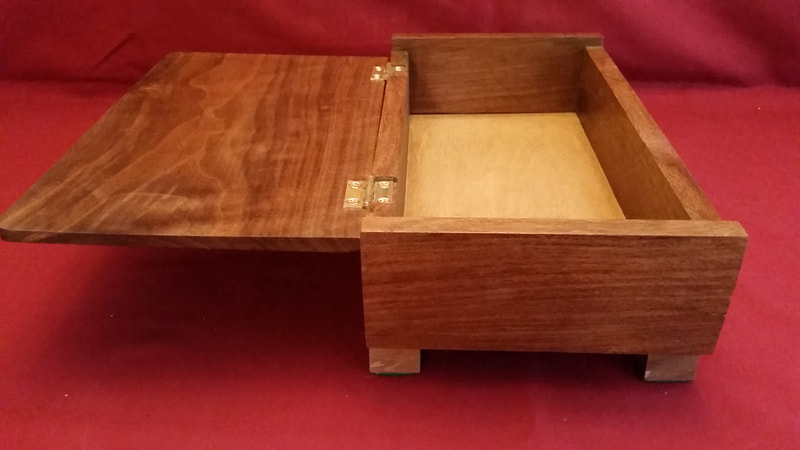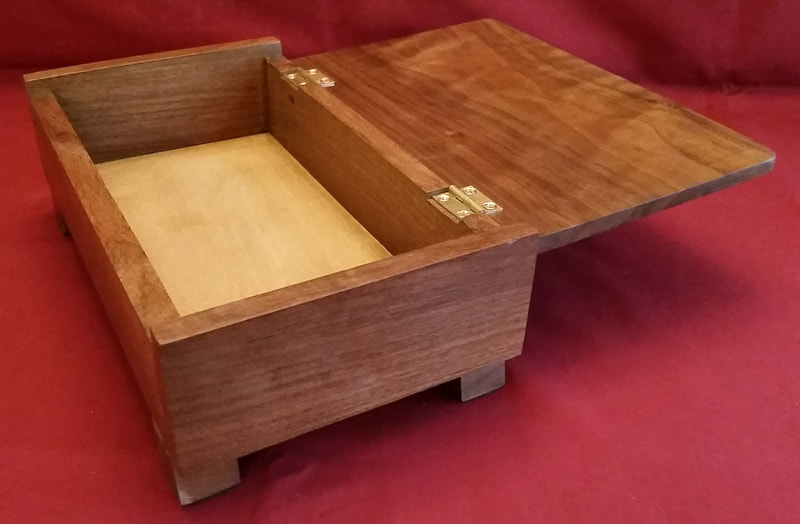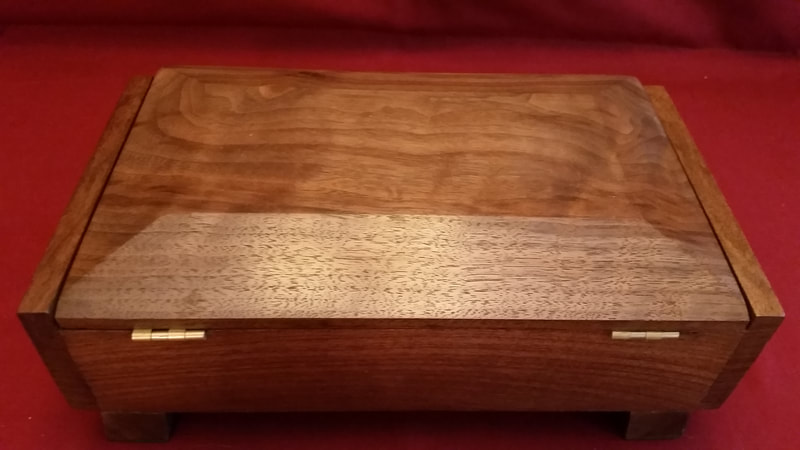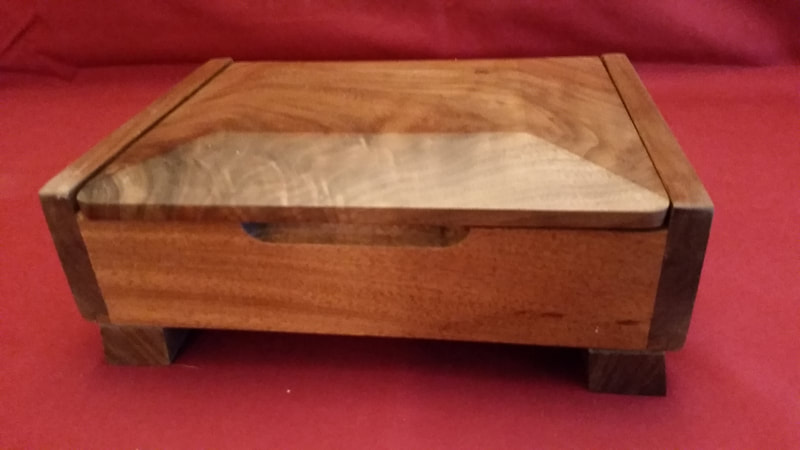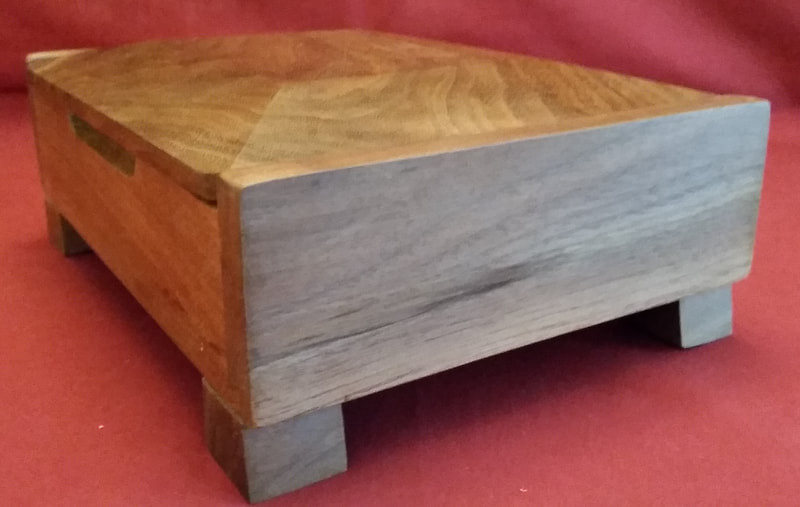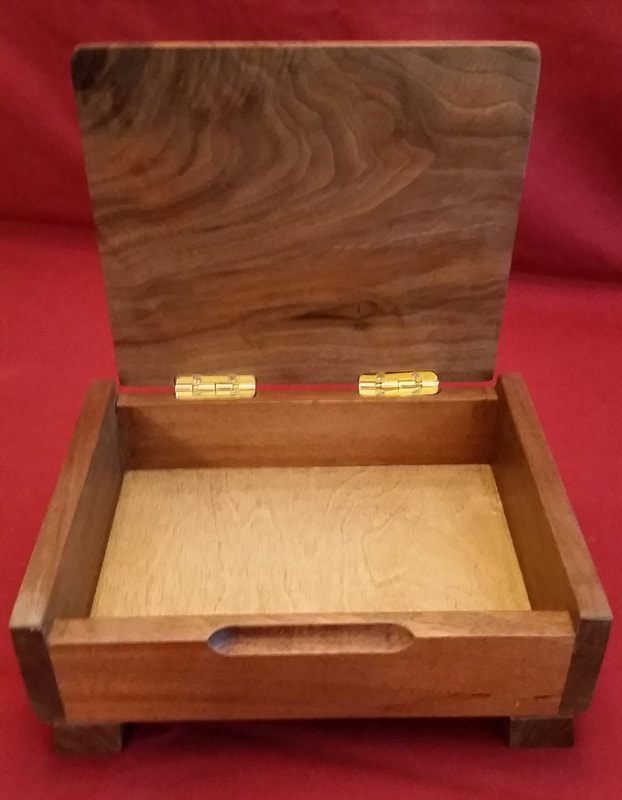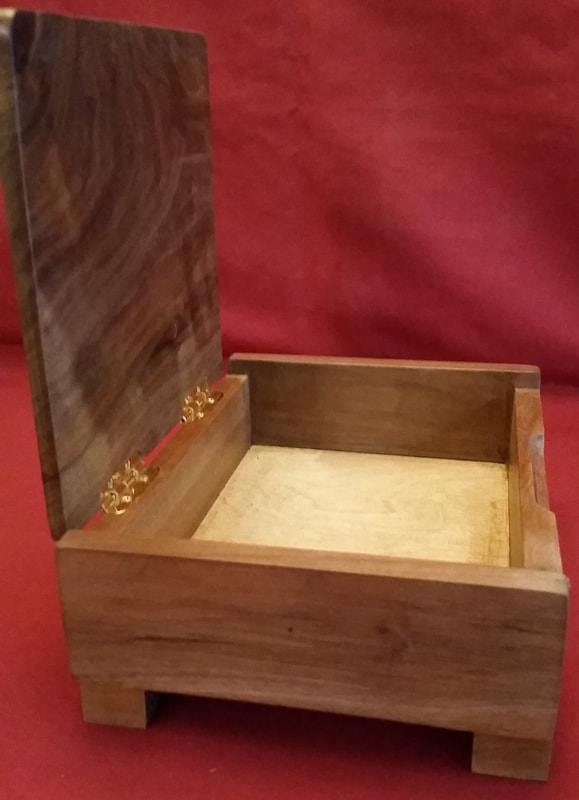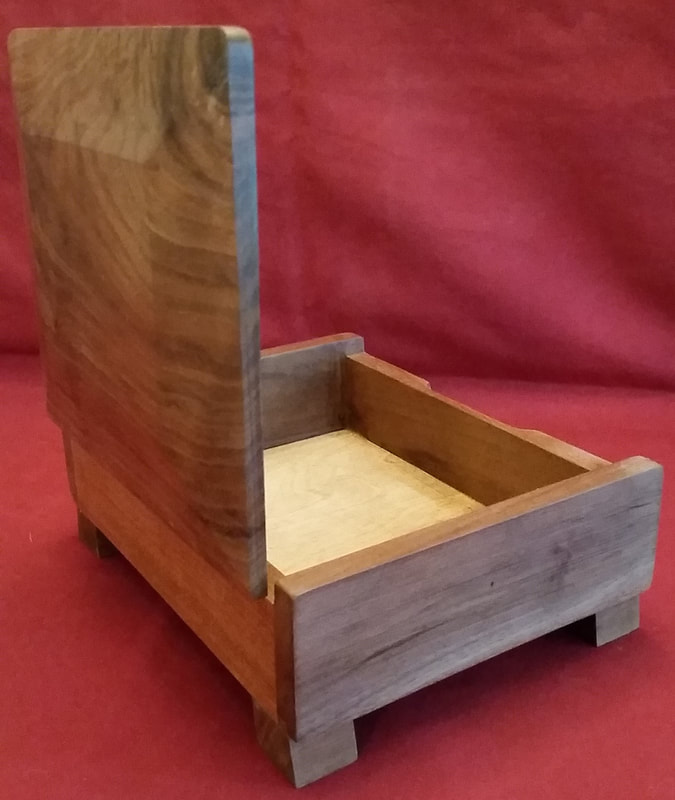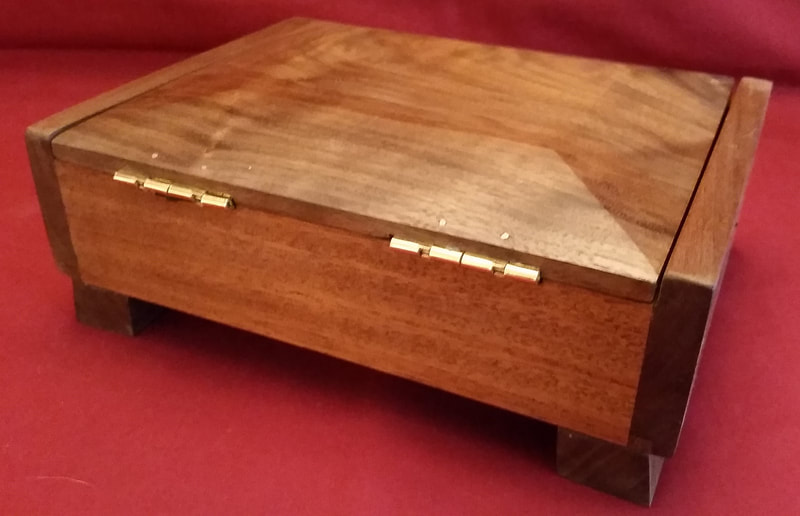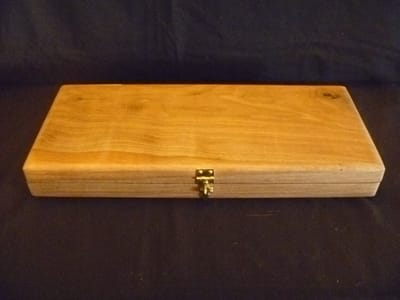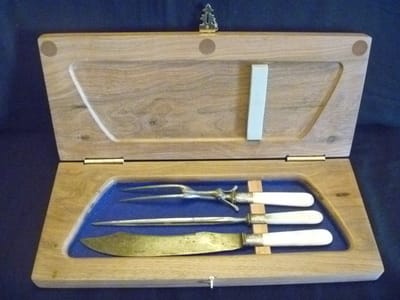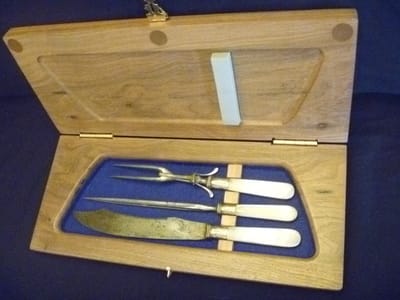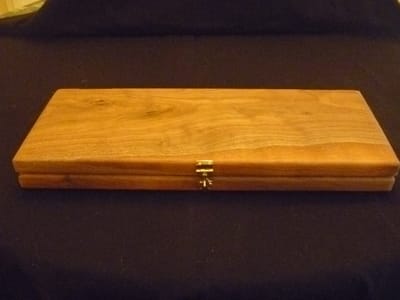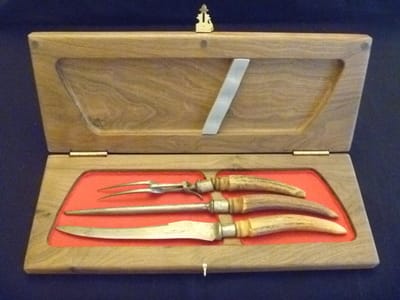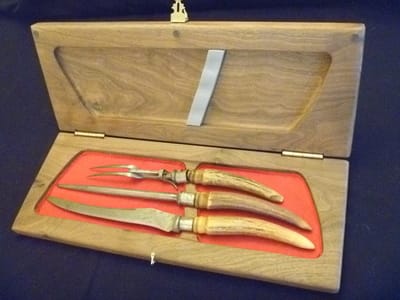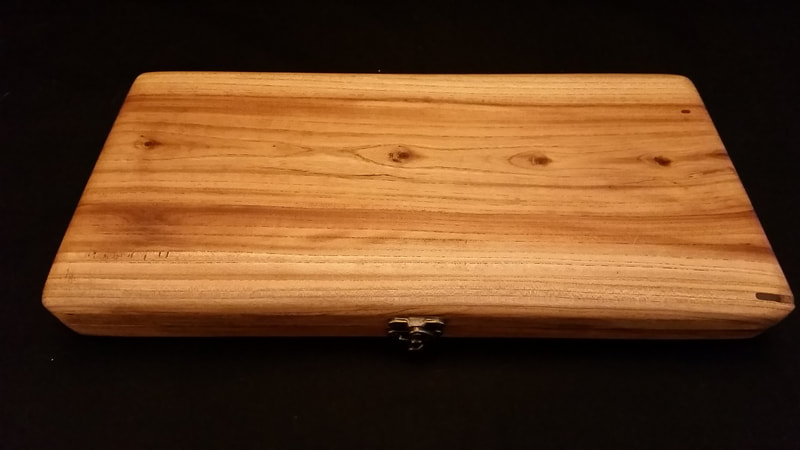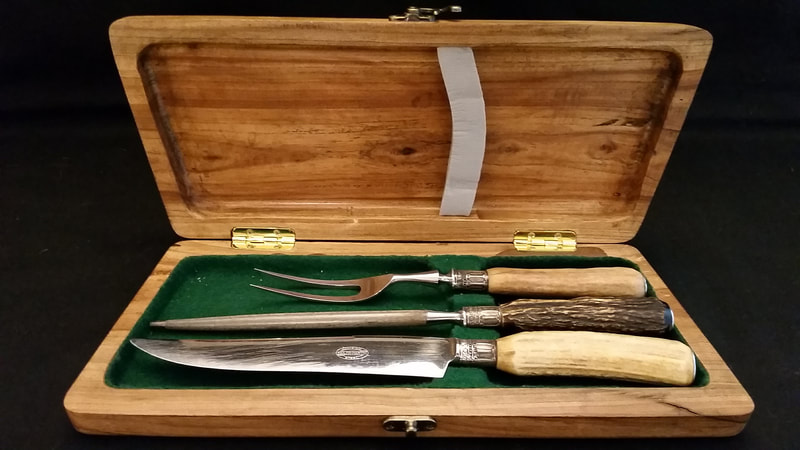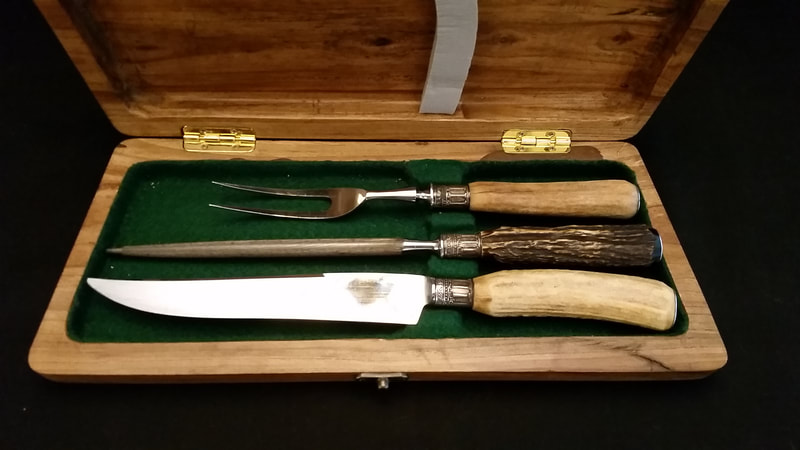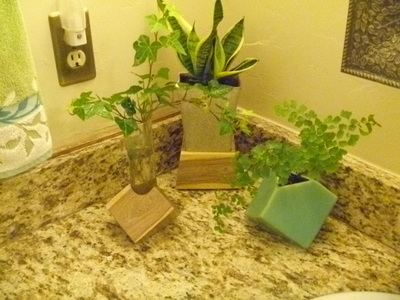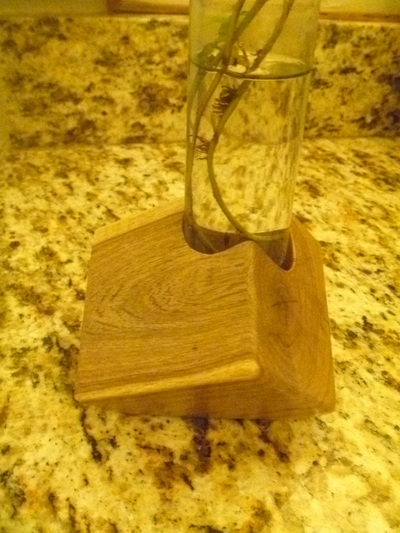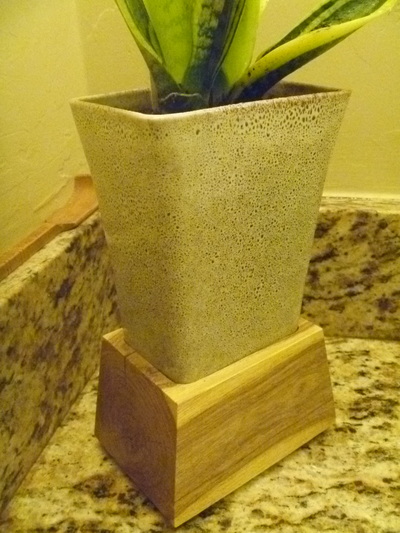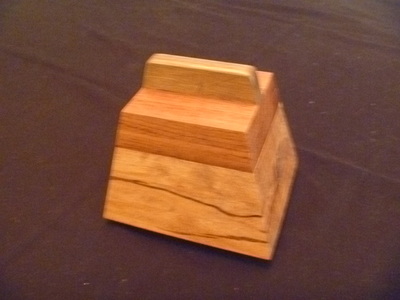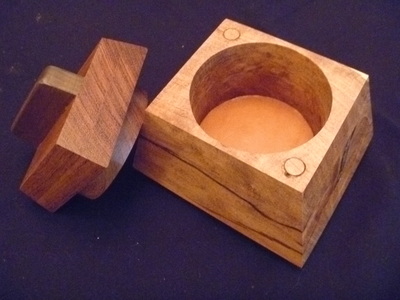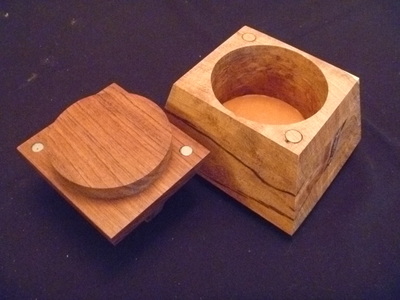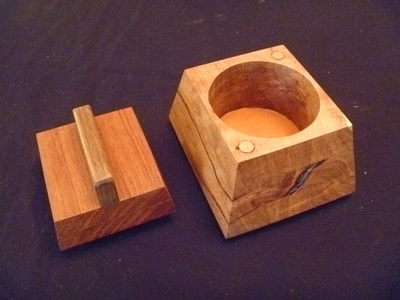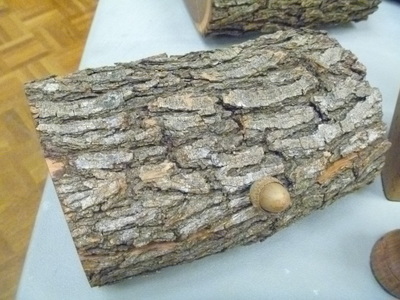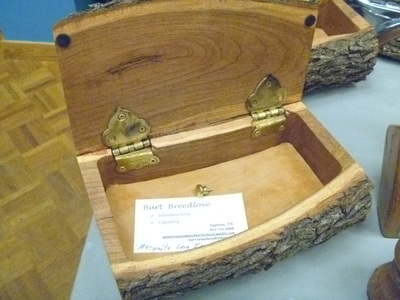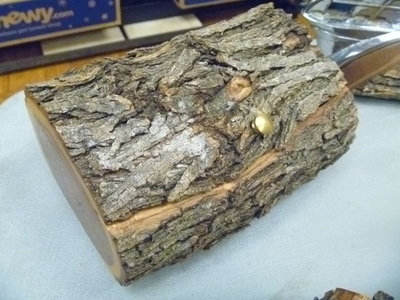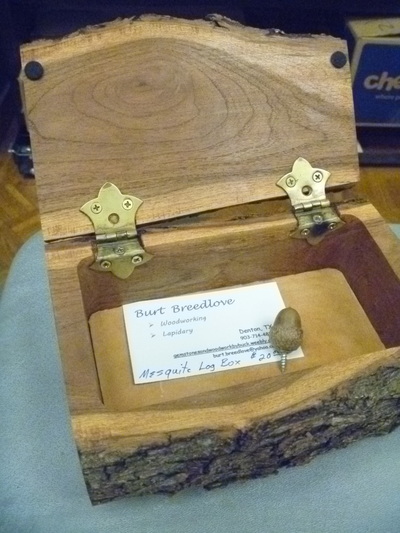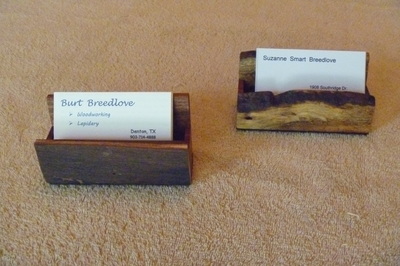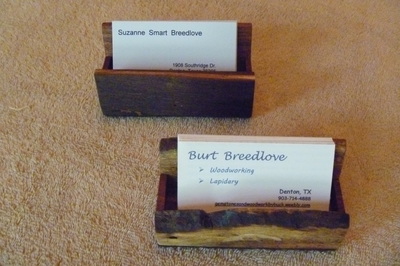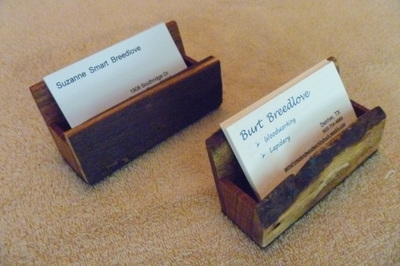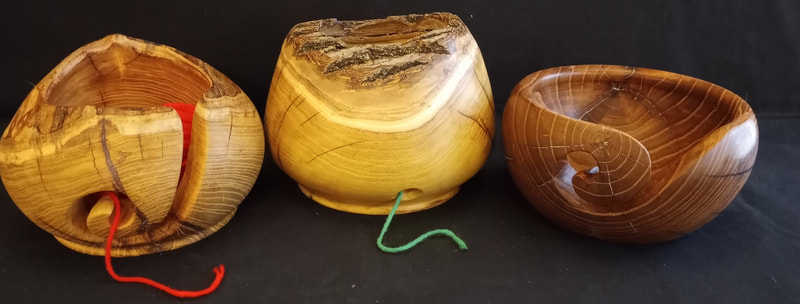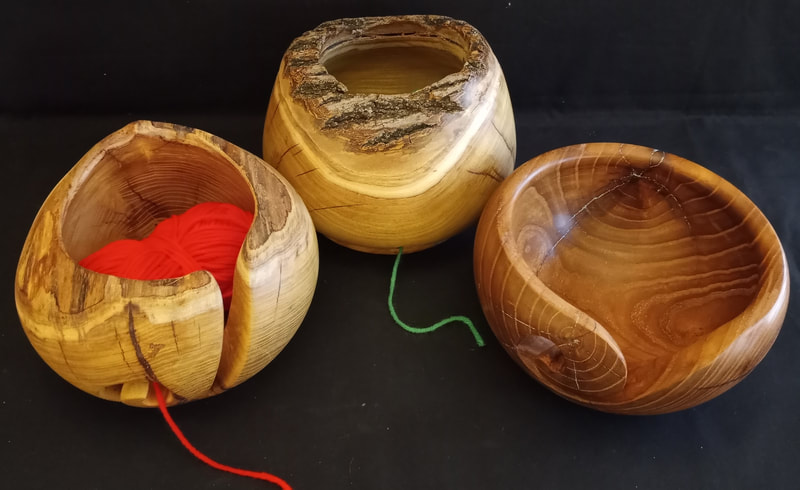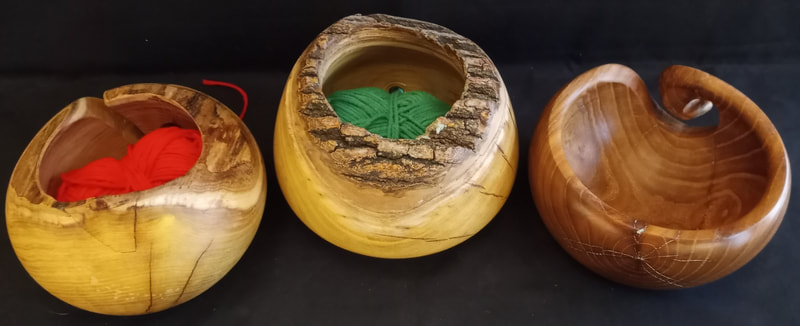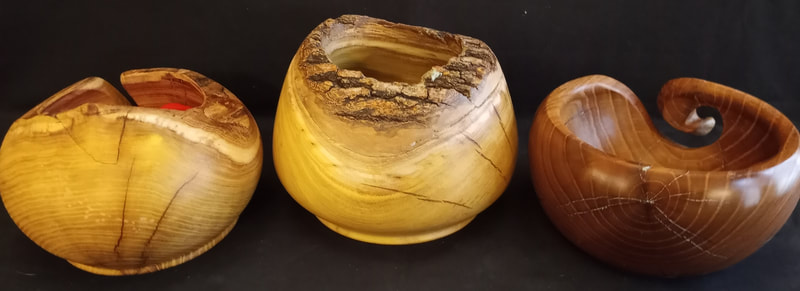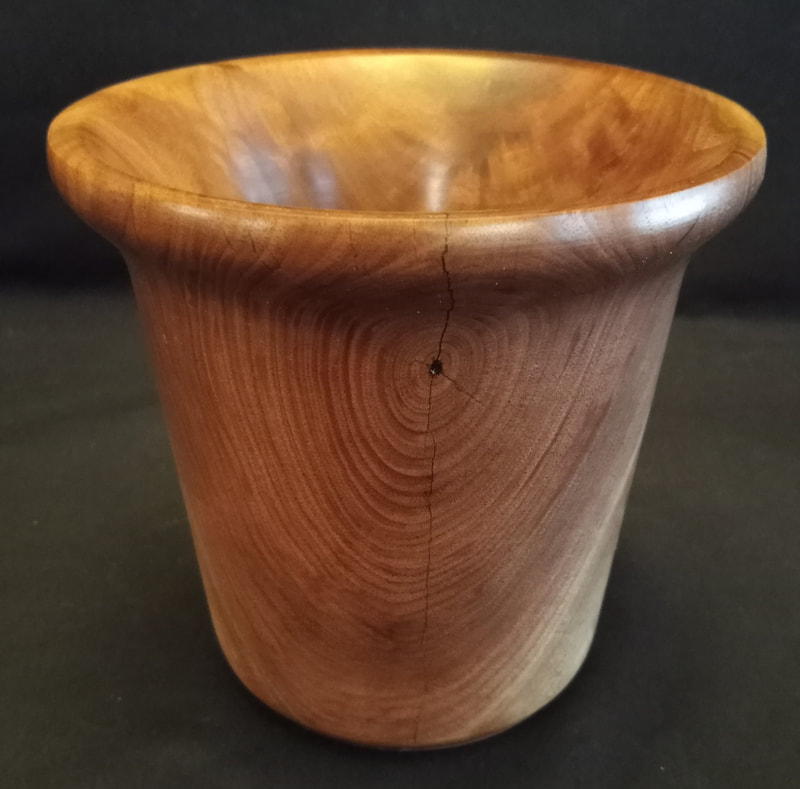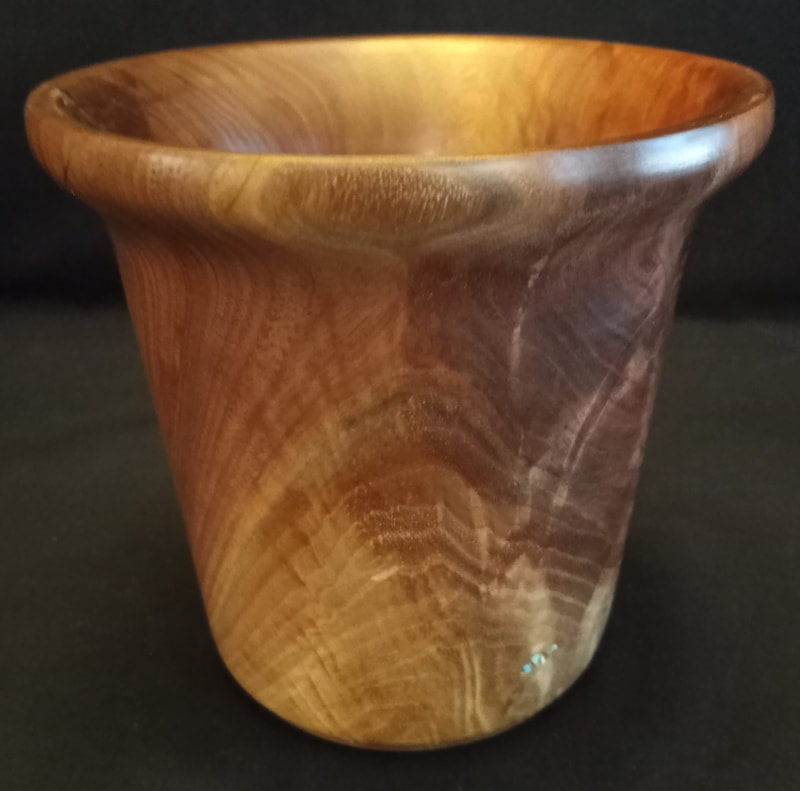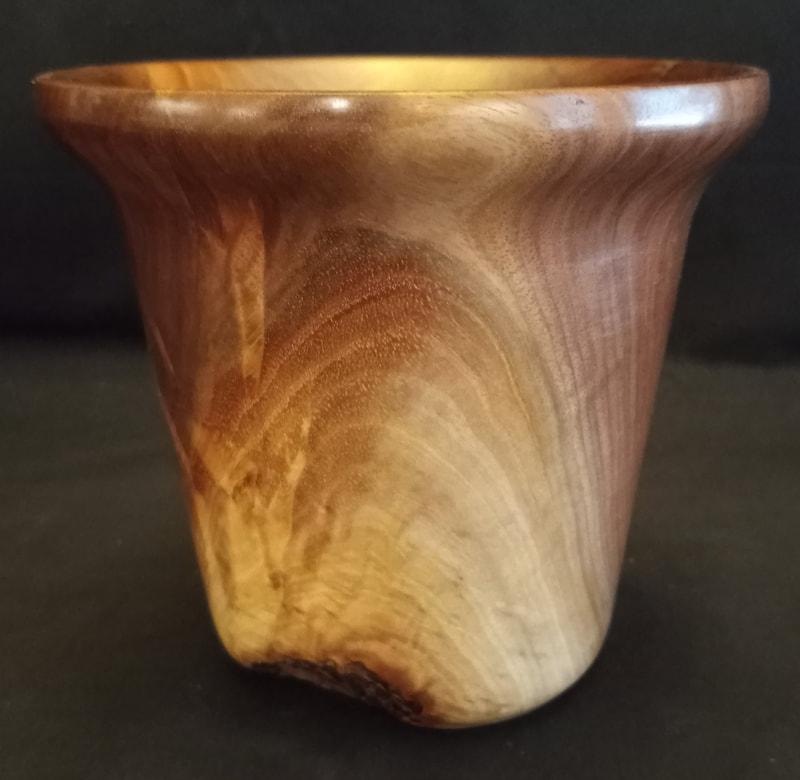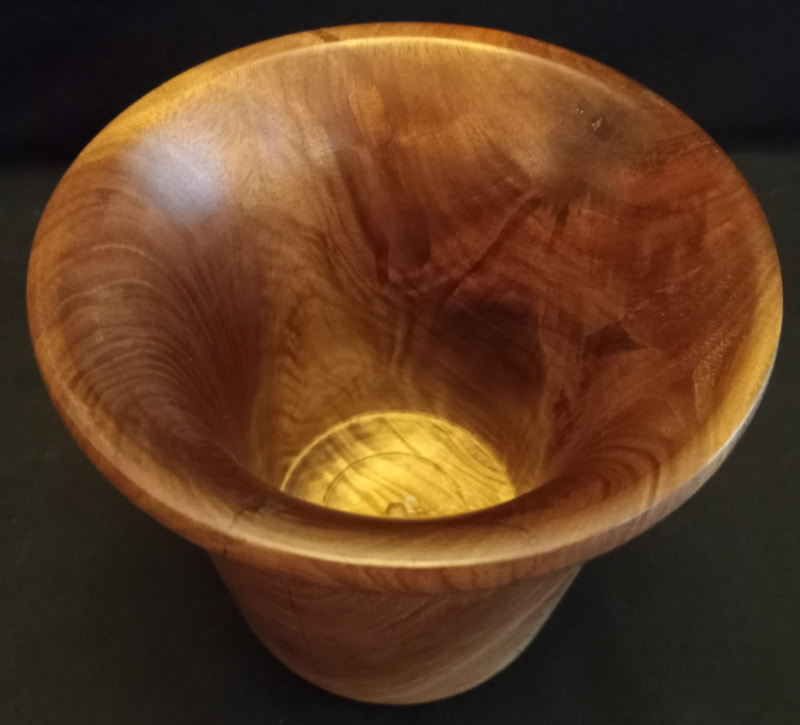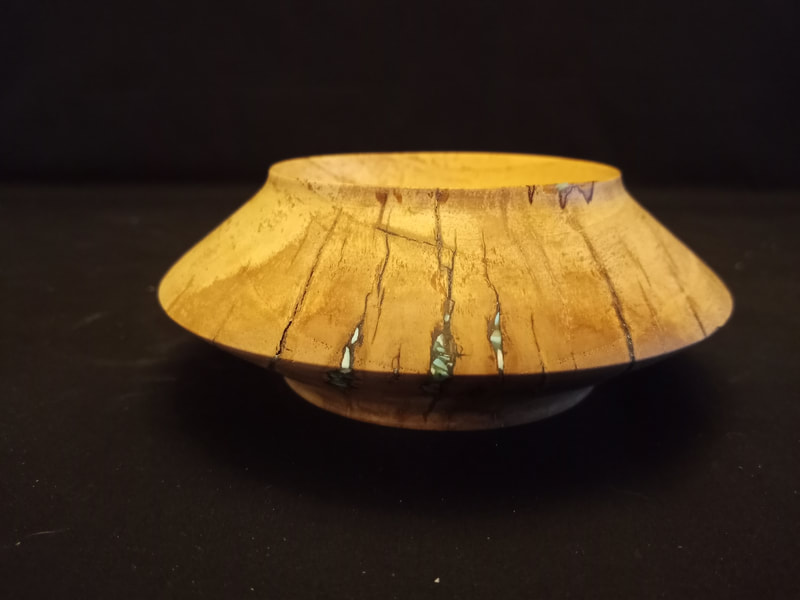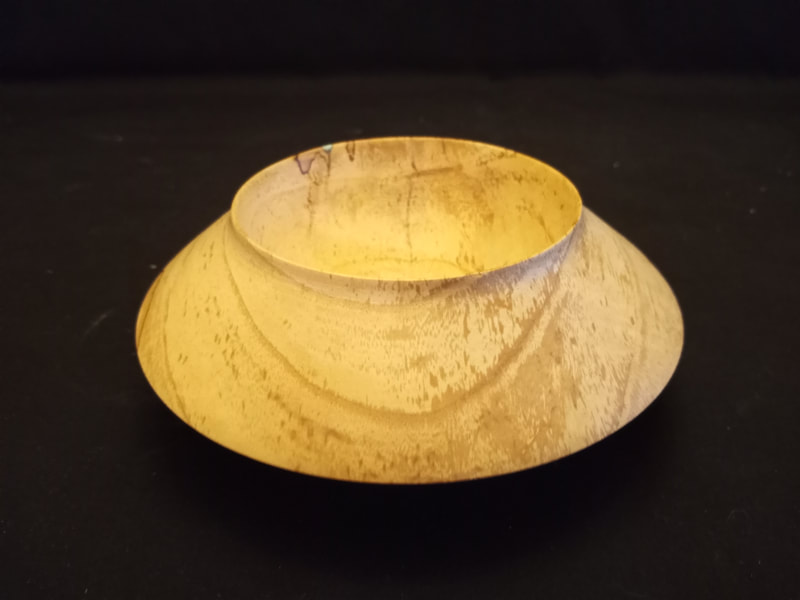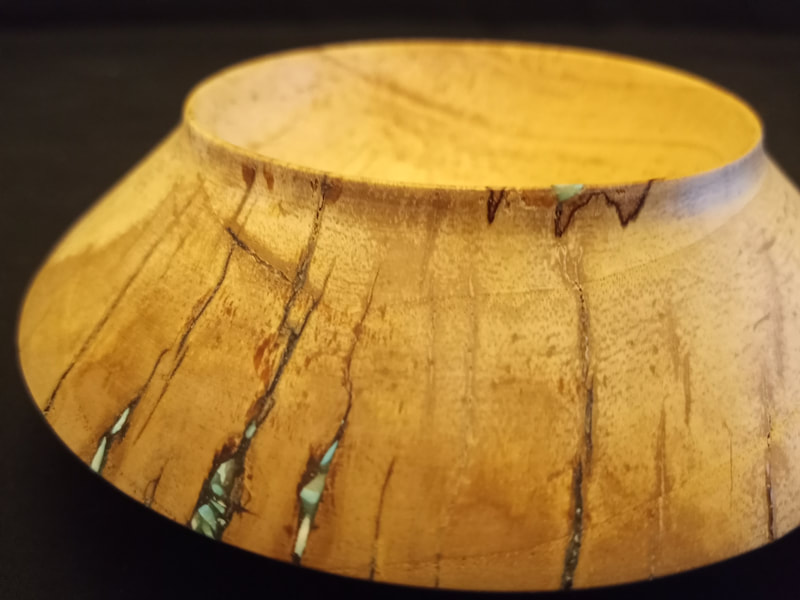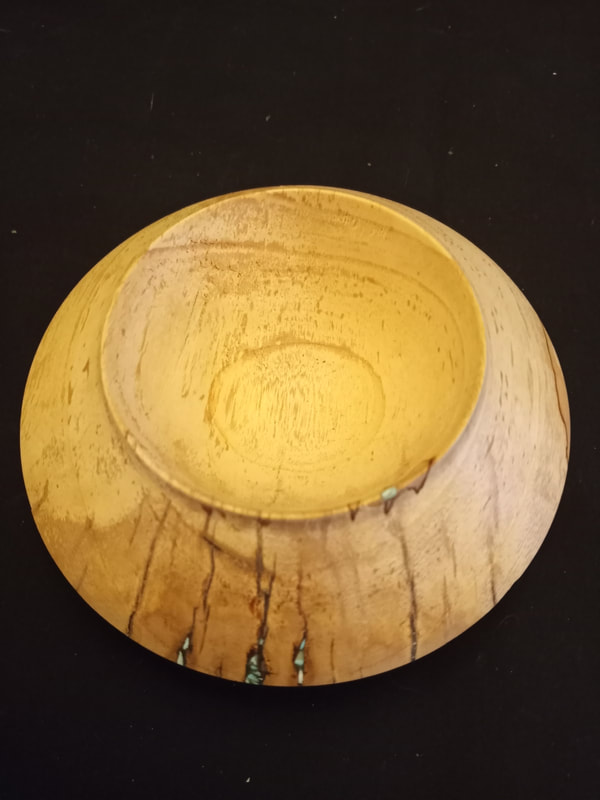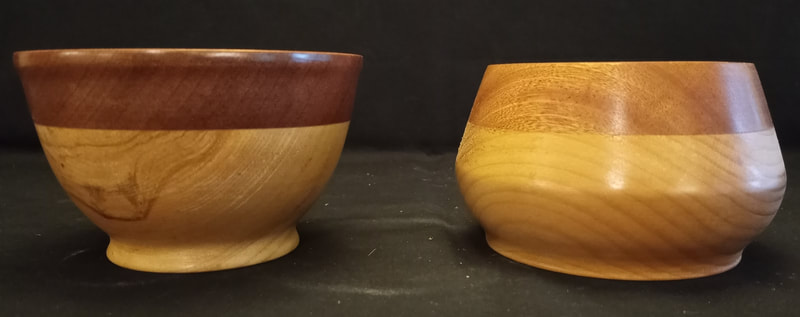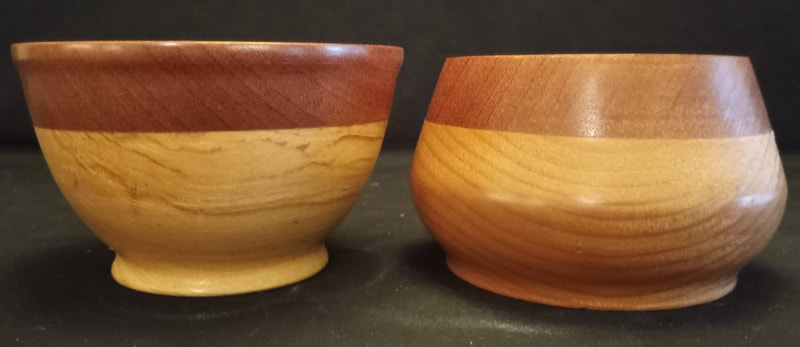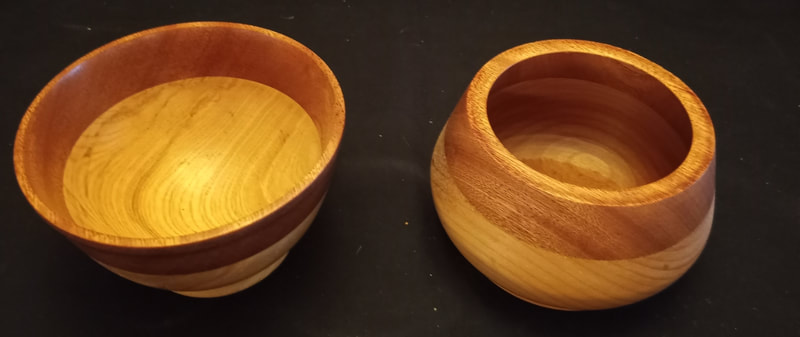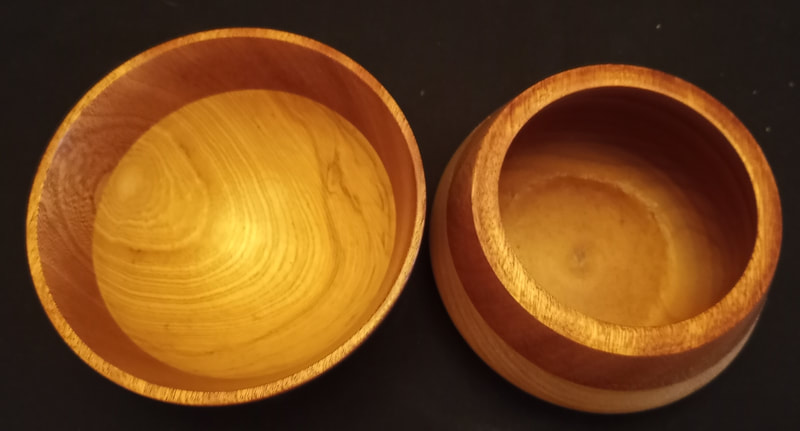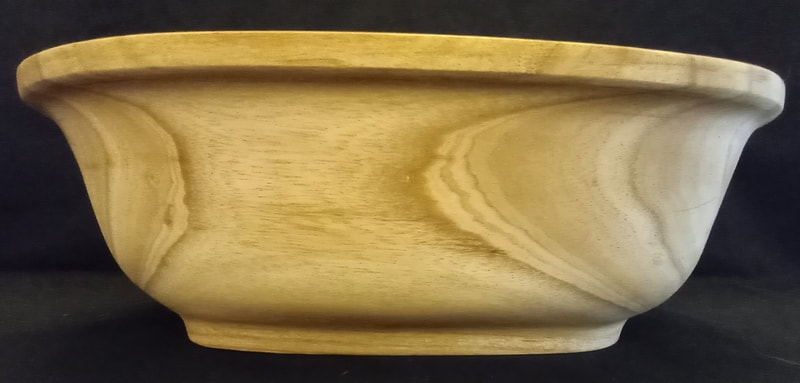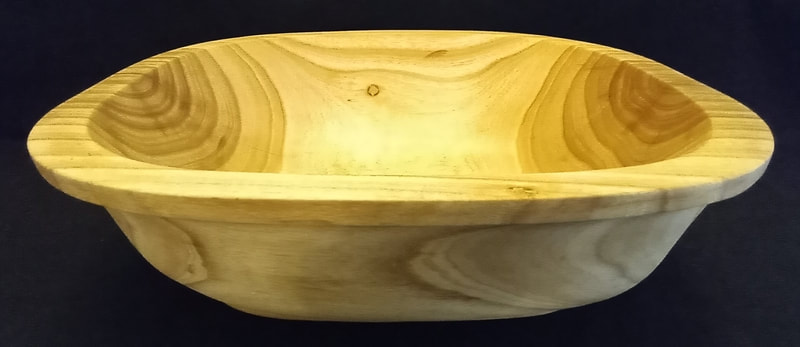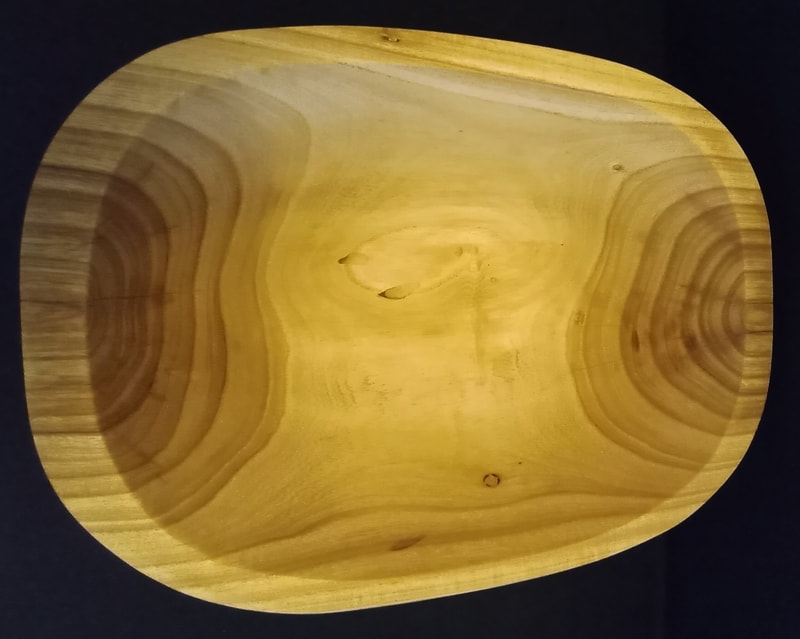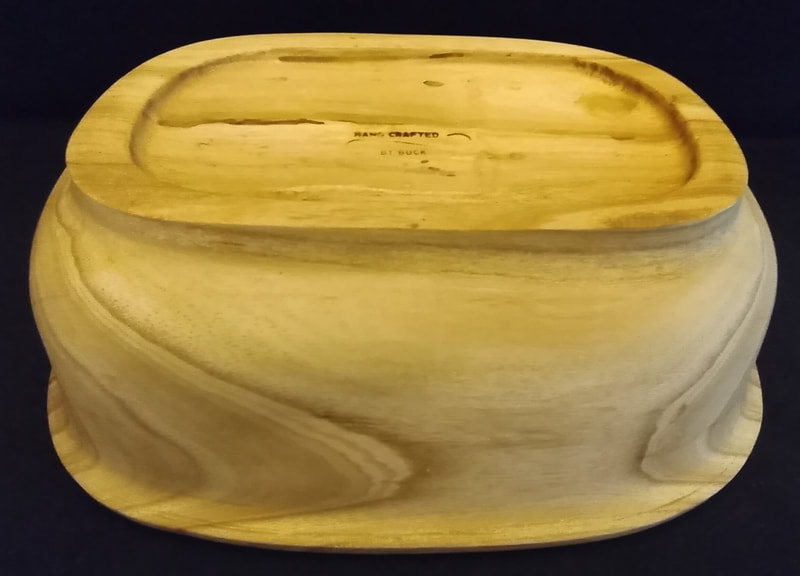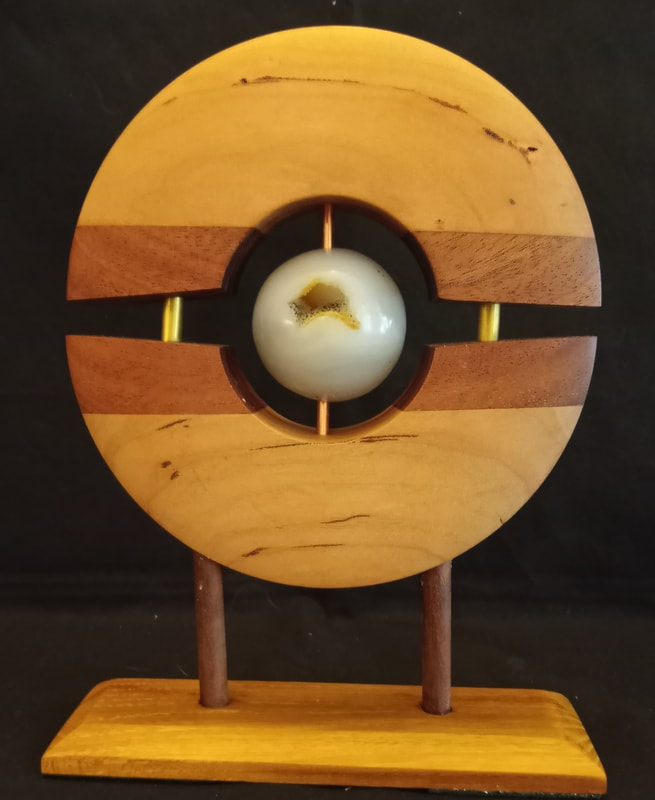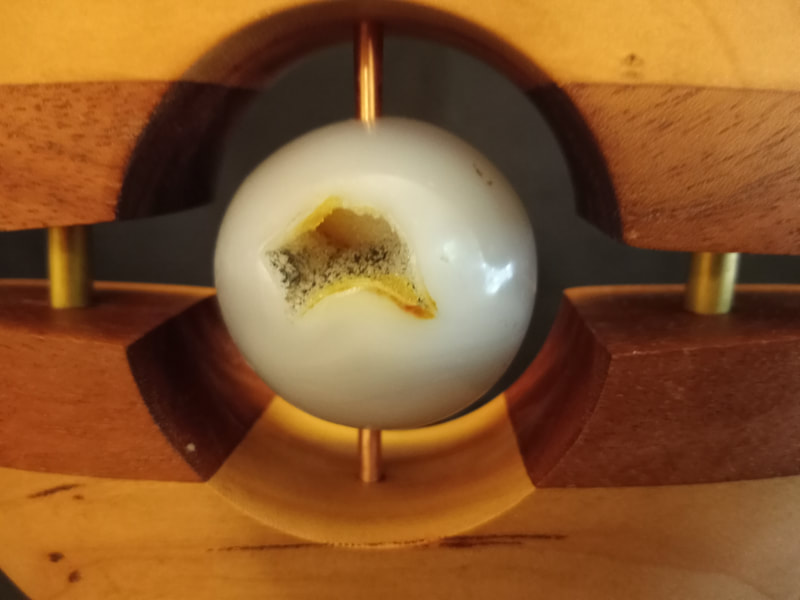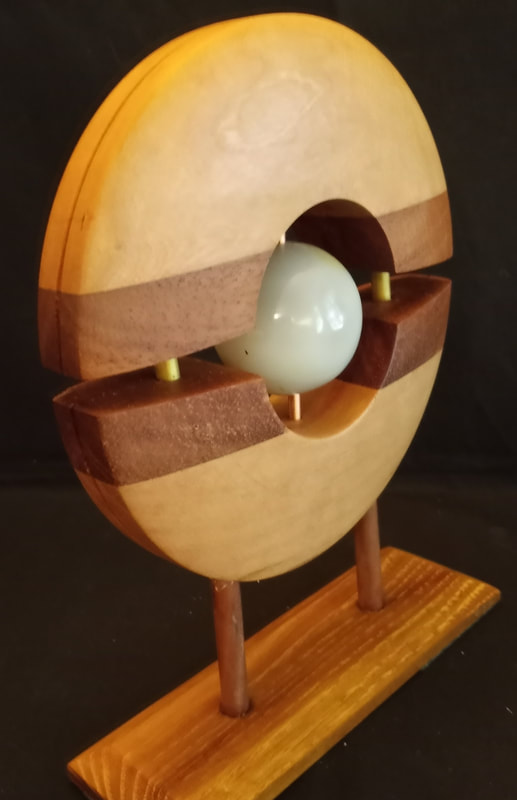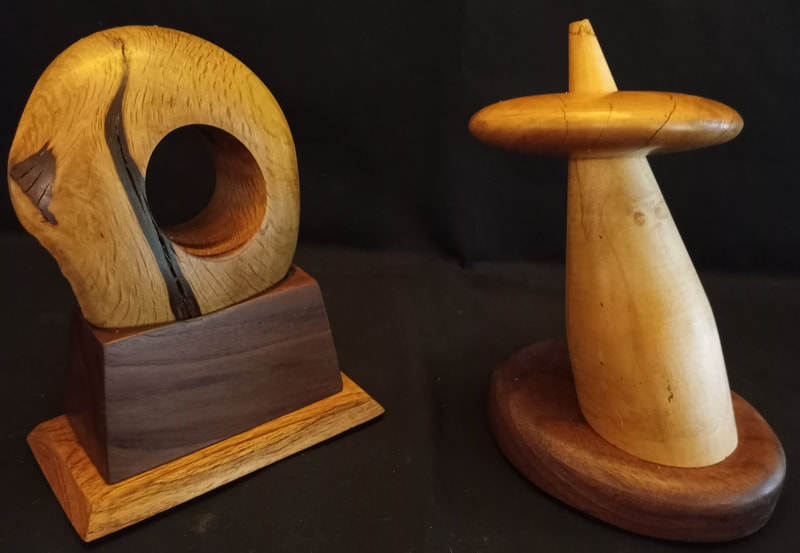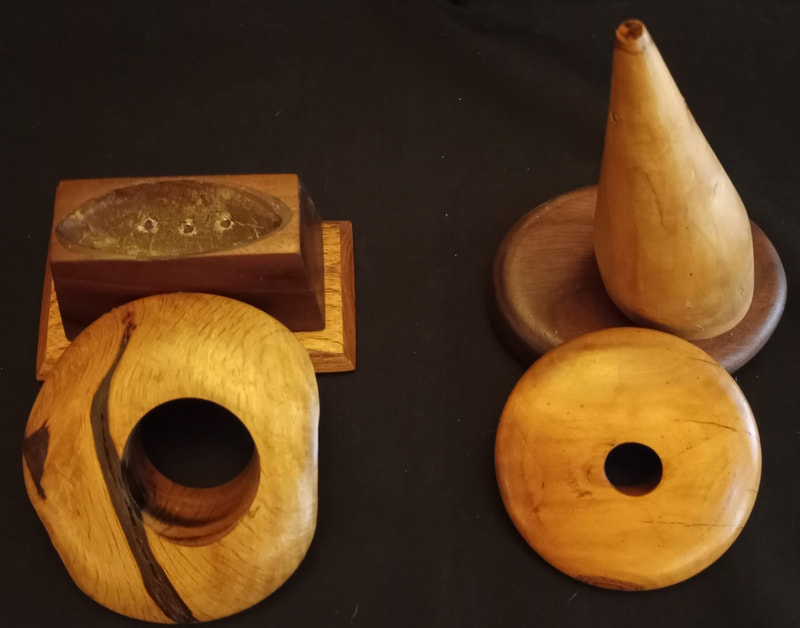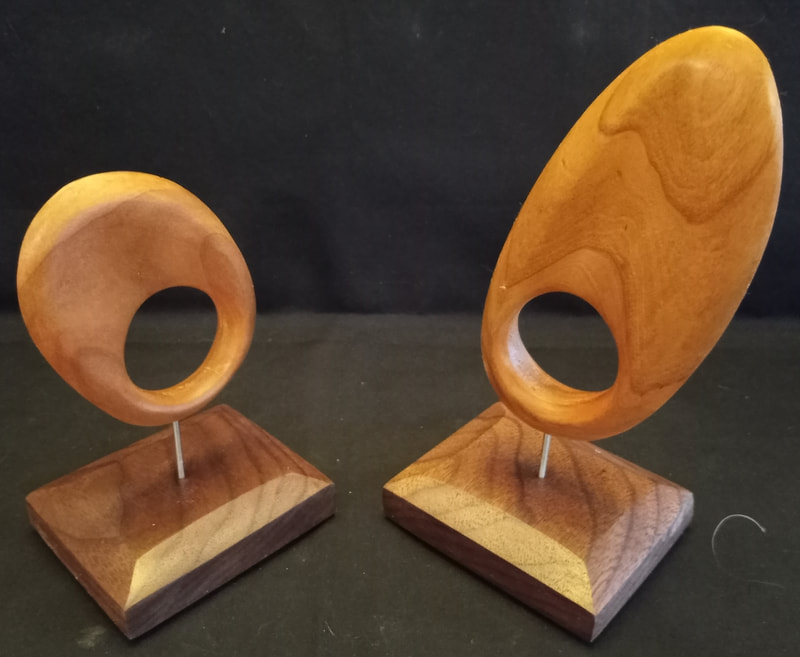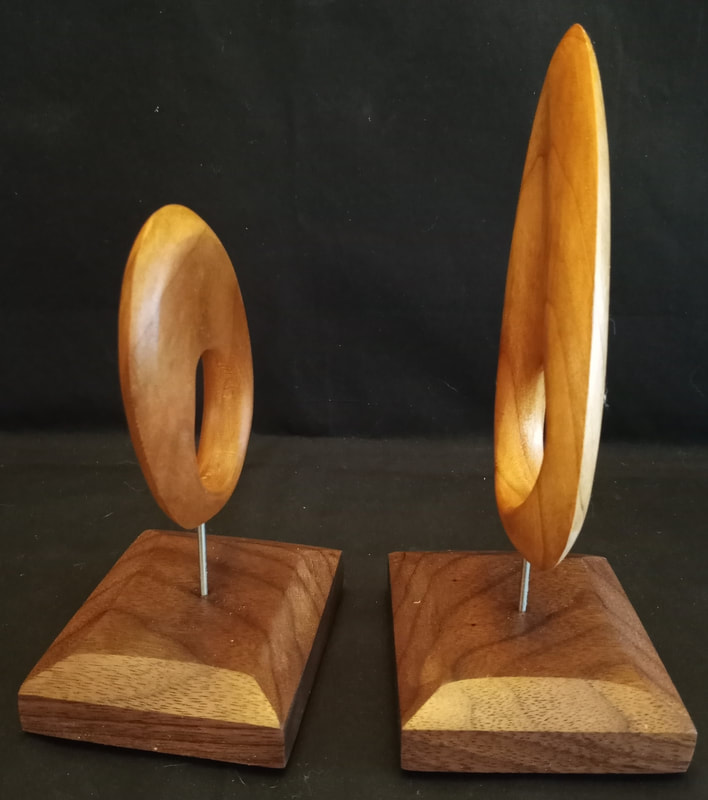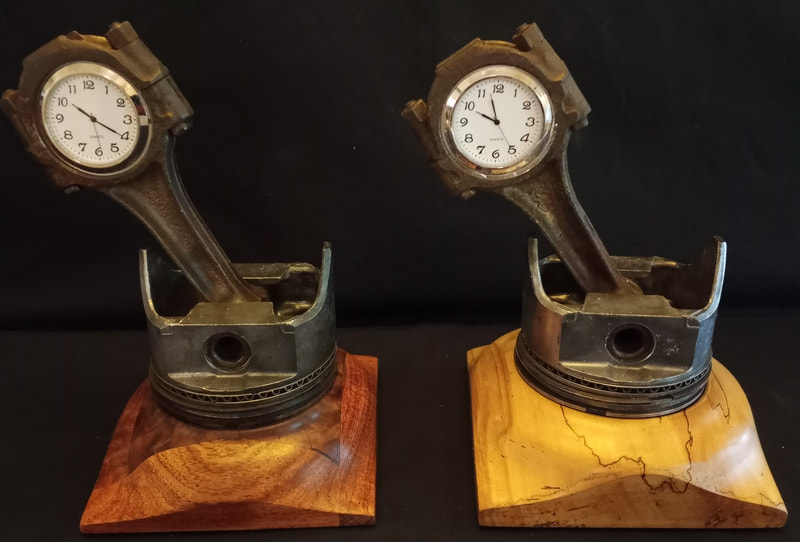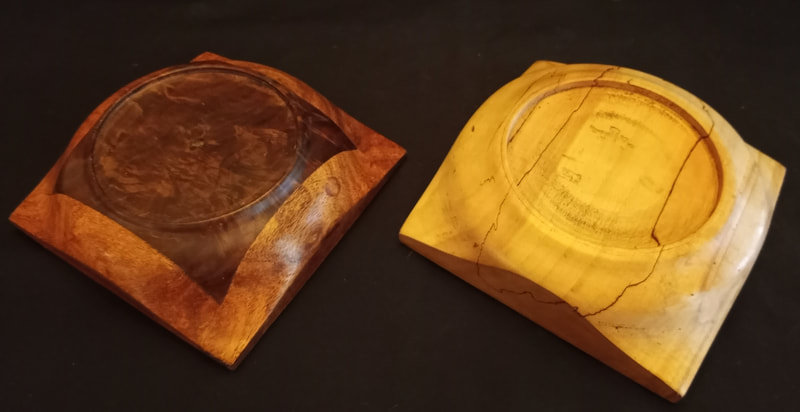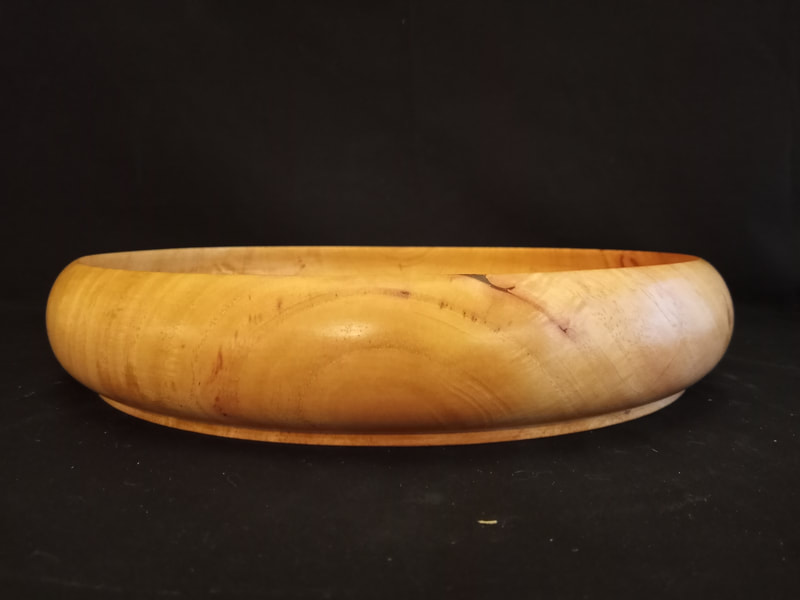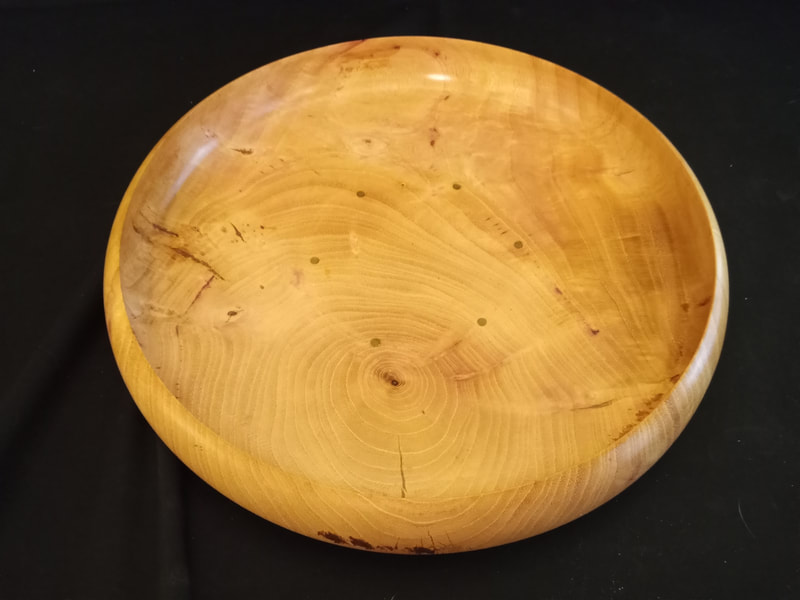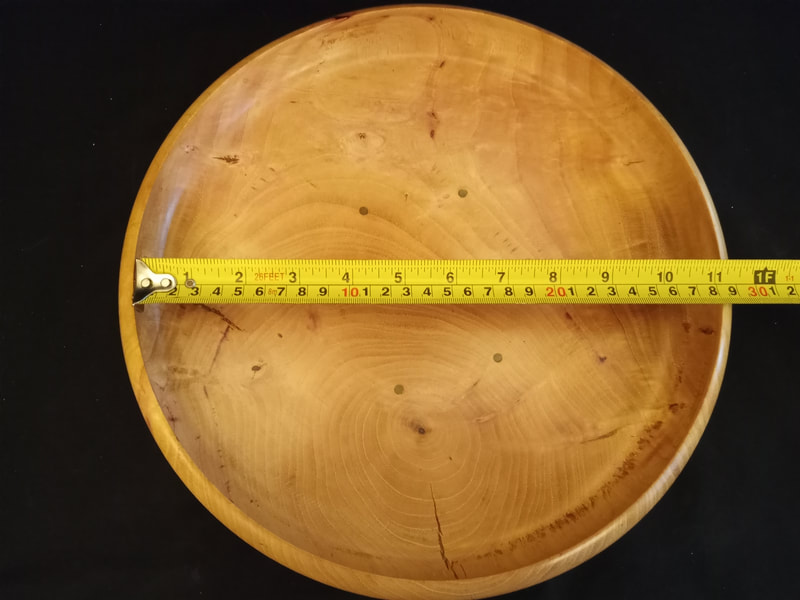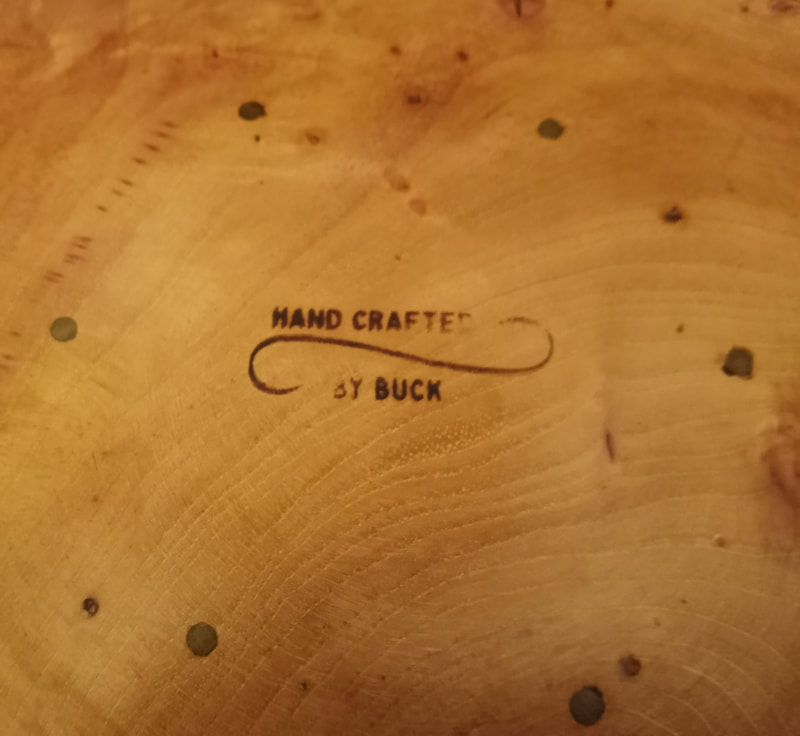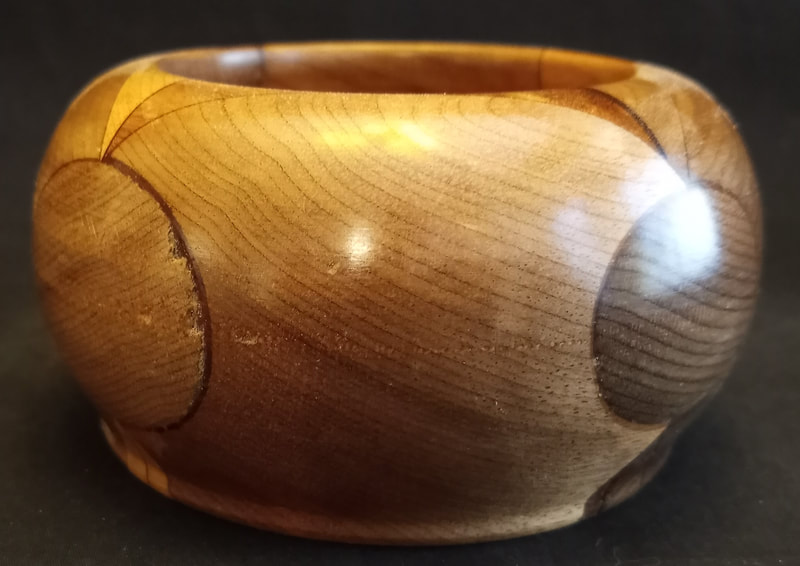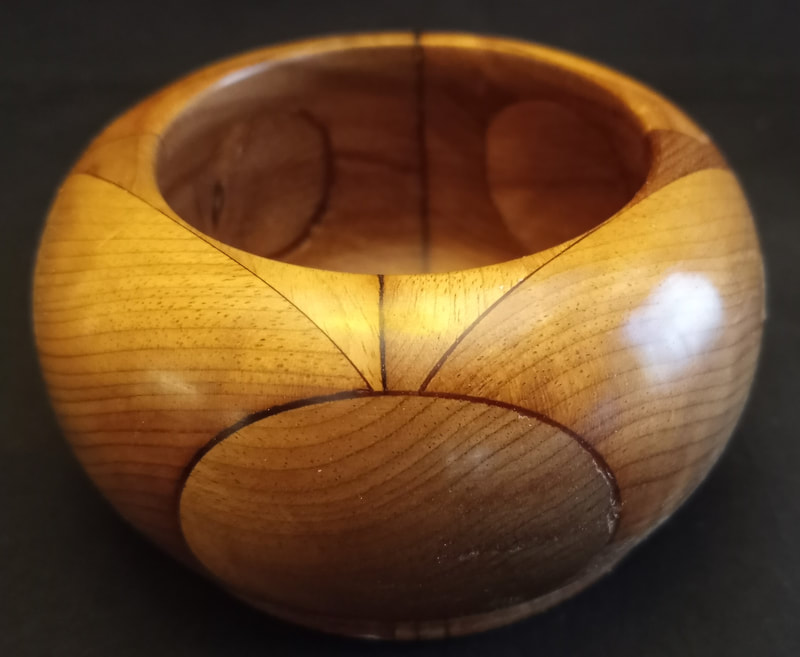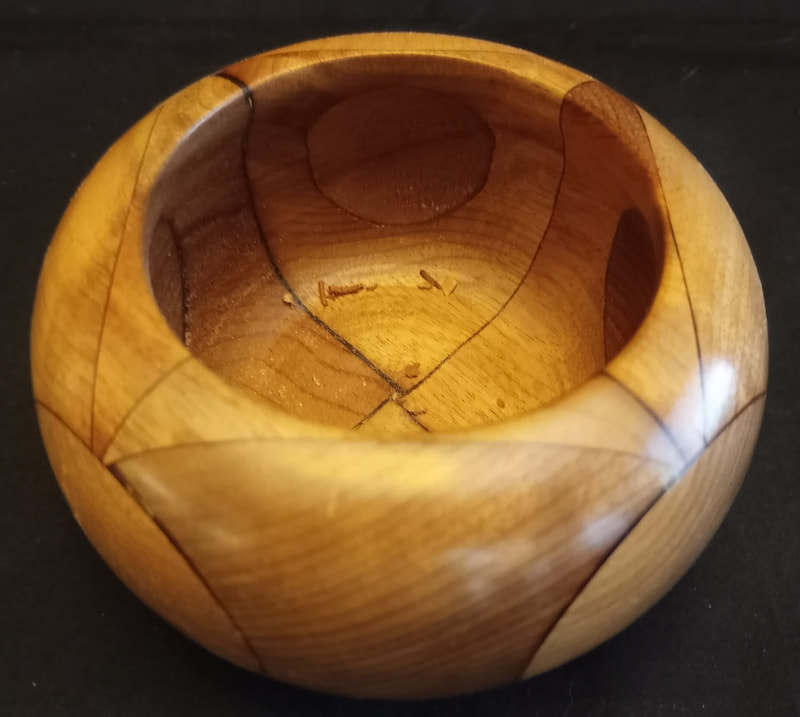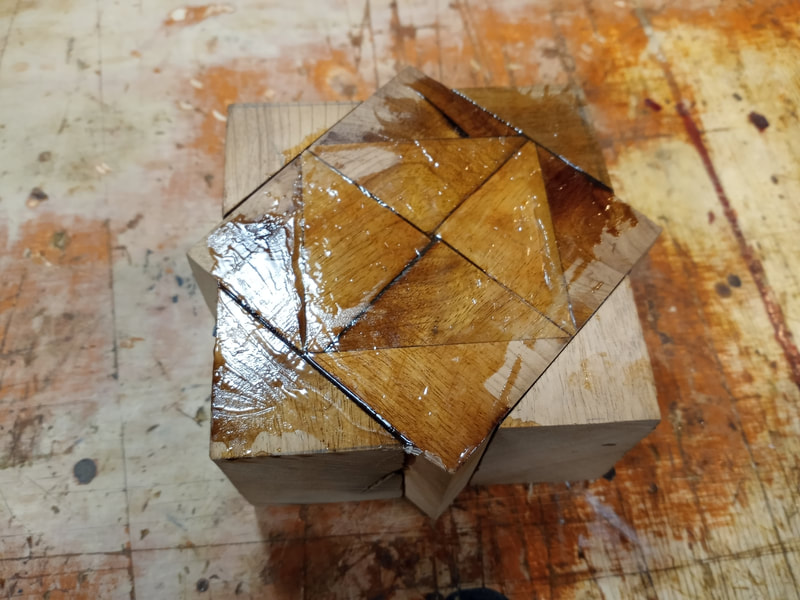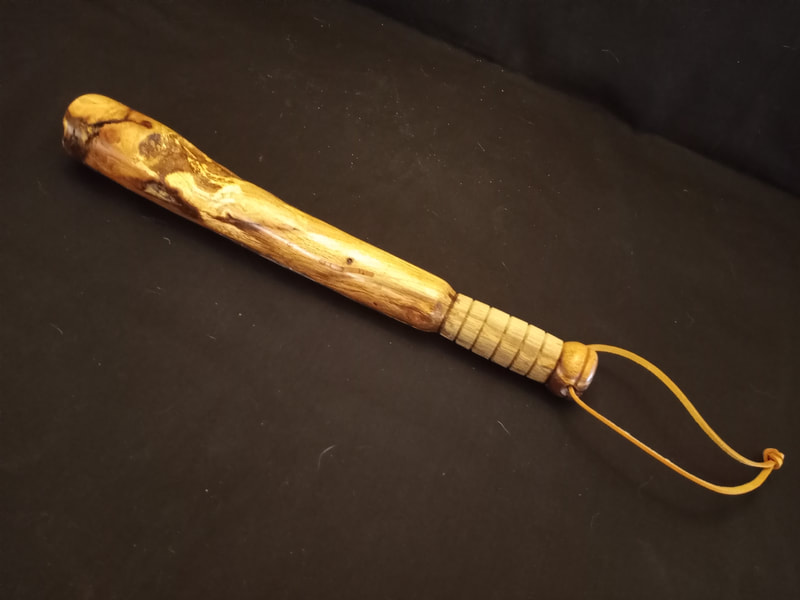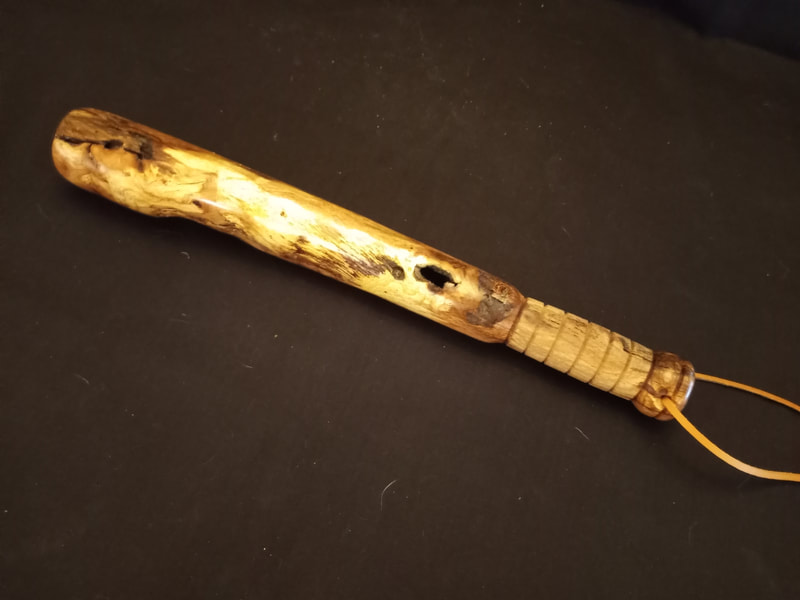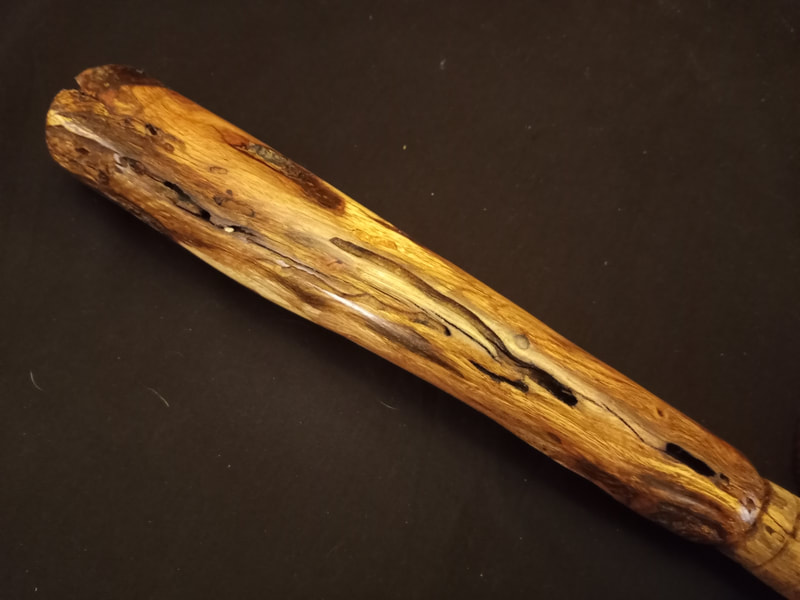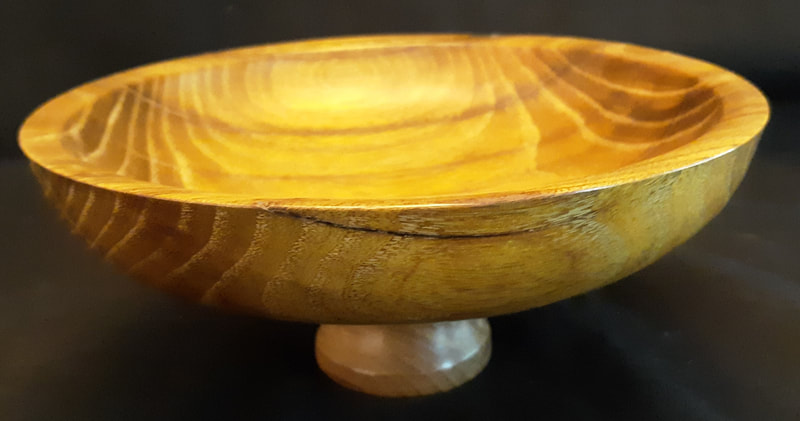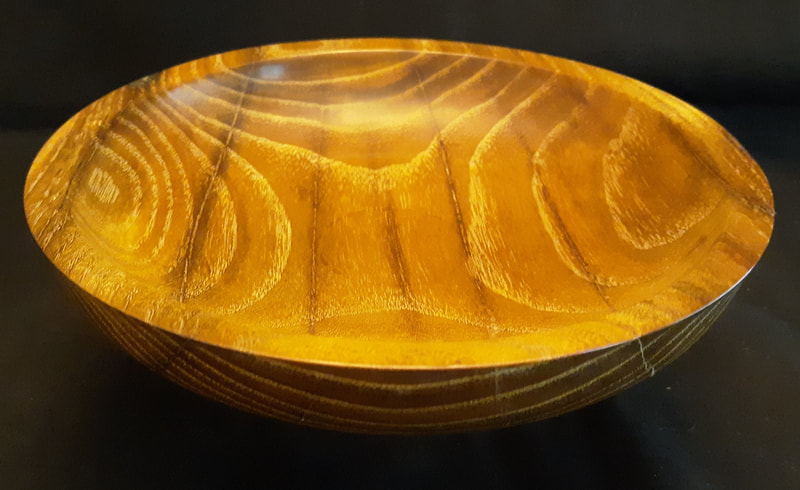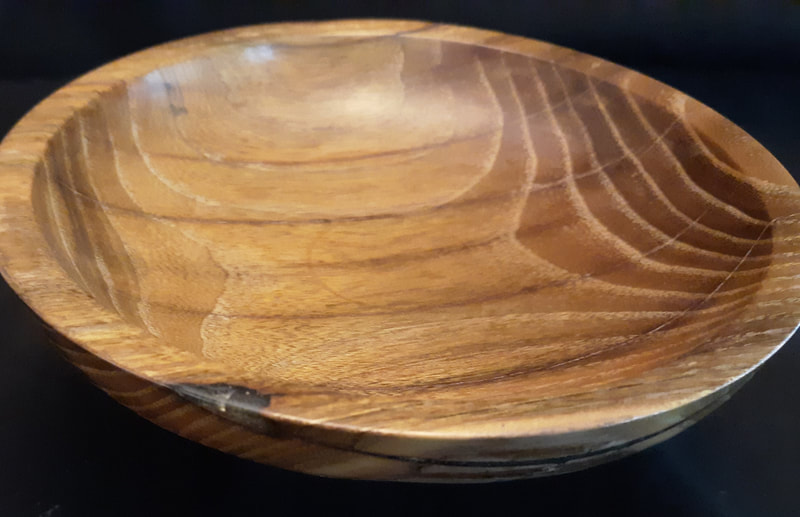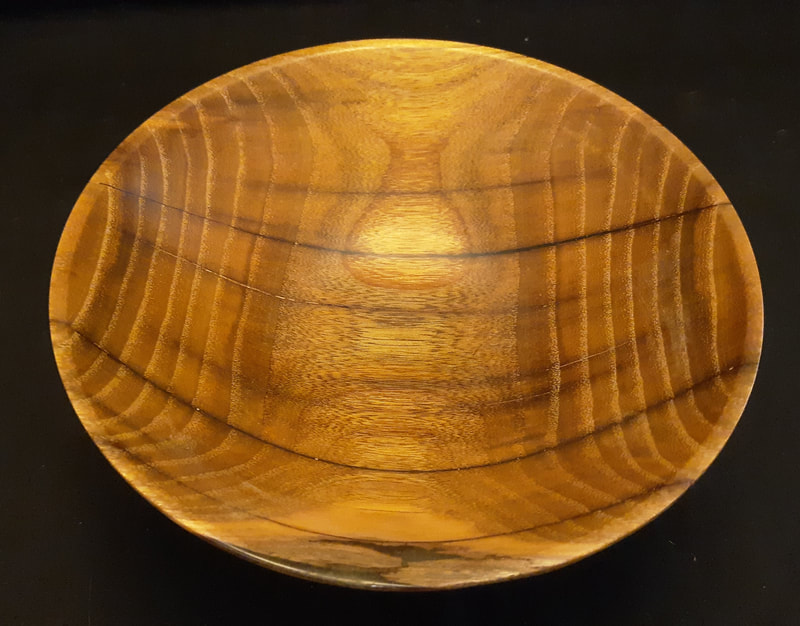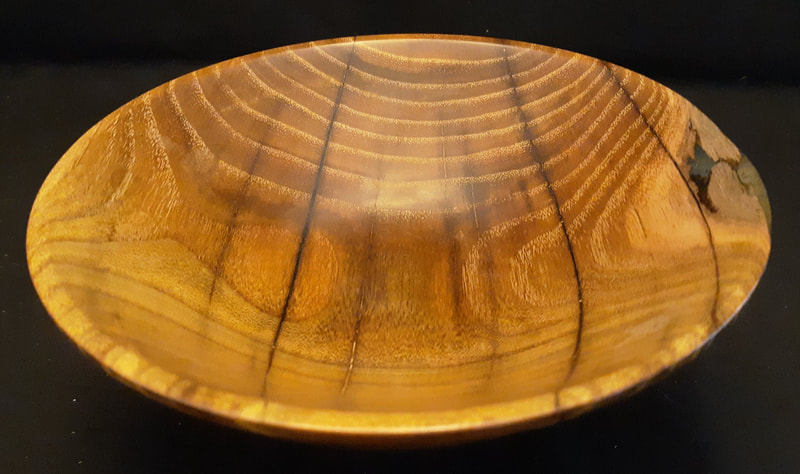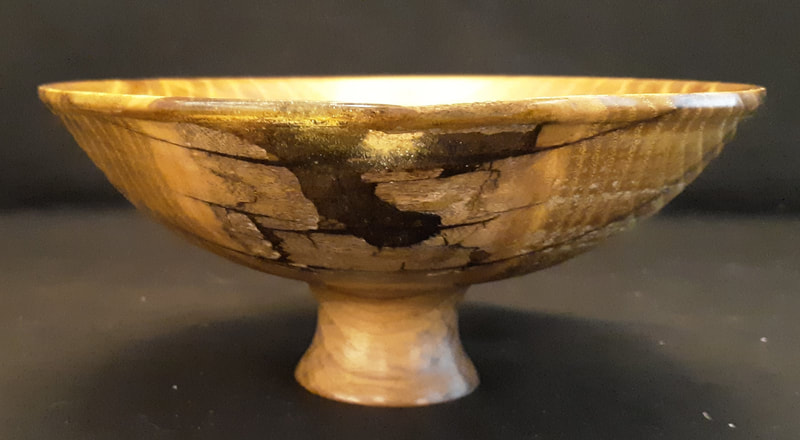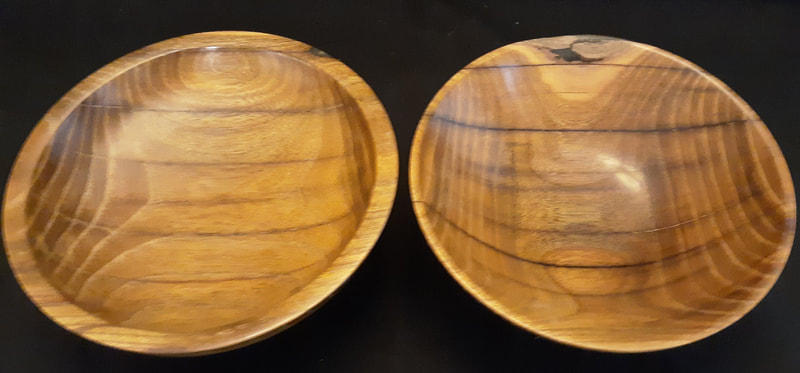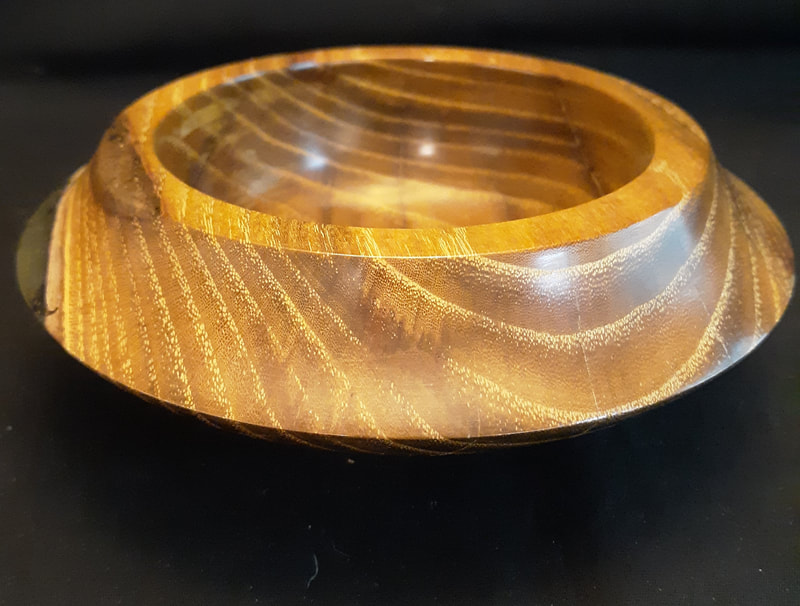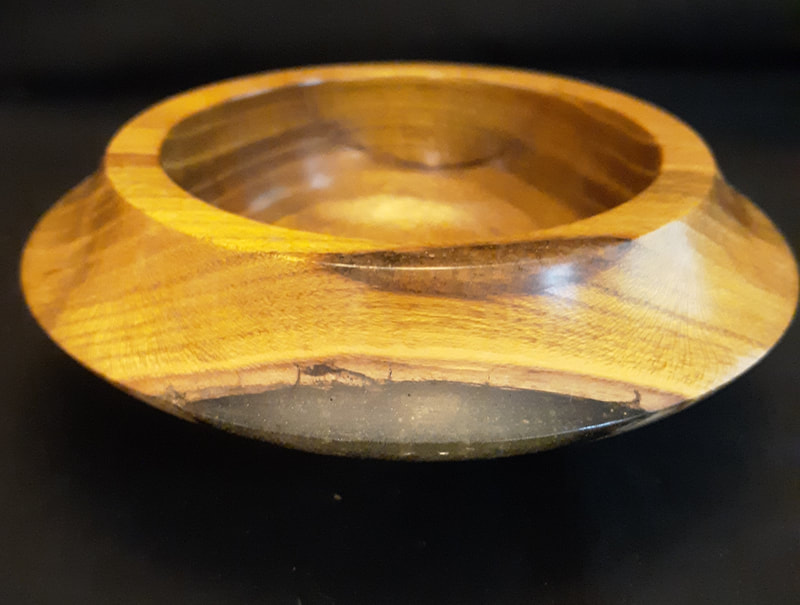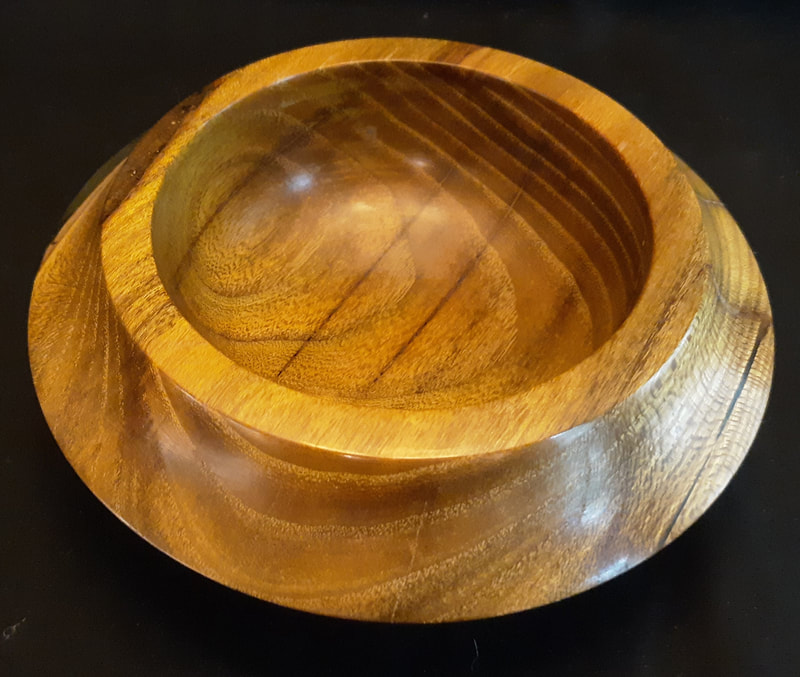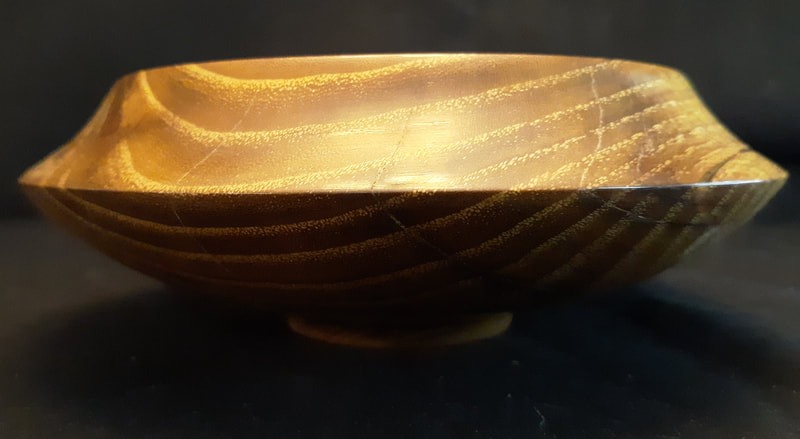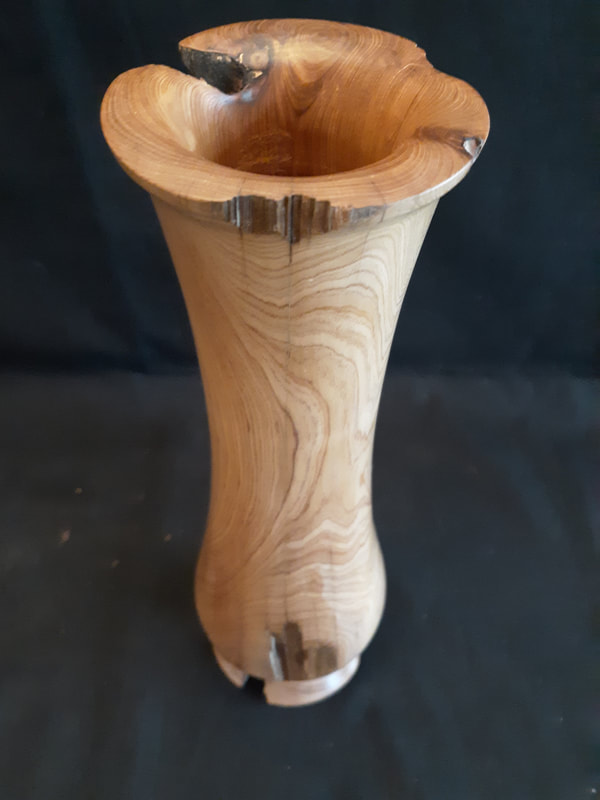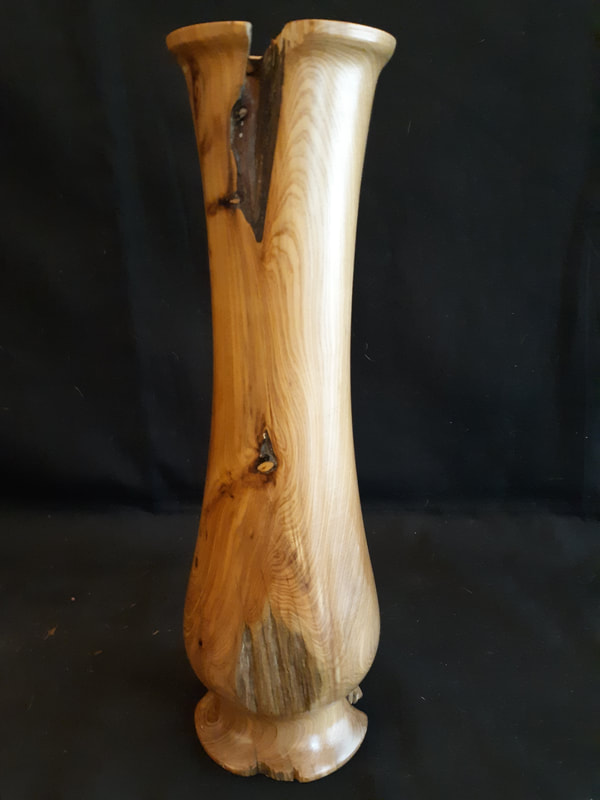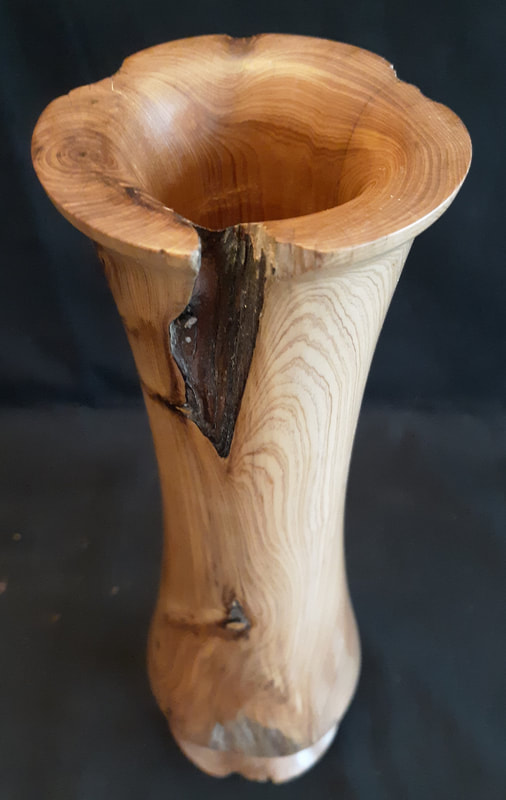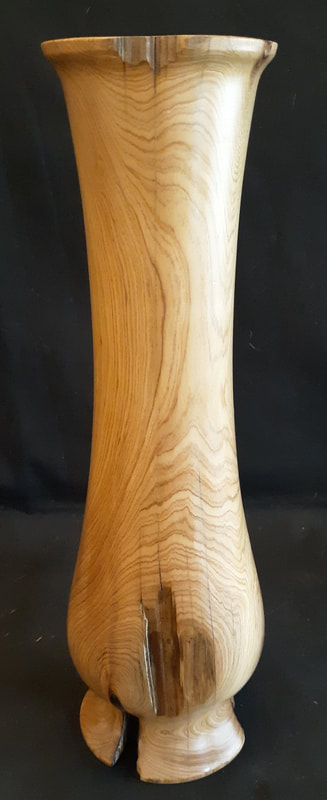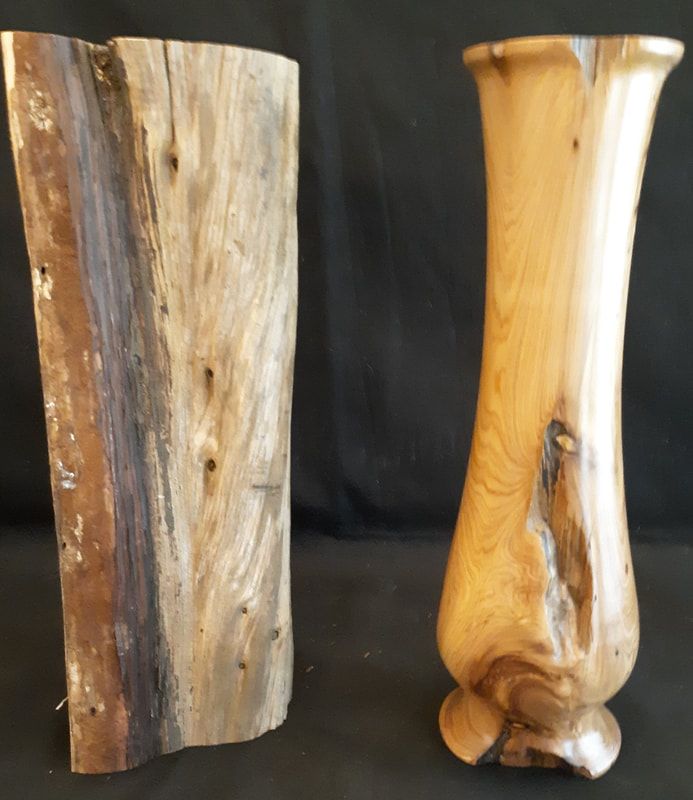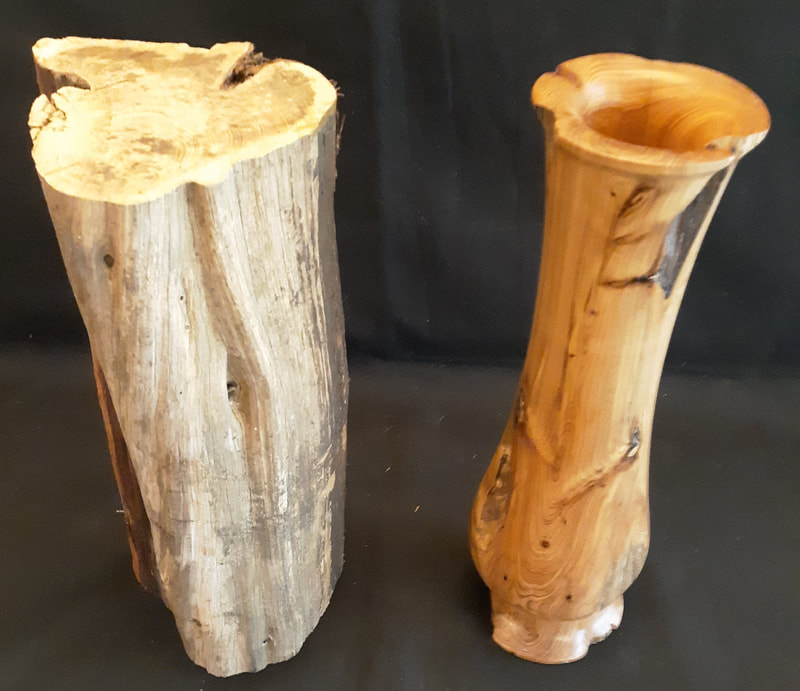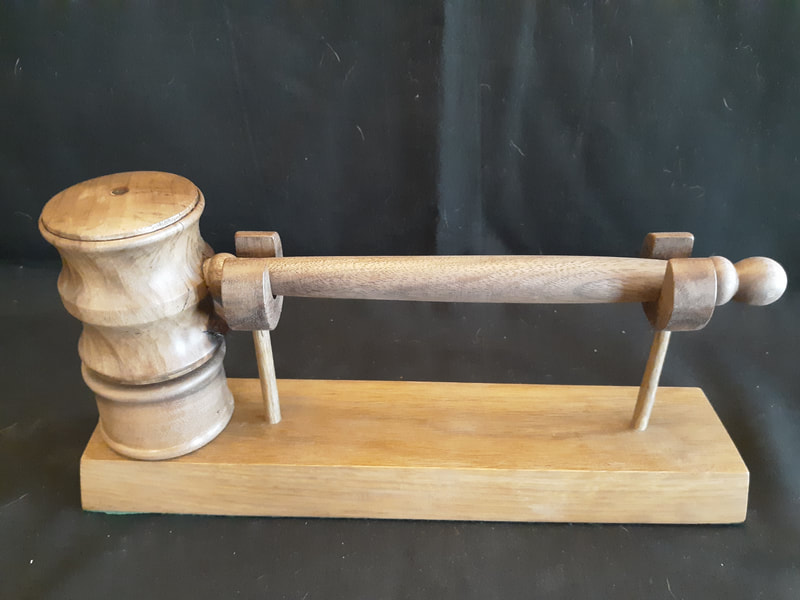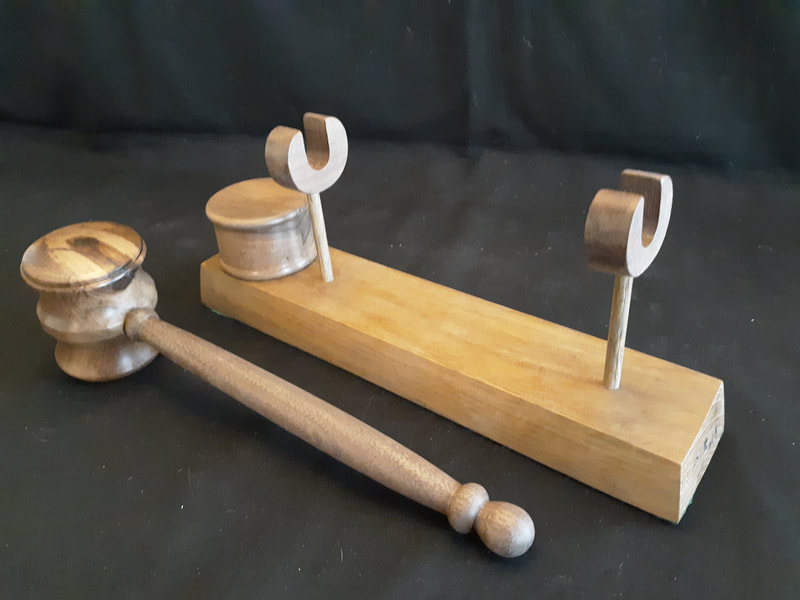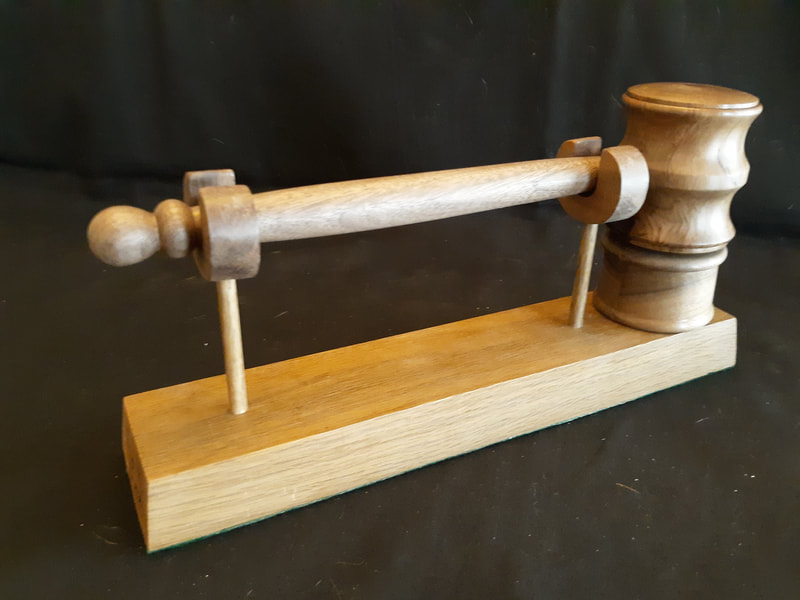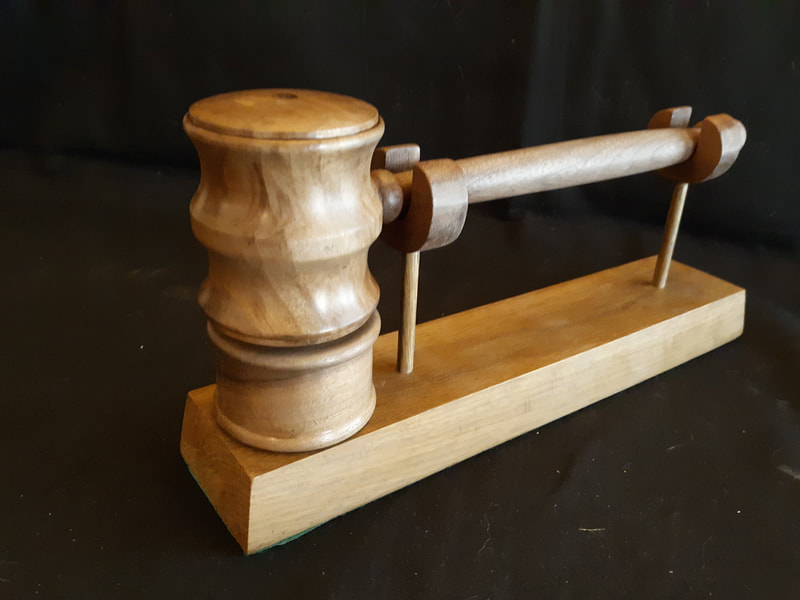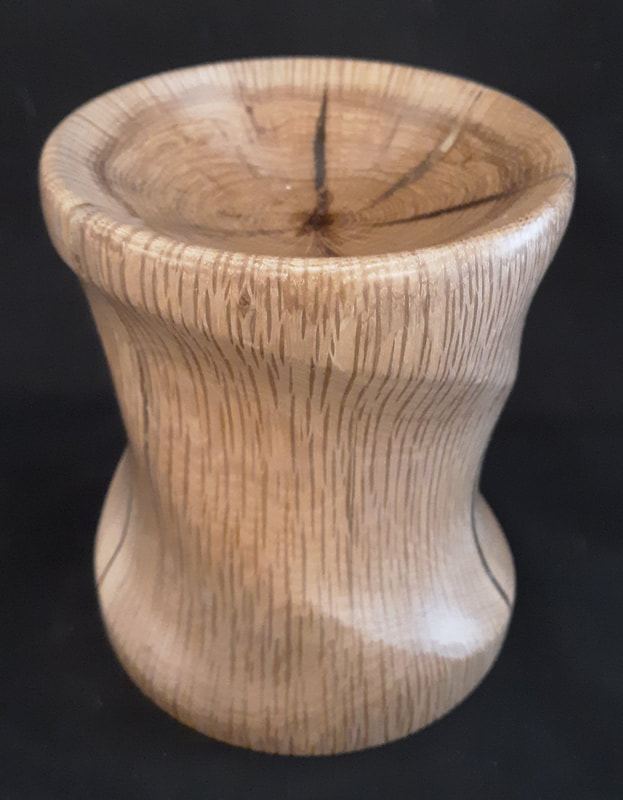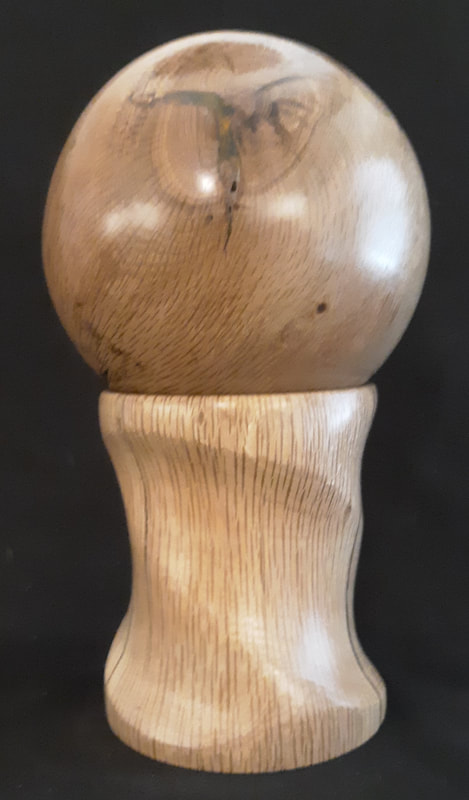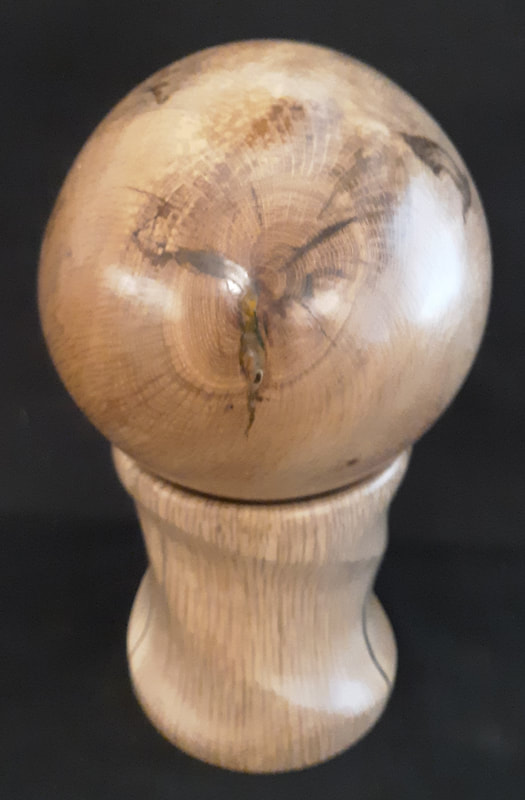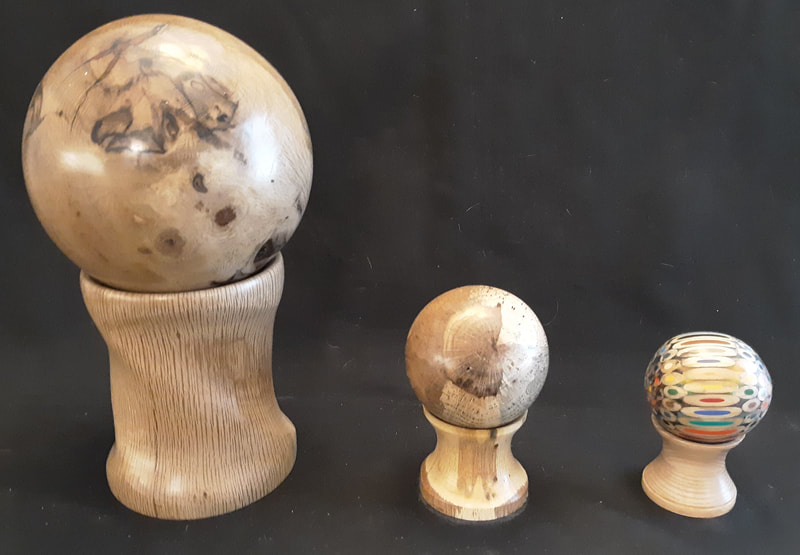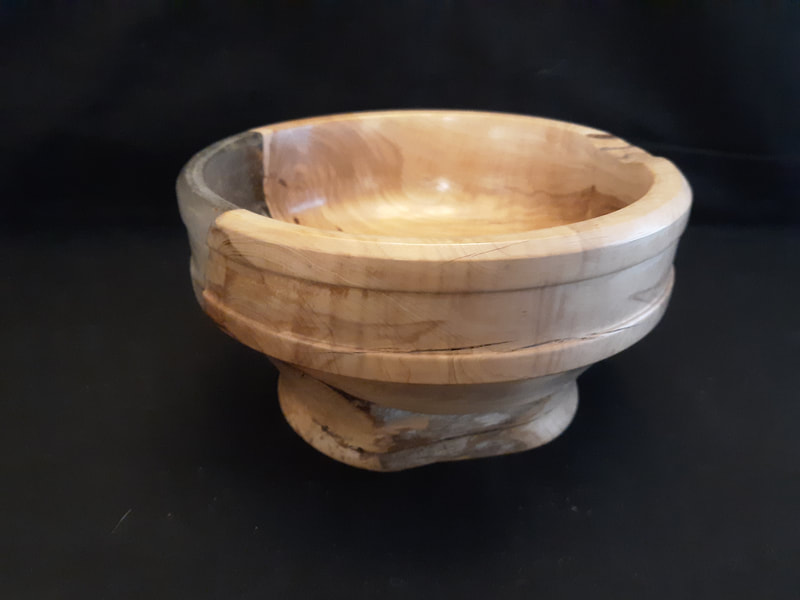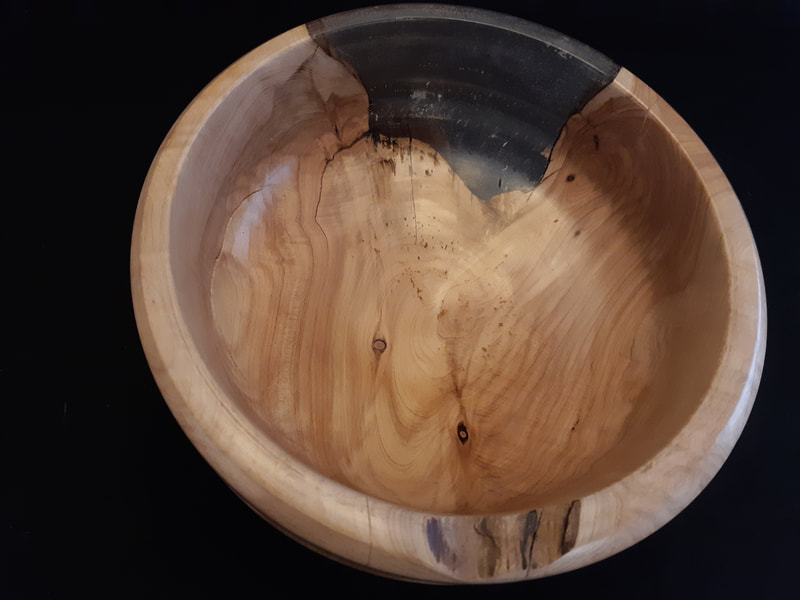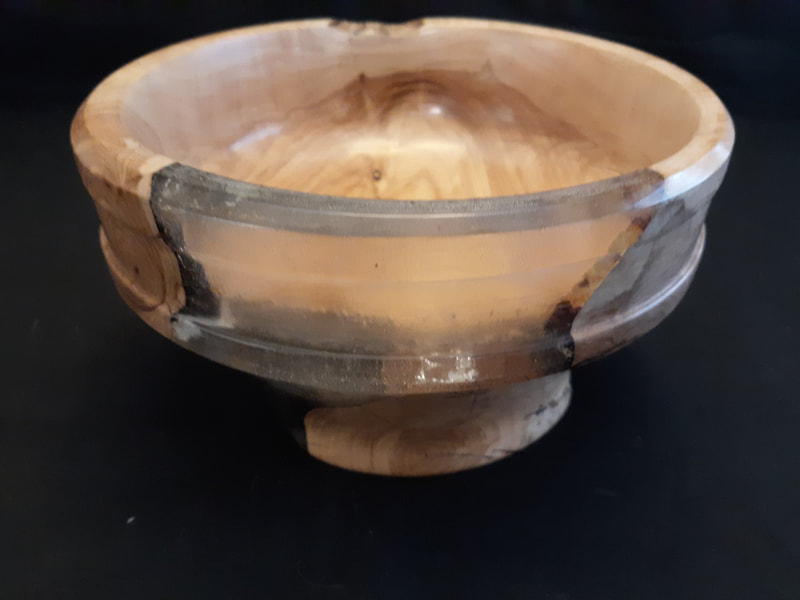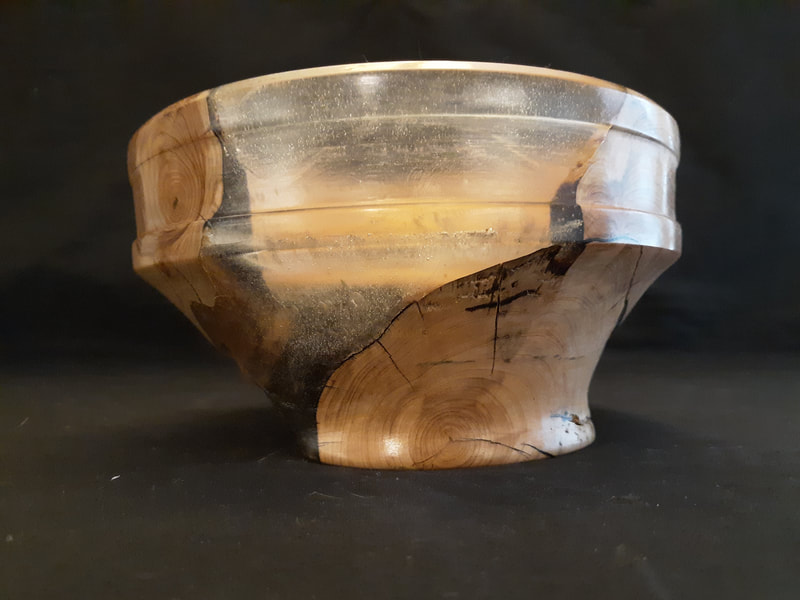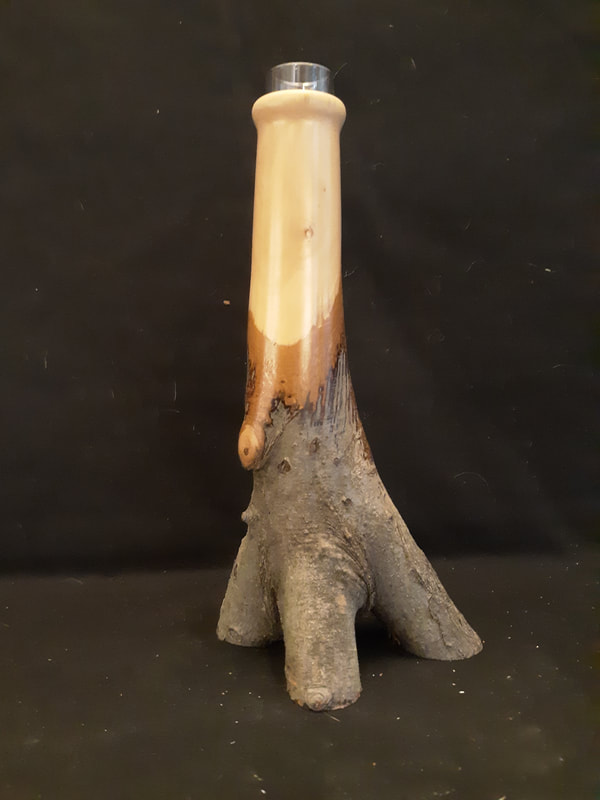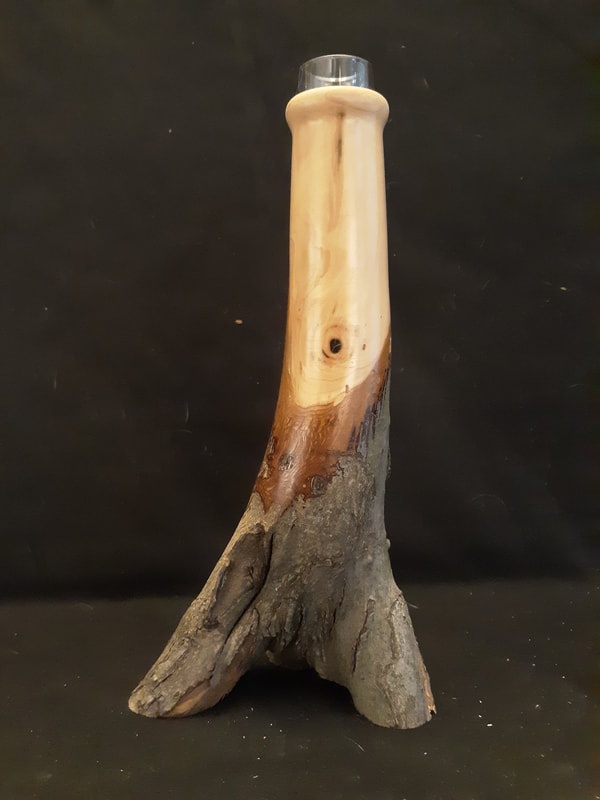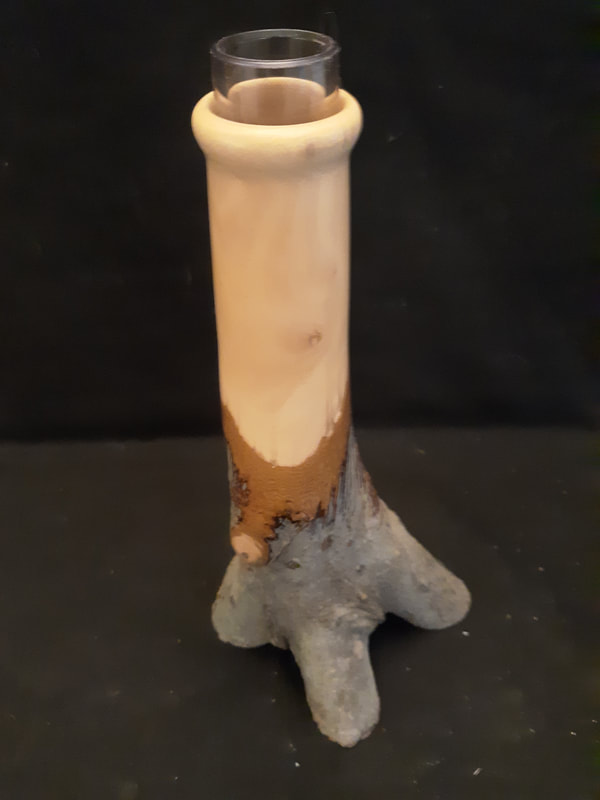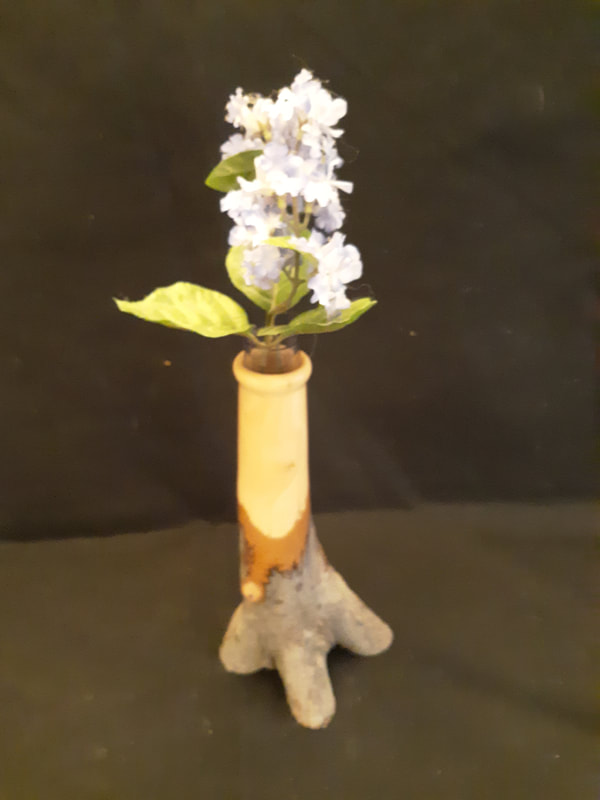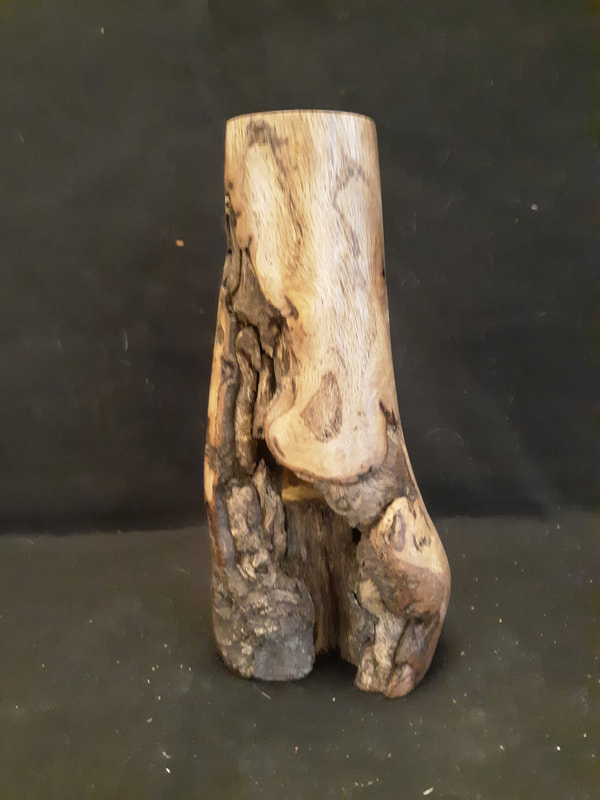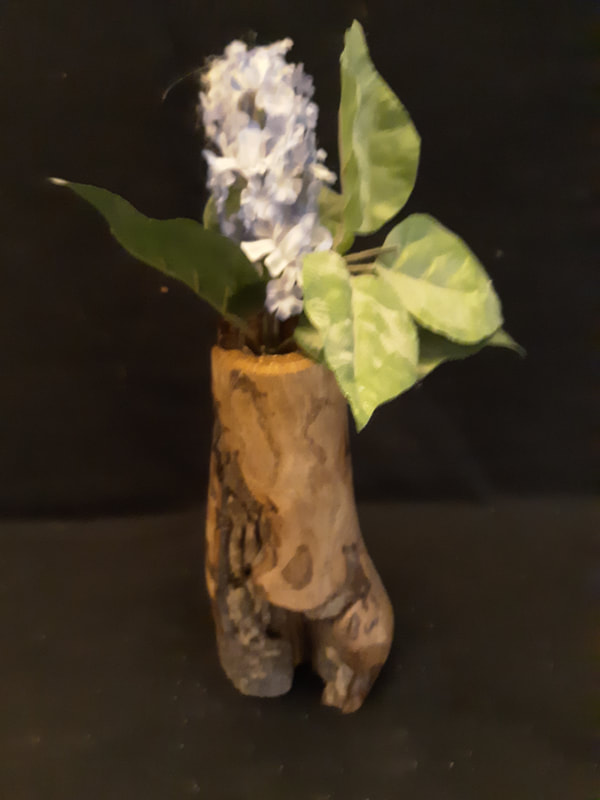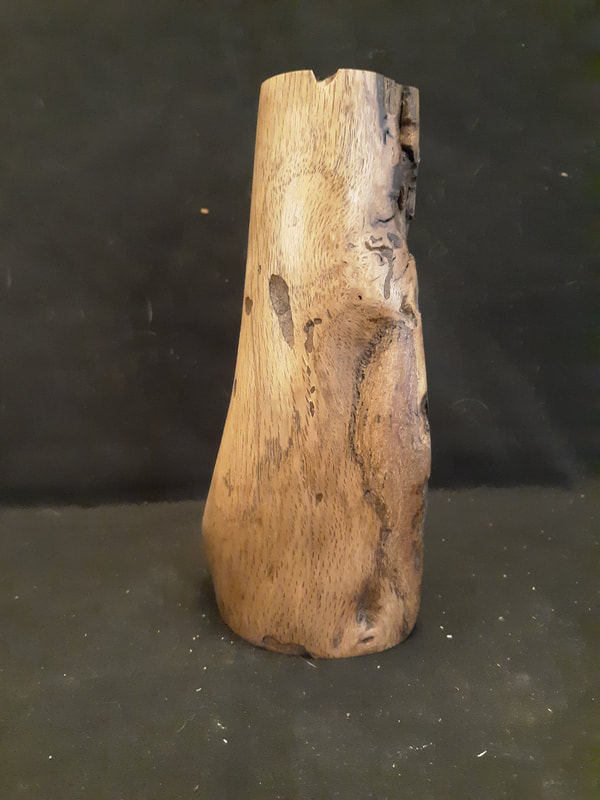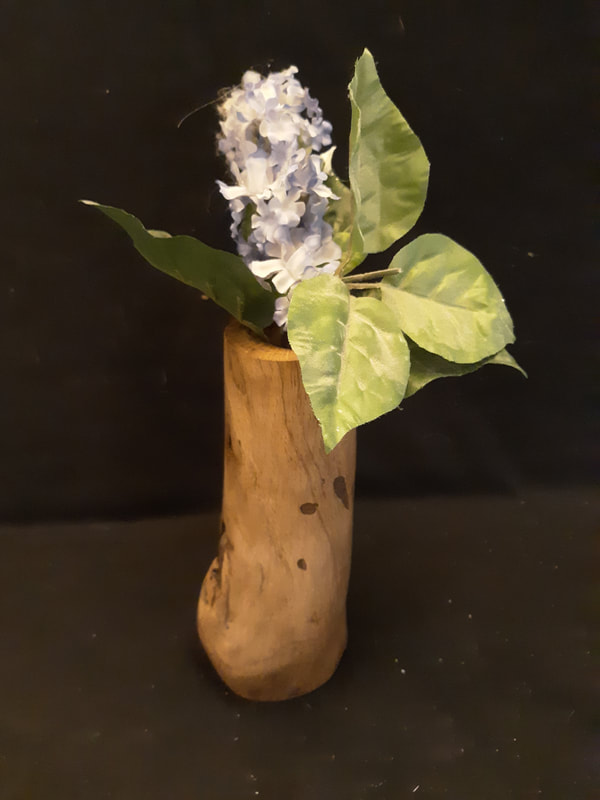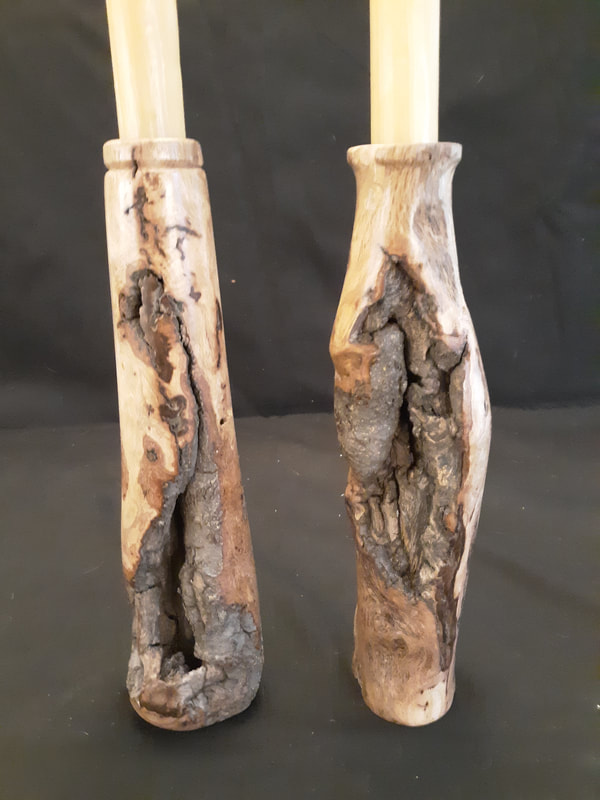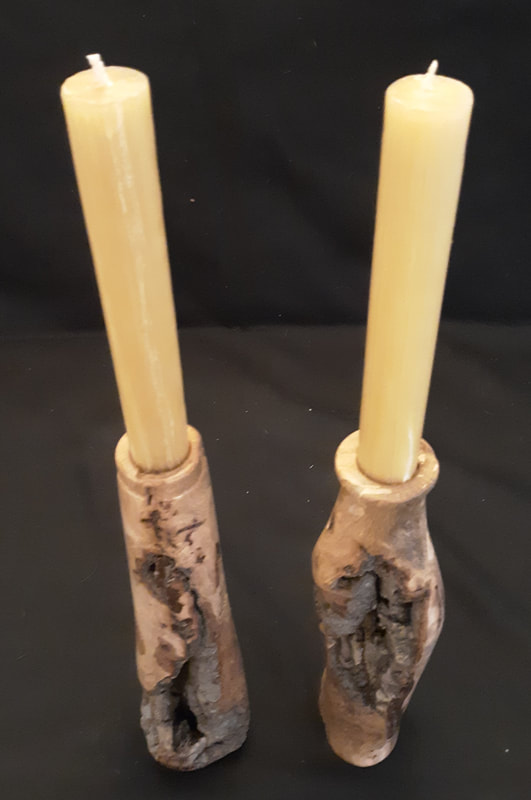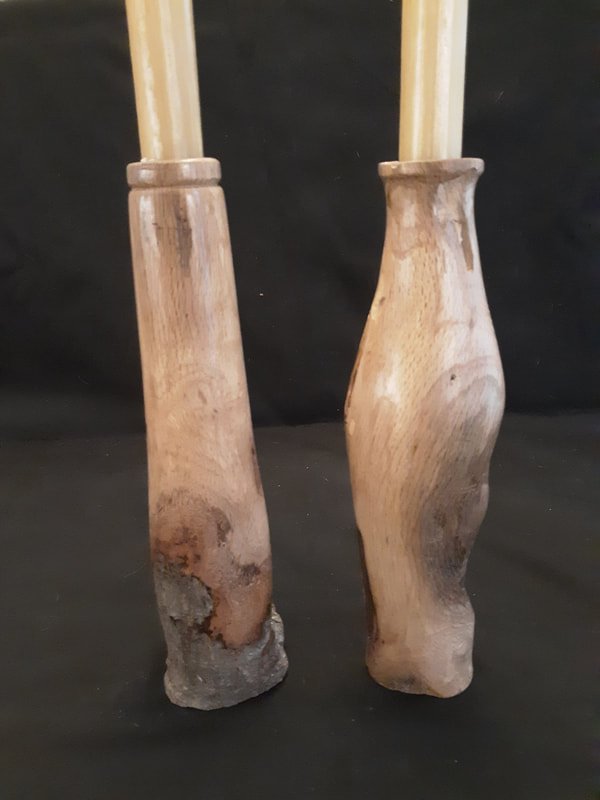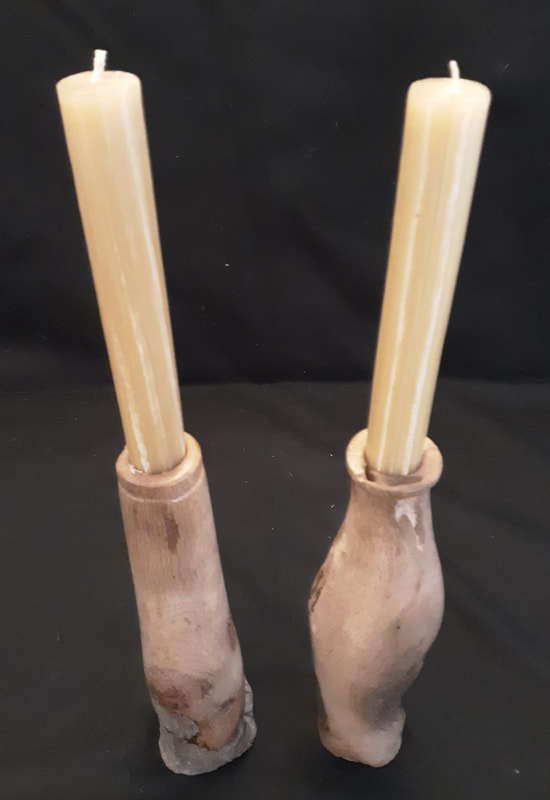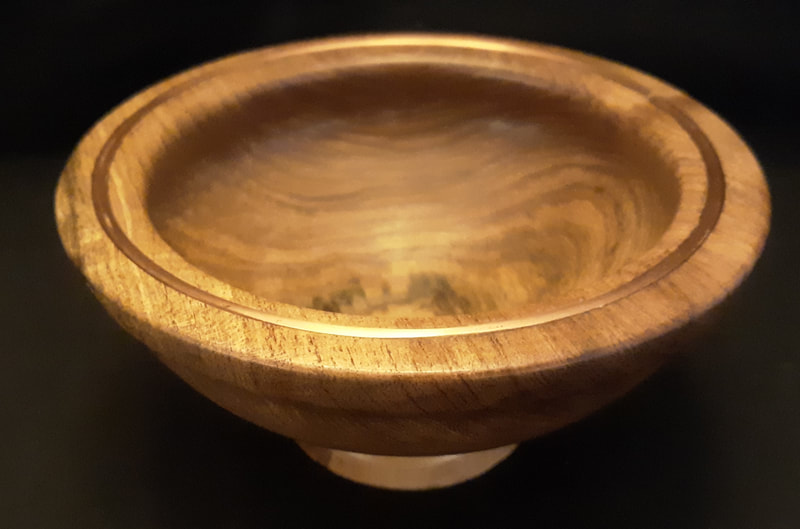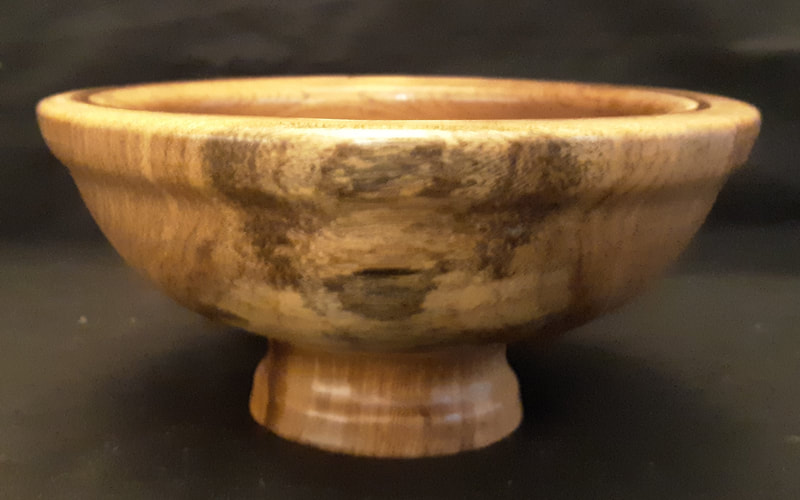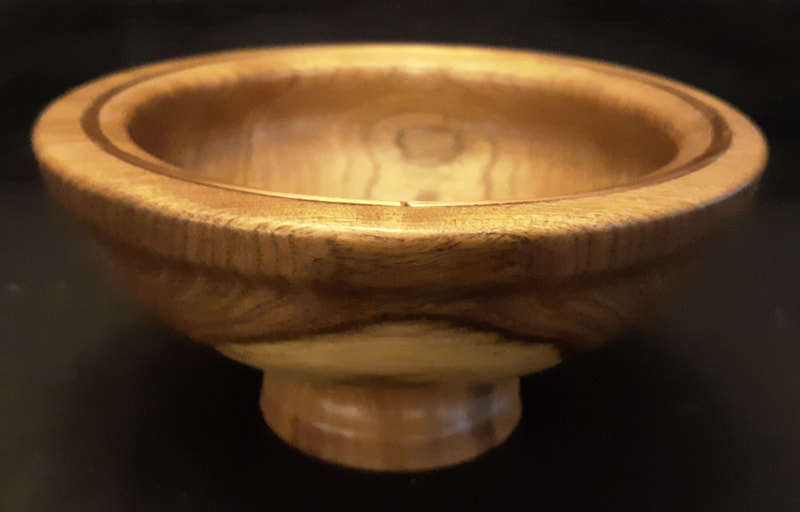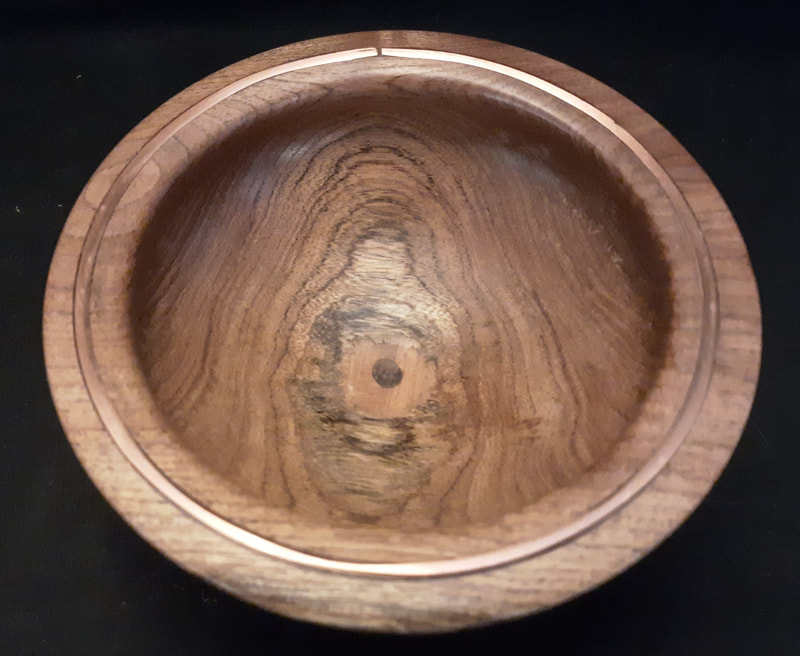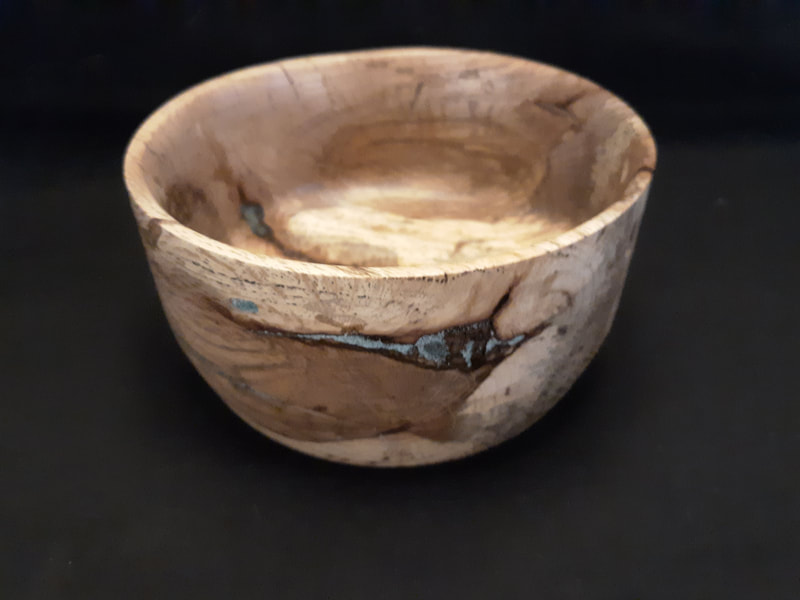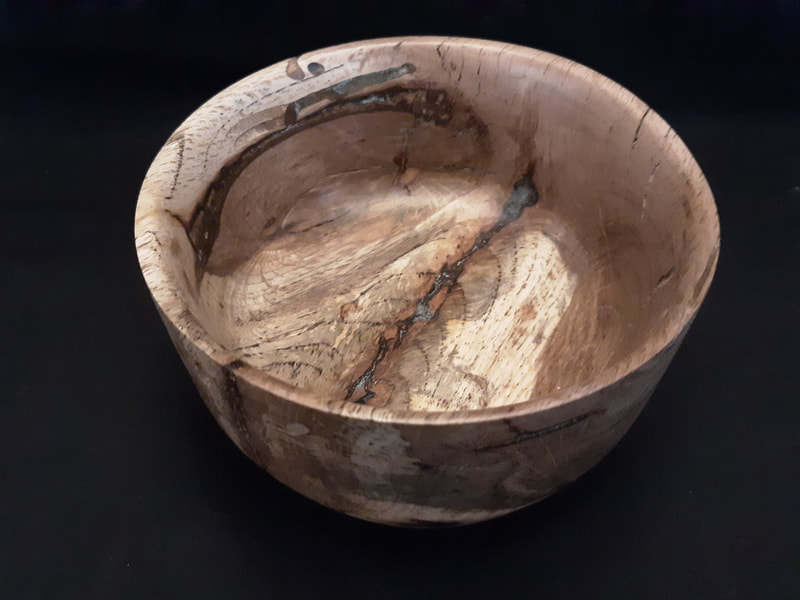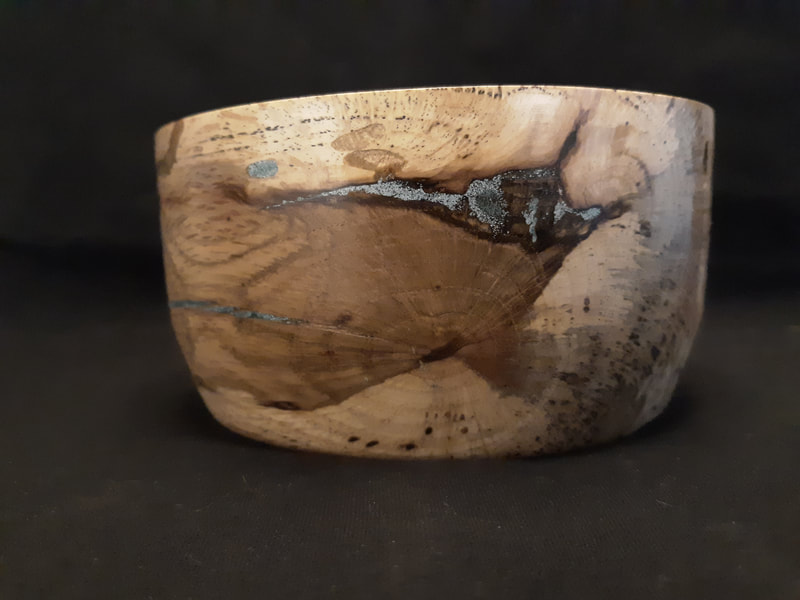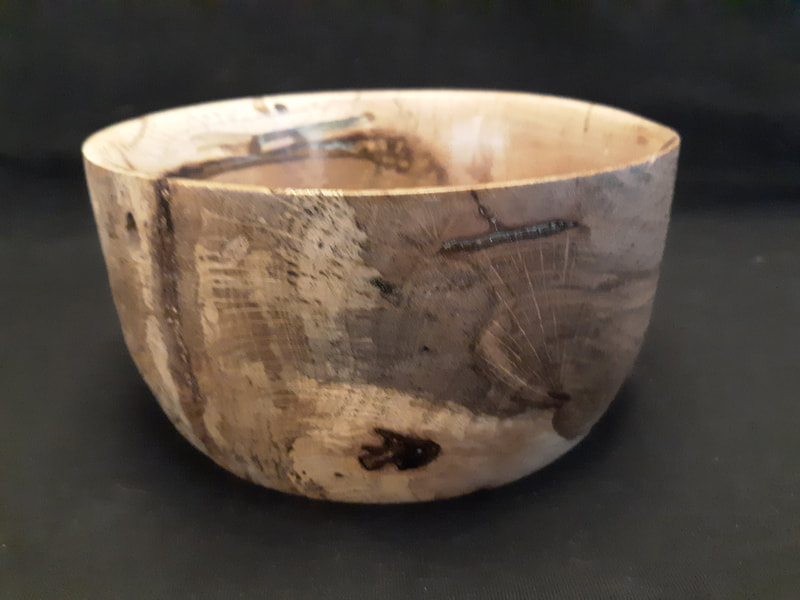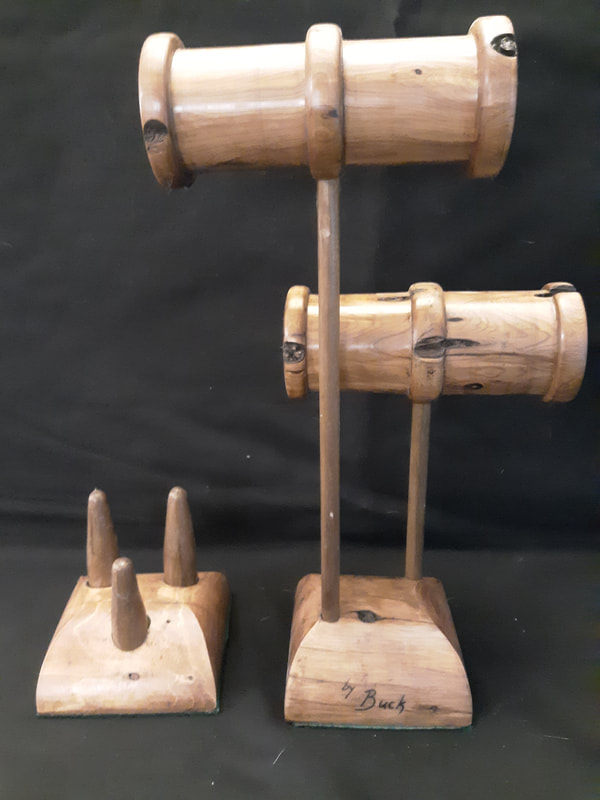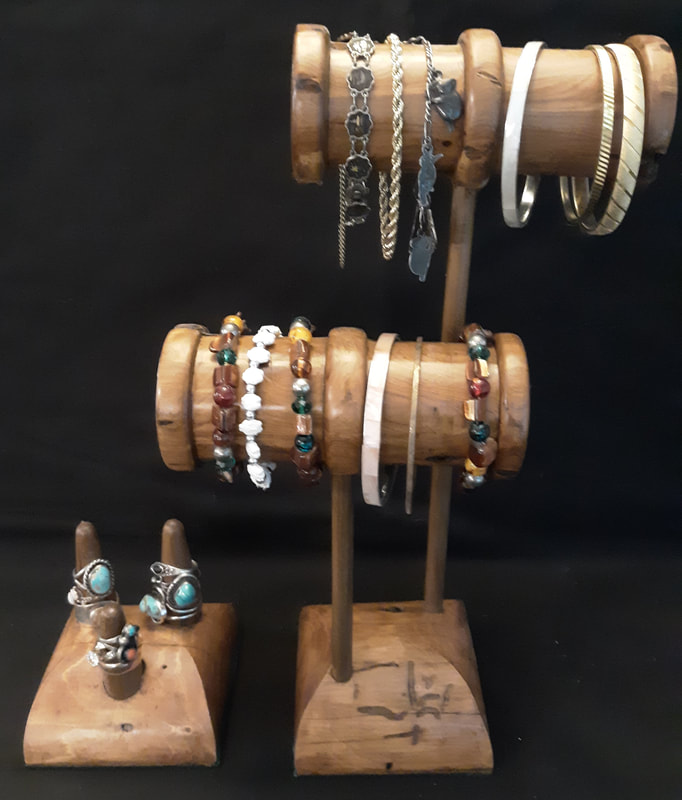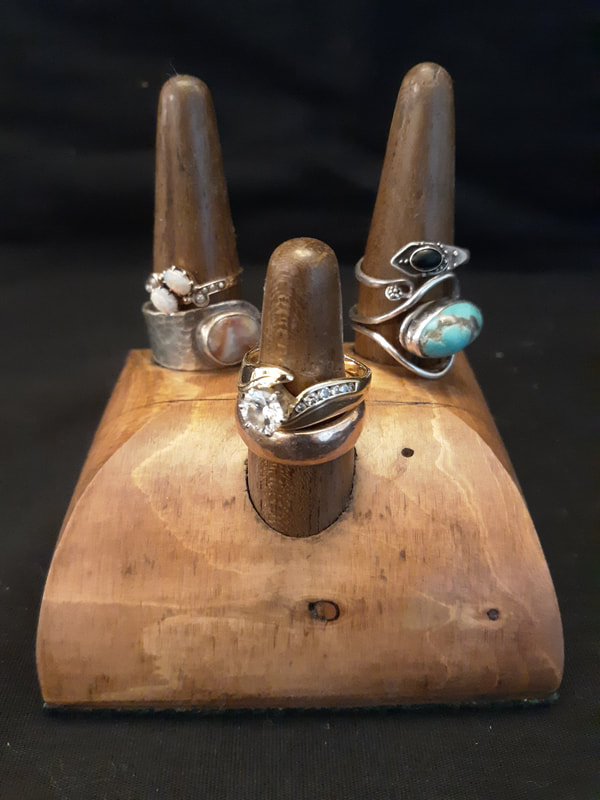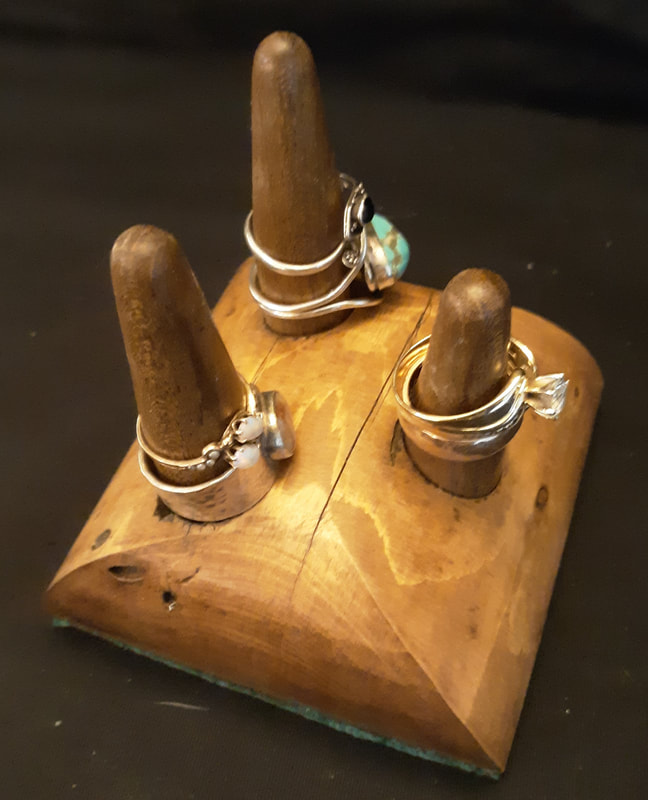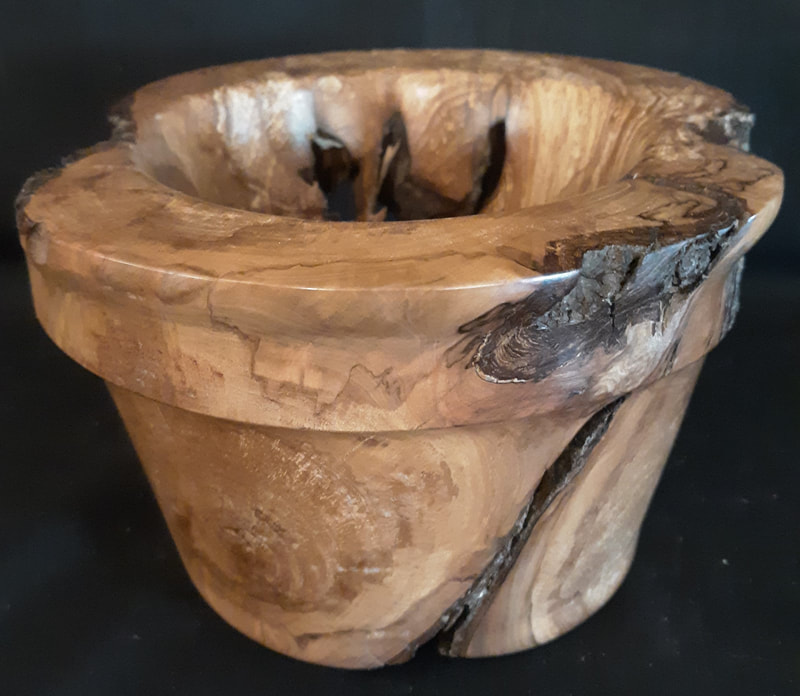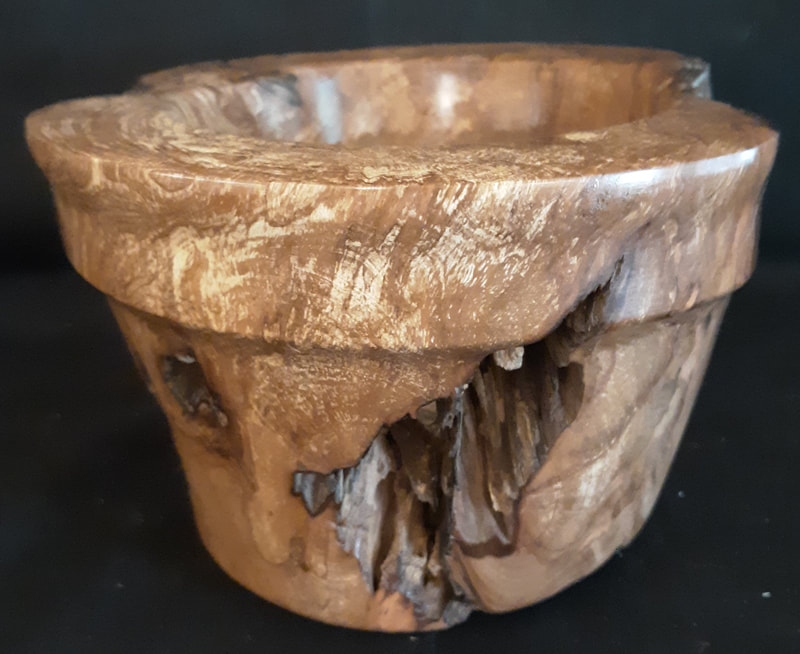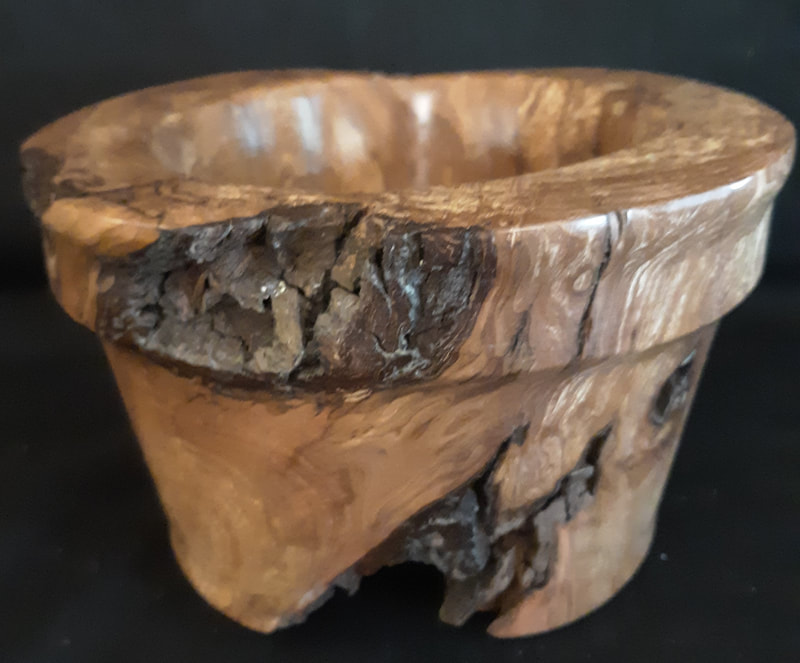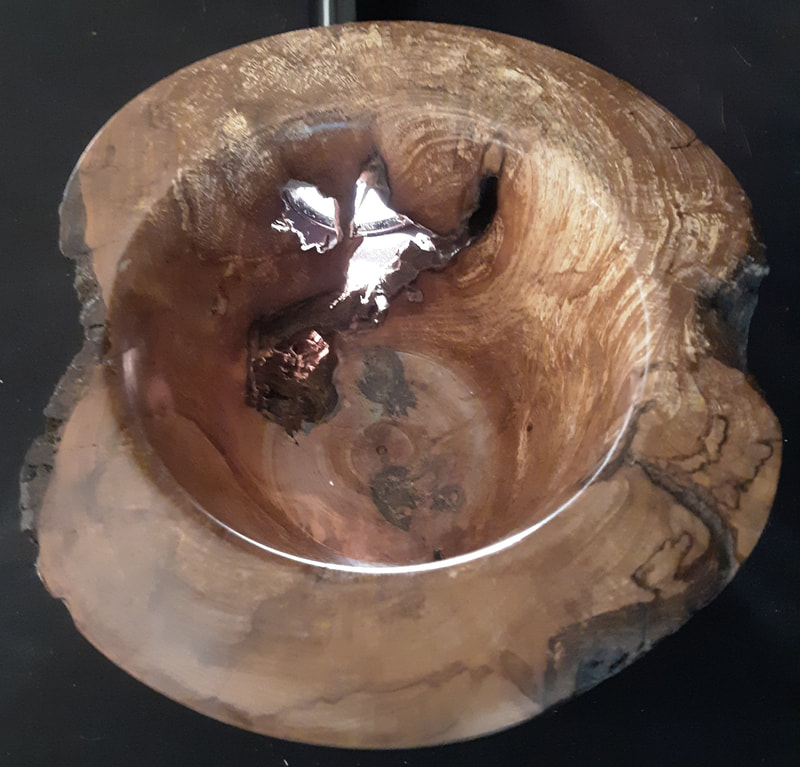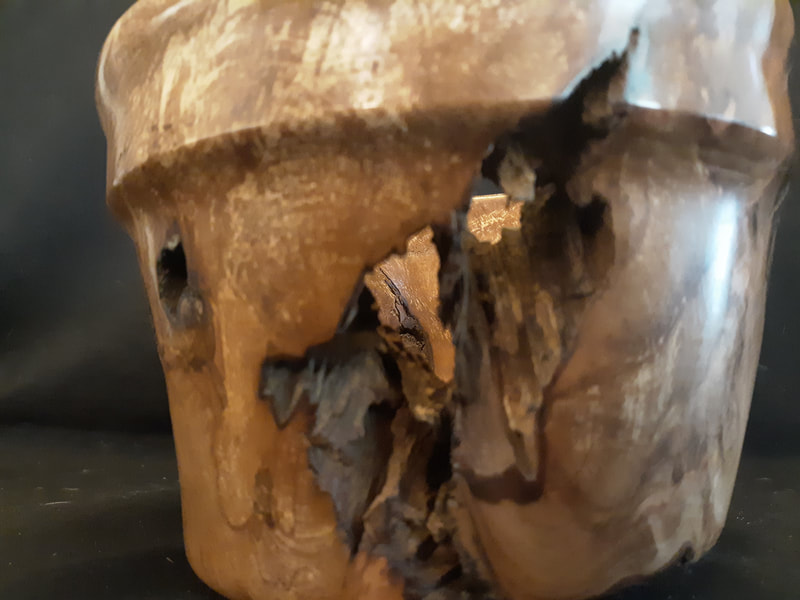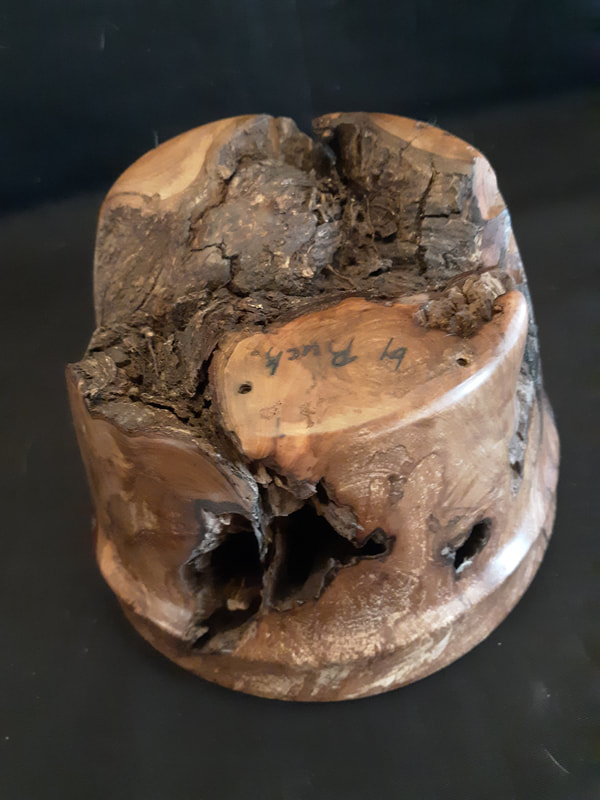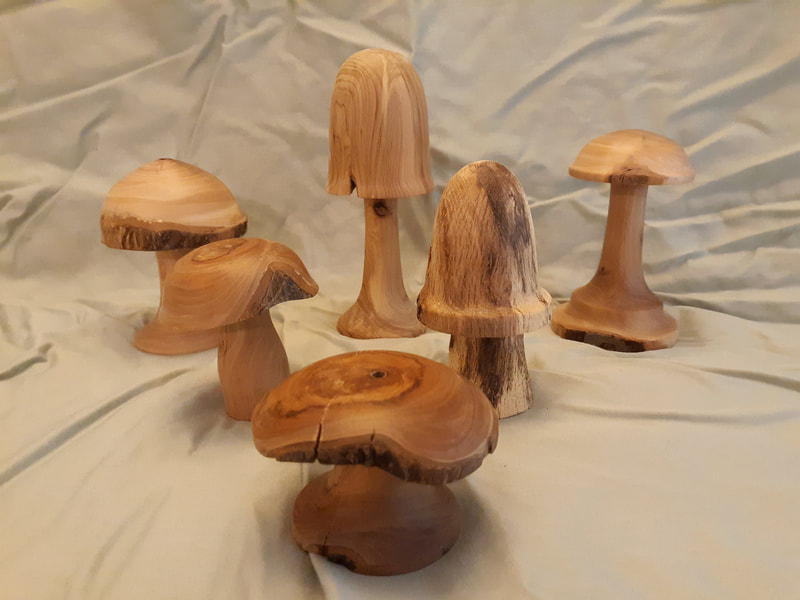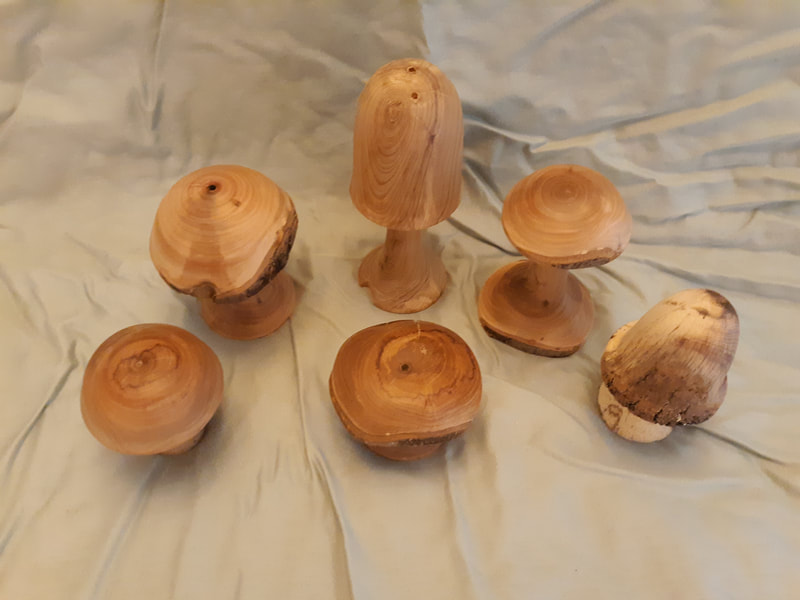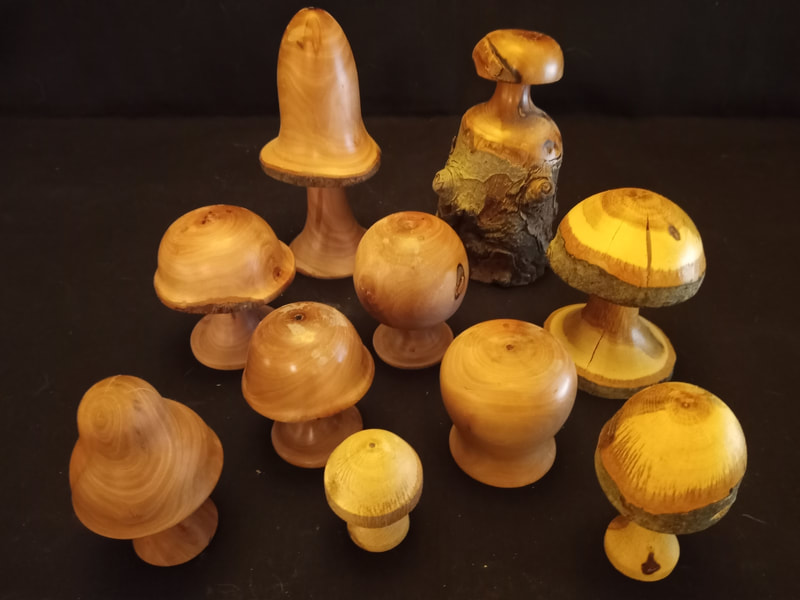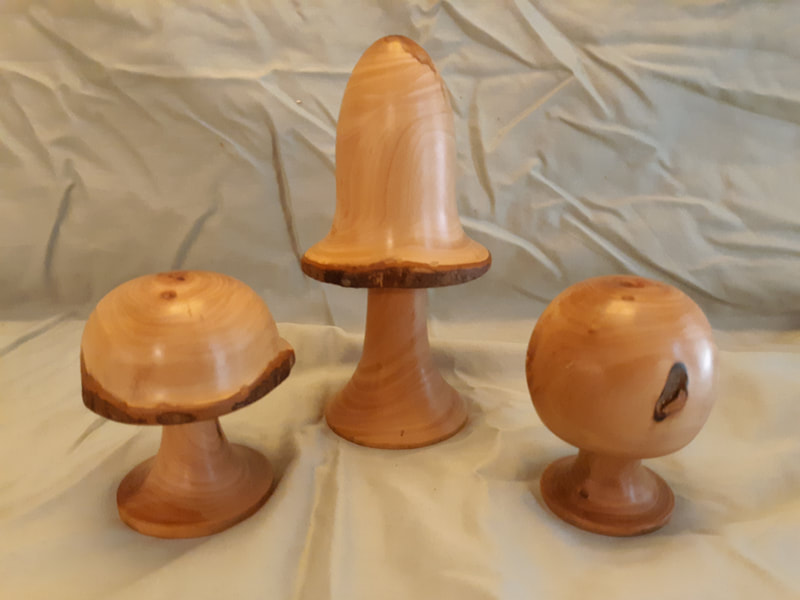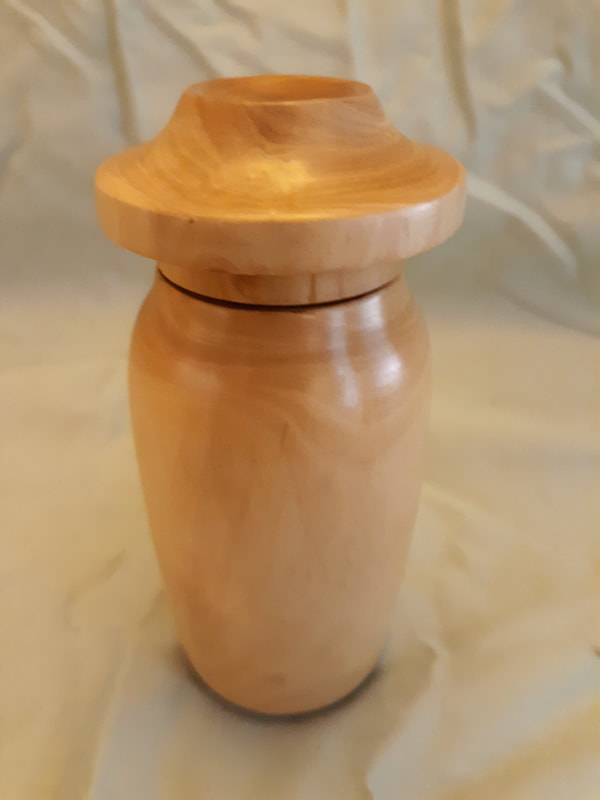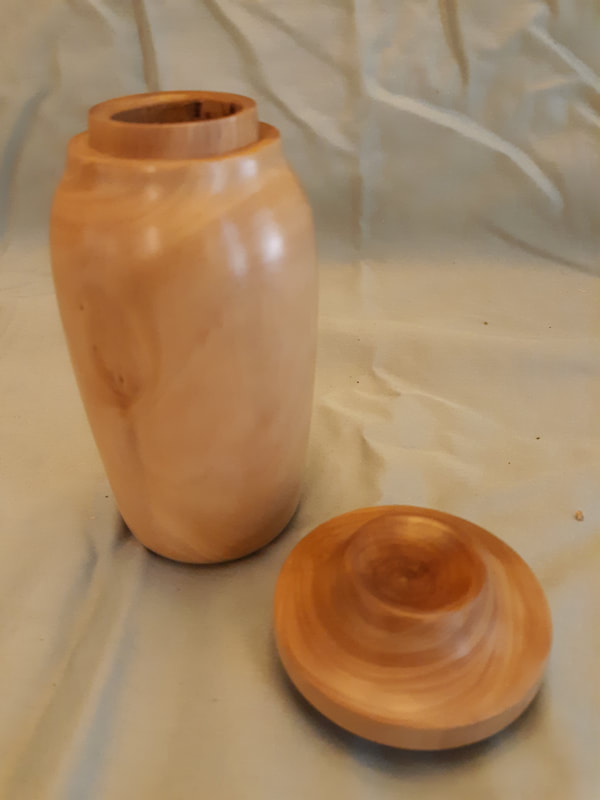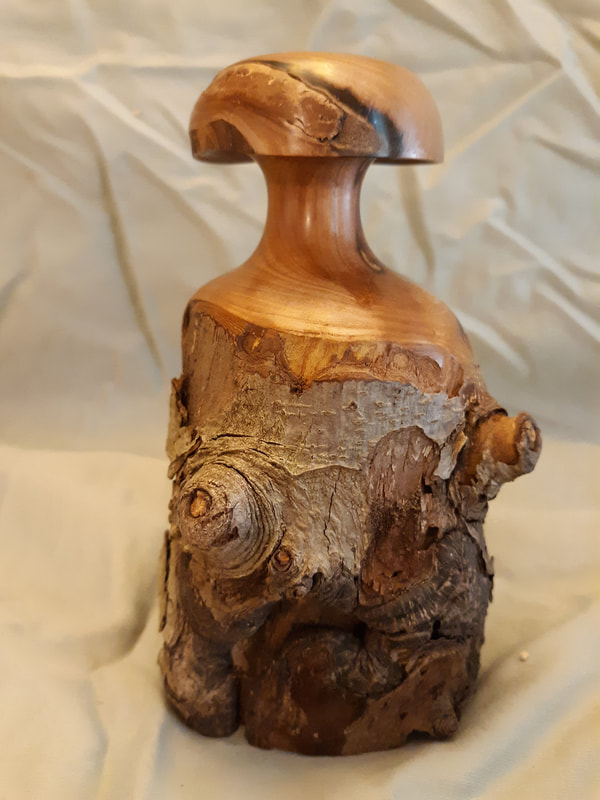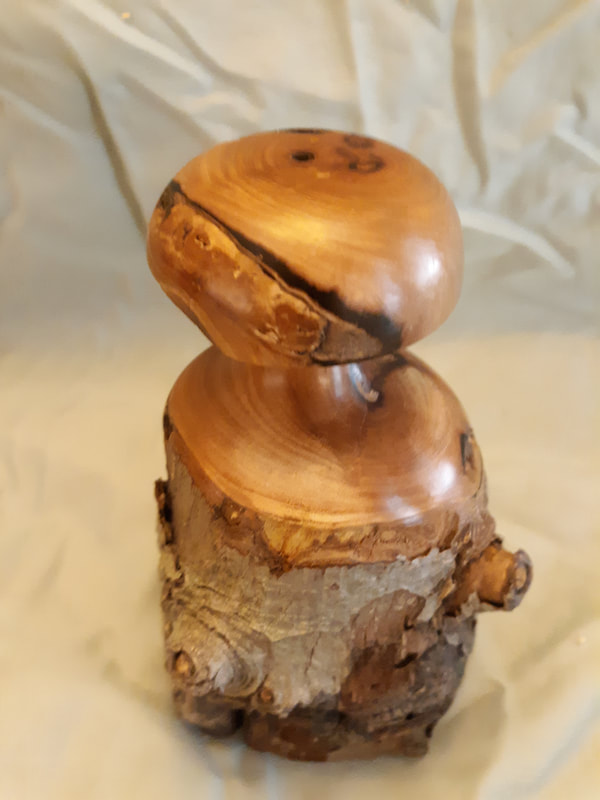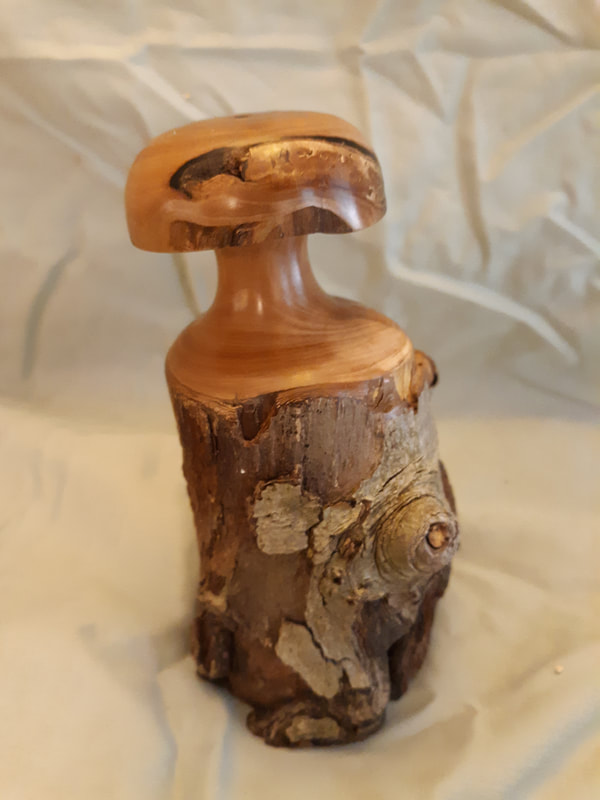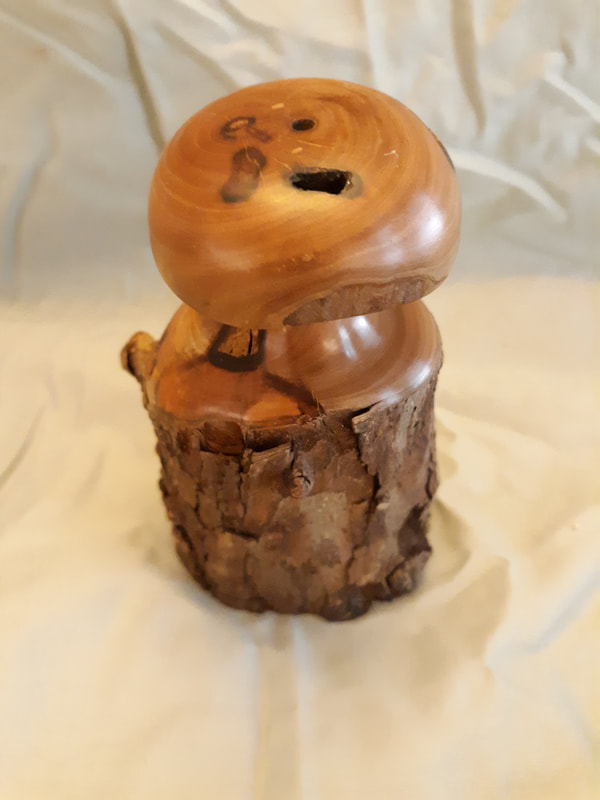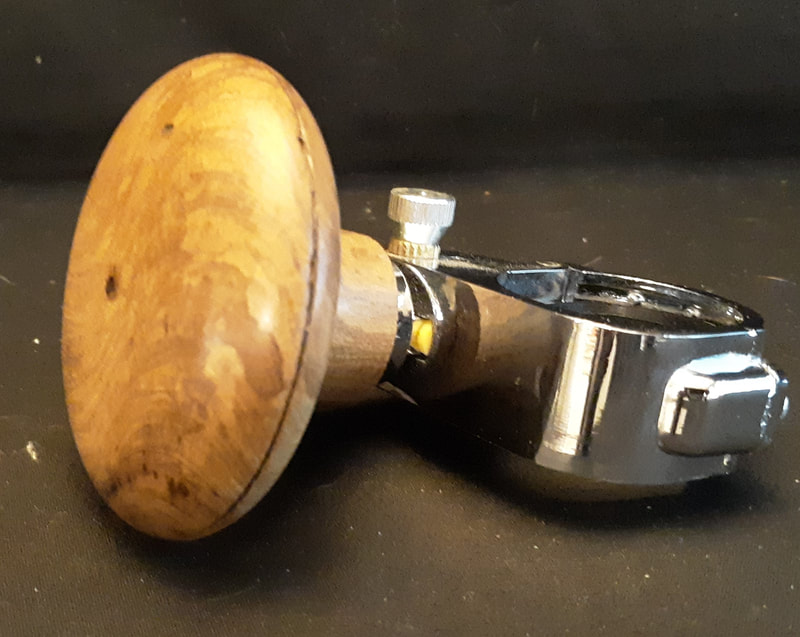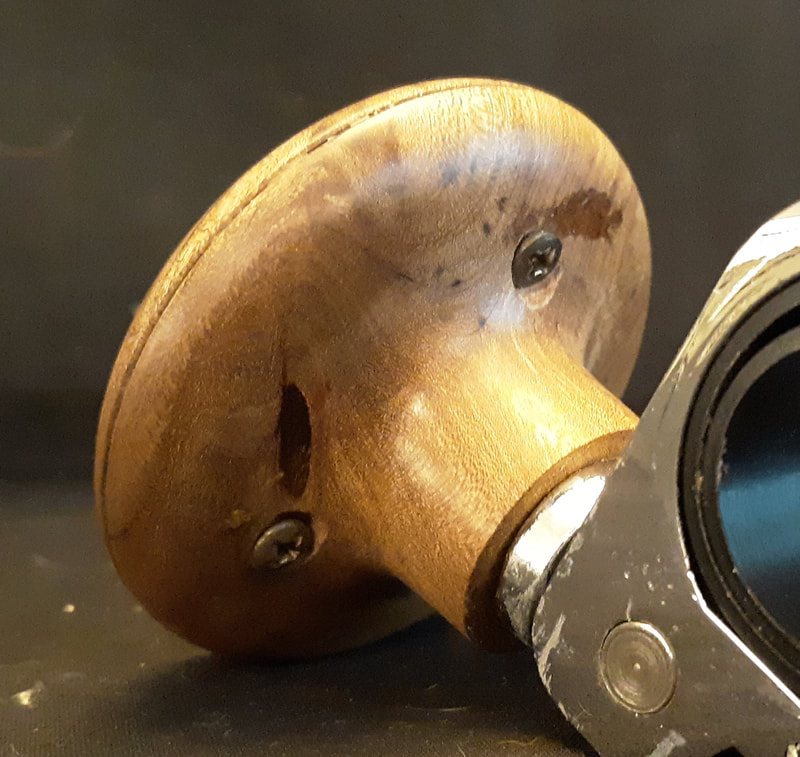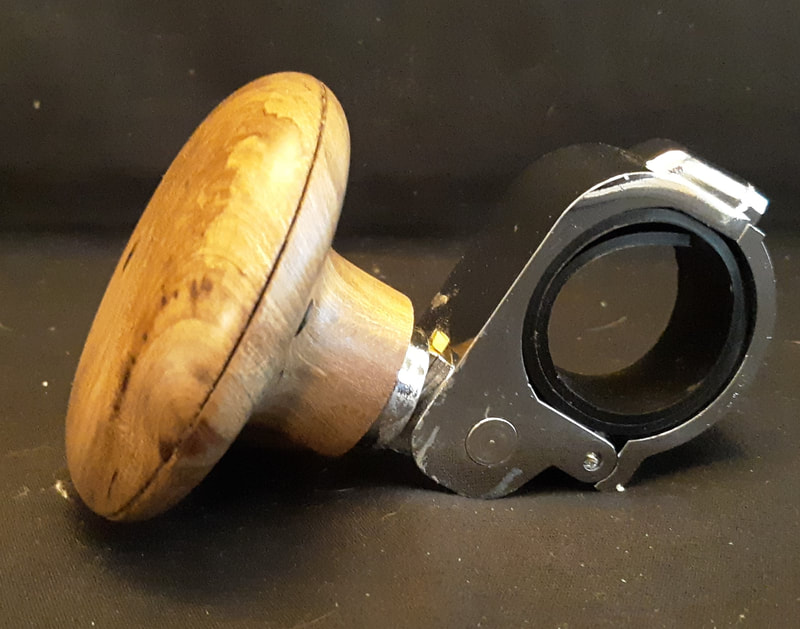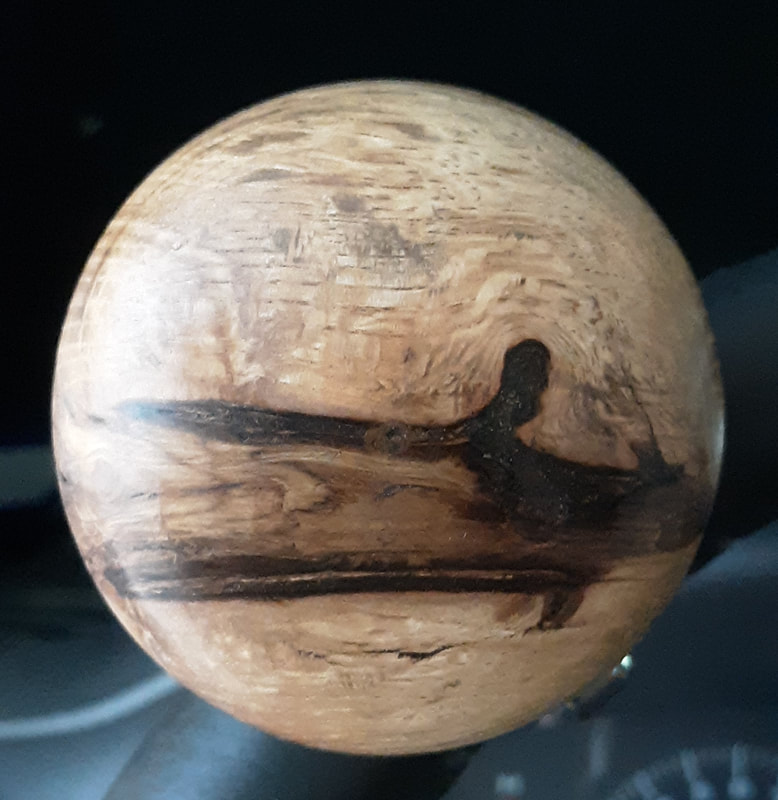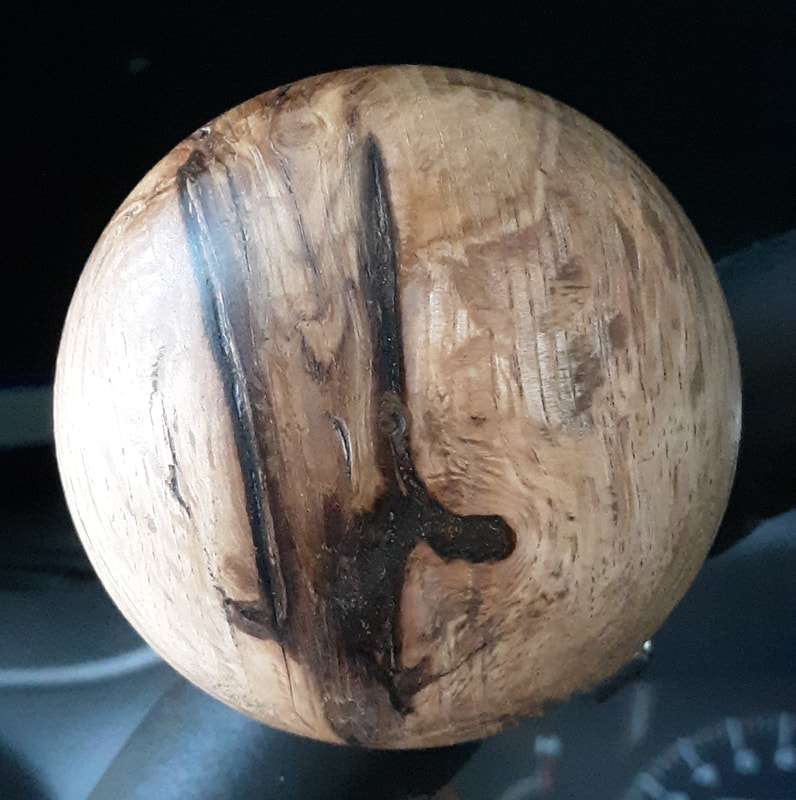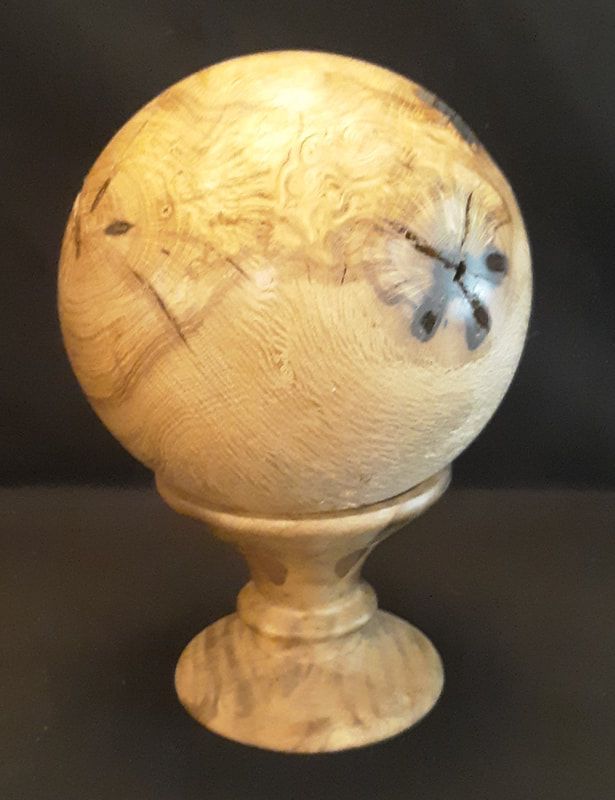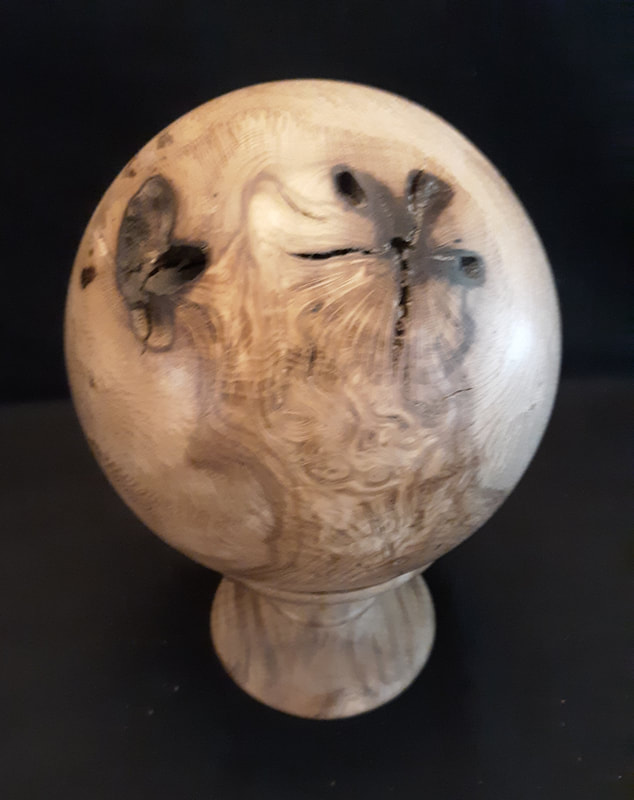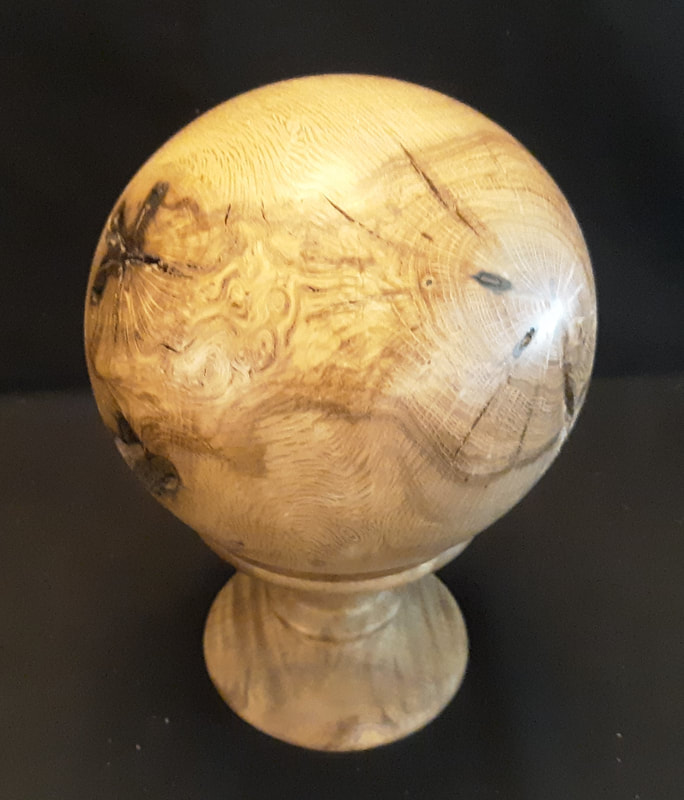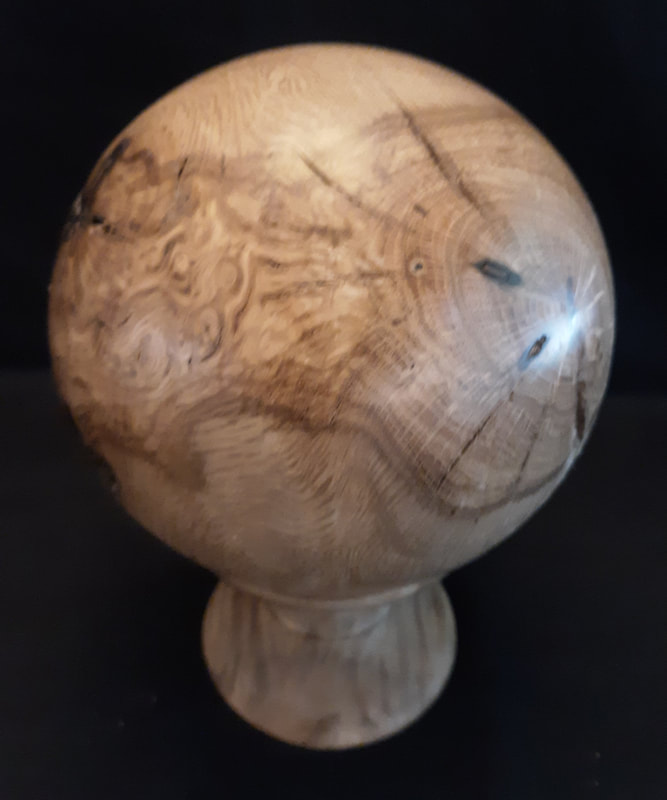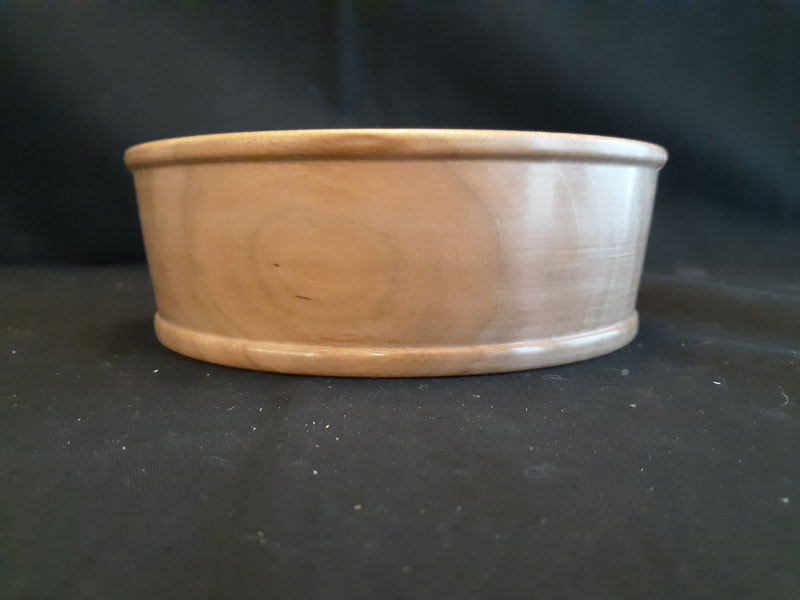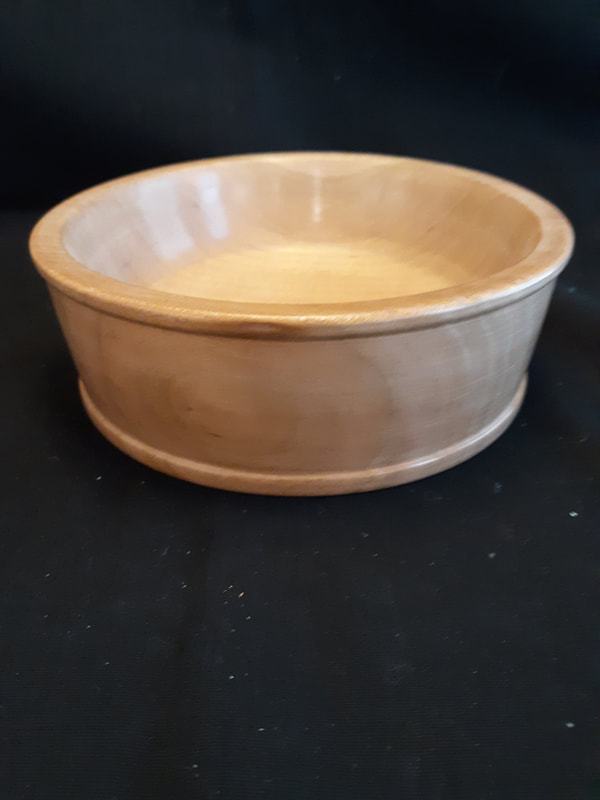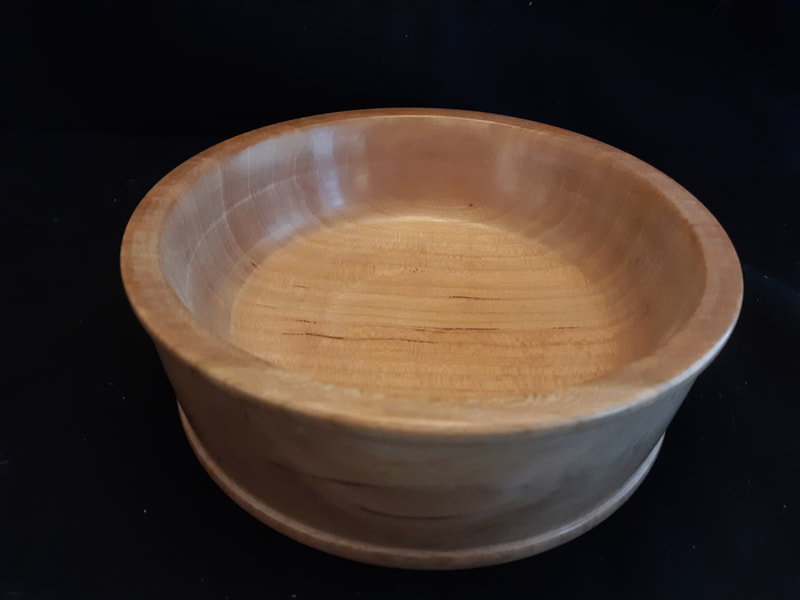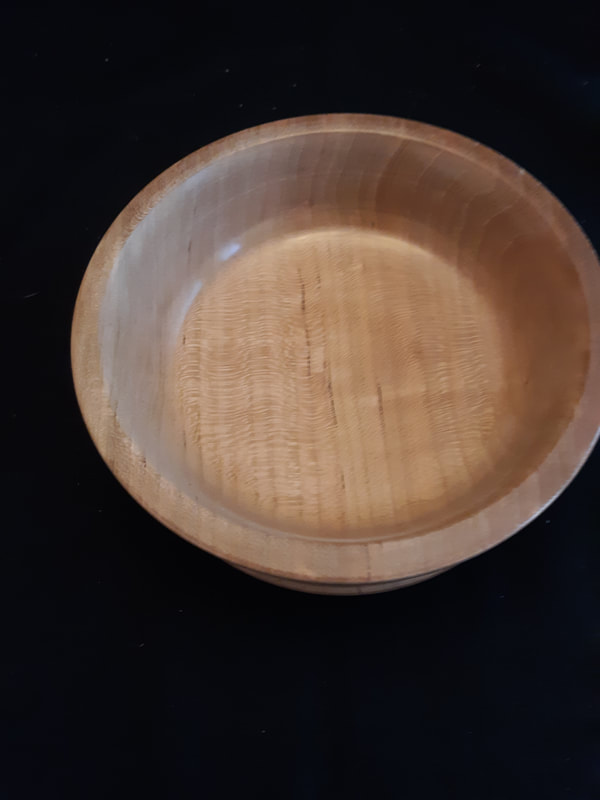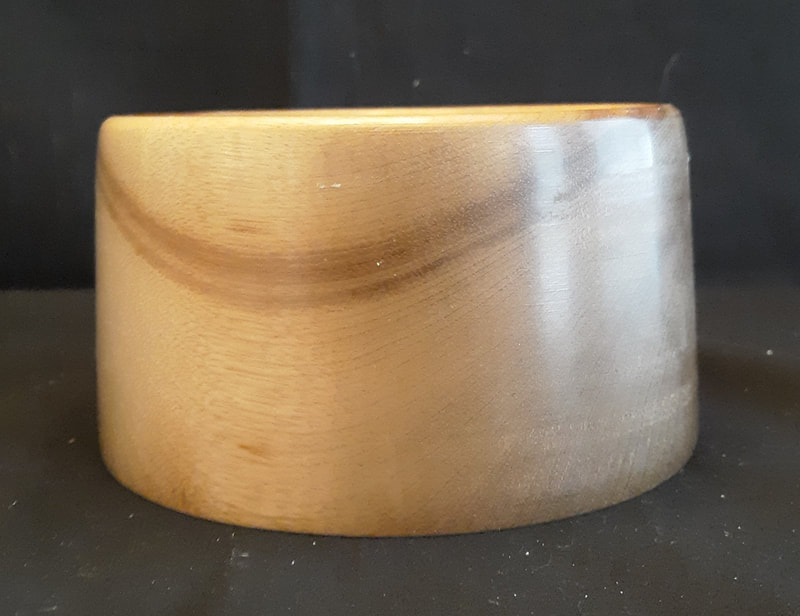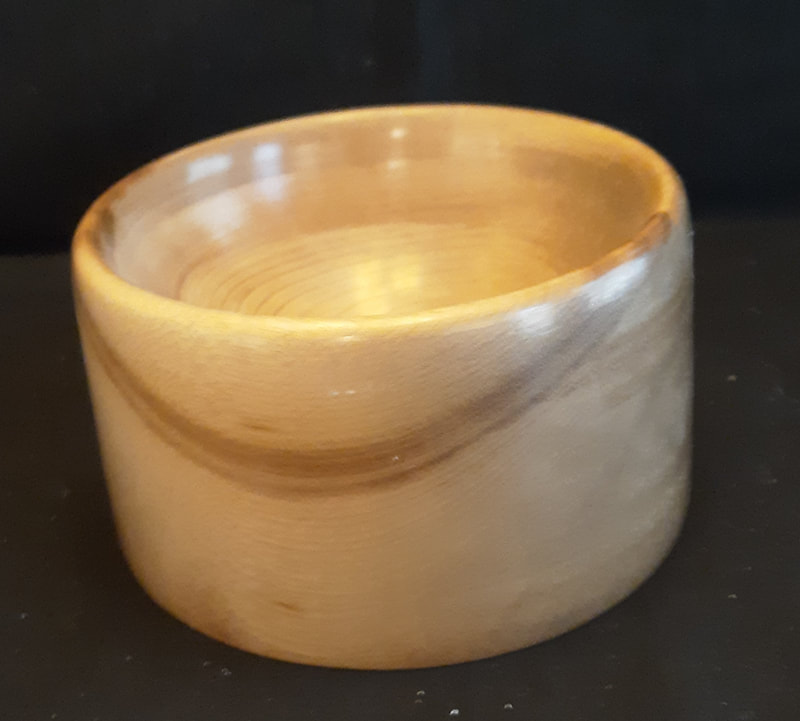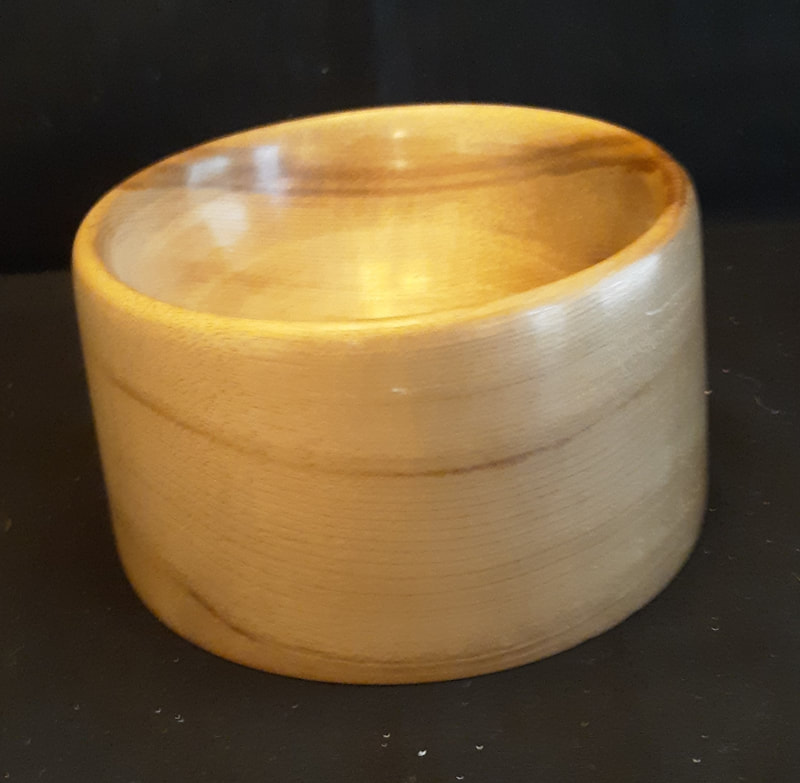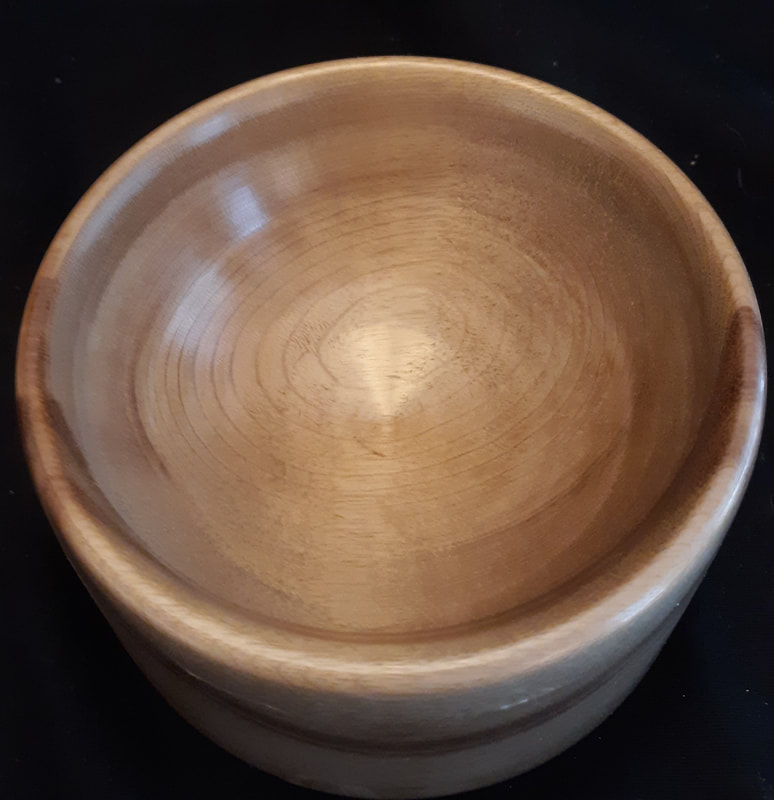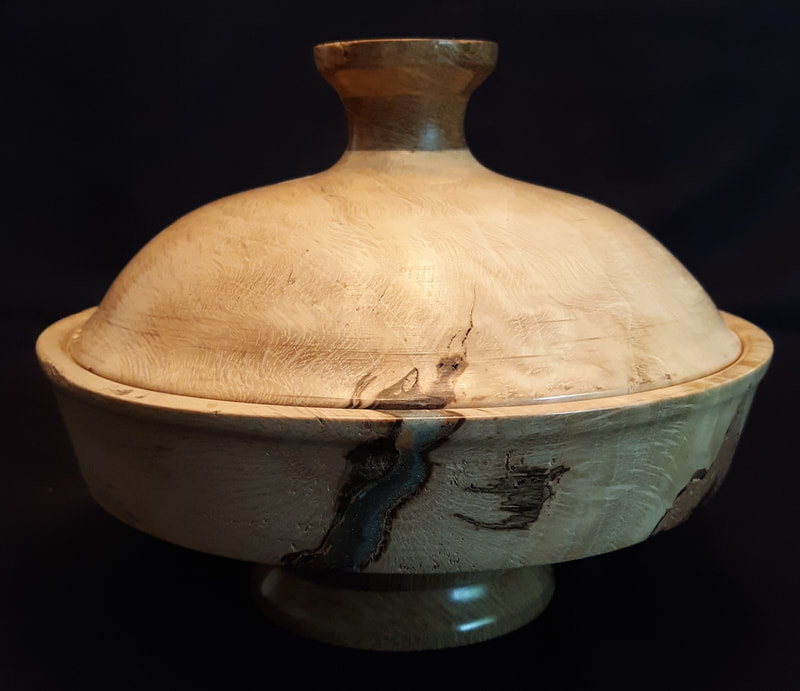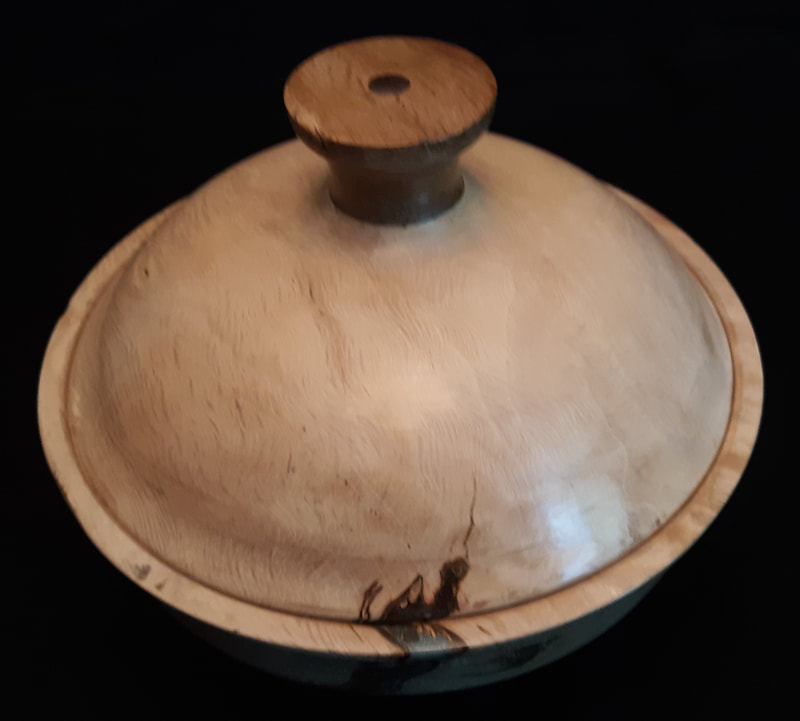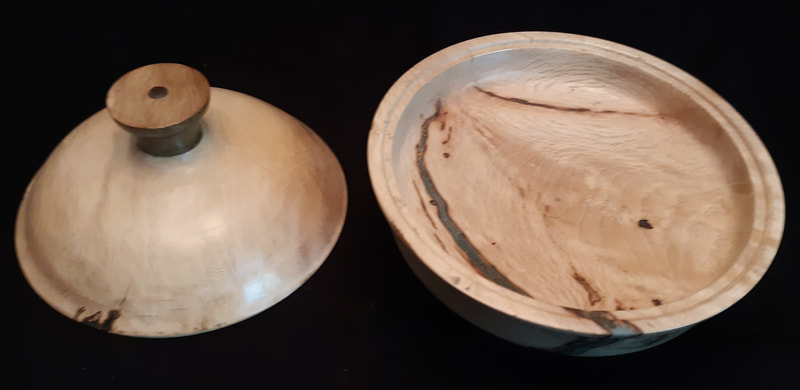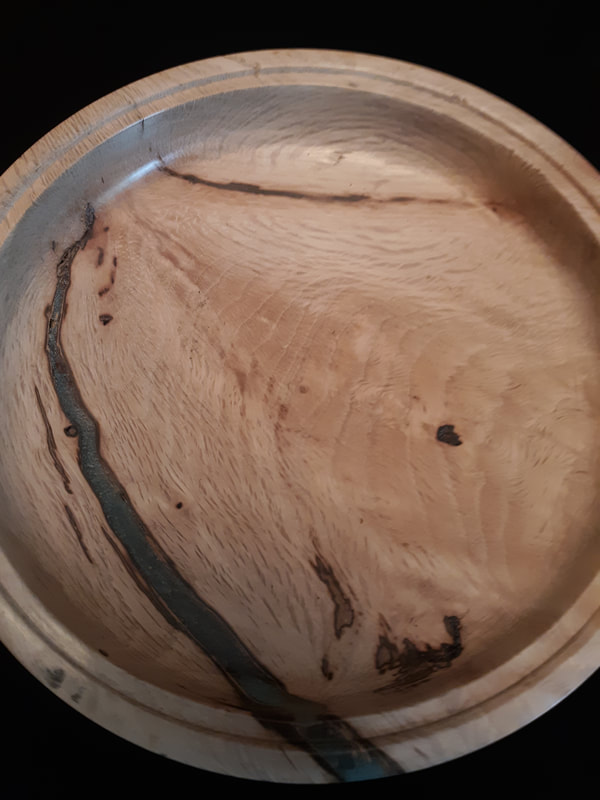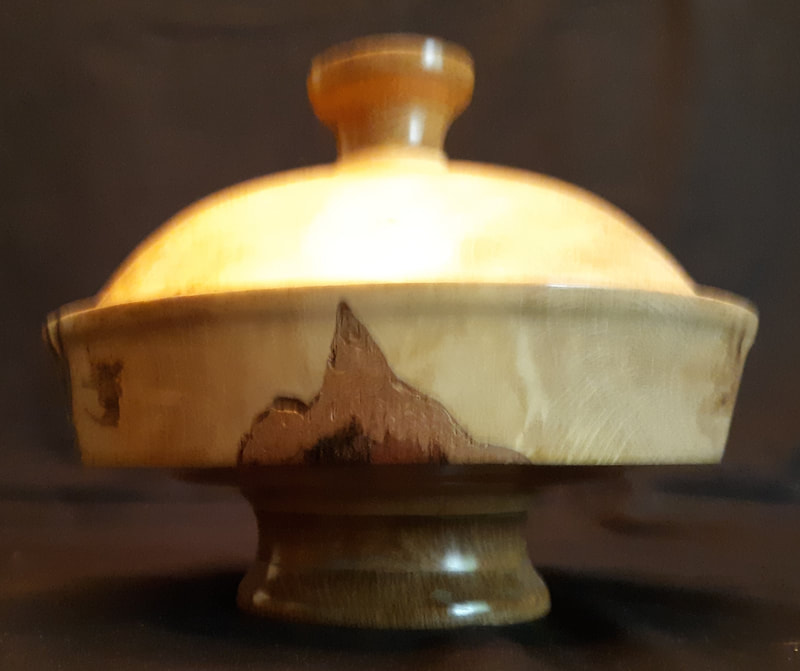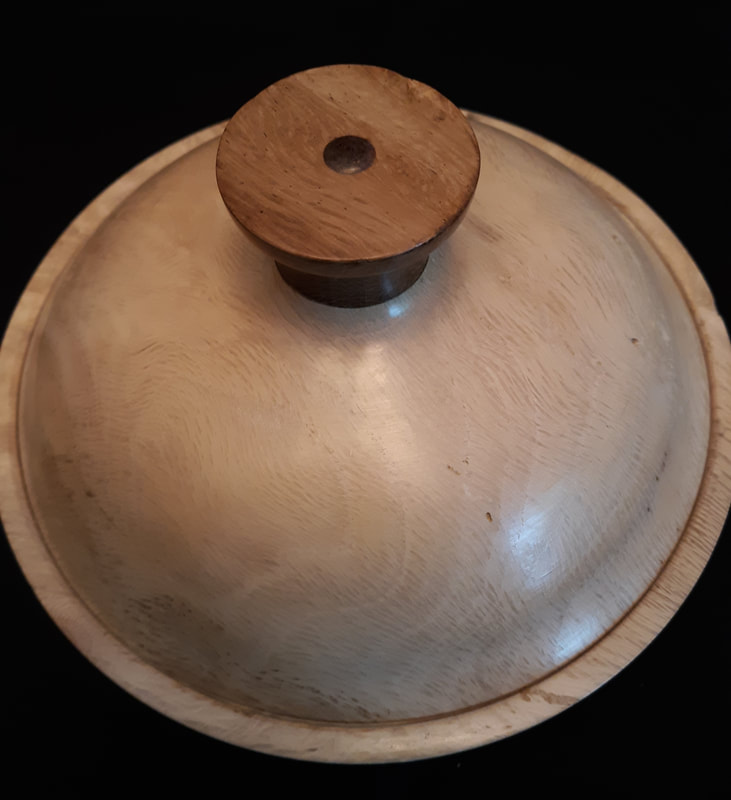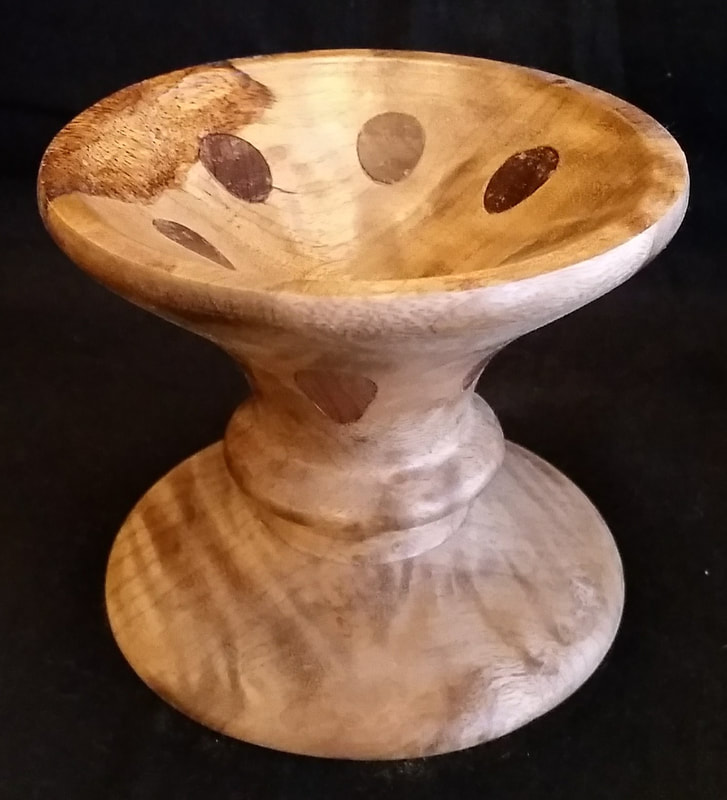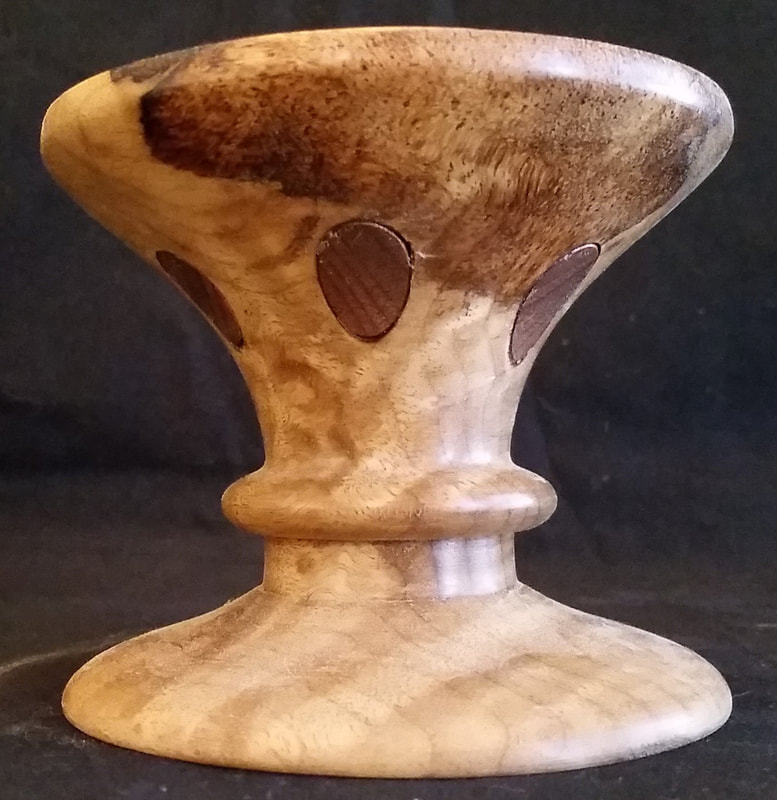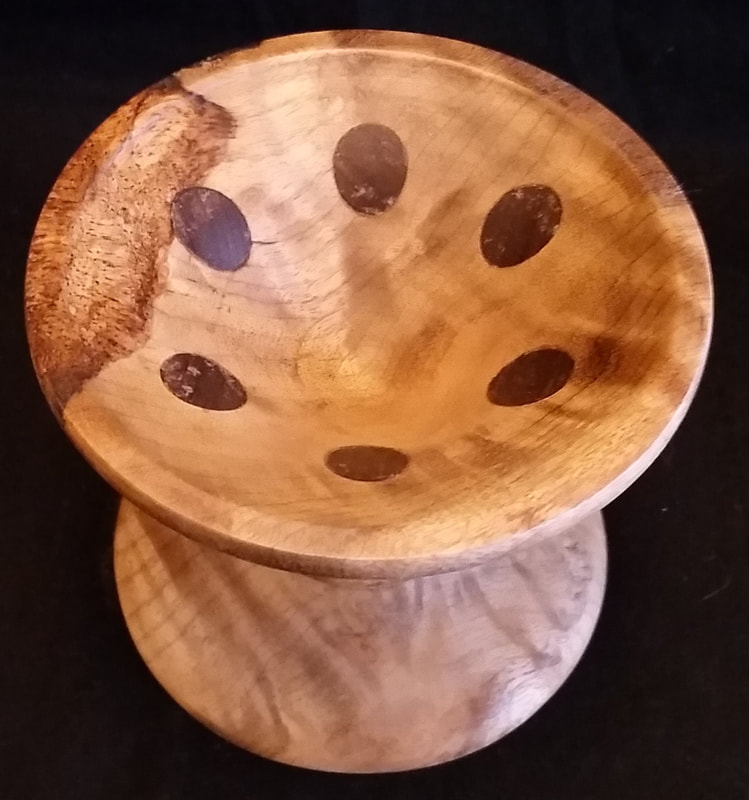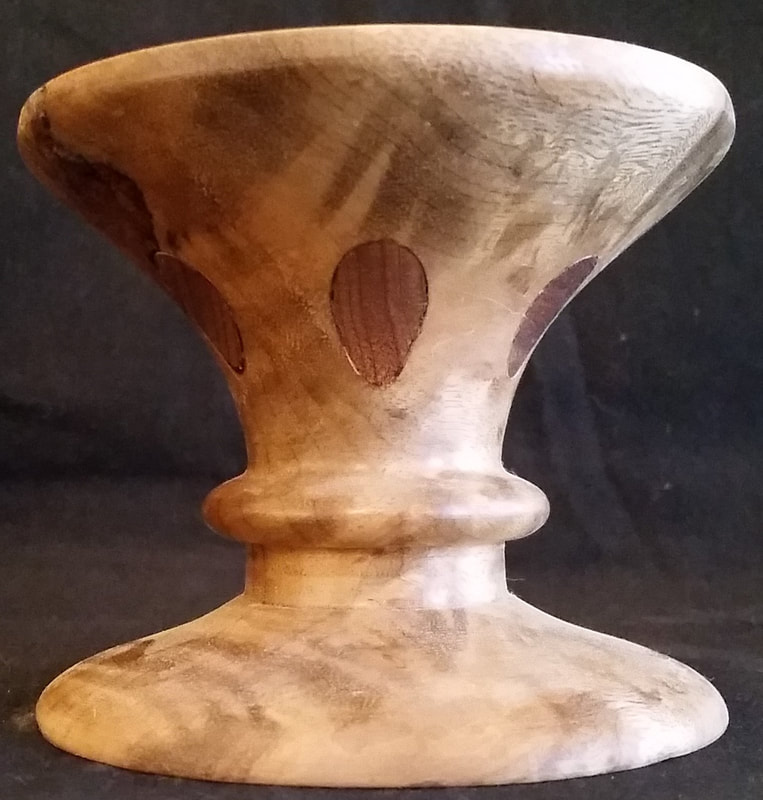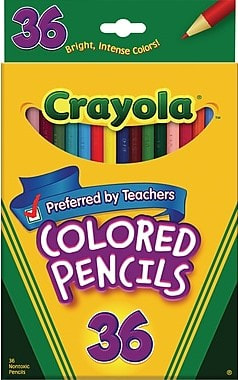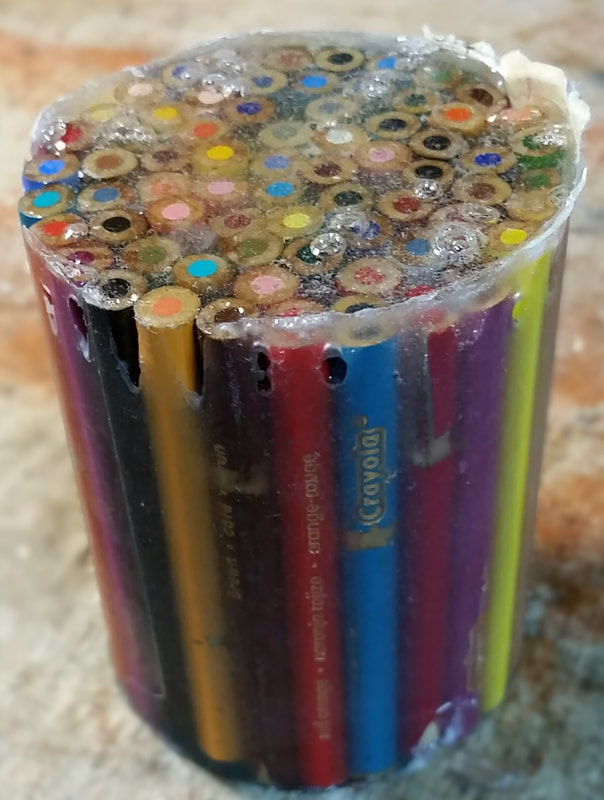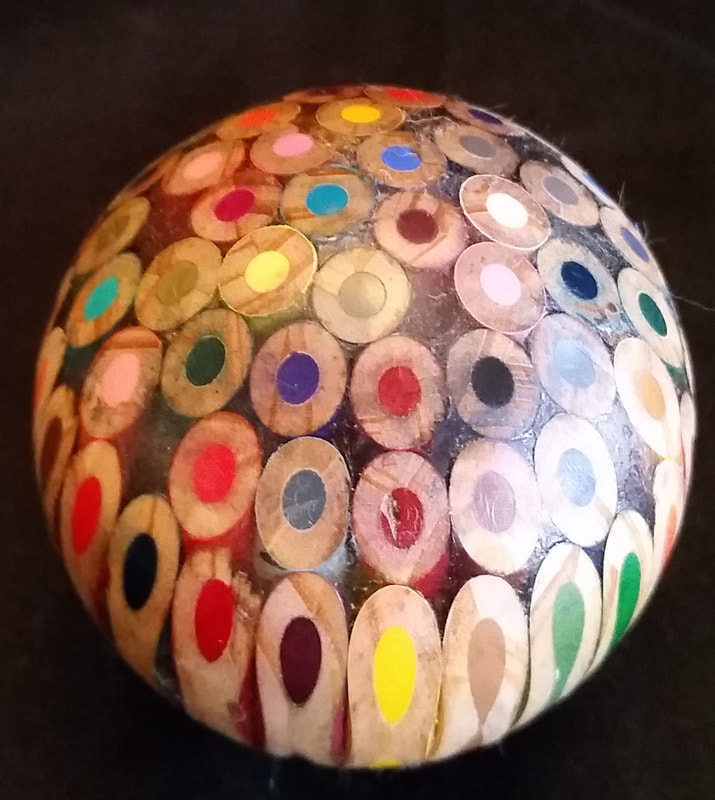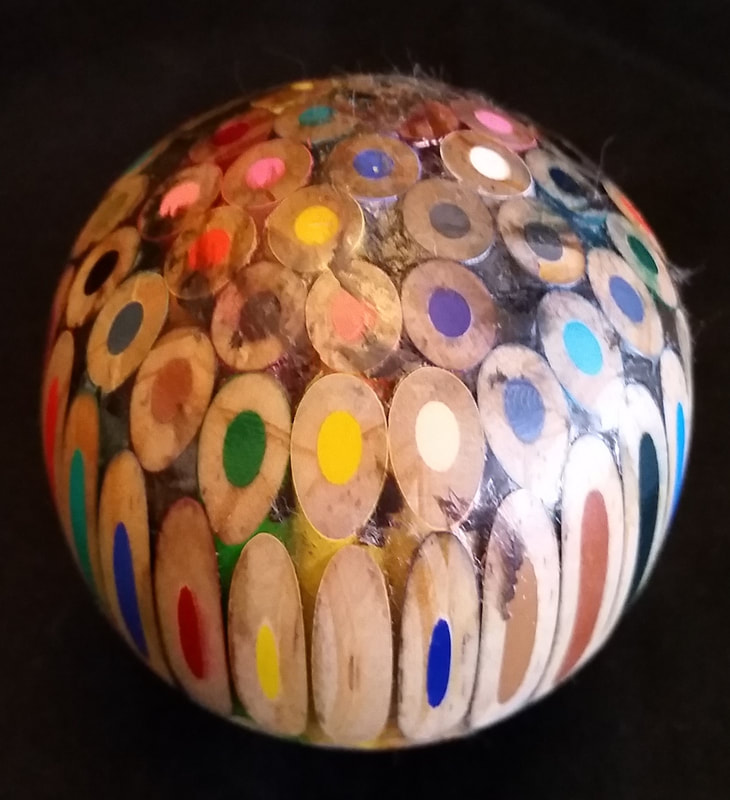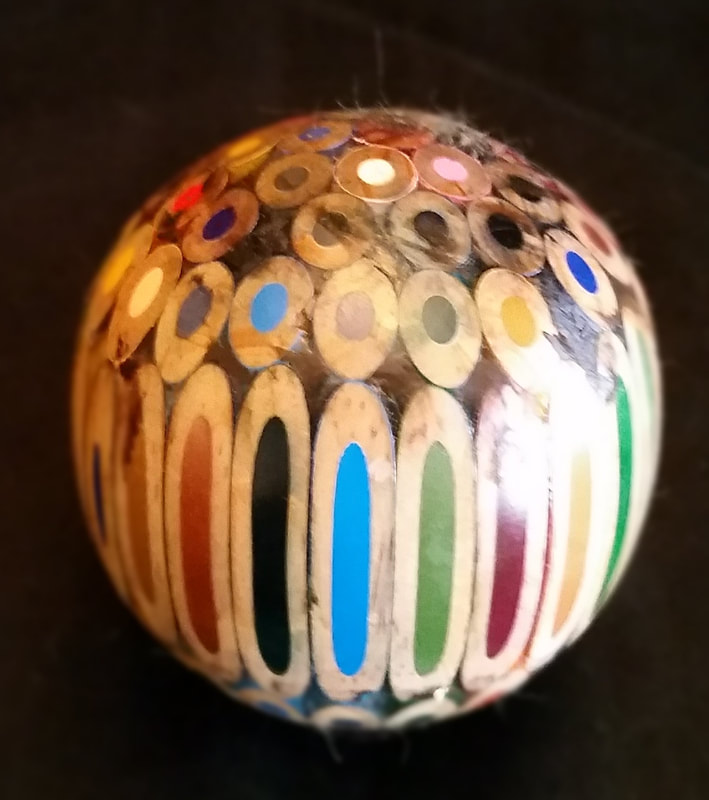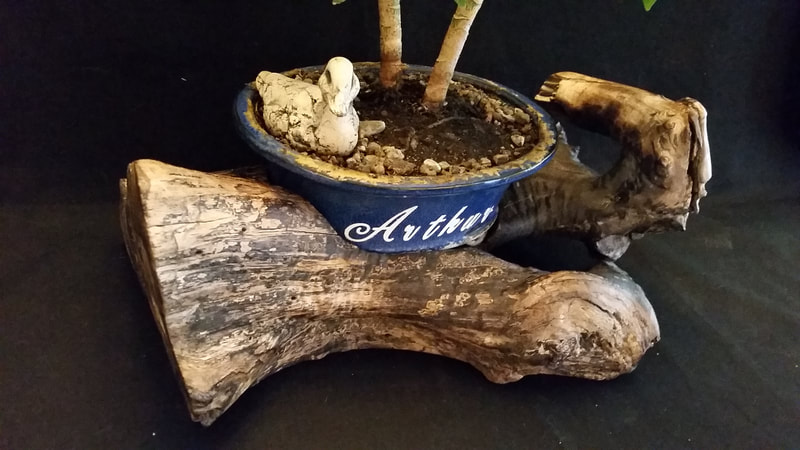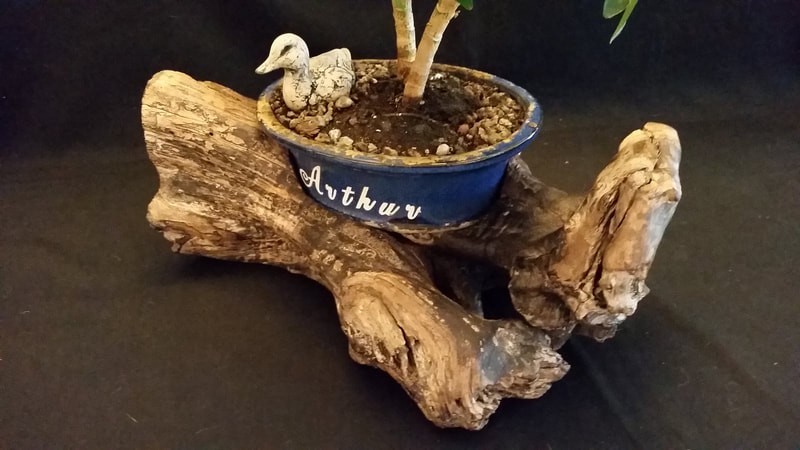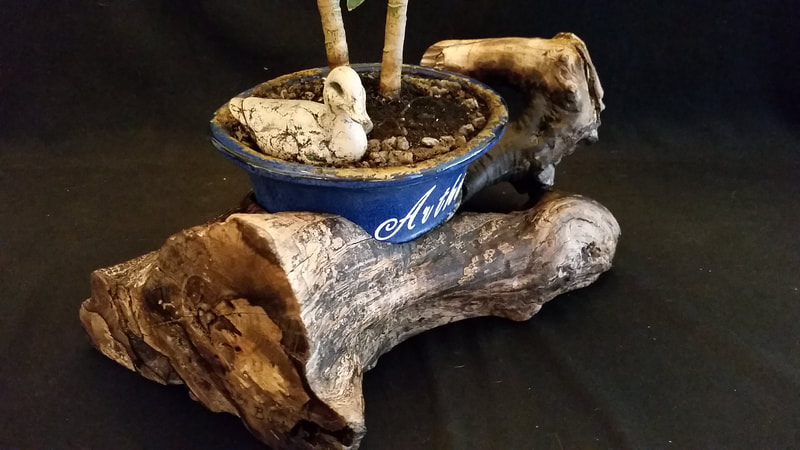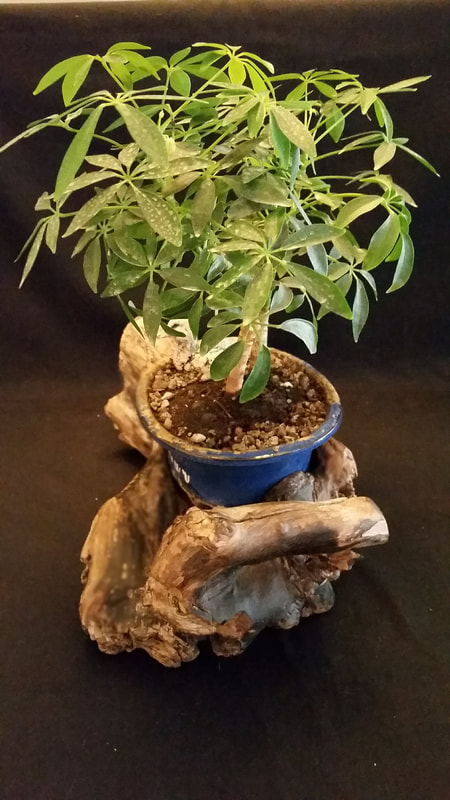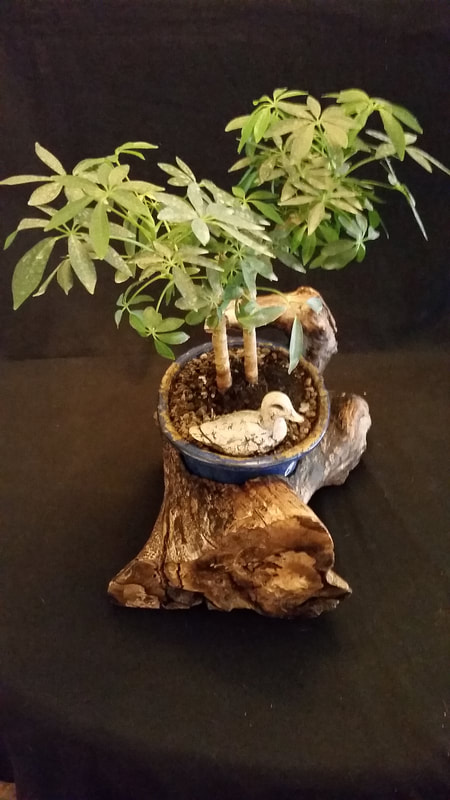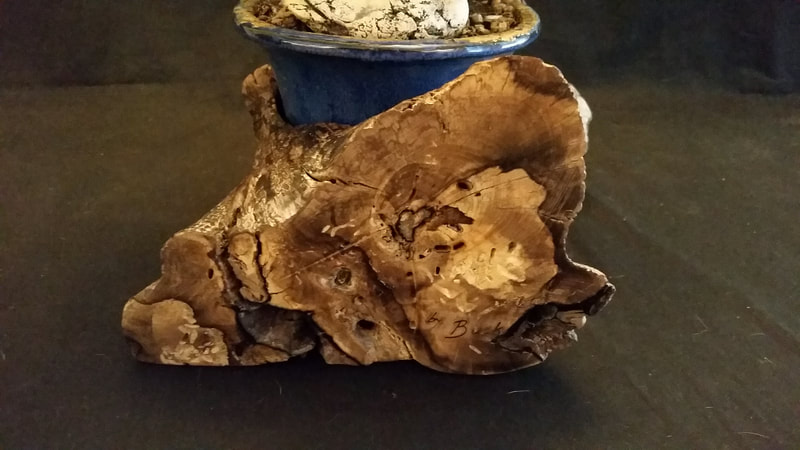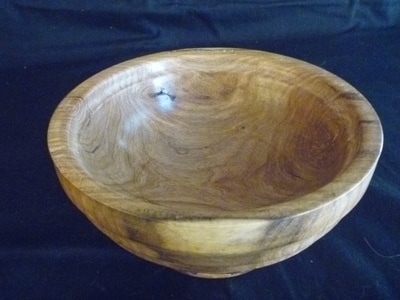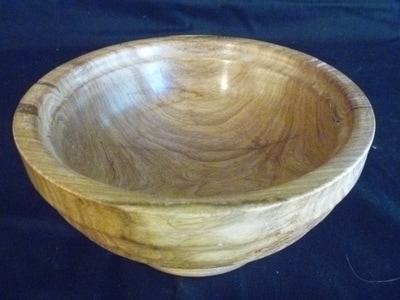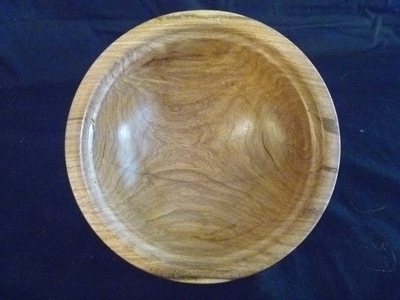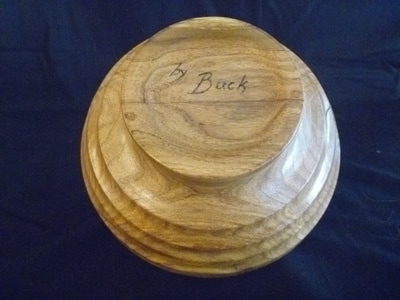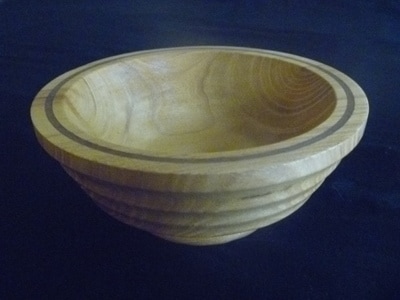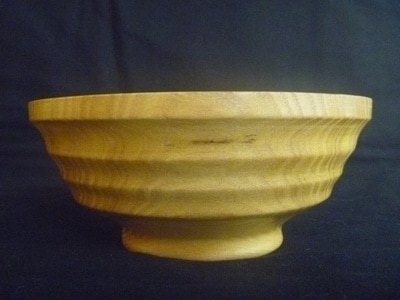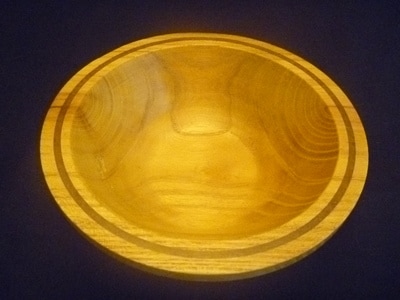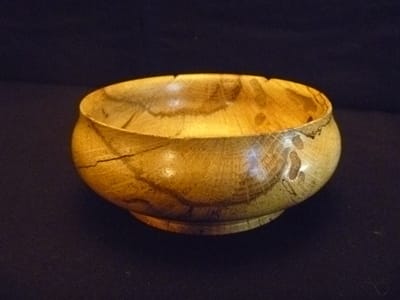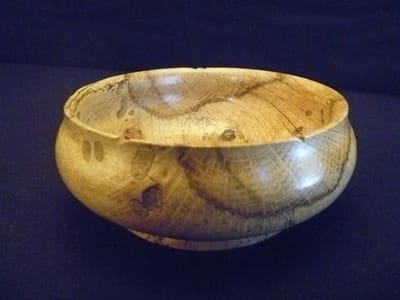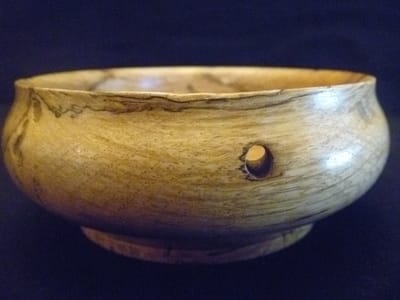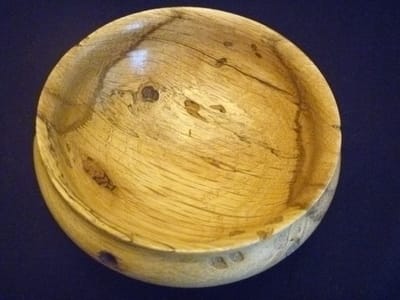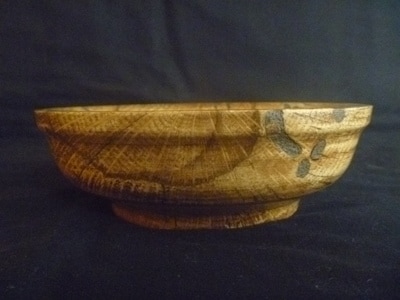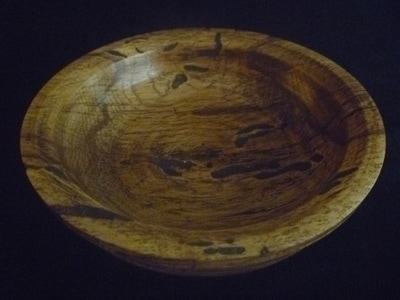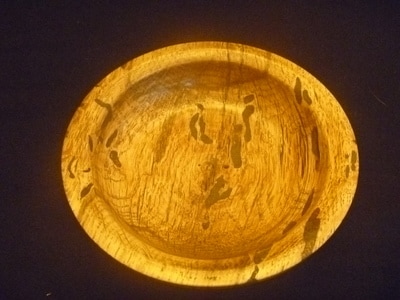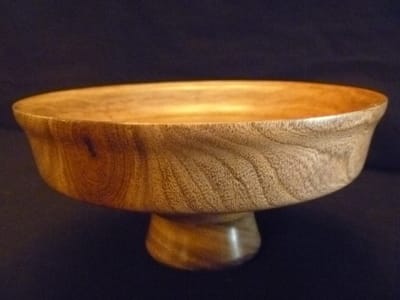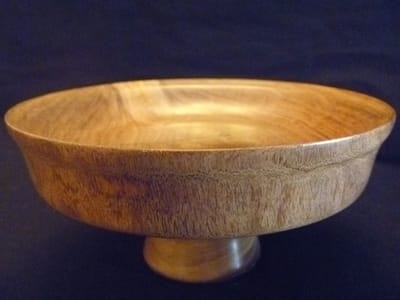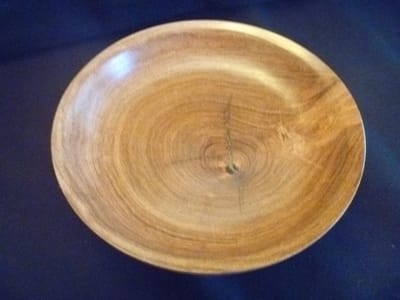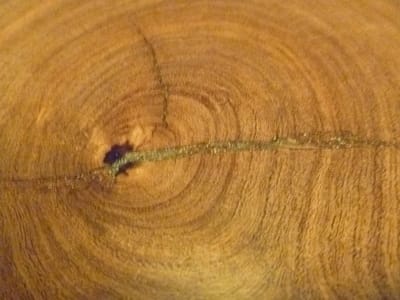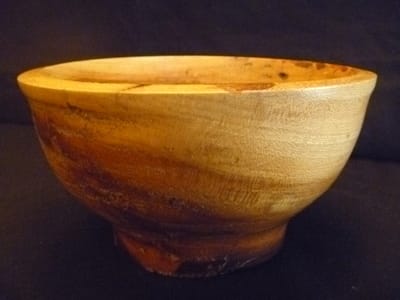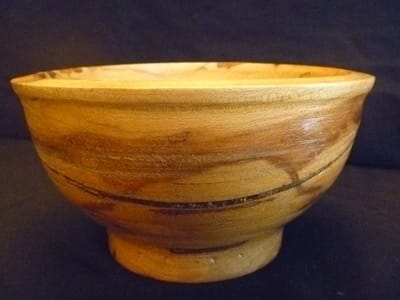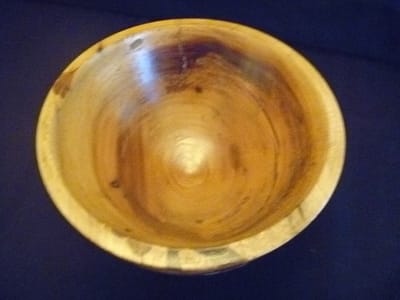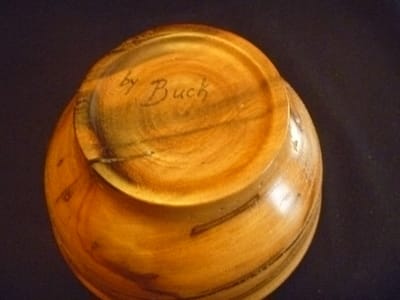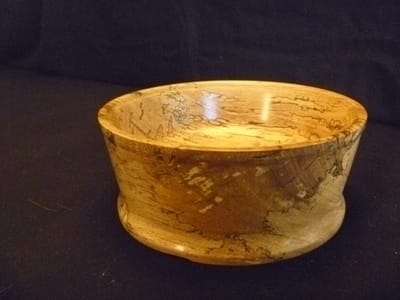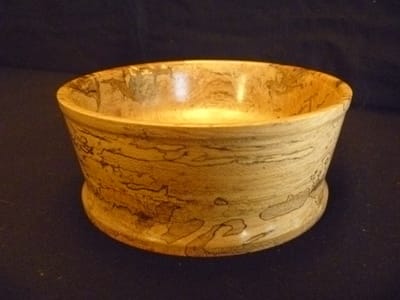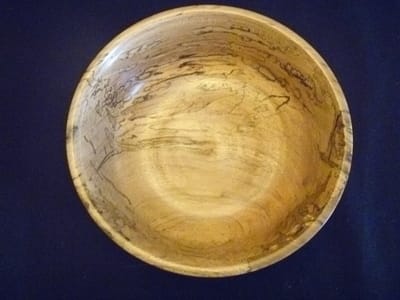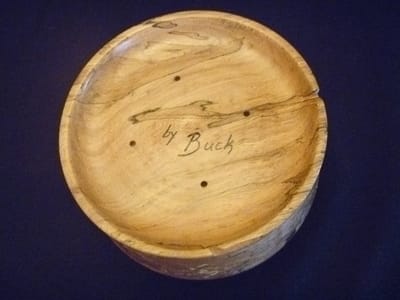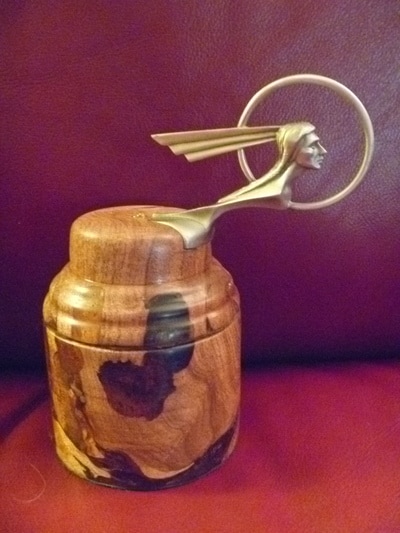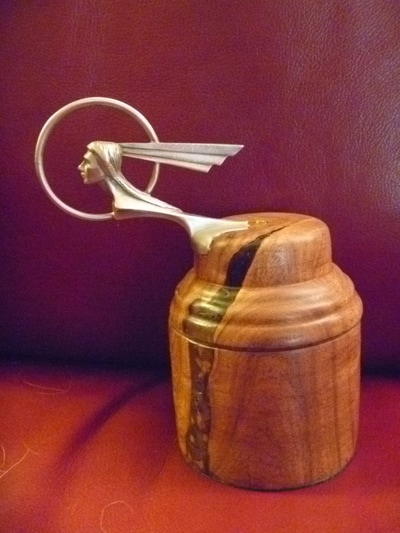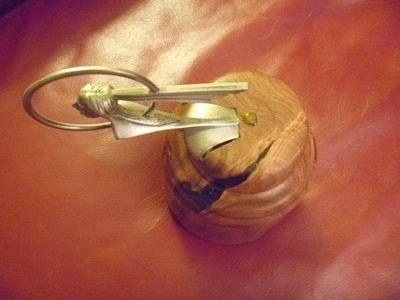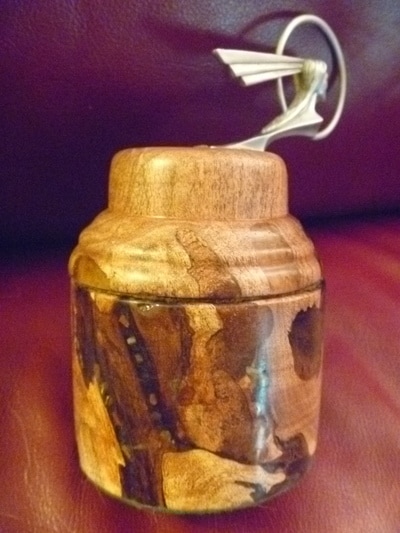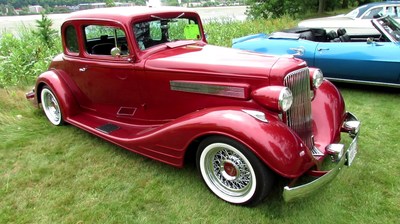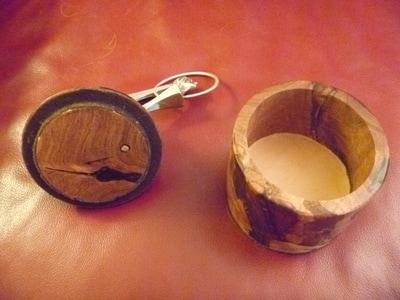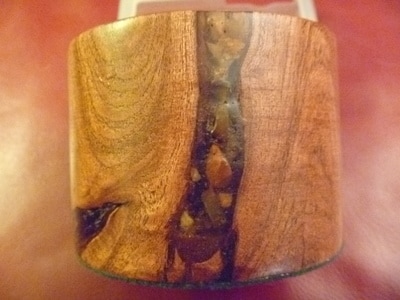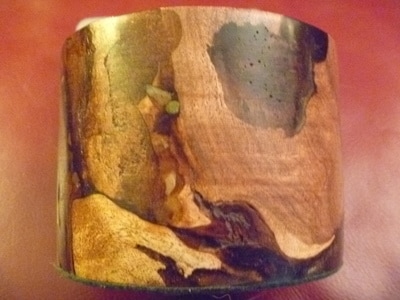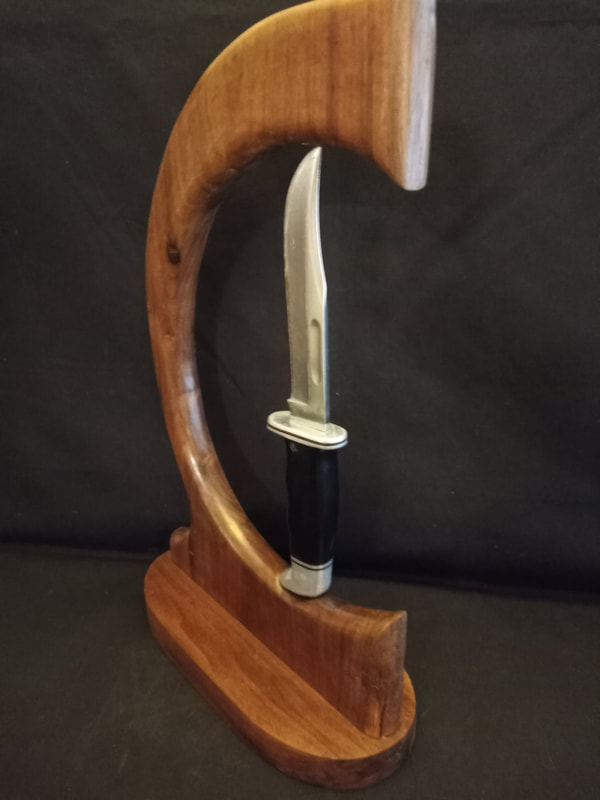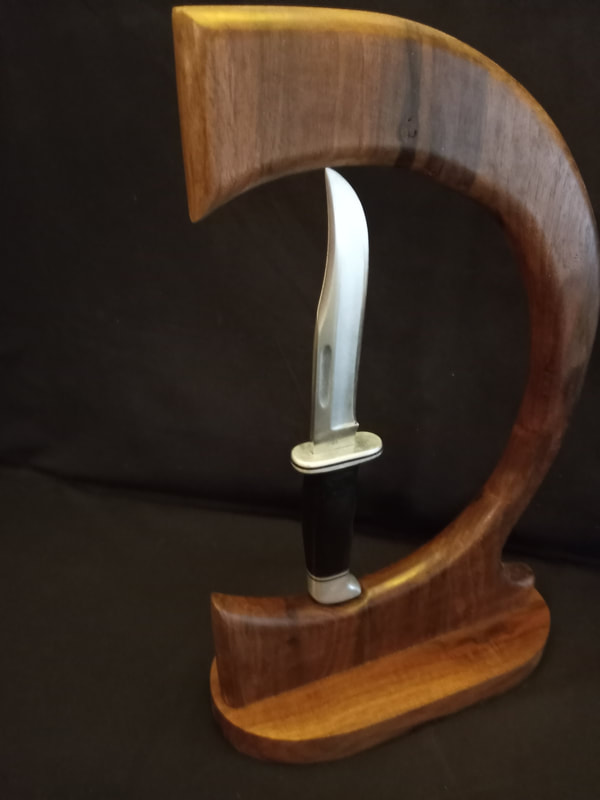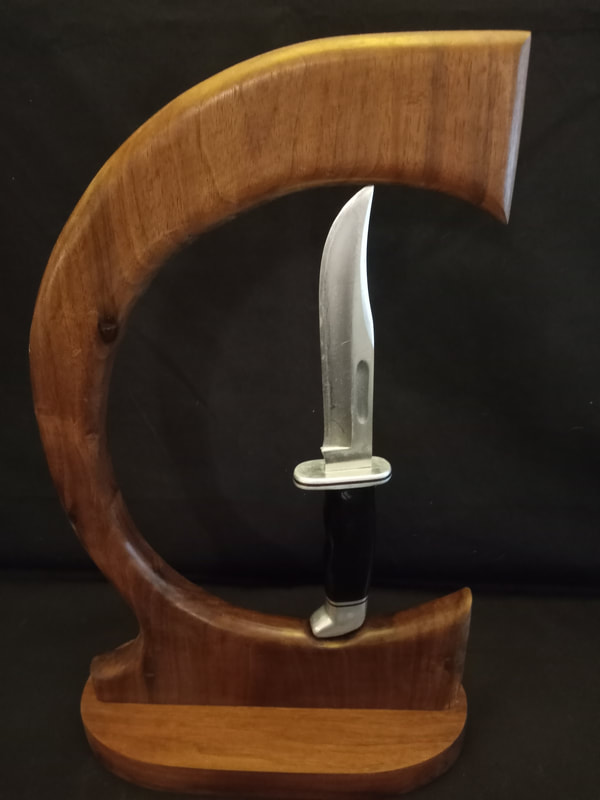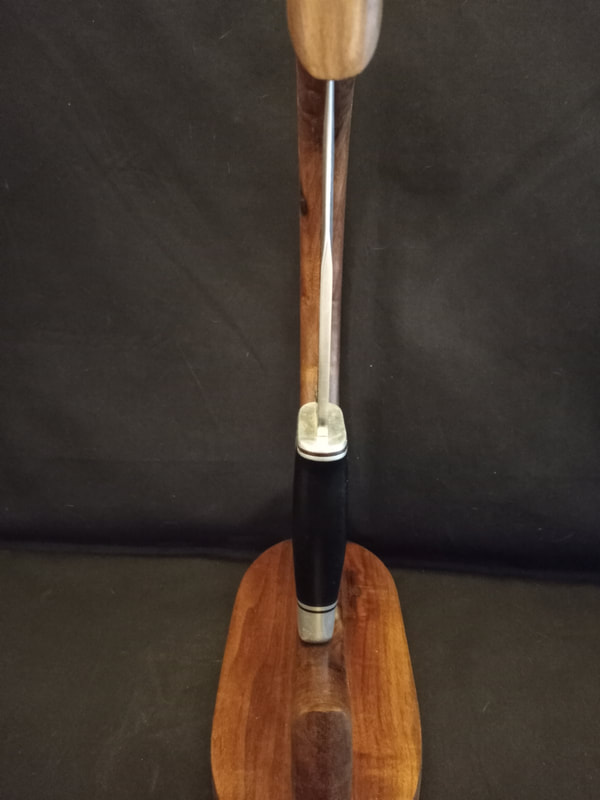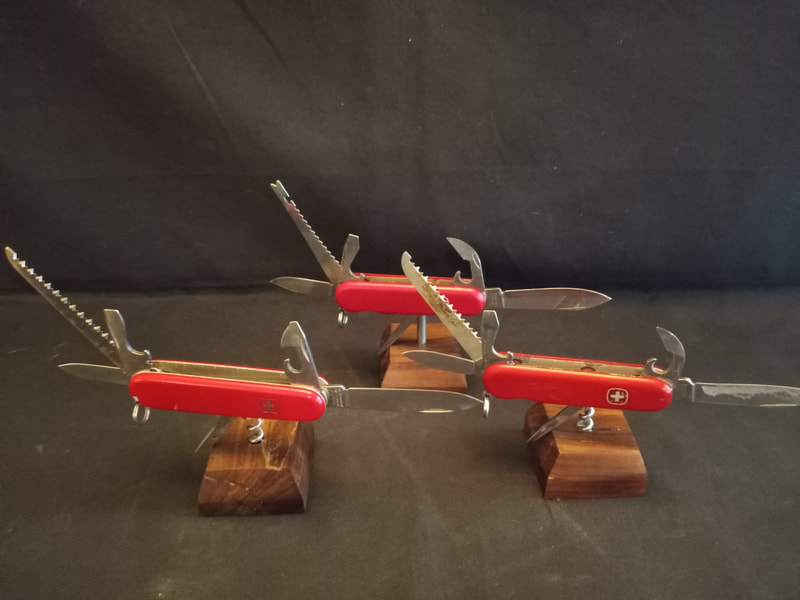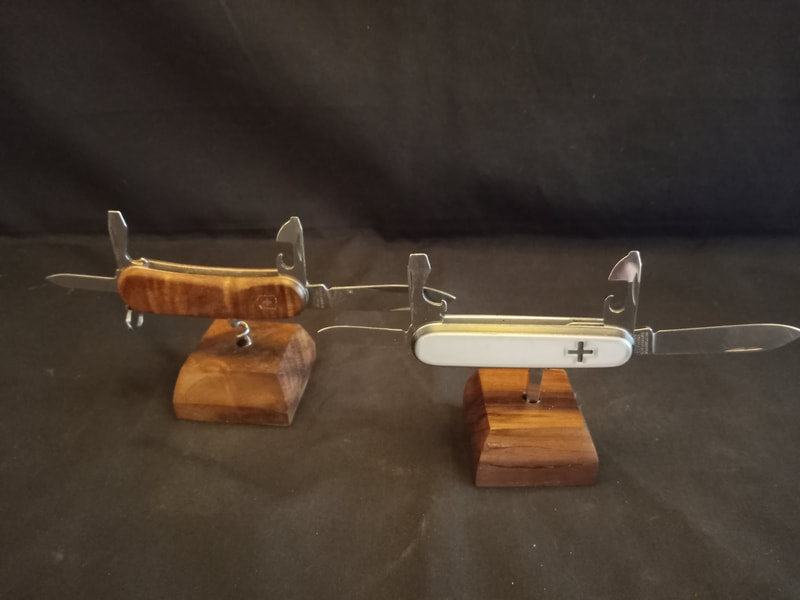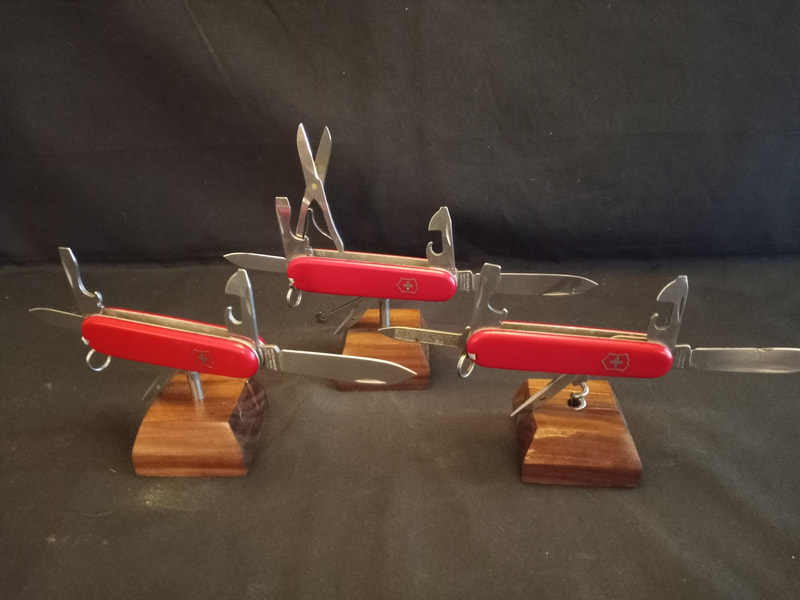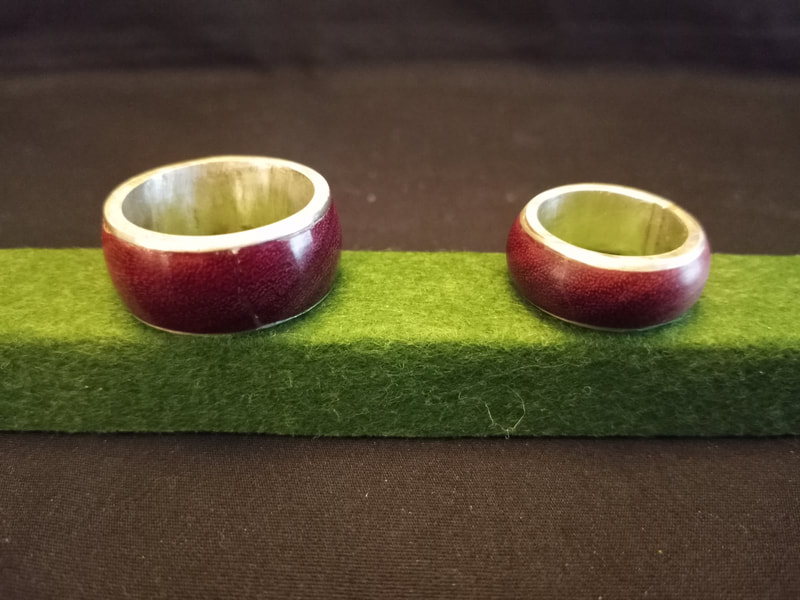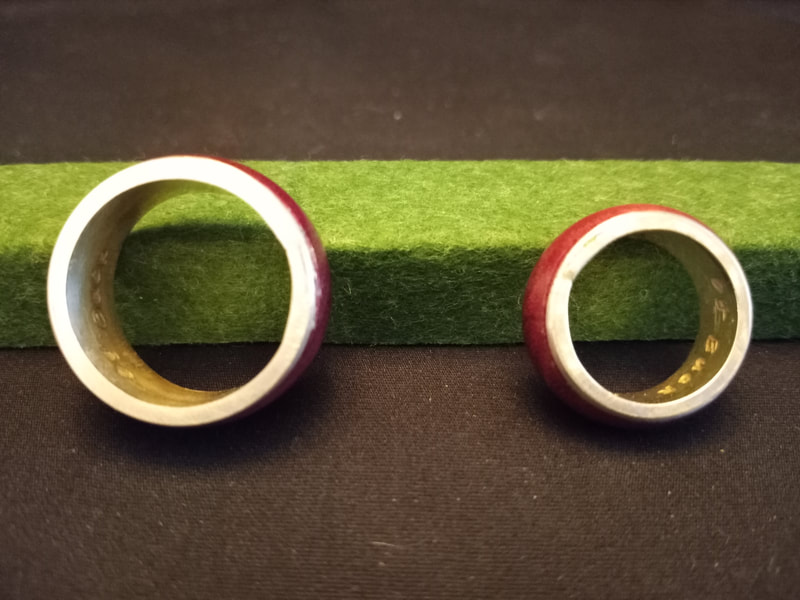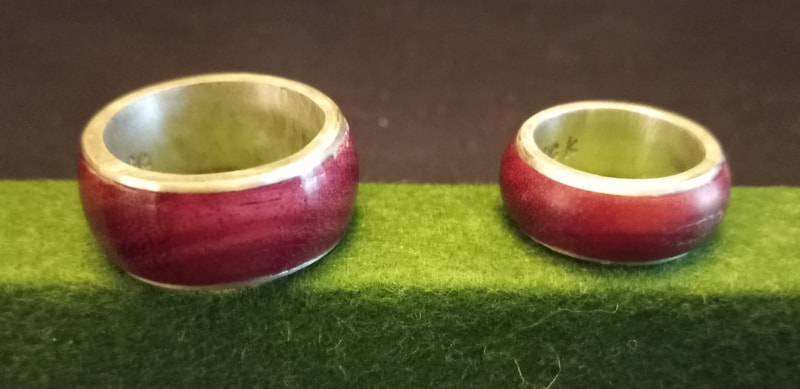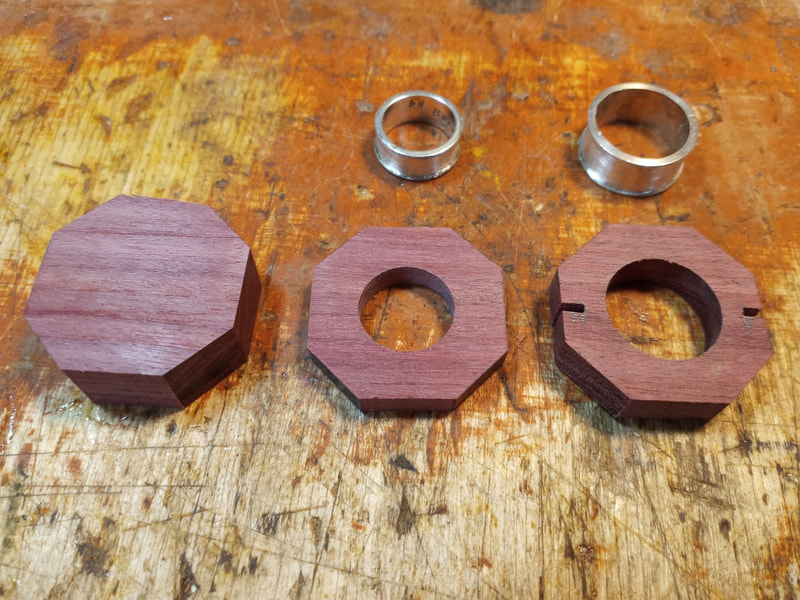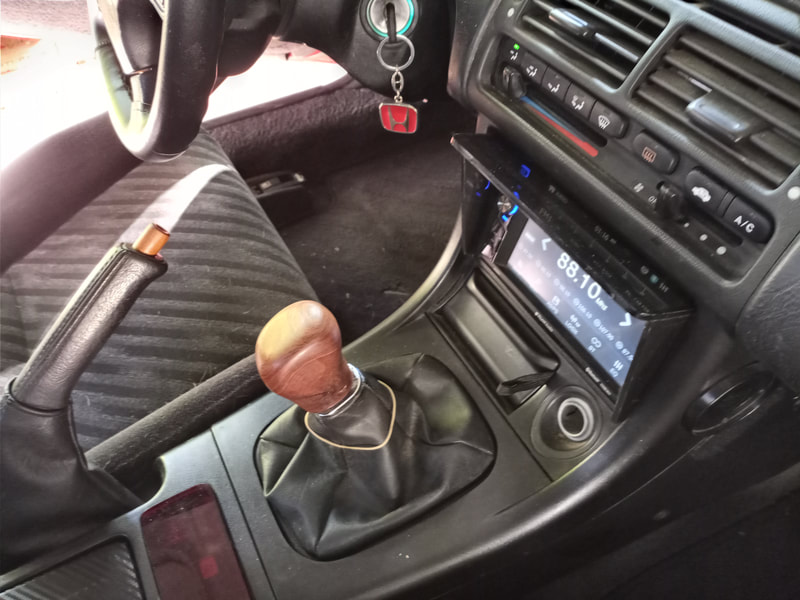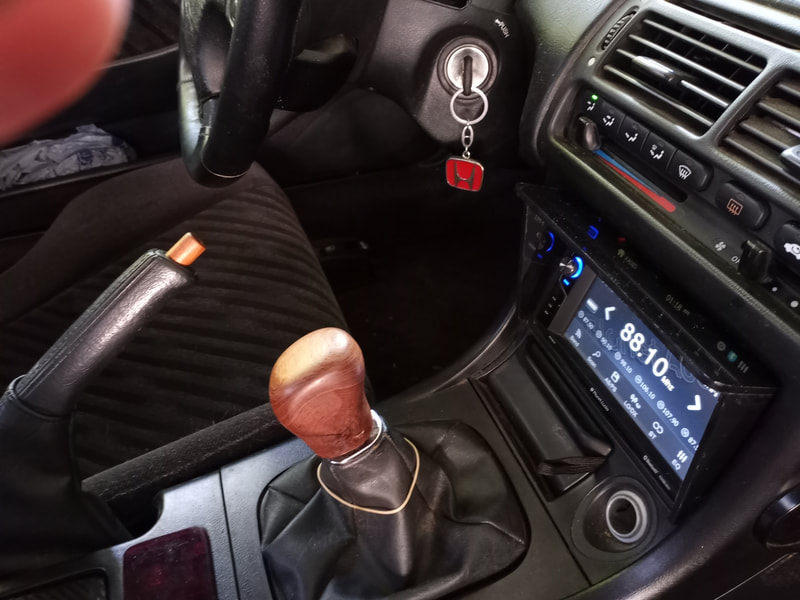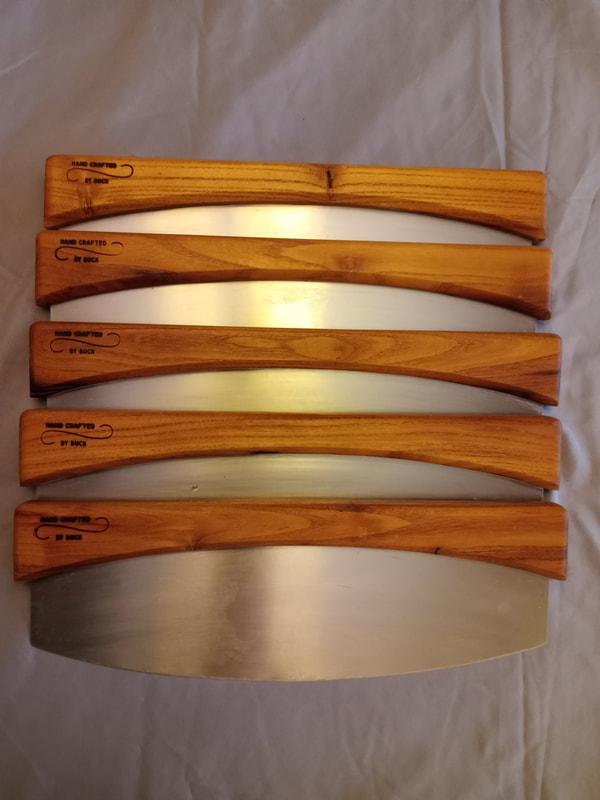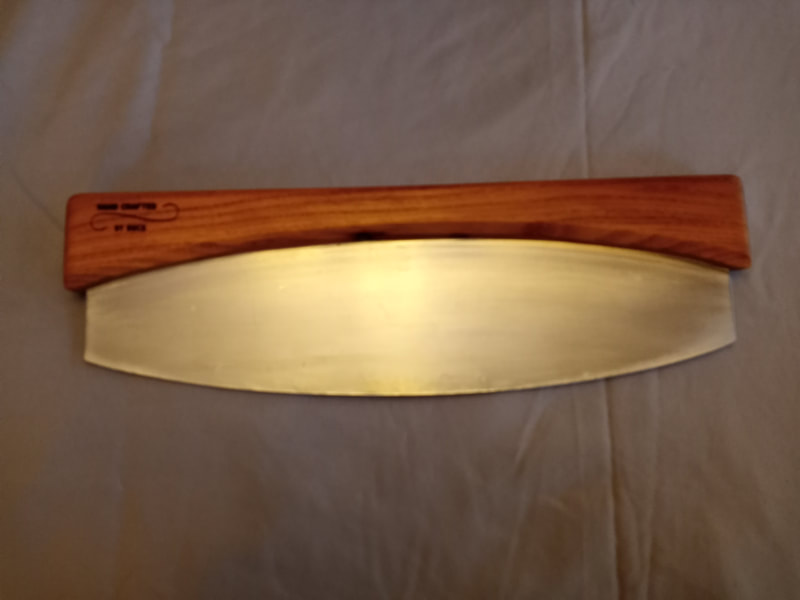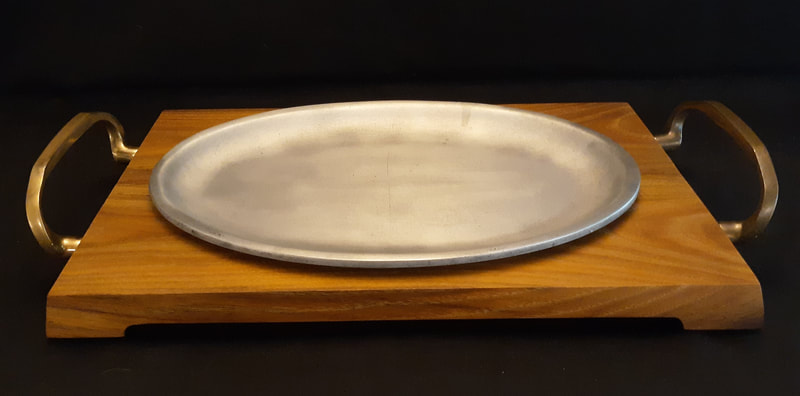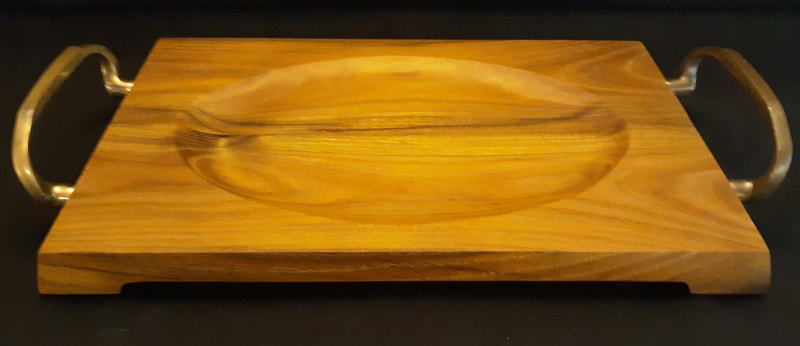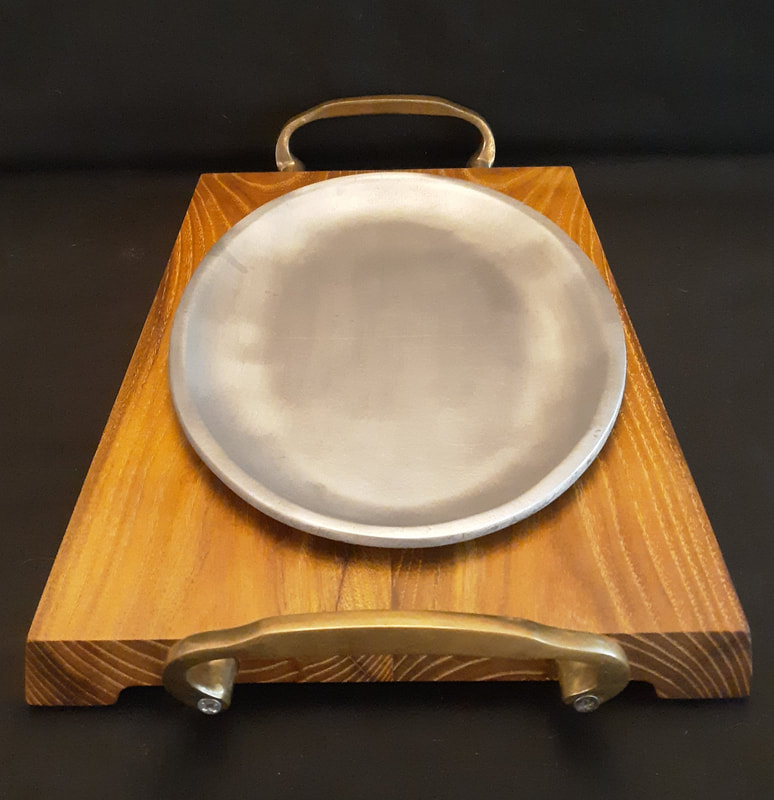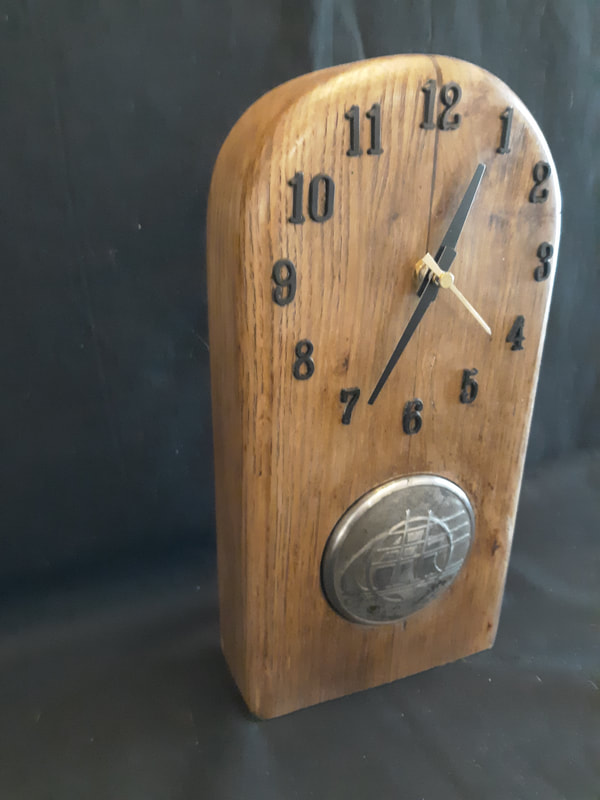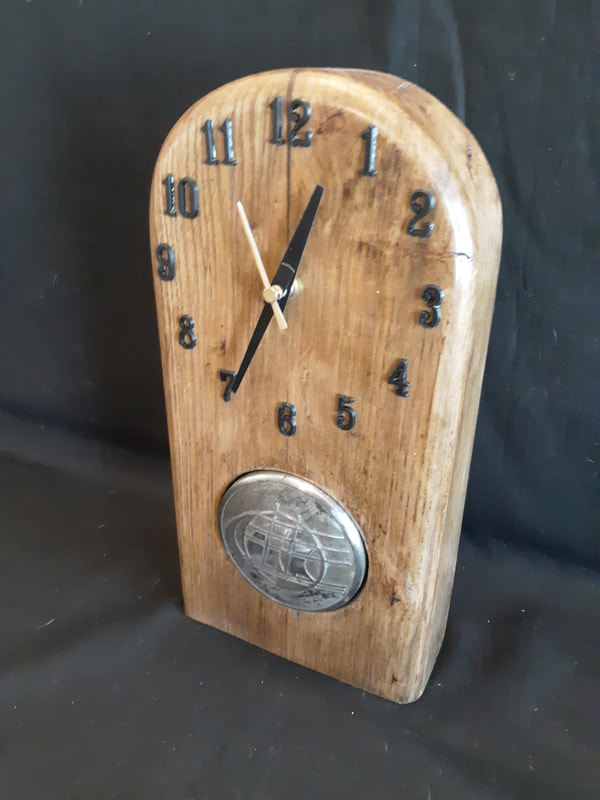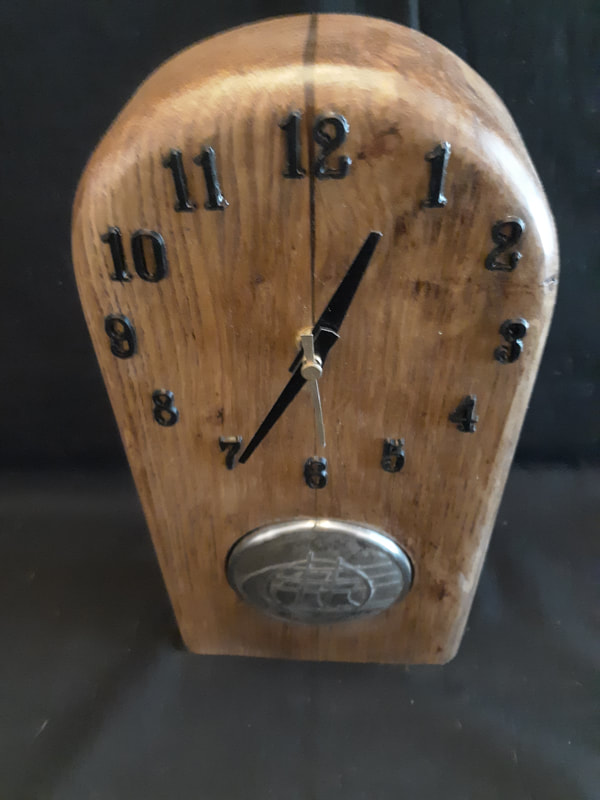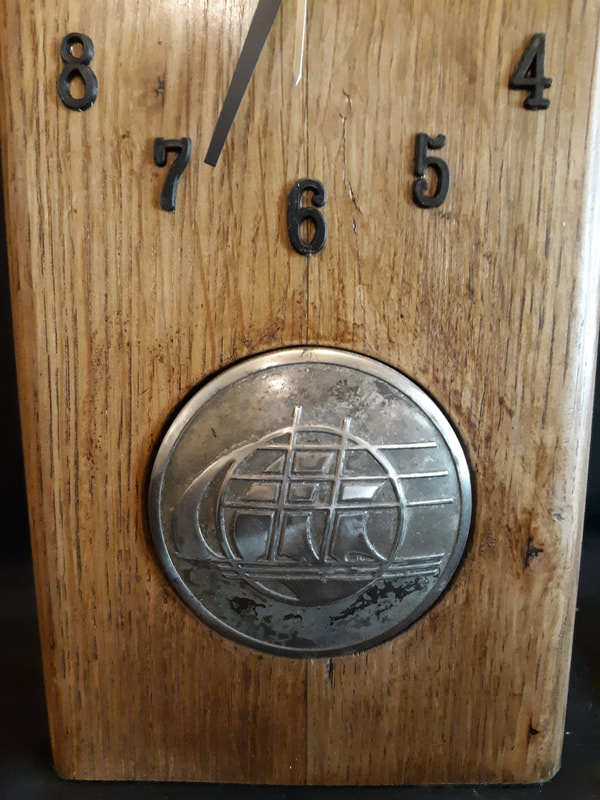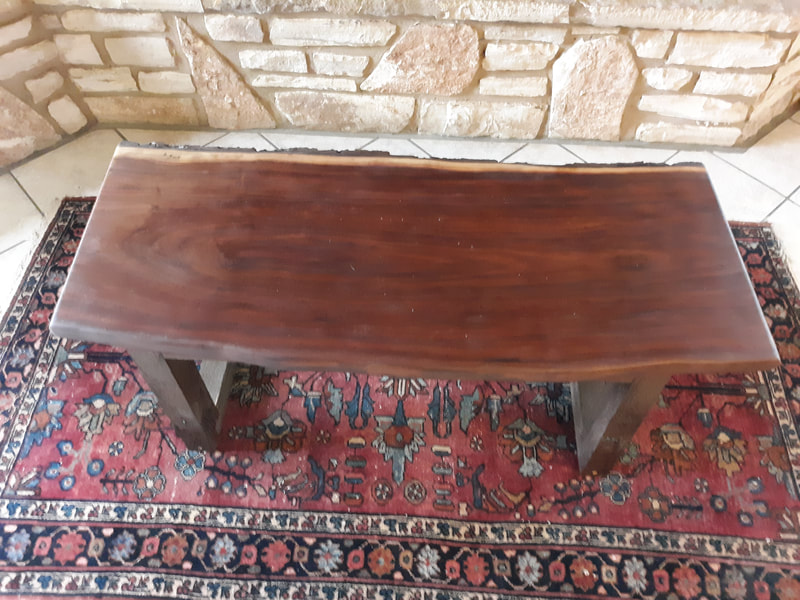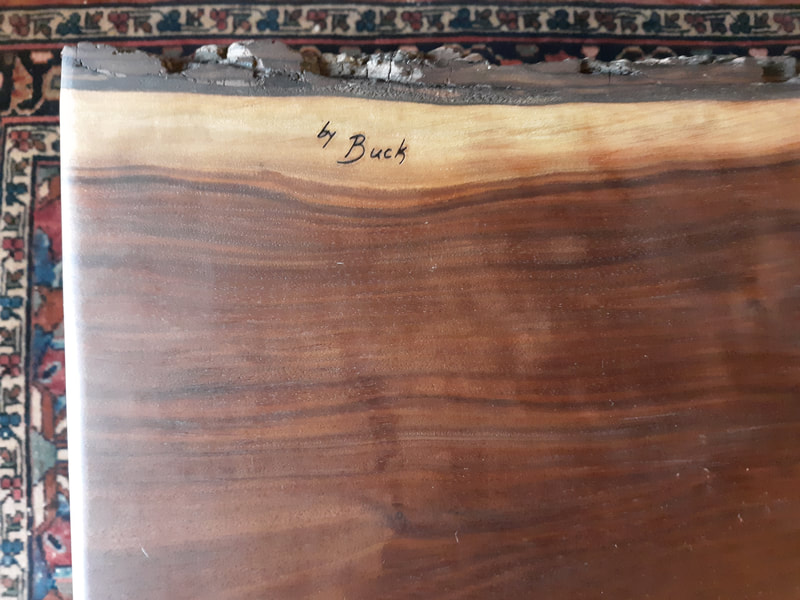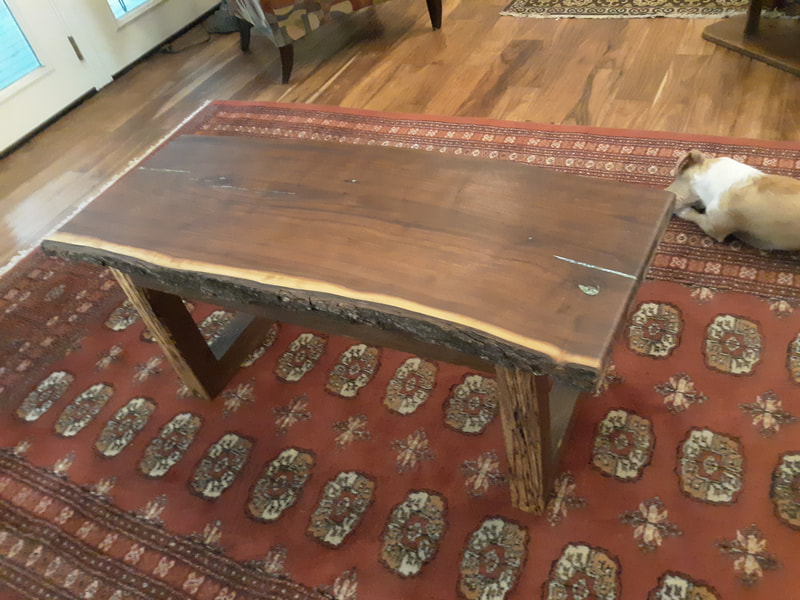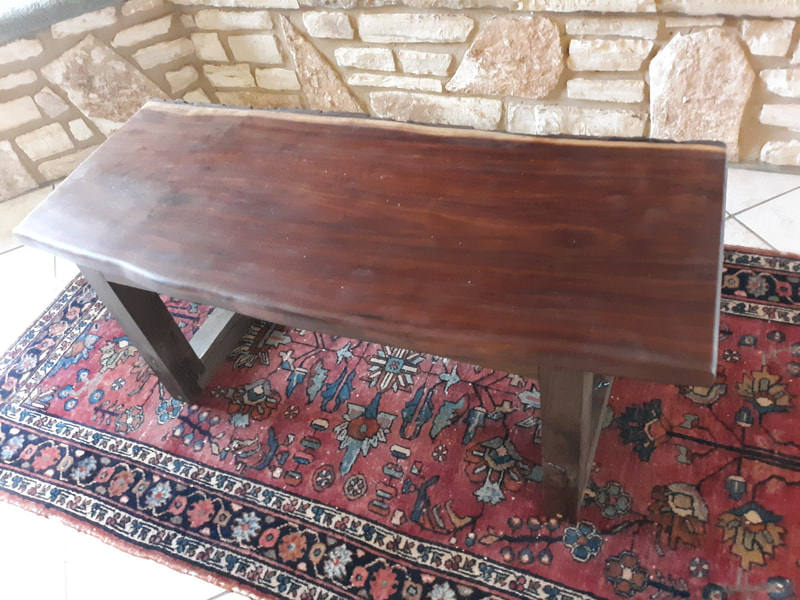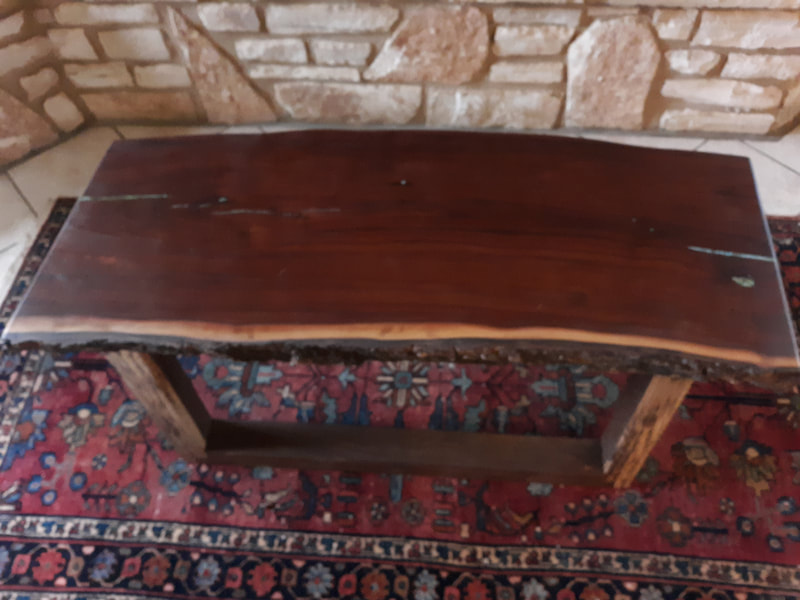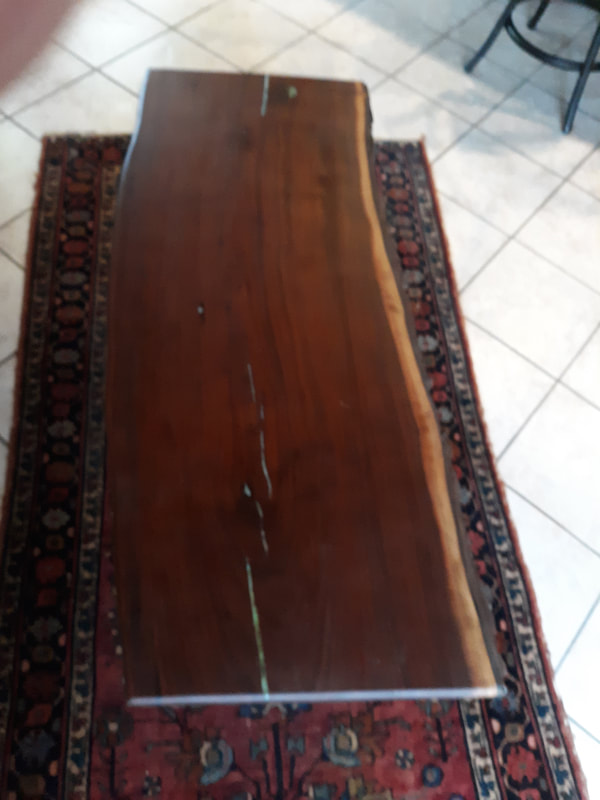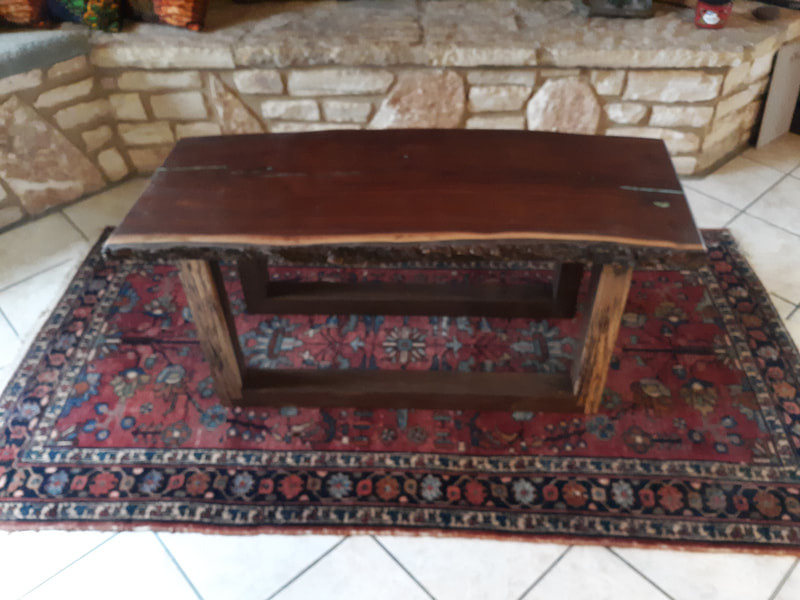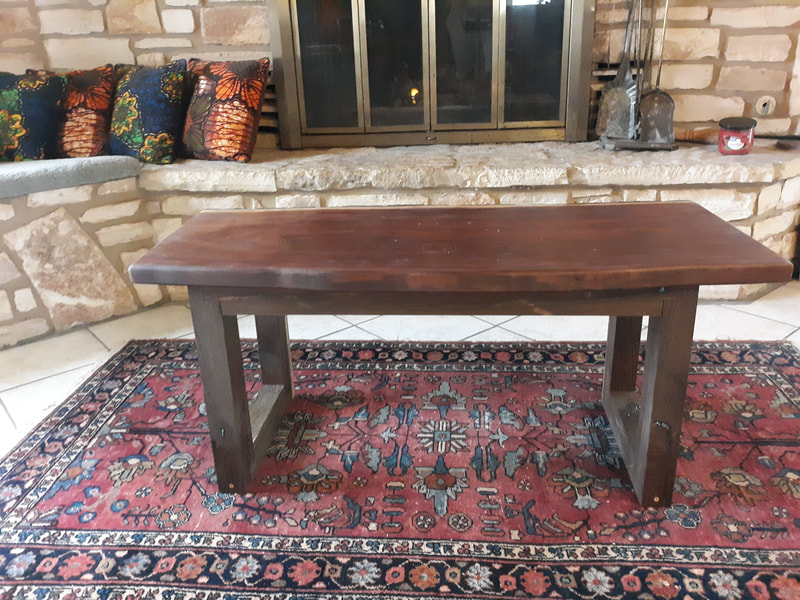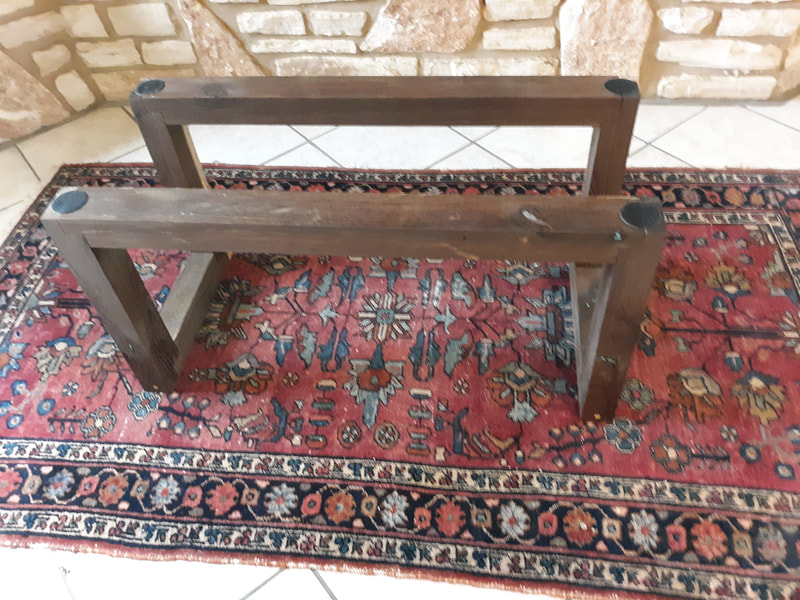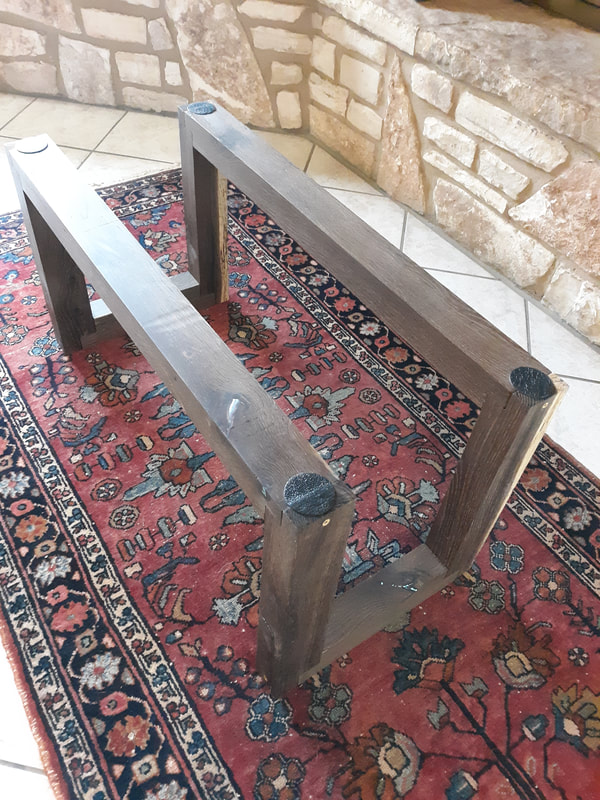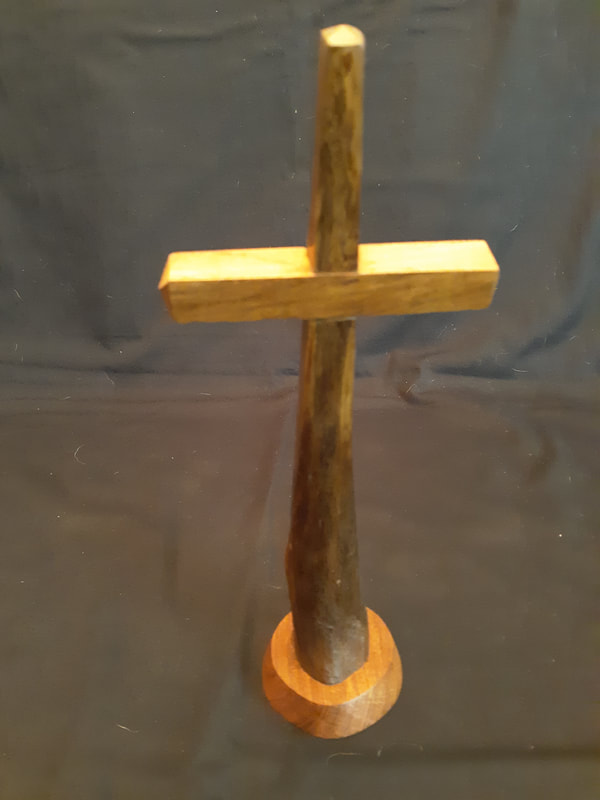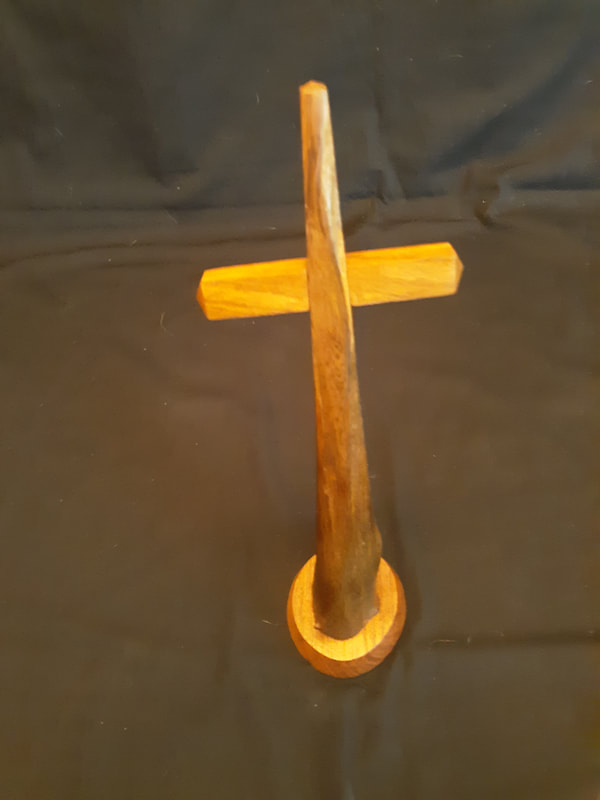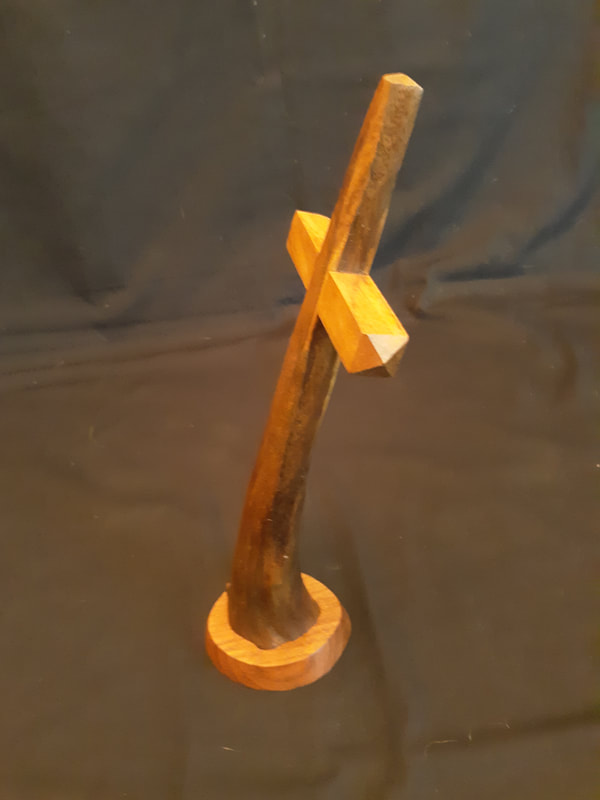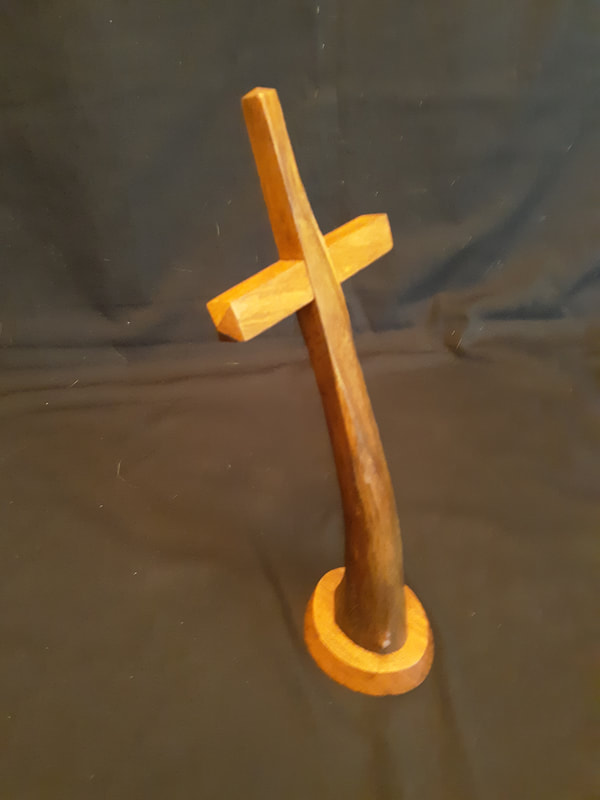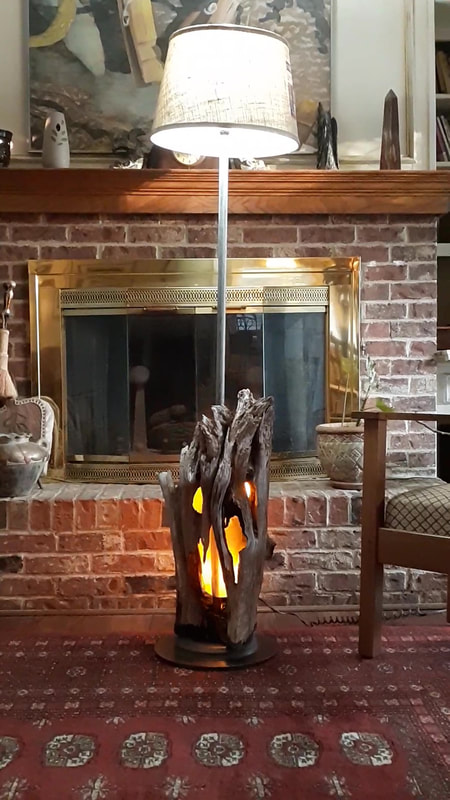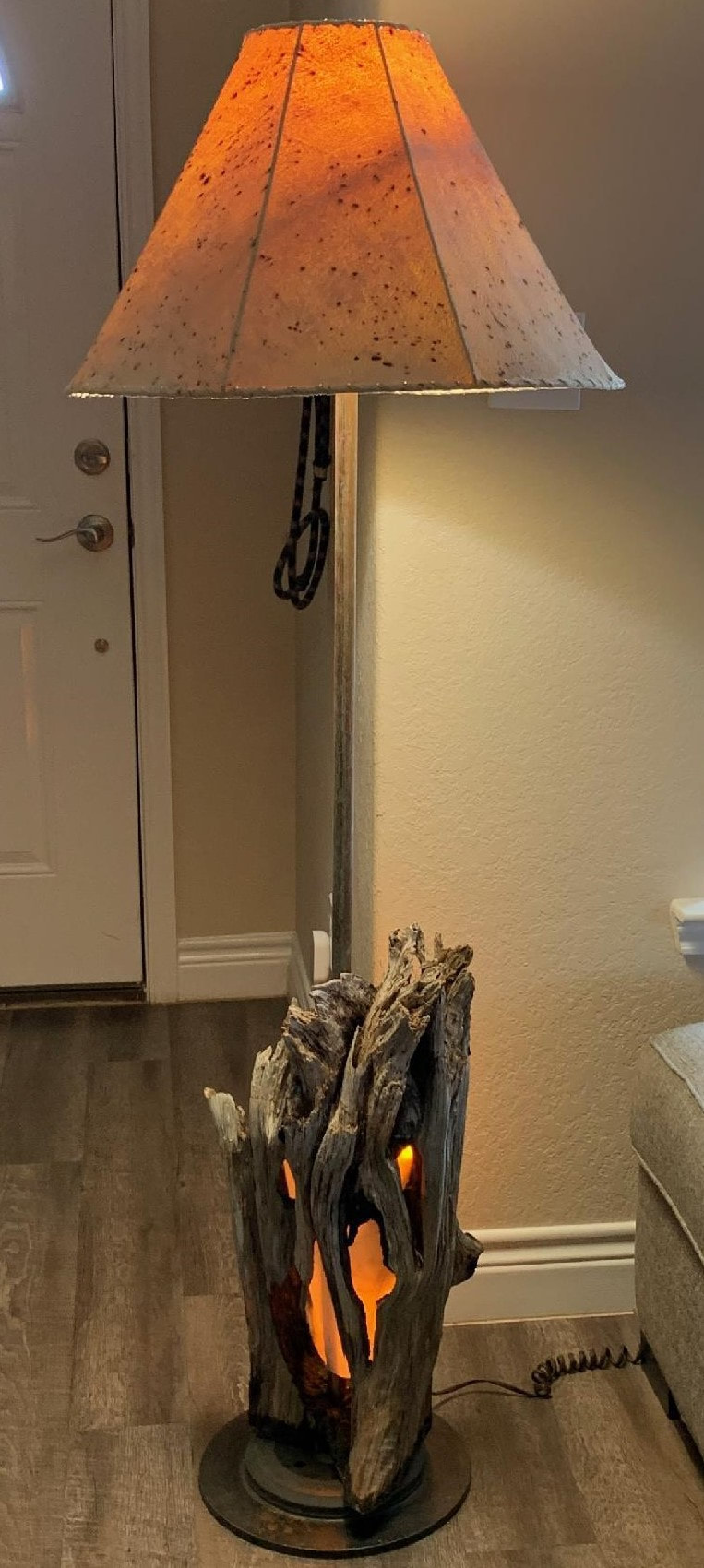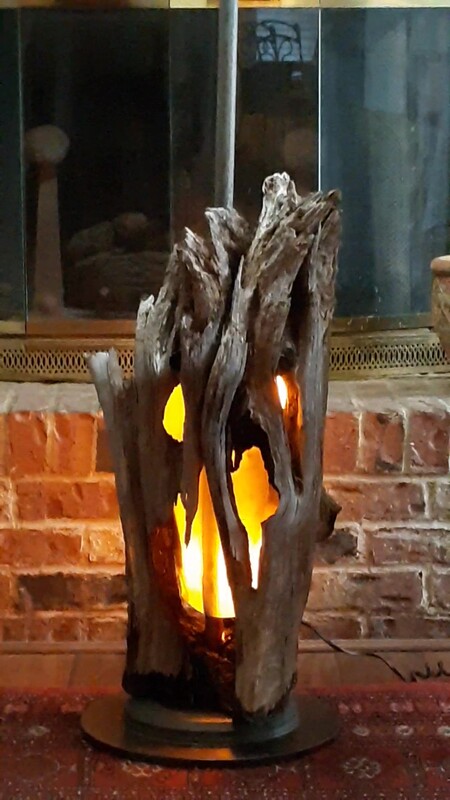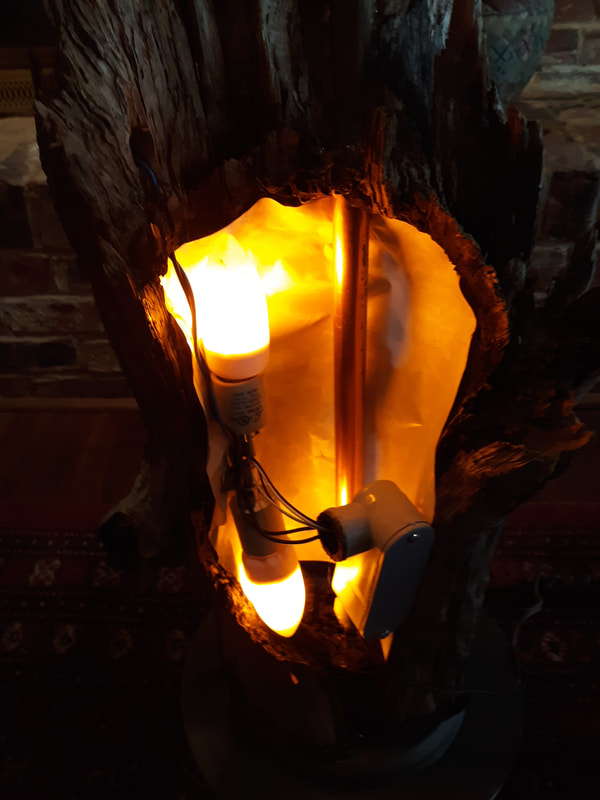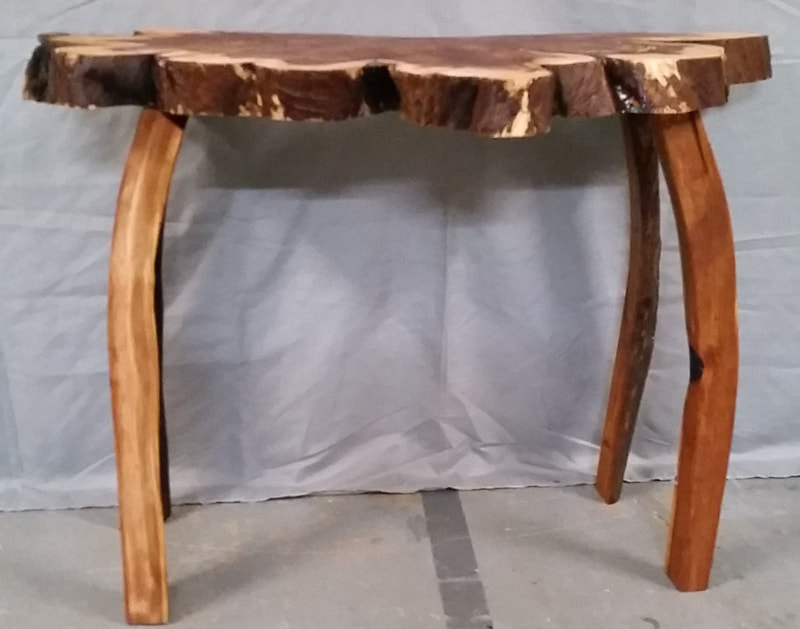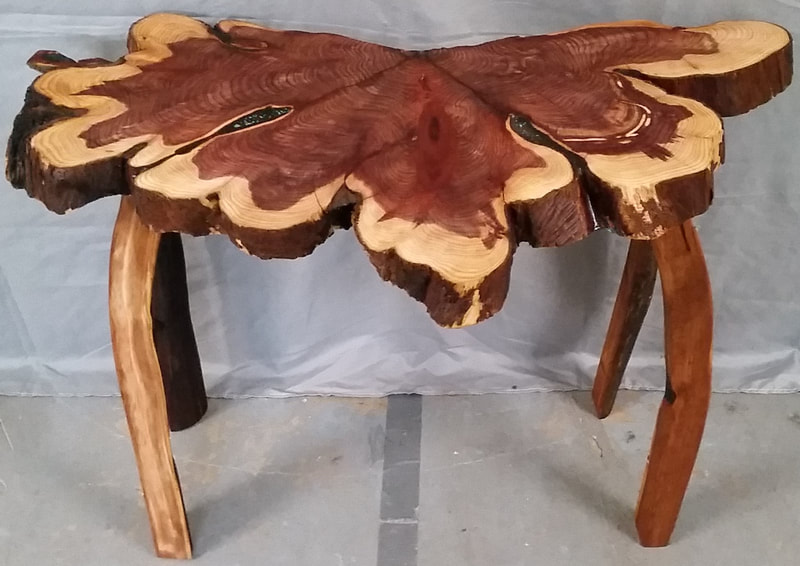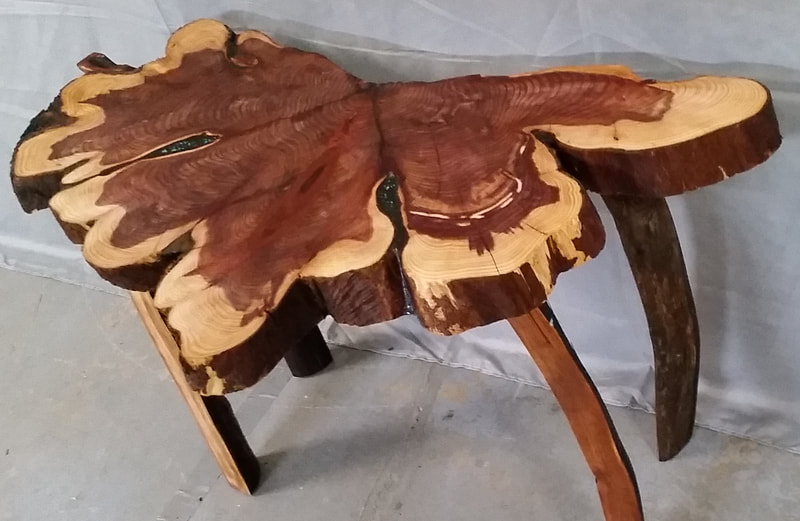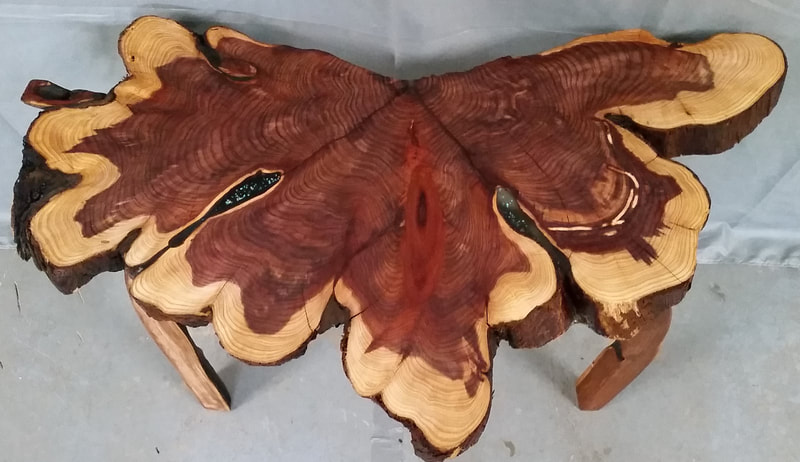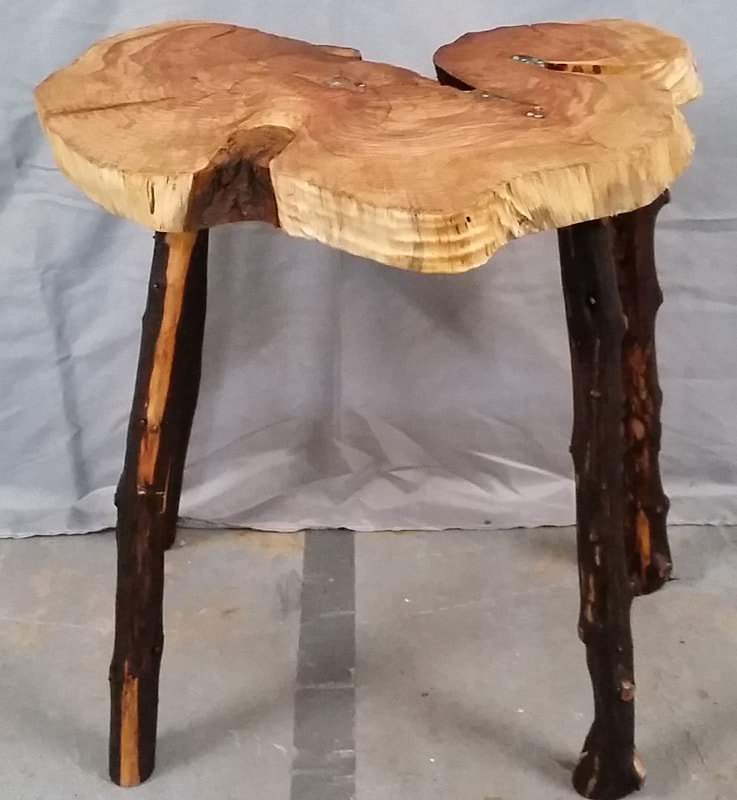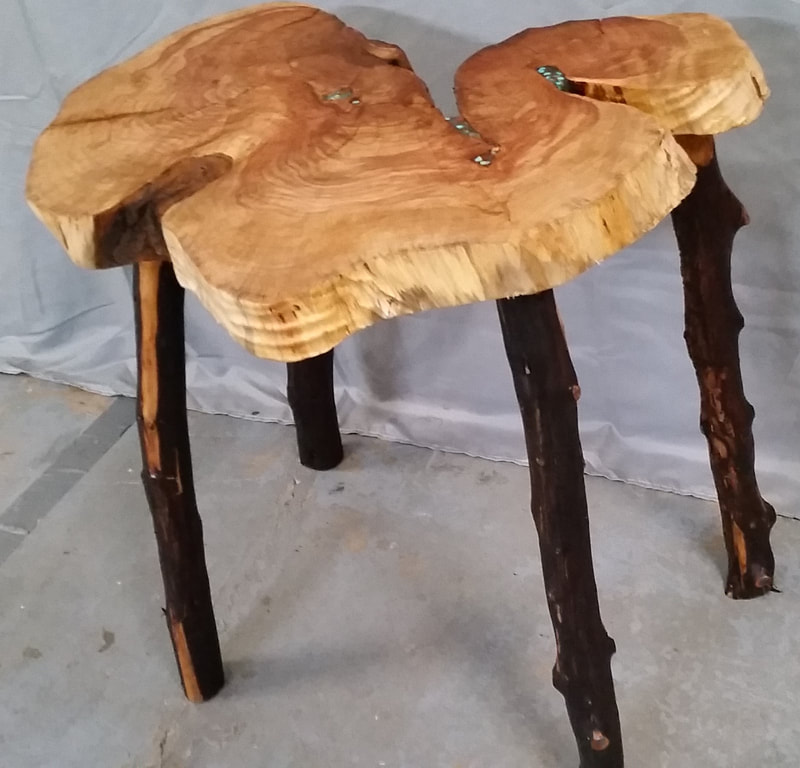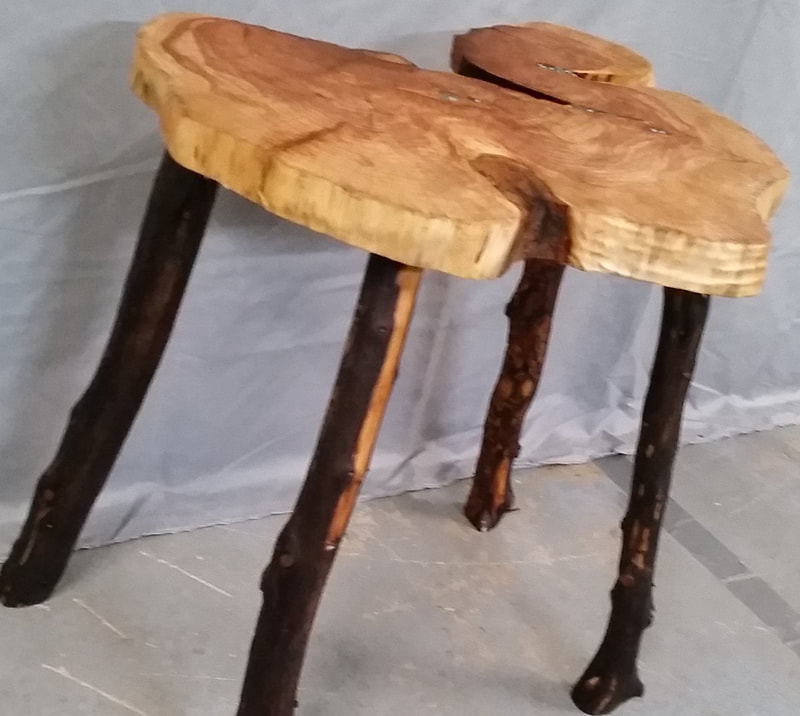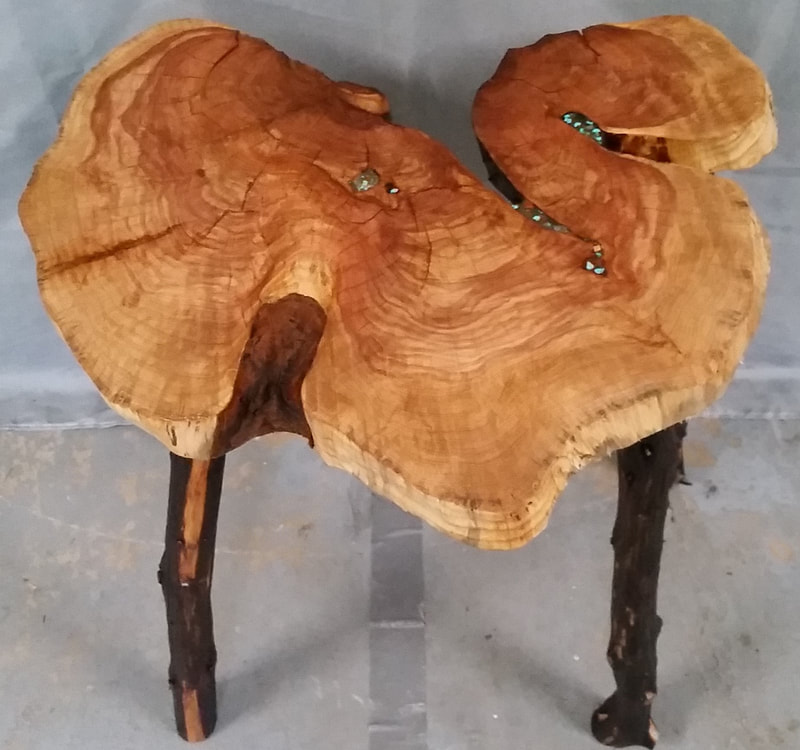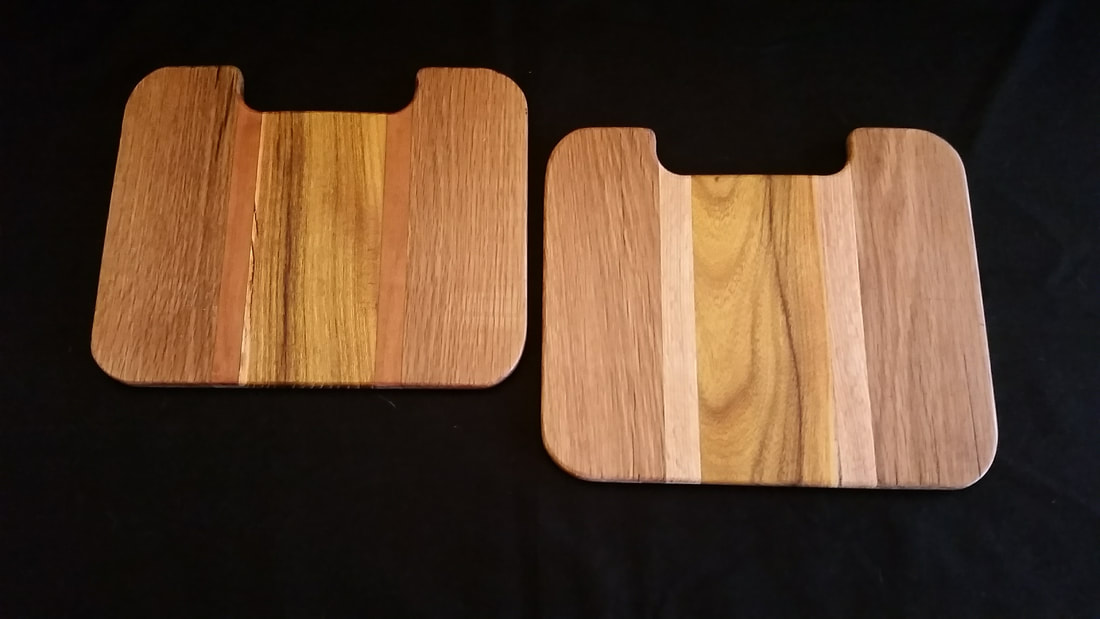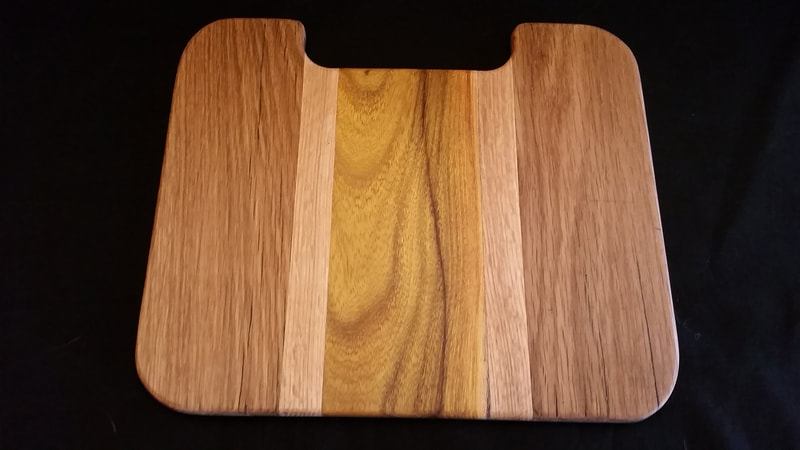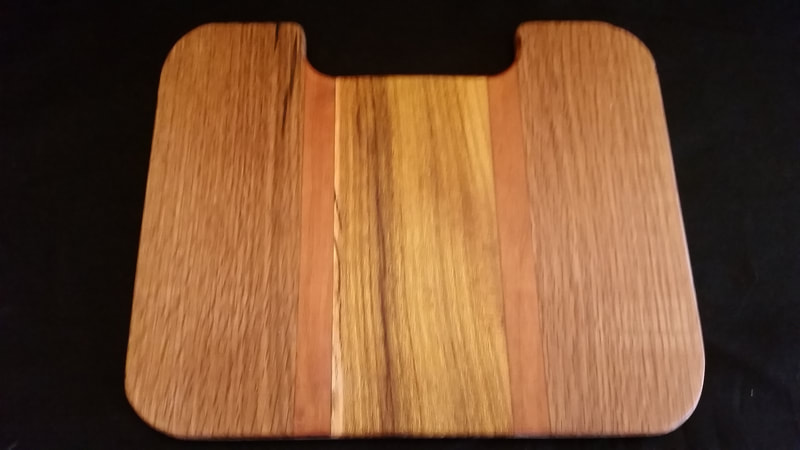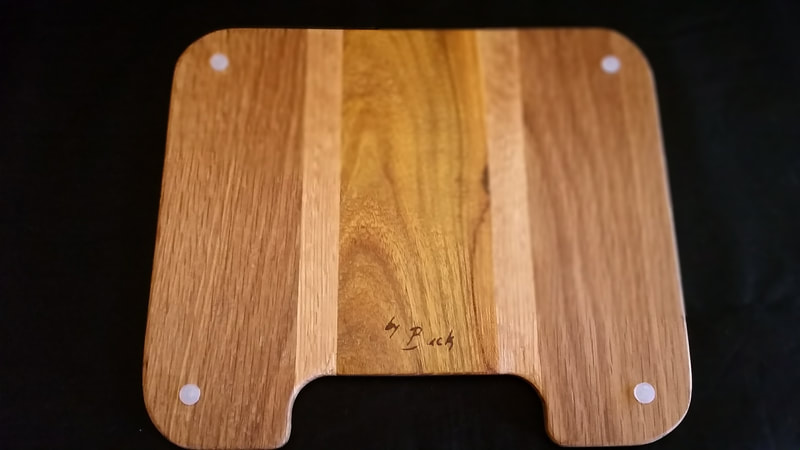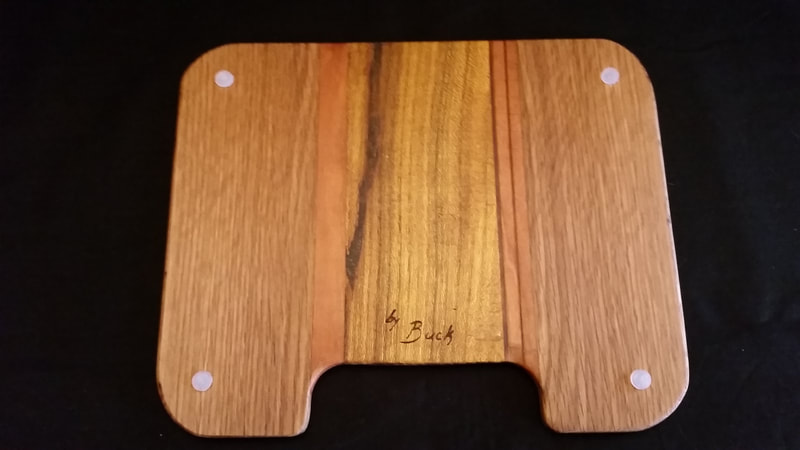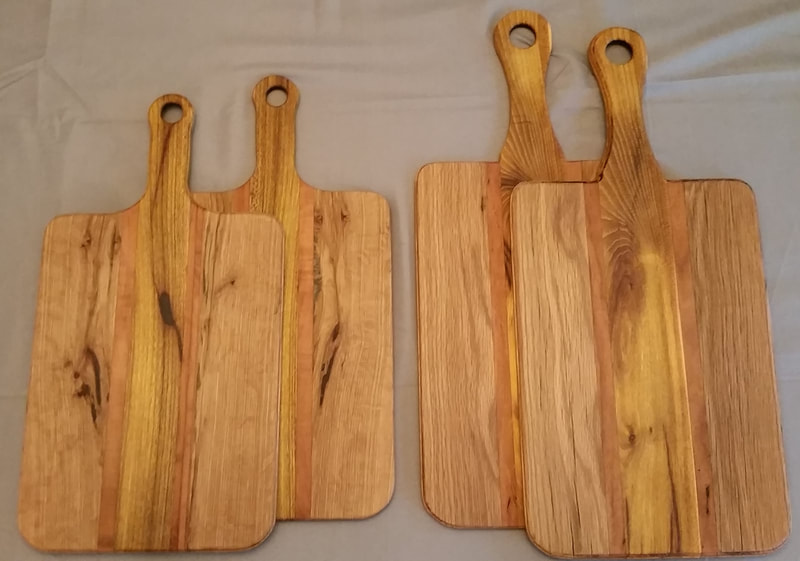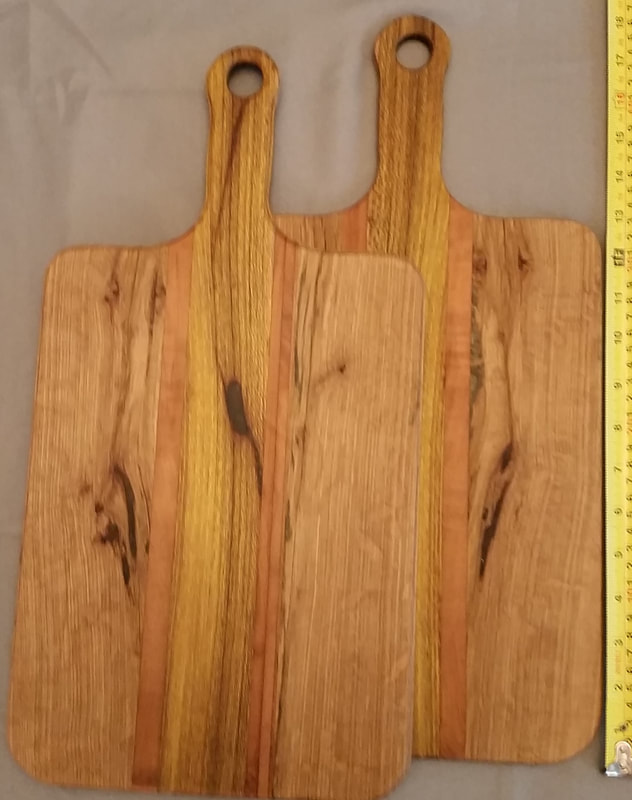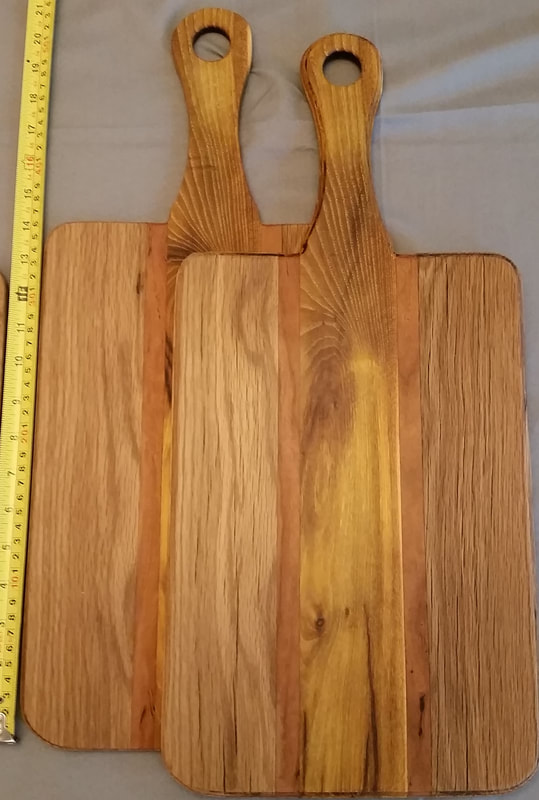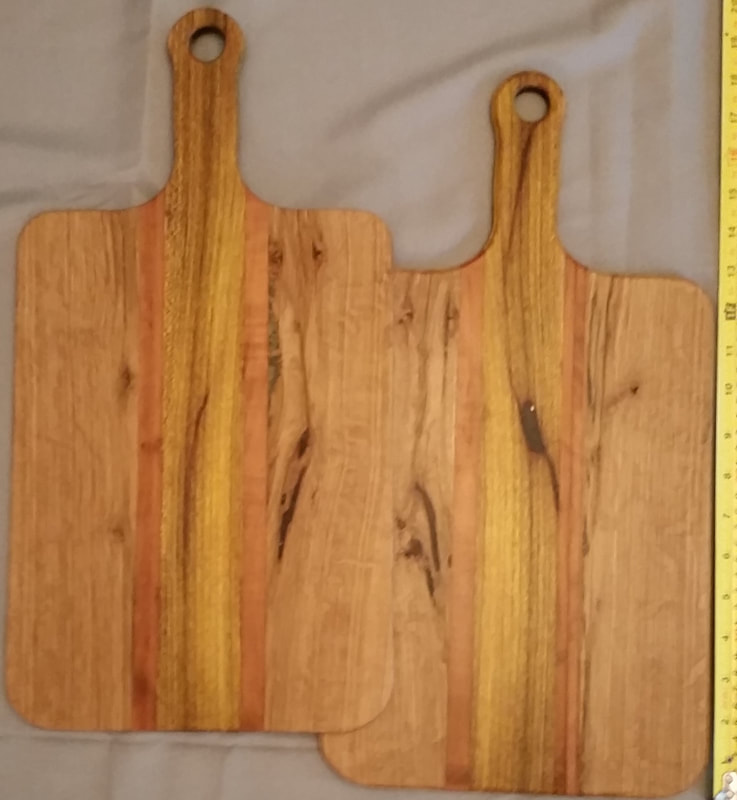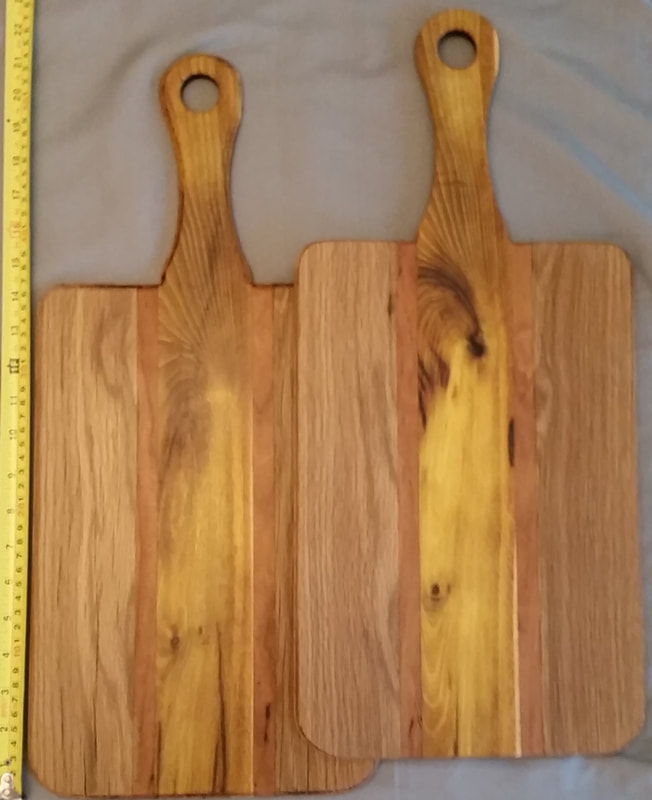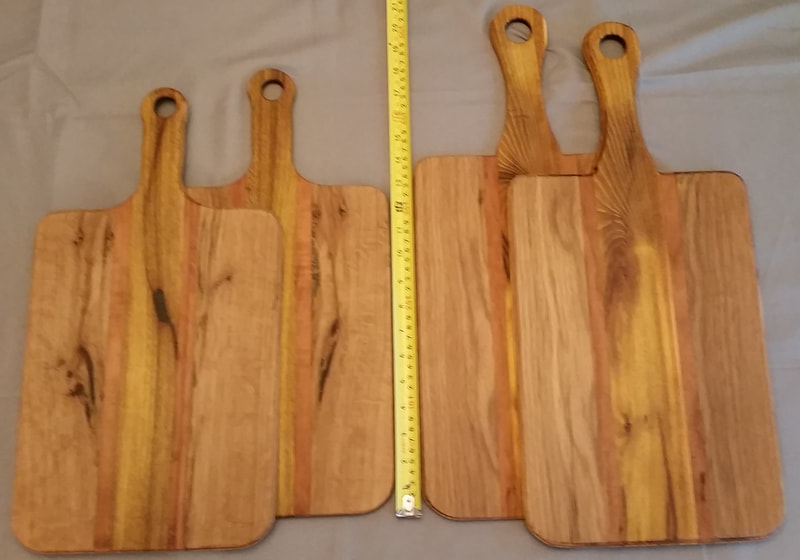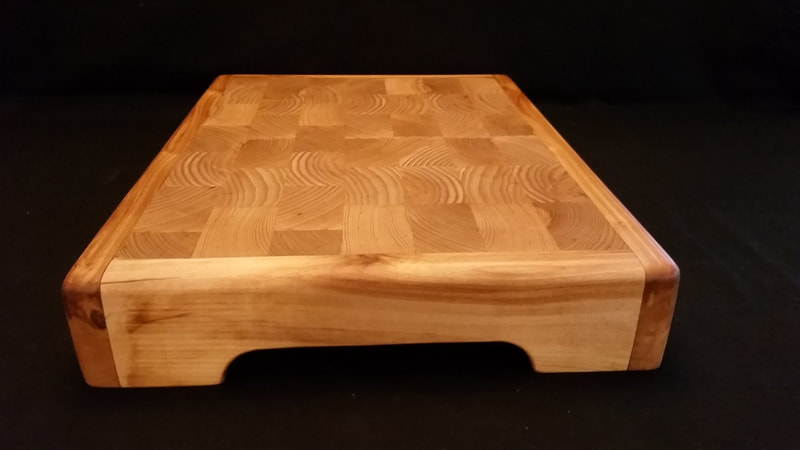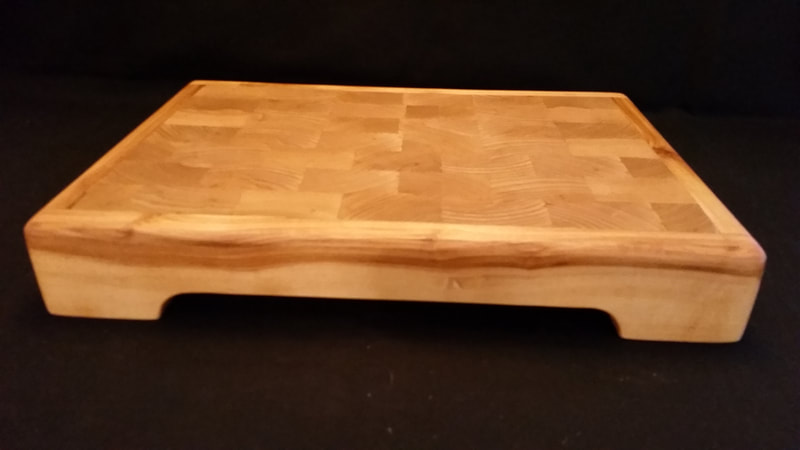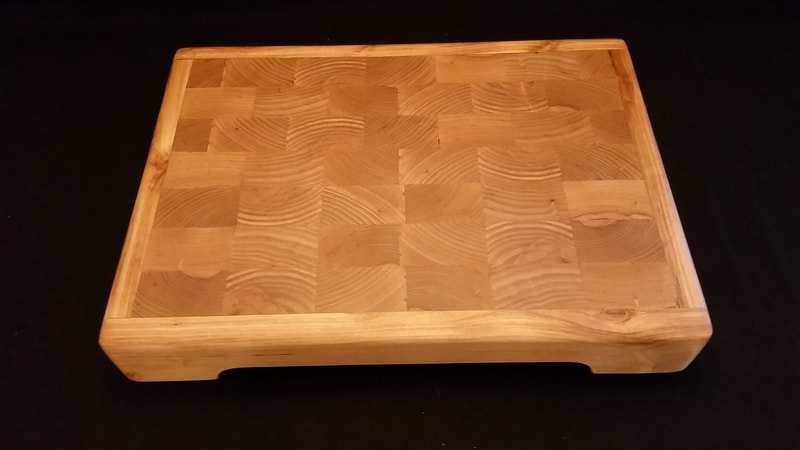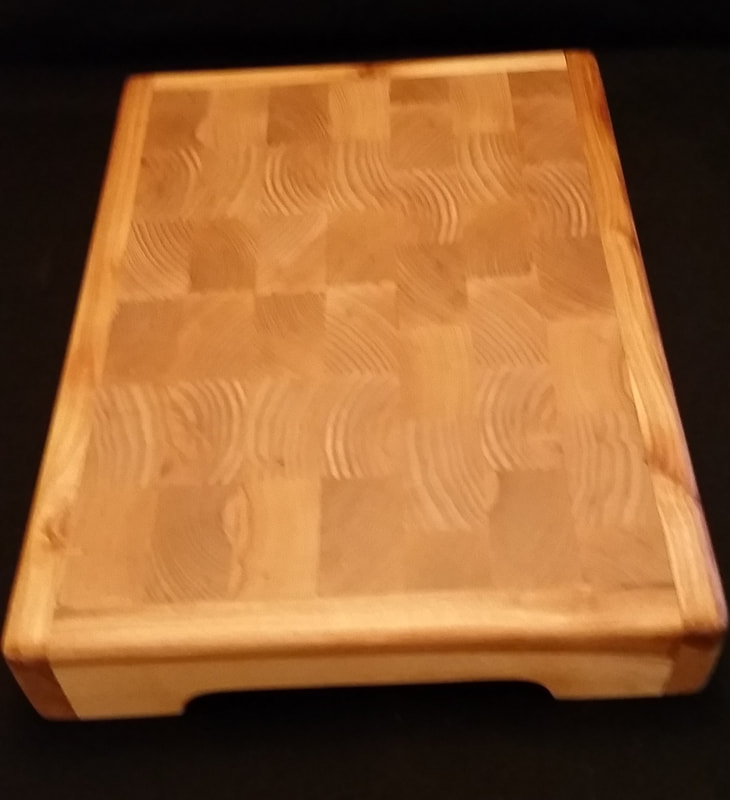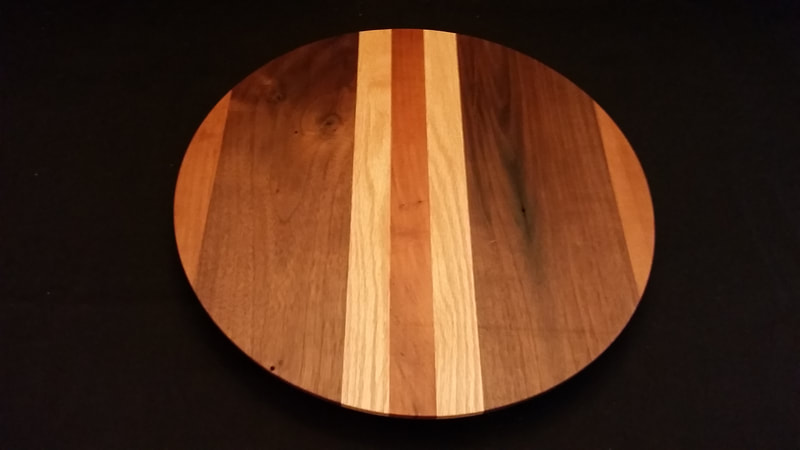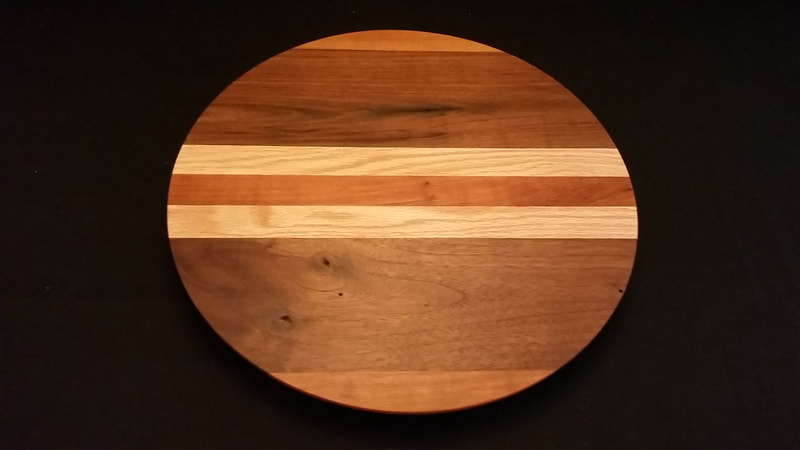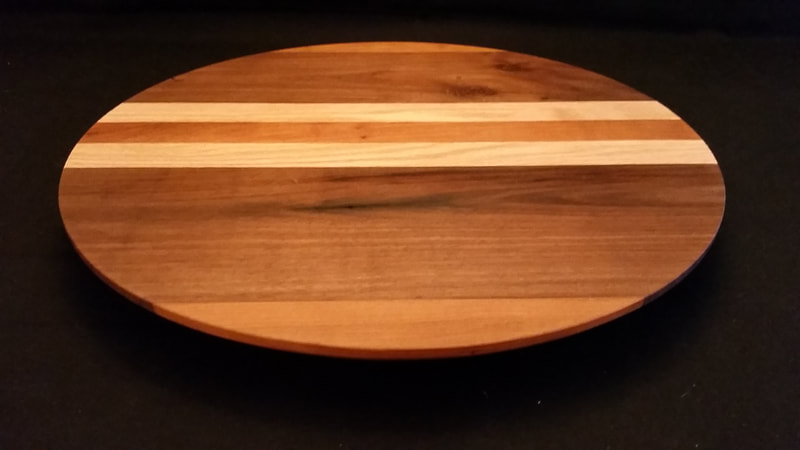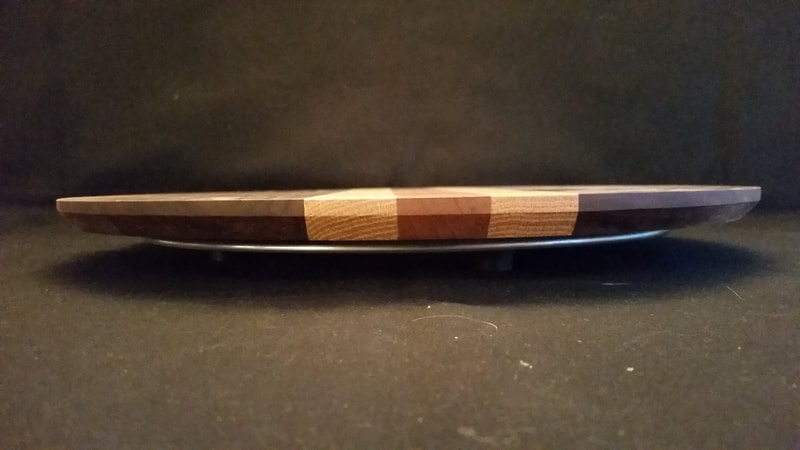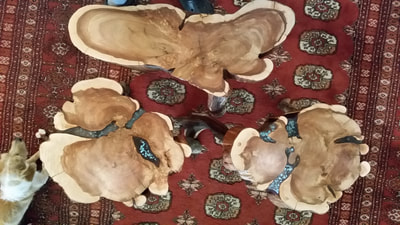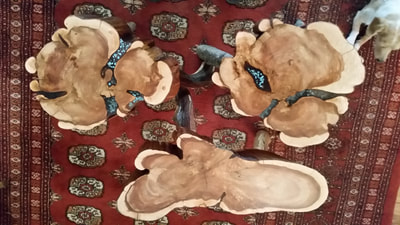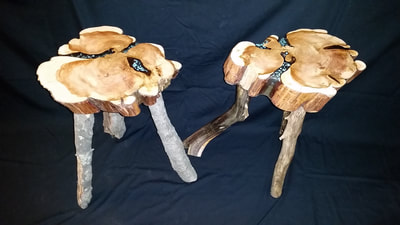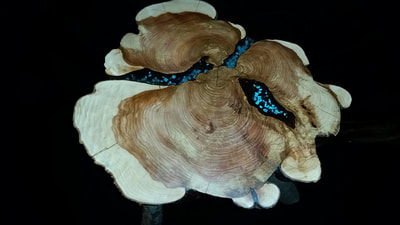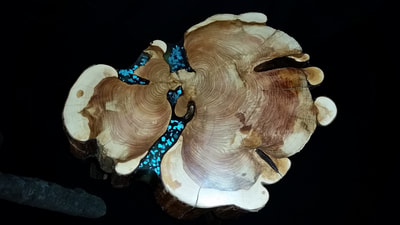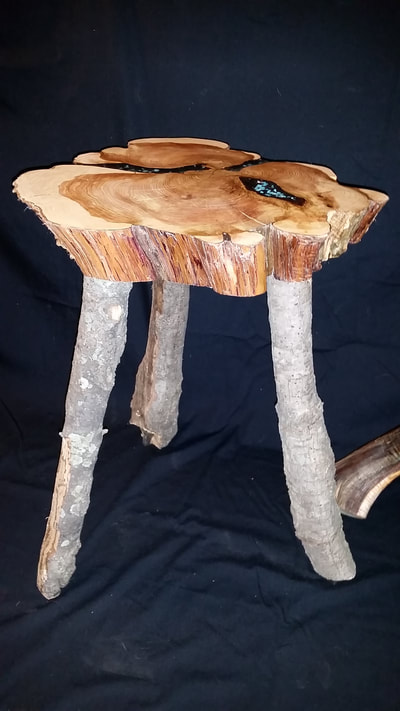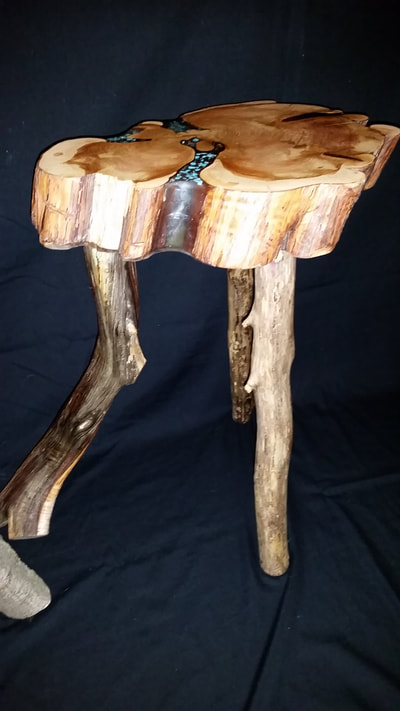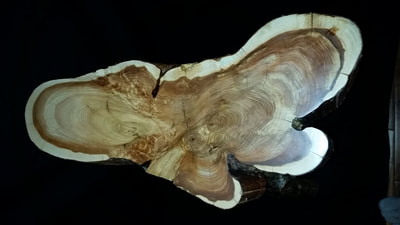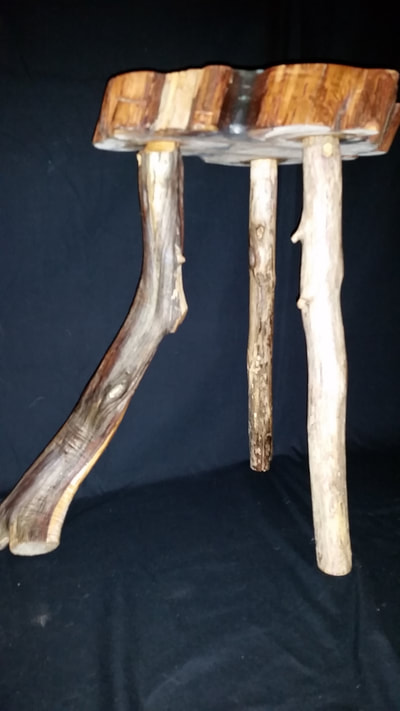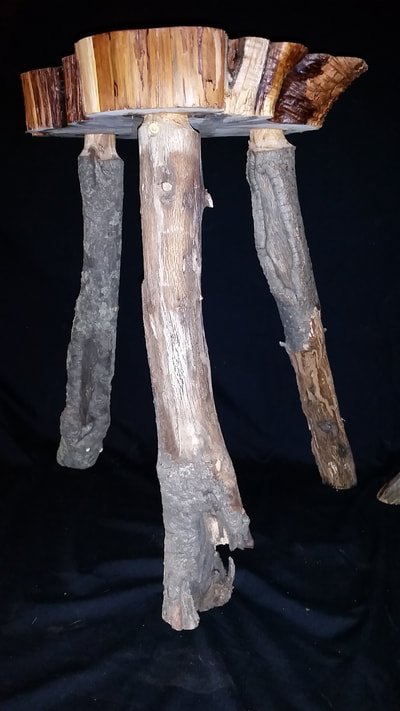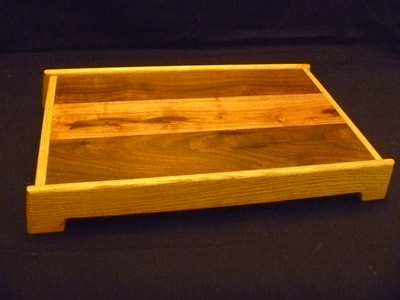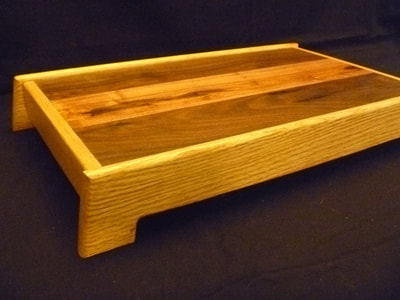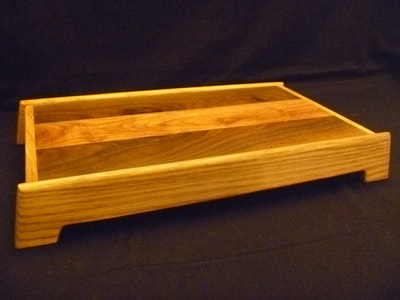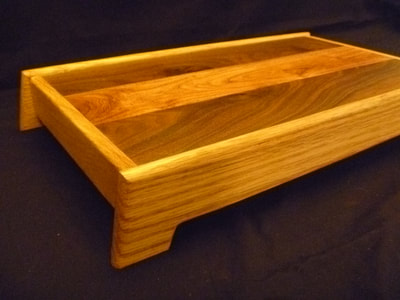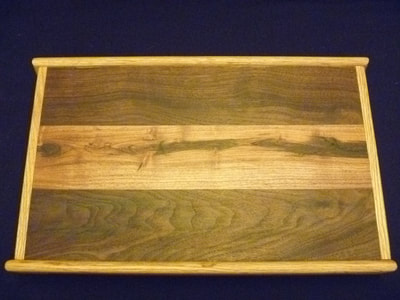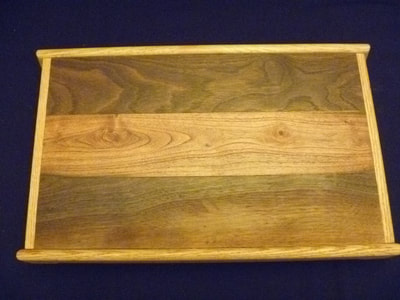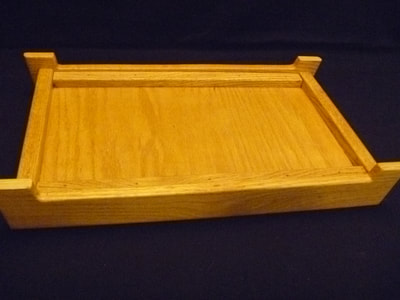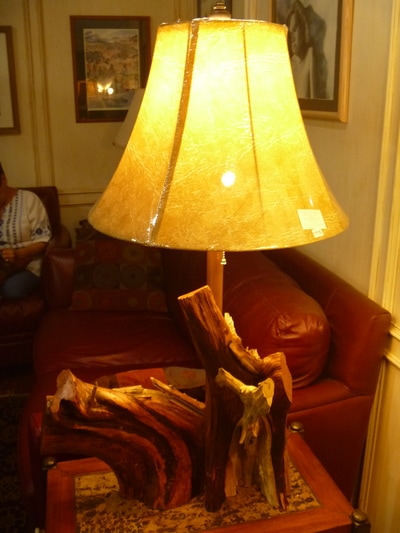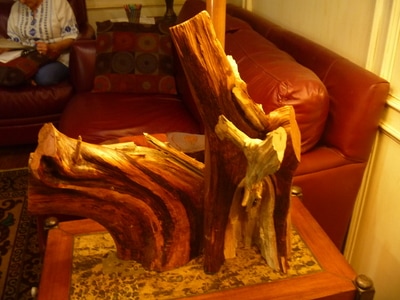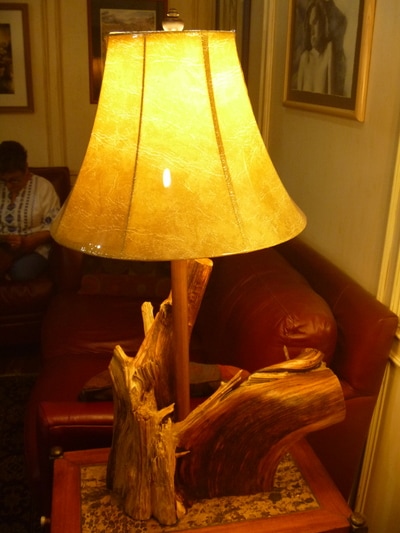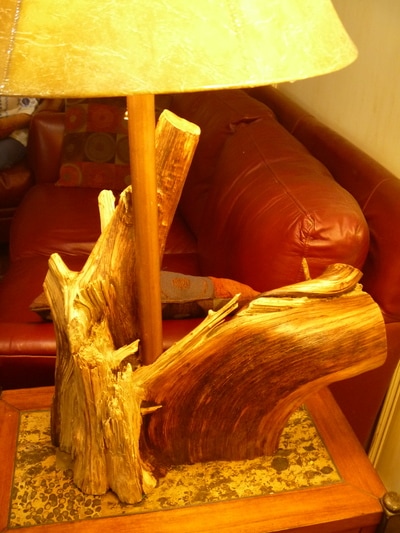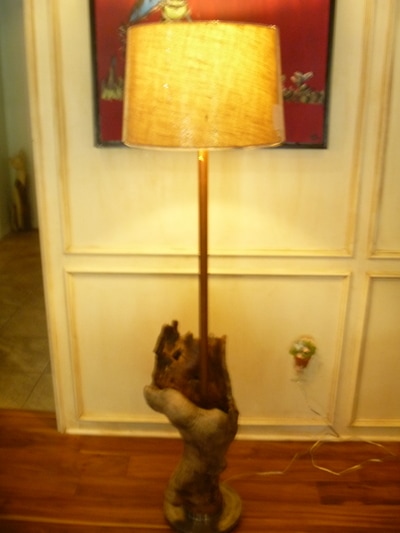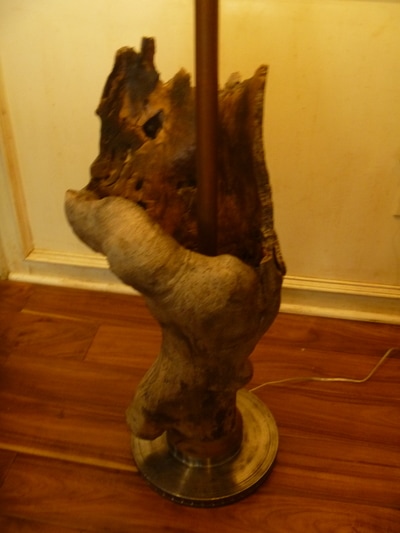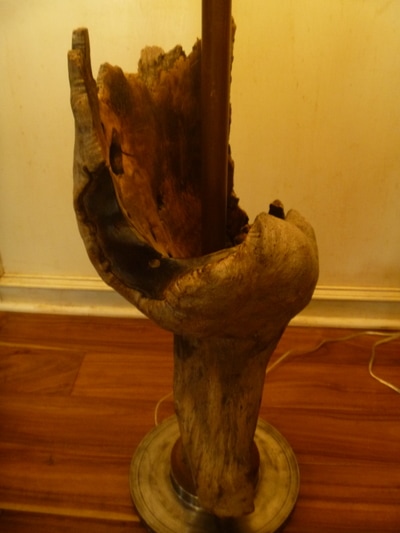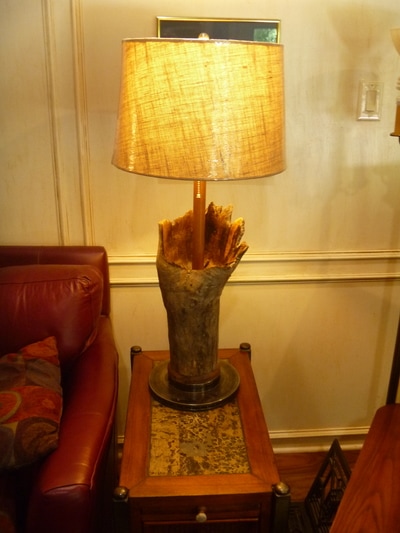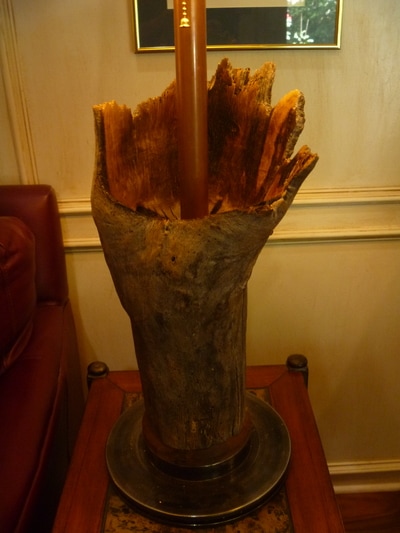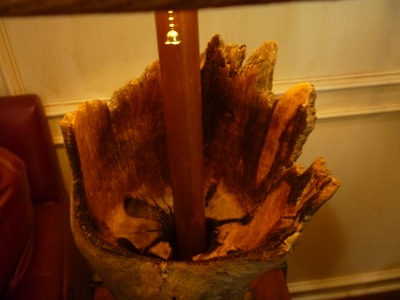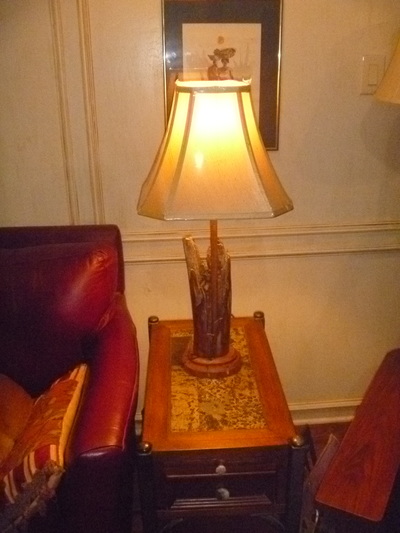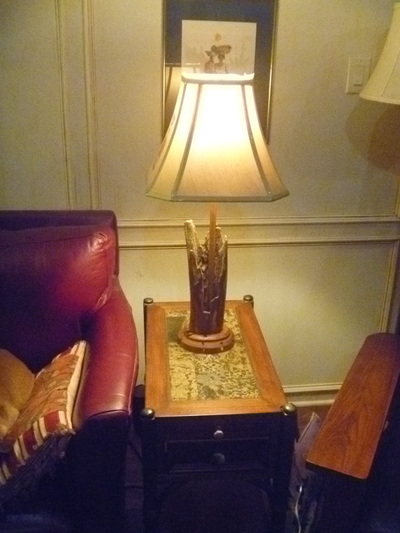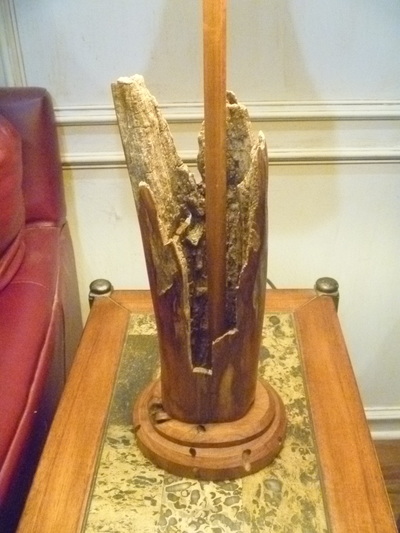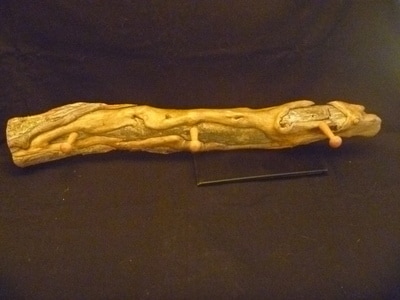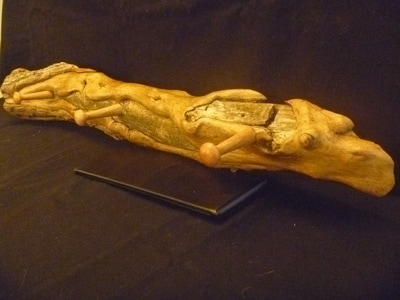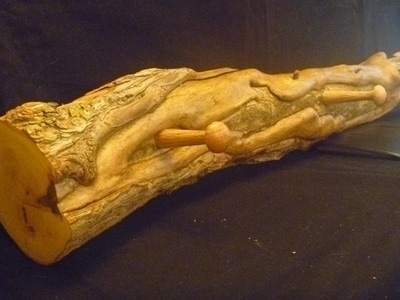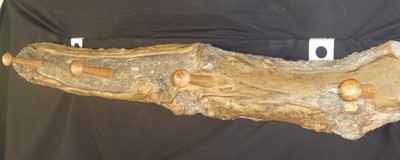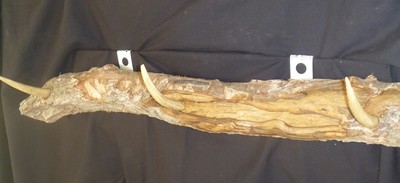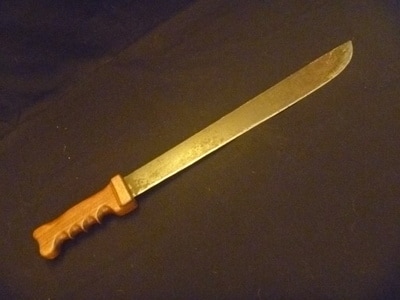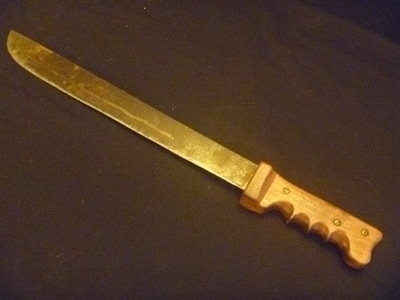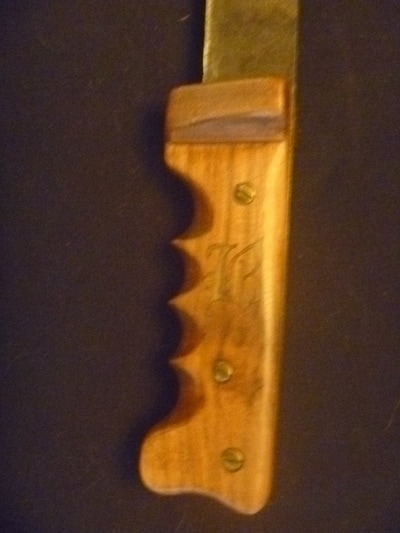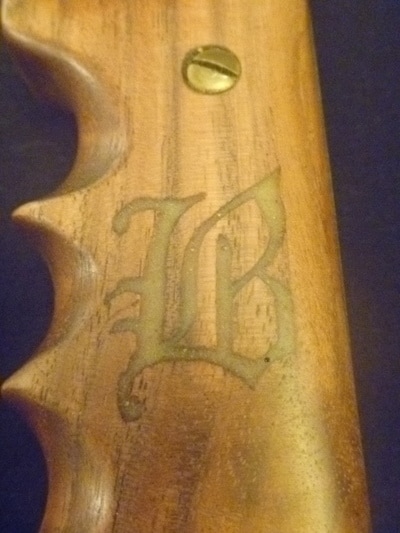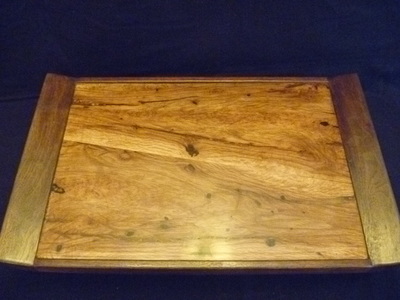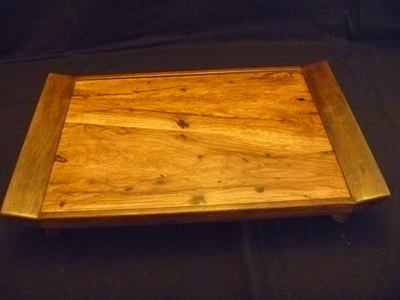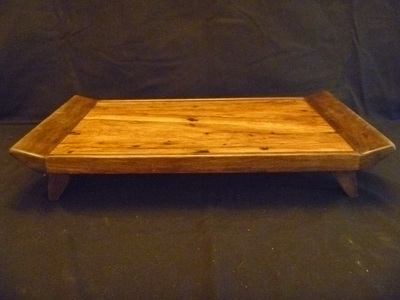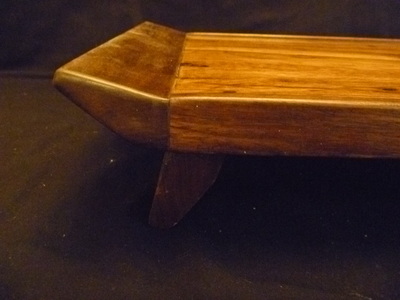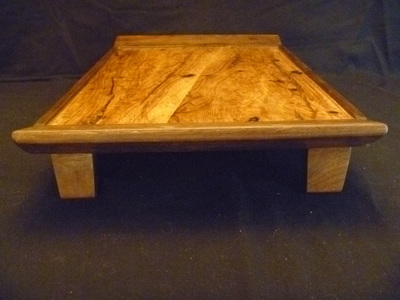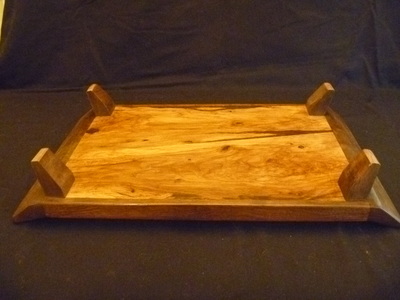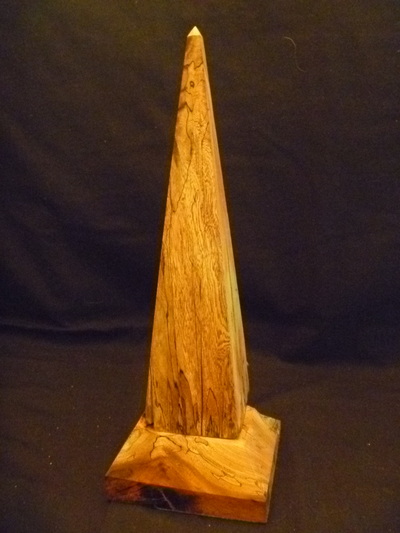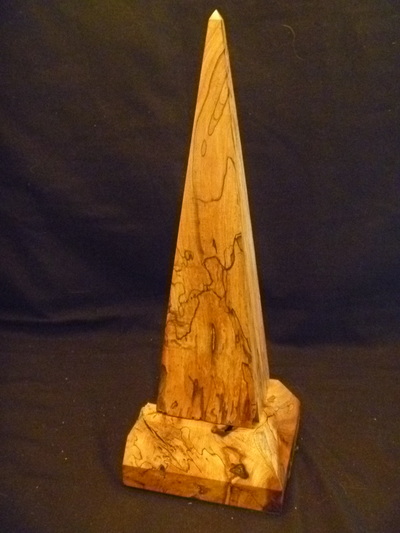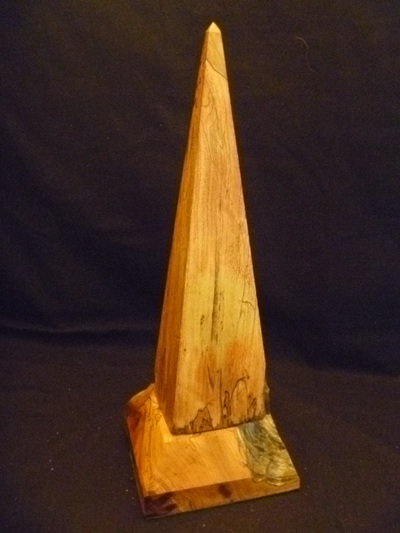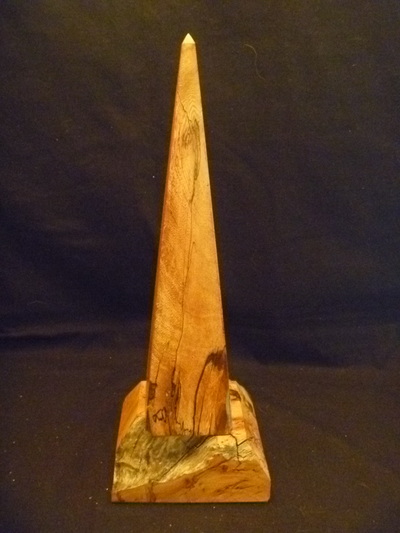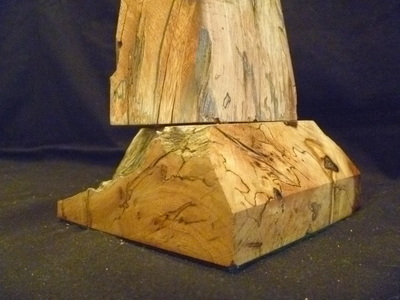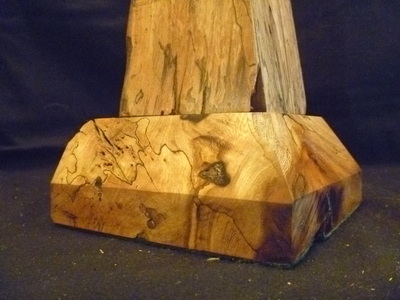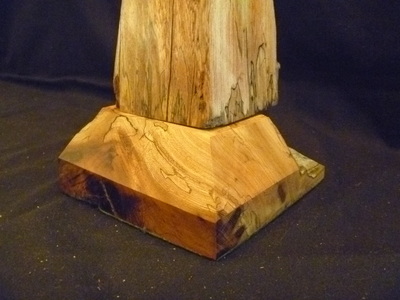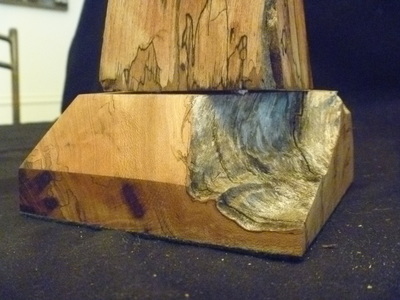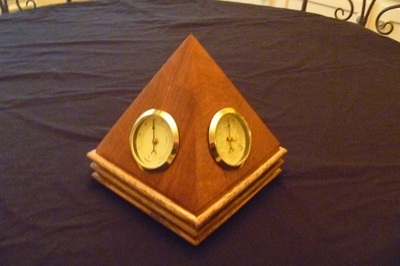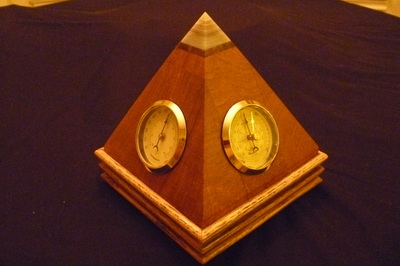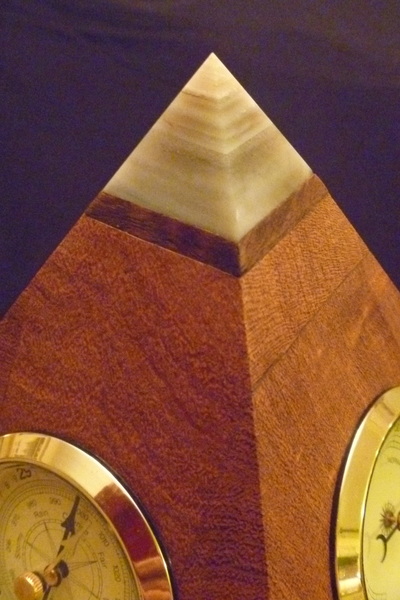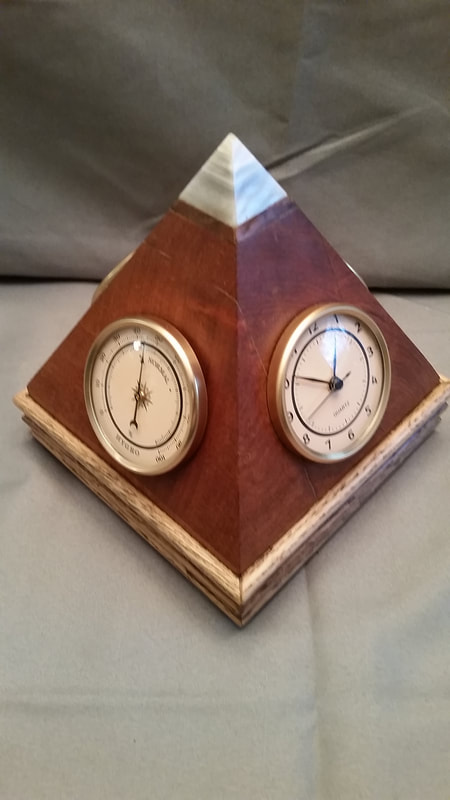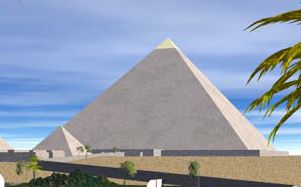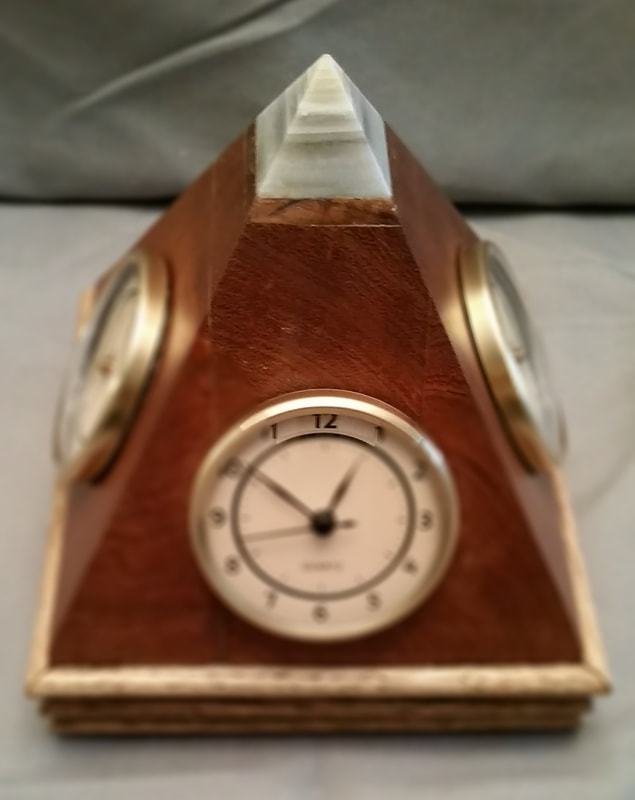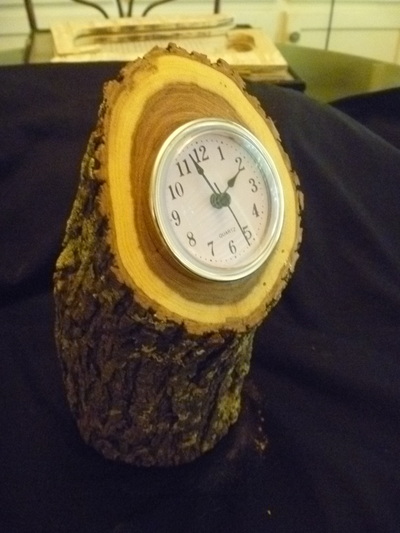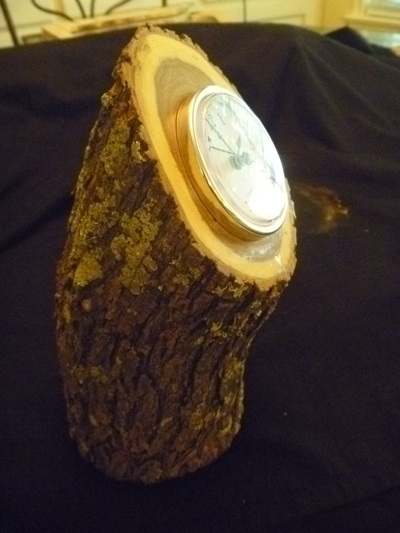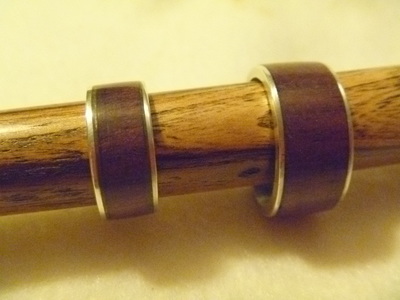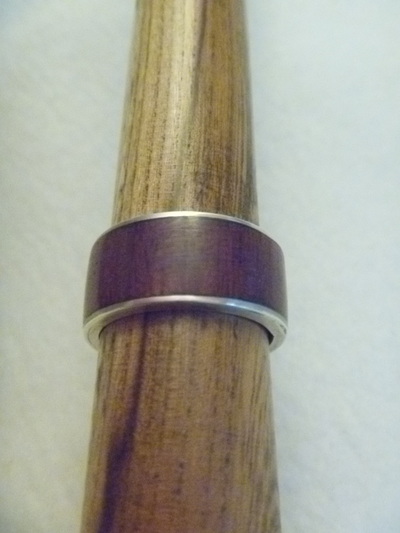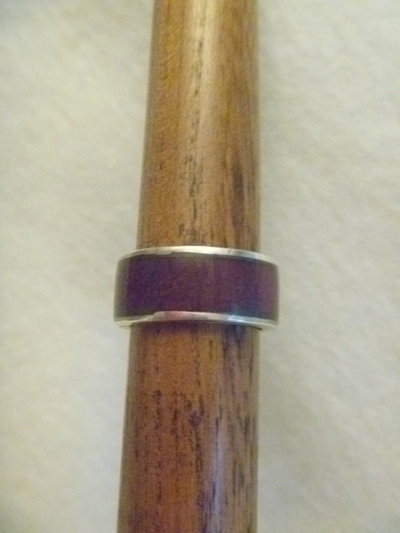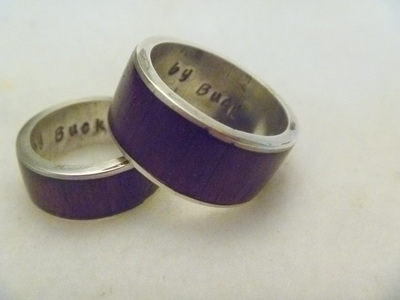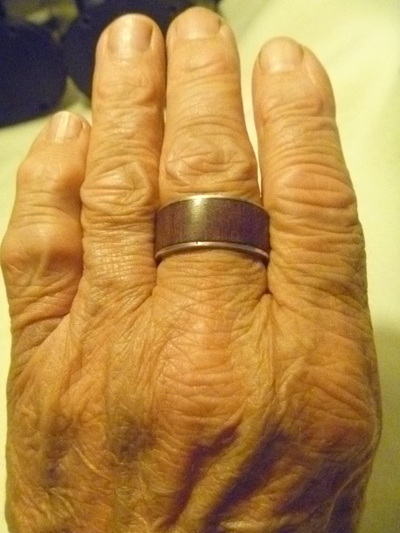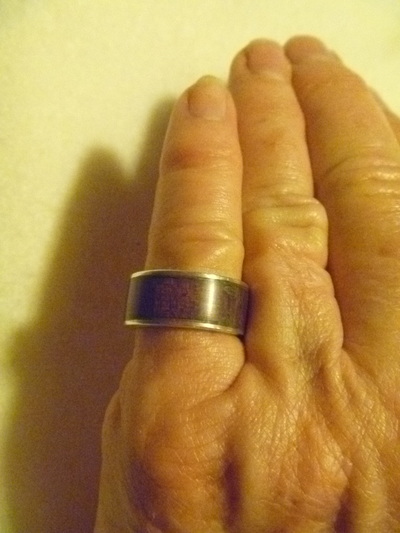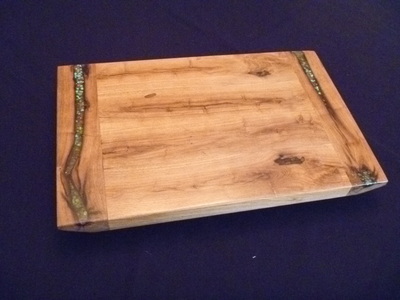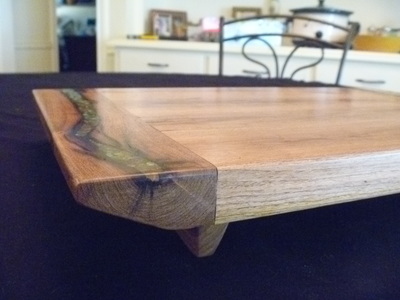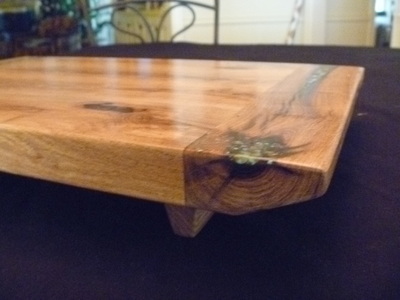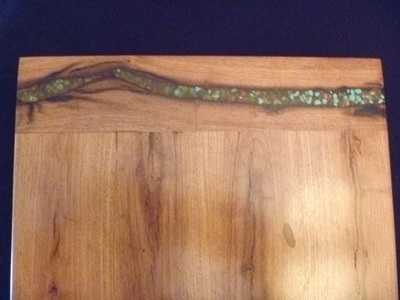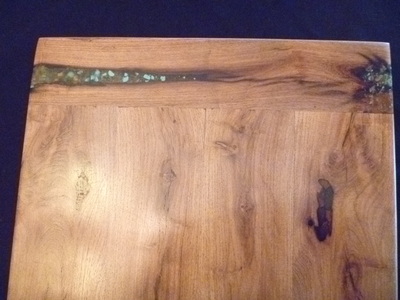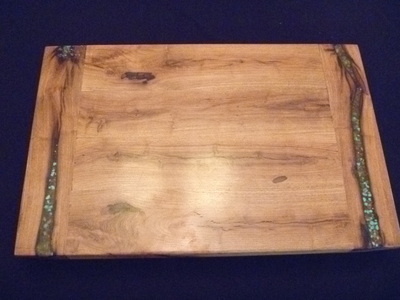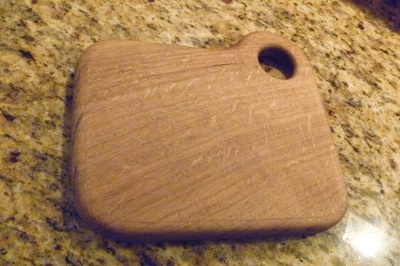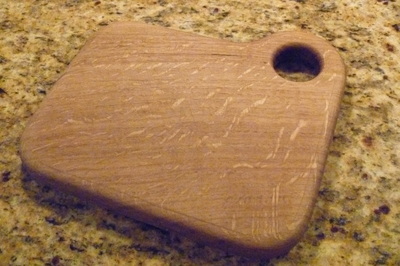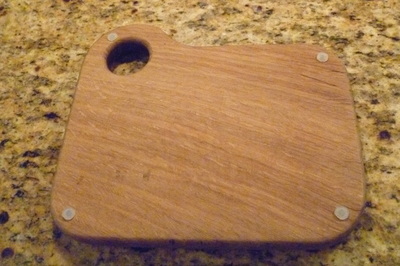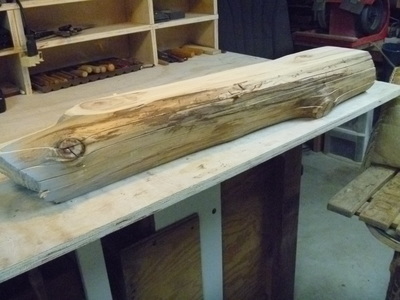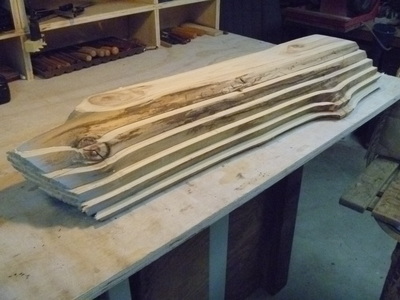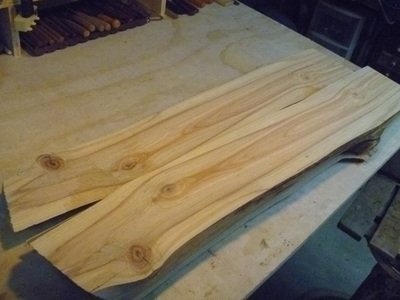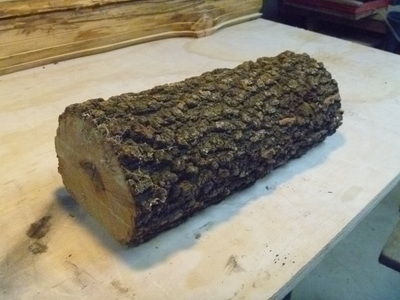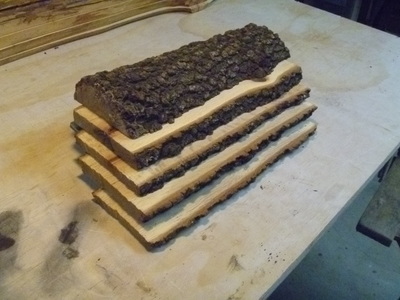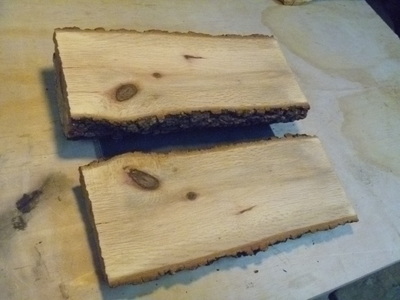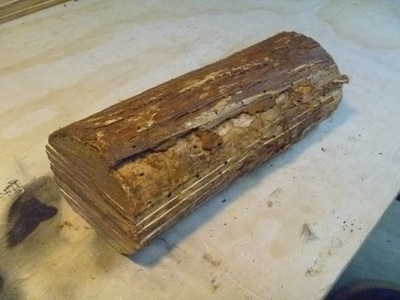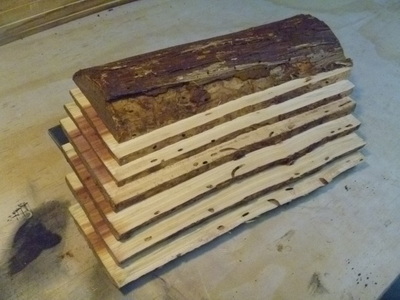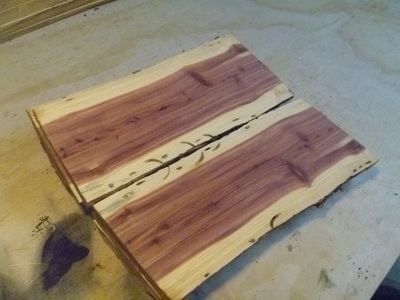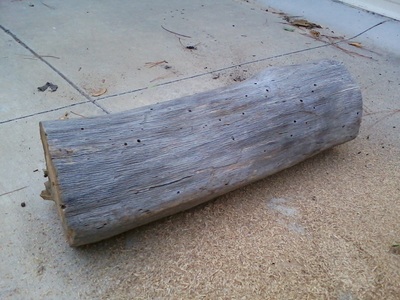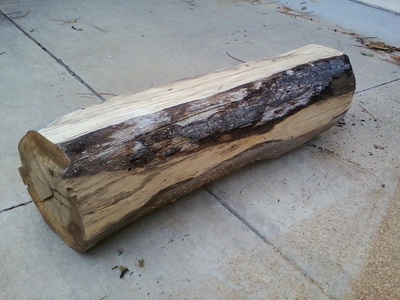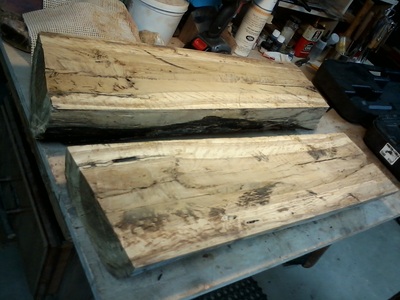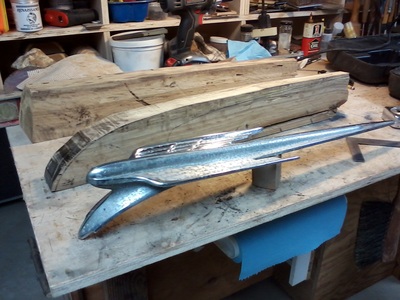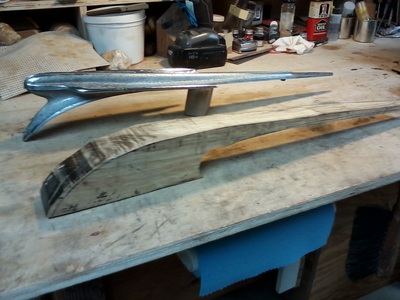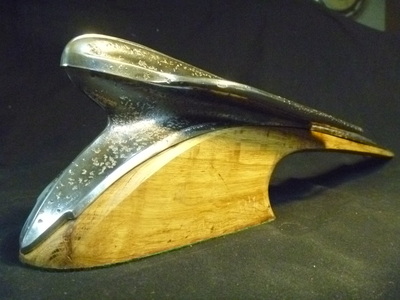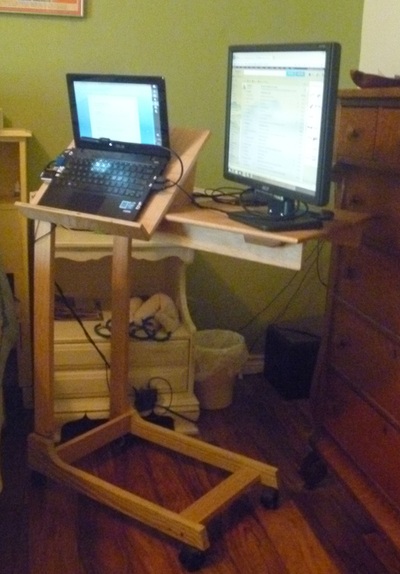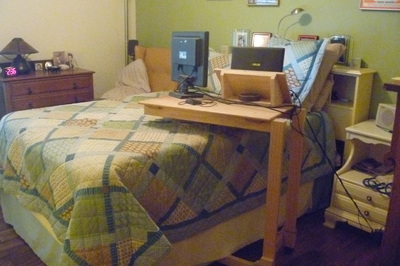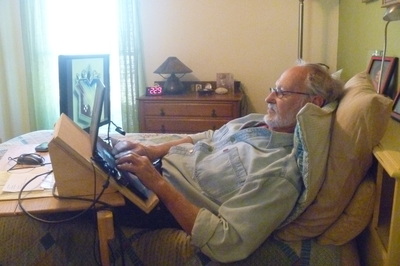Float cursor over pictures in slide shows to read description. Click on thumbs to enlarge.
Items are displayed roughly in the order of creation - oldest at bottom; most recent at the top.
Items are displayed roughly in the order of creation - oldest at bottom; most recent at the top.
Boxes & ContainersBrass Meter Knick-Knack BoxI picked this up at an estate sale in our neighborhood. I would guess that a local resident saved it as a souvenir when the city of Denton updated the water meters.
Knot Business Card HolderThis is one of those things that just seems to present itself. It seemed so attractive that it demanded to be made useful. I could also add a small clock or pen-holder to the center of the knot, but have not done so at this point.
Cedar Keepsake Box with
|
Turnings & Hollowform3 Bodark Yarn BowlsThree Texas bodark wood (Osage orange), hand-made yarn bowls. Two are made from the same log. The lips on those are the natural edge of the log - in one case the bark has stayed intact around the lip. Two have a fish-hook slot for the yarn to thread out through; the other has a half-inch hole near the bottom. All are approx. 7" outside diameter.
Solid Walnut BowlI love walnut. For me, it is the most attractive of hardwoods. Its grain colors range from dark brown to almost white. It is dense and finishes very well. This example was sanded to 800 grit and finished with friction polish on the lathe.
Spalted/Weathered-Wood
|
Furniture & Misc.Buck knife display standsI am collecting a few knives; specifically Swiss Army Knives and Buck knives.
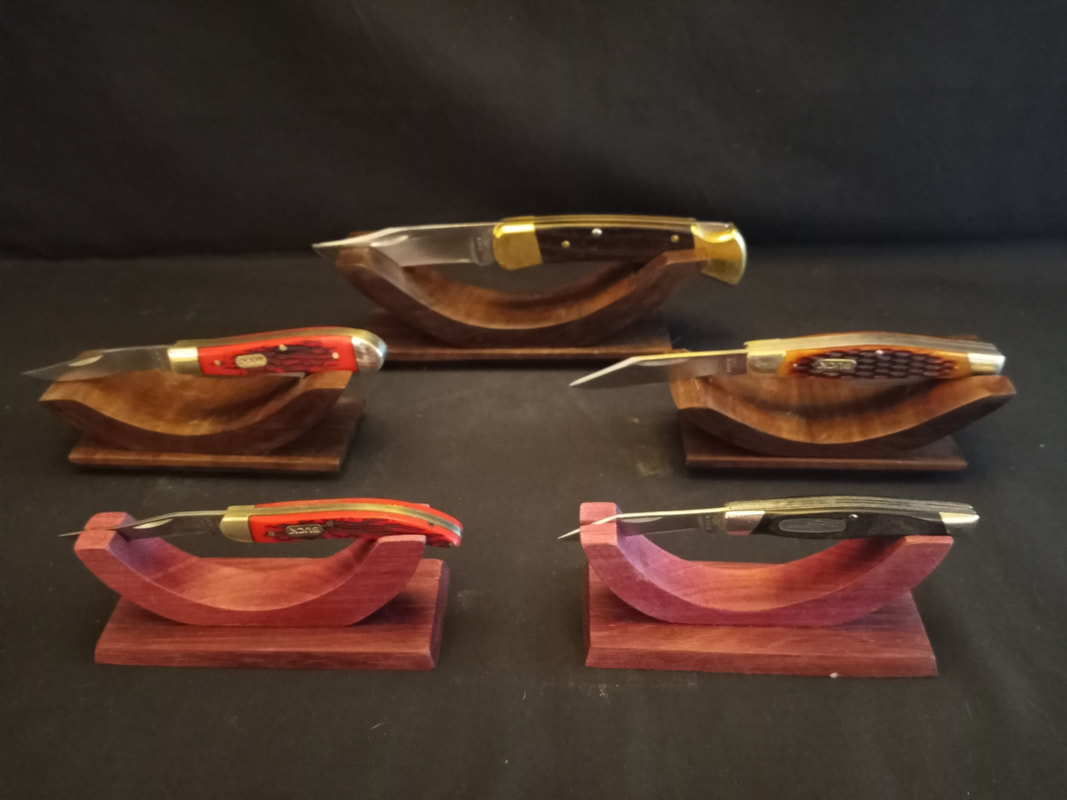
These are folding Buck knives. The center. rear is the lock-back 110 that was introduced in 1964. All other lock-backs are a copy of this innovative knife. The others are various different folding pocketknives by Buck. The display stands are of solid walnut (rear) and solid purple heart (front row).
Prior to 1891, the Swiss Army had their soldier's & officer's knives made by German factories. In 1891 Elsner, a Swiss company, won the bid. Two years later, Wenger also got a contract. Since then, all official Swiss army knives were made by only these two companies. Elsner later became Victorinox.
You could write a book about the history of Swiss Army Knives (SAK). In fact, one has been written - and I have a copy. There are so many variations...and sizes...of SAK knives that I doubt even the two manufacturers have kept count. SAK sales took a 40% hit from 9/11 when all forms of knives were banned from air travel. Wenger, the "late-comer," was absorbed by Victorinox after 120 years of friendly competition. I also have a few dozen "officer's knives" for which I am fabricating a display box. Anniversary Ring ReduxQuite away down this column are pictures of his & hers silver and purple-heart rings that I made for my daughter and son-in-law. As was noted then, this was a new process for me. They did not hold up well to wear. I have now replaced the original veneer with solid purple-heart wood, using a different process on the same silver rings.
Shift knob + Brake Release ButtonThe plastic brake release button in my now-classic '95 Honda Prelude was shedding chrome finish, so I decided to replace it with a piece of mesquite wood. After doing that, it looked so out of place as the only piece of wood in the cabin, I decided to make a new shift knob to go with it.
Pizza Cutters-I found a design for a pizza slicer in a woodworking magazine and decided to make one for each of my five adult kids. It involved some sheet-metal work which necessitated going to a local sheet-metal shop and also buying a "nibbler" to cut the curve of the blade. I tried using a sheet-metal snip, but it slightly stretched the metal at the edge and made it unattractive.
Serving Tray with Aluminum PlatterMy eldest son is an avid BBQ-er. He has an aluminum steak platter that had become separated from its original wood tray, so he asked me to make another for it. The original was redwood, but I had some nice Osage Orange or bodark wood on hand, so that is what I used. I had to obtain a new router bit to form uniform sloped sides to the recess and I found a pair of solid brass screen door handles on eBay for the ends.
Small Mantel ClockI am not particularly a Plymouth fan, but I do admire their early ship logos. I came across this all-metal (aluminum), 1937 horn button and really like the design. I was able to acquire it and decided to set it into into a mantel clock housing.
Walnut Slab Table on White Oak BaseThis project was some six month or more in the planning and execution. I was able to purchase a somewhat warped, 2" thick slab of walnut with the natural bark on one long edge. It took months to decide what to do with it. Ultimately I decided to leave the "live edge" (bark) as-is and follow the natural grain along the other long edge. I built a jig to use a router to even out the warp - this reduced its thickness to 1- 1/2 inches. There were several natural cracks in the grain, so I filled them with epoxy and turquoise chips. The base is of white oak, which I fumed with ammonia to darken it. The entire piece is sanded down to 220 grit sandpaper, then coated with boiled linseed oil. The walnut slab sits on the base without fasteners, so it can be displayed with either side up and the base can also be turned over either way as the user pleases.
Mesquite Cross with BaseI saw a similar item at a craft fair. Being in Texas there is a lot of religious artwork. I liked the way that the natural outside ("live-edge" as it is often called) of the limb gradually transitioned into a finished square post and was capped by a finished square crosspiece. When I came across a suitable scrap of mesquite I wanted to try my hand at it.
Burnt-out Cedar Stump LampMy son, Karl, found the remains of a cedar trunk that survived a wild fire with a hollow, charred core and weathered exterior. Karl brought it home and later asked if I would make something of it. I came up with a floor lamp set on a Ford truck brake rotor, a copper water pipe and flickering LED bulbs inside the hollow to give the effect of glowing fire.
Cedar Round Occasional Table with Mesquite-Limb LegsCedar Round Small Table with Cedar-Limb LegsCutting BoardsI made these cutting boards with surplus wood from the Denton Senior Center (DSC) woodshop (oak & cherry) plus a log (bodark) that I had on hand at home. The dimensions were dictated by the available pieces of wood and the capacity of the DSC bandsaw.
Chopping Block and Lazy SusanI haven't done any strictly-wood projects in some time. After repeated encouragement from my lovely wife, I ran some boards from assorted hardwoods and am again in process of creating boxes and kitchen items. Just completed (June, 2019) are the two items below.
Cedar-trunk-rounds used for occasional tables at our cabinWhen we bought the cabin by Canyon Lake (pictured on my home page) we wanted a driveway to park next to the cabin. To put in the drive we had to take out a medium-sized cedar tree. So rather than let the condemned tree go to waste, I cut three rings out of it and had the remaining 5 foot trunk cut into 2" planks. I have finished the three rings with "live edges" and made legs from natural tree limbs.. [I am working on a sofa table made from two book-matched planks from the tree trunk.] Stay tuned - more to come.
Four Cutting Boards of laminated walnut & mesquite with oak frameI made four cutting boards for Christmas 2017 presents. I followed the same design and used the same materials for all four. The hardwood surface is 3/8 inch strips of walnut and mesquite, glued to a 1/2" piece of oak veneer plywood. The frame is of 3/4" oak.
I show pictures of only two of the four as examples. The first two pictures are of one board; the next two are of a second board. The third row shows two surfaces from a different angle. The cutting surface was coated with mineral oil while the frame and underside were finished with paste wax. (All photos were taken at the same time, with the same camera and same lighting. The different angle produced a different tone - the true tone is somewhere between the two) Hill Country Cedar Stump Table Lamp BaseIn early April, 2017 we visited our eldest son and his wife at their retirement home in the Texas Hill country. We stayed as their guest at a military RV campground. While wandering the hills I came across some cedar stumps that had been left behind by thinning activity. I cut one off at the ground because I thought that the shapes of the trunks were unique and interesting. Using the experience I had gained from making the oak stump lamps, I applied the same technique and came up with an interesting table lamp.
Burned Oak Stump Lamp BasesIn spring, 2016 I cut some mesquite and oak in Jacks County just west of Denton County. The mesquite was cut fresh from standing trees; the oak was cut from a grove of dead trees killed in a wild fire a few years earlier. I recovered several sections of log from felled trees, but my attention was caught by two stumps that had been broken well before the devastating fire and were burned out in the center. I cut a few feet down from the top and brought them home with only a vague idea what to do with them. After some months of thought I decided to make lamp bodies of them. I ground out the charred centers and fashioned bases from salvaged brake rotors from the local metal salvage yard. A length of 1" copper pipe from Lowe's, some copper fittings and lamp sockets and I was able to put together a floor lamp and a table lamp of similar style.
Mesquite Log Table LampI don't generally make lighting fixtures, but this naturally weathered broken log end just cried out for use in some fashion. A lamp base seemed to be the most appropriate use for it. It was already hollow, so I only needed to sand and polish the outside (leaving some areas in their naturally weathered condition) and make a base to stand it on. The center post is a length of half-inch copper water pipe. I purchased a socket, lamp cord and LED bulb at Home Depot and cobbled it all together with a shade from Walmart.
Wall Hat/Coat RackHere is a 30" natural log coat rack for mounting on the wall. The back is flat so that it will fasten firmly to the wall. Suzanne & I were driving in Denton and this caught my attention because one trunk of a tripartite tree had broken off. One side looked interesting because the bark had been peeled off by horses a long time ago and the tree had continued to grow. So I stopped and cut off about four feet and threw it in the back of the Ford.
Walnut Machete Hand-gripThis is a walnut hand-grip that I carved for a World War II machete that my dad brought home. He told me that it had been made by a guy in his company. The original wood handle was very plain and smooth - so much so that my dad got a bad cut in the web between his thumb and forefinger using it. When I inherited it, I made a safer handle, then carved an Old English "B" monogram in the wood. The monogram is infilled with epoxy mixed with light-colored sanding-dust, then sanded flush.
Native Texas Oak and Walnut Serving Tray/StandWe recently visited the Texas Hill Country to see our eldest son, Karl, and daughter-in-law, Connie's new home near Canyon Lake. We stayed at a military campground where Karl is a part-time host. The campground is covered with live oak trees and firewood is abundant from felled trees. Two logs caught my eye as promising for interesting grain patterns and color. This tray/stand is made of two slices from a single log - book matched faces - that I edge glued on a diagonal, then trimmed with Texas walnut that I purchased through an ad on Craig's List. The feet are the same beveled piece as the handles. Cracks in the oak are filled with epoxy and ground agate. It is somewhat heavy for a serving tray. I have given it to Karl's older Sister, Kristin, since she has a big, burly husband who is a chef and can manage the weight of the tray.
Obelisk of Spalted PecanI made this from a scrap of pecan log that I had cut some blocks and boards from. The spalting pattern was just too intricate and interesting to throw out. There was not quite enough material to complete the base without including an area of weathered surface wood, but that just makes it more interesting. It is a bit more tapered than the traditional obelisk proportions, but that is what the wood I had required. The black outlining is particularly attractive. I used three wood dowels to keep the top in place, but have not glued it in down. After sanding down to 220 grit I coated it with mahogany-tinted English furniture wax to give it warmth (except where it is weathered).
Solid Mesquite Pyramid for Weather Instruments w/oak trimDesk ClockThis cut-off from a mesquite log seemed to demand use. I had a clock inset on hand that was of suitable size, so I inset it into one end with an angled cut. Note the ring colors - this is typical of local mesquite: reddish inner rings with yellow new growth. The red portion finishes much like mahogany. The bark on this piece is solidly attached, but some sort of borer is still at work inside, slowly piling saw-dust outside as it works.
Commemorative Anniversary Ring Set Below are photos of a pair of rings created according to my daughter, Kristin's, request. I was plowing new ground here - I have mixed metal with wood, but not wood with metal. The silver soldering was pretty straight forward, but insetting the purple heart veneer and sealing it was tricky. Some on-line research uncovered techniques that I was not familiar with, but that proved successful. Amazingly, they both were completed without having to throw anything away and start over. (Please read the captions)
Native Texas Mesquite Tray/ Display Stand/Cutting BoardThis is a project that (for once) turned out even better than I had envisioned. The concept began as a simple cutting board to use in our own kitchen. I planned to make it out of mesquite, a dense, hard and beautifully red native Texas wood. I cut one piece and found that it had a hollow center, thus giving the two halves hollow channels running the length of the boards. Suzanne suggested that I should fill the hollows with granules of rock -: agate or turquoise - mixed into clear ep[oxy. So I decided to use these as the sides to function as handles. By the time I had the main pieces cut, selected and assembled the overall appearance was much more interesting than would be appropriate for a mere cutting board..
After gluing up the main elements, I decided that the look would be enhanced by short legs. All the natural voids were filled with epoxy and the long channels in the "handles" filled with crushed turquois and agate pieces mixed into epoxy. It was then sanded smooth and finished with several coats of hand-rubbed clear furniture wax. It was too nice to use in our kitchen, so it became a Christmas present for our daughter-in-law.
Oak cutting boardThis was a scrap of white oak left over from a footstool project that I utilized to make a small cutting board.
|
Turning trees into art (as if trees weren't already art)
Where do I get the wood for my projects, you may be asking yourself. Initially I purchased it from others: either at a local woodworking store (like Rockler) or on-line on Ebay. But now I have a band saw and a 10" table saw as well as access to even larger band saws and table saws at the Denton Senior Center woodshop. Below are three logs that I literally salvaged from the curb where they were destined to be picked up by the city for chipping and recycling into mulch. The Senior Center also has a drum sander that takes the saw marks out of the boards and processes multiple boards into consistent thickness.
Below is a section of an oak log, about 7" in diameter, that I turned into three separate objects. I started by using my portable planer to flatten four sides so the log could be run through a saw. Then I made cuts on opposing sides with my 10" table saw to cut it in half.
I took one half and cut curves with my band saw to roughly match the shape of a Chrysler hood ornament that I wished to mount. The curves were then refined with a belt sander to make the contour fit the ornament. The block is then sanded, drilled and finished with tinted wax. The ornament is bolted in place and the bottom covered with adhesive felt.
White Oak base for Ship Ornament and Weather Instruments w/fossil inlay
(The project that started it all)
Shop Stool & Grinder Stand of Juniper Trunk and Brake Discs, plus used Barrel Staves and a Pitch-Fork
Lap Work-Tray of Oak Plywood with Solid Oak trim
Footstool of solid White Oak, made to match antique Morris chair and Craftsman-style end tables of ammonia-fumed White Oak with granite tops
Hi-Fi Component Cabinets of Solid Walnut for 1960's-era units
Wheeled Laptop Bed Desk
Prior to my retirement I was assigned to review claim files from home. I quickly found that I could not sit at a desk 8-10 hours per day as required. Initially thinking that I would have to decline the assignment, I lay back on the bed in the guest bedroom and contemplated the situation. Within a half hour, building on the concept of a hospital bed-tray, I envisioned a wheeled bed-table that would hold my laptop and monitor. By noon I had a usable piece of furniture. With some refinements to hold the laptop at a suitable angle I had a very serviceable unit which I continue to use in retirement. My neck & back still do not tolerate an upright position for long, so it serves me very well. Without the pressing need to review files all day I might not have thought of it - necessity is the mother of invention.
Proudly powered by Weebly

